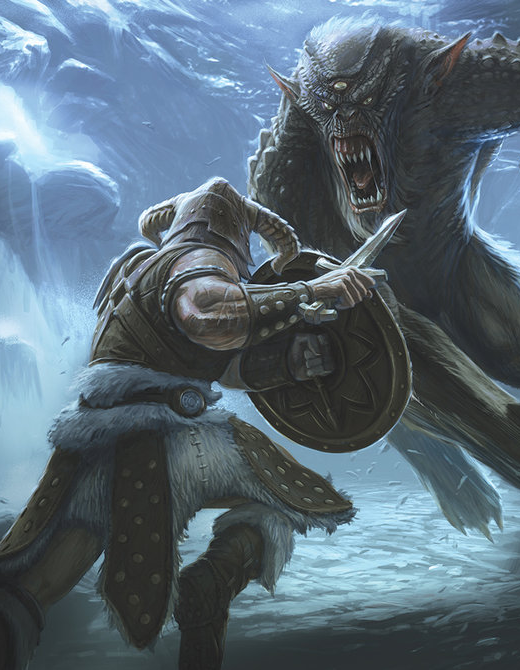
Preface
This document should be considered a supplement, and not a replacement, for standard fifth edition D&D. It is designed with compatibility in mind, although this setting in particular eschews some classes for others, and makes fundamental changes to spellcasting. Take what you like, leave what you don't, but most importantly, have fun!
Credits
Kyle Huckins
Editors: Alex Cautley, Ben Maritz, Bradley Larsen, Kevin Matthiesen
Proofreading: Ben Maritz
Playtesting: Alex Cautley, April DeFrees, Ben Maritz, Bradley Larsen, Brian Henson, Dee Henson, Nicolai DeFrees, Perry Nguyen, Seth Moffit
The system of D&D 5th Edition: Wizards of the Coast
The creation of the Elder Scrolls: Bethesda Softworks
Assistance in fleshing out the contents within: r/teslore, r/UnearthedArcana, and The Greater Elder Scrolls Community
The Platform used to create this document: GMBinder
Watercoloring Tips: u/QalarValar
Art
All art is credited in order of appearance:
Cover
- Dragonborn v. Frost Troll by COD-Halo @ Deviantart
Part 1: Creating a Character
- Guar Express by Spader7 @ Deviantart
Races
- ESO Homestead by Zenimax Studios for Elder Scrolls: Online
Cyrodiil
- Cyrodiil Landscape by FZDSchool @ Youtube
- Escape the Imperial City by Jorsch @ Deviantart
- Lore art for Imperial race by Bethesda Softworks for TES4: Oblivion
- Colovian Highlands concept art by Vin Hill Art for Skyblivion Project
Breton
- Daggerfall Covenant Wallpaper by Zenimax Studios for Elder Scrolls Online
- The Prophet Art by Zenimax Studios for Elder Scrolls Online
- High Rock by Zenimax Studios for Elder Scrolls Online
Nord
- Alduin's Wall Concept by Bethesda Softworks for TES5: Skyrim
- Lore art for Nord race by Bethesda Softworks for TES4: Oblivion
Redguard
- Lore art for Redguard race by Bethesda Softworks for TES4: Oblivion
- Hammerfell Sentinel by 1Rich1 @ Deviantart
- Guild Wars 2 concept art by Daniel Dociu
- Hammerfell Concept art by Zenimax Studios for Elder Scrolls Online
- Walid by Bertuccio @ Deviantart
Races of Mer
- Mer concept art by Bethesda Softworks for TES5: Skyrim
- Mer by dancinfox @ Deviantart
Altmer
- Auridon concept art by Zenimax Studios for Elder Scrolls Online
- Eyevea concept art by Zenimax Studios for Elder Scrolls Online
- The Mage by Isriana @ Deviantart
- Altmer Flamecloak by Radishez @ Deviantart (Deactivated)
- Wizard's Tower by NM-Art @ Deviantart
Bosmer
- Valenwood Concept Art by Zenimax Studios for Elder Scrolls Online
- Wood Elf Avatar by Dire Wolf Digital for Elder Scrolls: Legends
- Kyonin Art by Paizo for Pathfinder
- Garruk's Horde by Wizards of the Coast for Magic the Gathering
- Bosmer Dwelling art by Zenimax Studios for Elder Scrolls Online
Dunmer
- Morrowind Concept Art by Zenimax Studios for Elder Scrolls Online: Morrowind
- Nameless Mage by Zenimax Studios
- Morrowind Balmora v1_wip? by Saito00 @ Deviantart
- Skywind Daedric Ruins by mbanshee @ Deviantart
- Ordinator Concept Art by Zenimax Studios for Elder Scrolls Online
Orsimer
- Wrothgar Concept Art by Zenimax Studios for Elder Scrolls Online
- Baldur`s Gate fan-art: "Half-orc Girl" by DAR-dEvil @ Deviantart
- Orsimer by TheMinttu @ Deviantart
- Orc-camp by Kalberoos @ Deviantart
Khajiit
- Far From Home by TheMinttu @ Deviantart
- Unnamed by Levi Hopkins for Guild Wars 2
- Pahmar-Raht by Dire Wolf Digital for Elder Scrolls: Legends
- Waterfall Village by KlausPillon @ Deviantart
Argonians
- Xanmeer in Murkmire concept art by Zenimax Studios for Elder Scrolls: Online
- Argonian by Mad1984 @ Deviantart
- Black Marsh concept art by Zenimax Studios for Elder Scrolls: Online
Imga
- Quarry Wall by JoshEiten @ Deviantart
- Wrath of the Primate by angel5art @ Deviantart
Classes
- Ebonheart Pact by TheMinttu @ Deviantart
Barbarian
- Hunted By The Thalmor by KaelaCroftArt @ Deviantart
Bard
- Primal Druid by Tomasz Jedruszek
- Valley of the Blades Concept Art by Zenimax Studios for Elder Scrolls: Online
Conjurer
- School of Conjuration by Elle-H @ Deviantart
- Lava Atronach by Dire Wolf Digital for Elder Scrolls: Legends
Fighter
- Forwardguard by ogilvie @ Deviantart
Healer
- Khajiit Avatar by Dire Wolf Digital for Elder Scrolls: Legends
- Mending Touch by Karla Ortiz for Magic the Gathering
- Blackrose Herbalist by Dire Wolf Digital for Elder Scrolls: Legends
- Tornado Mage by WarNick @ Deviantart
Knight
- Pelinal Whitestrake Concept Art by Bethesda Softworks For TES4: Oblivion - Knights of the Nine
- Morrowind: Indoril Paladin by IgorLevchenko @ Deviantart
- Argonian dragonknight by Yacrical @ Deviantart
- Redguard Avatar by Dire Wolf Digital for Elder Scrolls: Legends
- Nord Warrior Concept Art by Zenimax Studios for Elder Scrolls: Online
Mage
- Mage by Sinto-risky @ Deviantart
- Frost Mage by WarNick @ Deviantart
- Dancing With Myself by dleoblack @ Deviantart
Monk
- Monk by Dire Wolf Digital for Elder Scrolls: Legends
- Morrowind: Saint of the Temple by IgorLevchenko @ Deviantart
- Greybeard Mentor by Dire Wolf Digital for Elder Scrolls: Legends
- Chinese Zodiac - Tider WIP by LucasParolin @ Deviantart
Ranger
- Dushnikh Yal Archer by Dire Wolf Digital for Elder Scrolls: Legends
Rogue
- Thieves Guild Recruit by Dire Wolf Digital for Elder Scrolls: Legends
Birthsigns
- High Resolution image of the Champion System Constellations by u/RubenGM @ Reddit
- Vector Image of the birthsigns by UESP
- Merged Constellation Art by Unknown Source
Personality & Backgrounds
- Thieves Guild by Zenimax Studios for Elder Scrolls: Online
Customization Options
- Skyrim Bear Concept by Bethesda Softworks for TES5: Skyrim
Part 2: The Rules of Magic
- Solved! by Wolnir @ Deviantart
Spellcasting
- Khajiit Skyrim Wallpaper by Unknown Source
- Vadril - Fire Magic by TheMinttu @ Deviantart
Spells
- Destruction apprentice setting a lightning rune trap by Carcaneloce
Appendices
- Bitter Coast by Eldanaro @ Deviantart
- Ready or Not by RisingMonster @ Deviantart
Appendix B
- Revival Lorkhan by Vanuchka @ Deviantart
- Auri-el/Akatosh by Zyraxea @ Deviantart
- Arkay Stained Glass by Bethesda Studios for TES4: Oblivion
- Dibella by PROTECAT @ Deviantart
- Julianos Stained Glass by Bethesda Studios for TES4: Oblivion
- Wind Queen by Woari @ Deviantart
- Mara Stained Glass by Bethesda Studios for TES4: Oblivion
- Hammer Buff by Skaya3000 @ Deviantart
- Zenithar Stained Glass by Bethesda Studios for TES4: Oblivion
- For Seen Warrior (Azura X MReader) by dragonslayerman6 @ Deviantart
- Boethiah by Freaky-Vitta @ Deviantart
- Doodle Clavicus Vile by Skitamine @ Deviantart
- Black Book by TheMinttu @ Deviantart
- Hircine by PinkyPills @ Deviantart
- demon 2 by Kanartist @ Deviantart
- Mehrunes Dagon by Ennio Caglià
- Mephala the Webspinner by MarkoTheSketchGuy @ Deviantart
- Meridia by Isriana @ Deviantart
- Molag Bal Art by Zenimax Studios for Elder Scrolls: Online
- Armaros, Angel of Undoing by PeterMohrbacher @ Deviantart
- Nocturnal. Last Sacrifice. by KhajiitSawyer @ Deviantart
- Dragon by u/thinlikenate's Grandfather
- Old Uncle Sanguine by MaevesChild @ Deviantart
- Sheogorath by LokiMari @ Deviantart
- Tamiel Angel of the Unseen by PeterMohrbacher @ Deviantart
Appendix C
- The Elder Scrolls: Cosmology by lesnikov @ Steam
- Apocalypse by Ksenia Mamaeva/SnowSkadi @ Deviantart
- Soul Cairn Concept Art by Bethesda Softworks for TES5: Skyrim
Appendix D
- Elder Scrolls - Fire Atronach 02 by ISignRob @ Deviantart
- skyrim by shetheed @ Deviantart
- Frost Atronach Concept Art by Bethesda Softworks for TES5: Skyrim
- Storm Atronach Concept Art by Bethesda Softworks for TES5: Skyrim
- Clannfear Cutout by Mark Jones
- Daedroth Concept Art by Zenimax Studios for Elder Scrolls: Online
- Mazken by KoTnoneKoT @ Deviantart
- Auril by KoTnoneKoT @ Deviantart
- Anhaedra hates his life by TheMinttu @ Deviantart
- Hunger Concept Art by Zenimax Studios for Elder Scrolls: Online
- Warlord of Fortune by Tira-Owl @ Deviantart
- Jorogumo by Unknown source
- Scamp Concept Art by Zenimax Studios for Elder Scrolls: Online
- God Of War III- Satyr by andyparkart @ Deviantart
- Banekin Concept Art by Zenimax Studios for Elder Scrolls: Online
- Winged Twilight 01 by Shagan-fury @ Deviatnart
- Will-o'-wisp by Ilyich @ Deviantart
Background
- Grungy Paper texture v.5 by bashcorpo @ Deviantart
- Watercoloring by pstutorialsws @ Deviantart
- Watercoloring by thedurrrrian @ Deviantart
Document Version 1.4a
Contents
Part 1: Creating a Character 8
Chapter 1: Races 9
The Races of Man 10
Cyrodiil .............................................................................................10
Breton ..............................................................................................12
Nord ..................................................................................................14
Redguard .........................................................................................16
The Races of Mer 18
Altmer ..............................................................................................18
Bosmer .............................................................................................21
Dunmer ............................................................................................24
Orsimer ............................................................................................27
Beastfolk 29
Khajiit ...............................................................................................29
Argonians ........................................................................................32
Imga ..................................................................................................33
Chapter 2: Classes 36
Barbarian ........................................................................................37
Bard ..................................................................................................38
Conjurer ...........................................................................................40
Fighter ..............................................................................................44
Healer ...............................................................................................45
Knight ...............................................................................................50
Mage .................................................................................................56
Monk .................................................................................................62
Ranger ..............................................................................................68
Rogue ...............................................................................................69
Chapter 3: Birthsigns 71
The Guardian Signs ......................................................................71
The Warrior's Charges .................................................................72
The Mage's Charges ......................................................................73
The Thief's Charges ......................................................................74
The Serpent ....................................................................................75
Chapter 4: Personality & Backgrounds 77
Chapter 5: Customization 80
Multiclassing ..................................................................................80
Feats .................................................................................................80
Part 2: The Rules of Magic 82
Chapter 6: Spellcasting 83
Chapter 7: Spells 86
Alteration .........................................................................................86
Conjuration .....................................................................................91
Destruction .....................................................................................95
Illusion ...........................................................................................100
Mysticism ......................................................................................104
Restoration ...................................................................................107
Class-Specific ...............................................................................110
Appendices 114
Appendix A: Conditions 114
Appendix B: Gods & Spirits 114
Aedra..............................................................................................120
Daedra............................................................................................128
Appendix C: Planes of Existence 143
Mundus..........................................................................................145 Oblivion..........................................................................................145 Aetherius........................................................................................150
Appendix D: Creature Statistics 152
Disclaimer
Dungeons & Dragons, The Elder Scrolls, and all related concepts belong to their respective owners. All art within belongs to the original creators, and is credited to the original creators where possible. If you determine that any crediting is incorrect, please send a message to me through Reddit (u/NellsRelo) with proper sourcing, and it will be resolved as soon as possible. This document may not be sold. This document nor its authors may be held responsible for the Arrival of Daedra on Mundus, any instances of zero-summing, or Hist invasion. Should landfall happen, hold on to the nearest Vivec for best chances of survival.
PART 1
Creating a Character
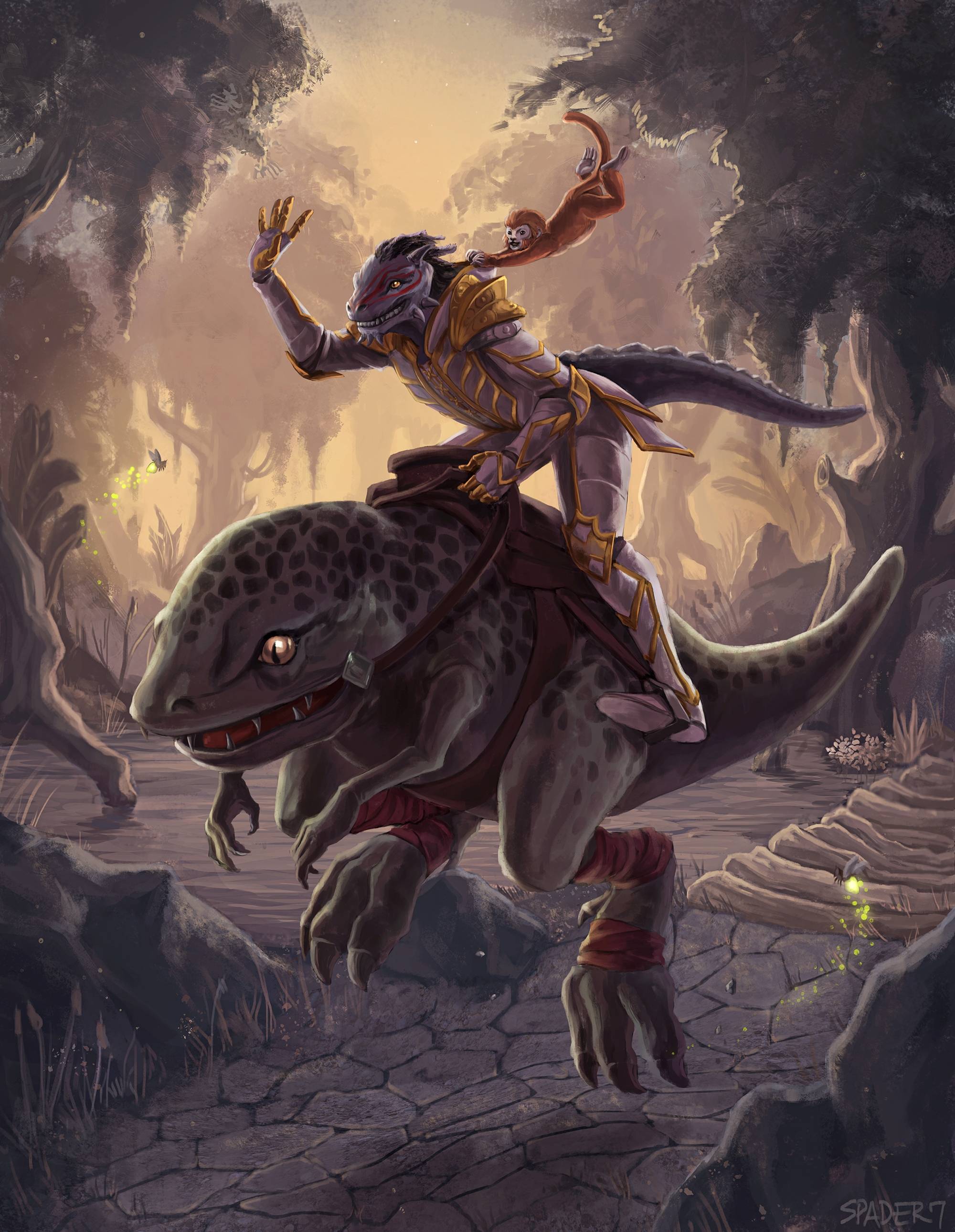
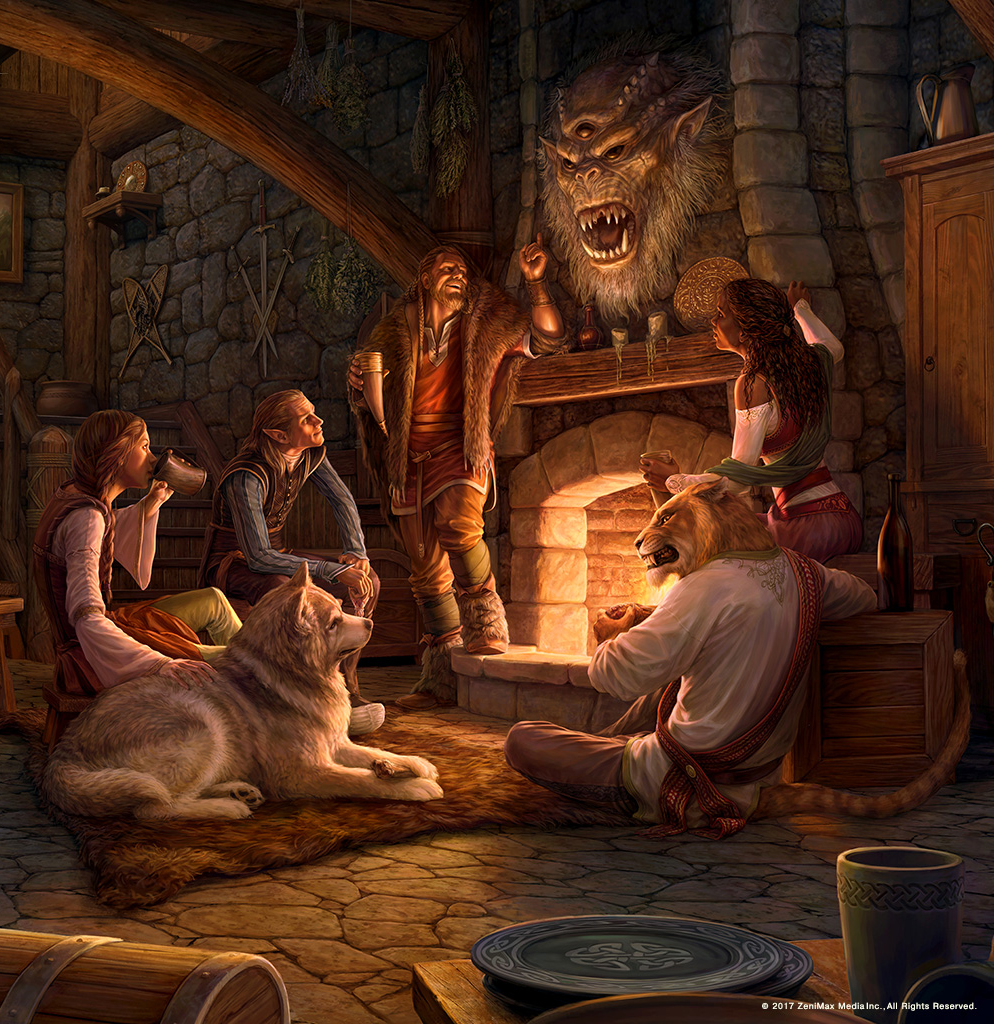
Chapter 1: Races
A visit to one of the great cities in Tamriel -- The Imperial City, Wayrest, Solitude, Mournhold, -- overwhelms the senses. Voices chatter in various languages. The smells of cooking in dozens of different cuisines, from the Meats-only cooking of the Wood Elves, heavily spiced Dunmeri concotions, and Colovian Roast Turkey, mingle with the odors of crowded streets and poor sanitation. Buildings in myriad architectural styles display the diverse origins of their inhabitants.
And the people themselves -- people of various shapes, colors, and skin, dressed in a dazzling spectrum of styles and hues -- represent many different races, from the reclusive and haughty Altmer to the raspy Argonian lizardfolk, minglind among a variety of Human ethnicities.
Scattered among the members of these more common races are the true exotics: A lumbering Sload here, pushing hiw way toward the alchemist's stand, eyes on a Human skull, a Dunmer's Guar caravan there, packing several materials for trade. A Kahjiit chuckles as he catches the scent of Moon Sugar in the trader's pocket.
Choosing a Race
The races of Man and Mer are by far the most common among the beings populating Nirn. In the Middle of the second Era, Man controls the Empire at the heart of Tamriel, and has consolidated power in the north and center of the continent. The Elves are scattered among Valenwood, the Summerset Isles, Morrowind, and the seas beyond.
Not every intelligent race in Mundus is appropriate for a player-controlled adventurer. The many races of Man, the Dunmer, Bosmer, and Kahjiit are the most common races to produce the sort of adventurers who make up typical parties. Altmer, Argonians, and Imga are less common as adventurers. Daedric servants, and Minotaurs even less so.
Your choice of race affects many different aspects of your character. It establishes fundamental qualities that exist throughout your character’s adventuring career. When making this decision, keep in mind the kind of character you want to play. For example, a Bosmer could be a good choice for a sneaky rogue, a Nord makes sense for a tough warrior, and a Breton or Altmer can be a master of arcane magic.
Your character race not only affects your ability scores and traits but also provides the cues for building your character’s story. Each race’s description in this chapter includes information to help you roleplay a character of that race, including personality, physical appearance, features of society, and racial alignment tendencies. These details are suggestions to help you think about your character; adventurers can deviate widely from the norm for their race. It’s worthwhile to consider why your character is different, as a helpful way to think about your character’s background and personality.
Racial Traits
The description of each race includes racial traits that are common to members of that race. The following entries appear among the traits of most races.
Ability Score Increase
Every race increases one or more of a character’s ability scores.
Age
The age entry notes the age when a member of the race is considered an adult, as well as the race’s expected lifespan. This information can help you decide how old your character is at the start of the game. You can choose any age for your character, which could provide an explanation for some of your ability scores. For example, if you play a young or very old character, your age could explain a particularly low Strength of Constitution score, while advanced age could account for a high Intelligence or Wisdom.
Alignment
Most races have tendencies toward certain alignments, described in this entry. These are not binding for player characters, but considering why your Nord is chaotic, for example, in defiance of lawful Nord society can help you better define your characters.
Size
Characters of most races are Medium, a size category including creatures that are roughly 4’8 to 8’. Members of a few races are small(between 2’ and 4’8), which means that certain rules of the game affect them differently. The most important of these rules is that Small characters have trouble wielding heavy weapons.
Speed
Your speed determines how far you can move when traveling and fighting.
Languages
By virtue of your race, your character can speak, read, and write certain languages.
Subraces
Some races have subraces. Members of a subrace have the traits of the parent race in addition to the traits specified for their subrace. Relationships among subraces vary significantly from race to race.
The Races of Man
Mankind has had a troubled history on Tamriel. Originally descendants of wanderers, in the Merethic era, they were slaves to the Ayleiids, the wild elves, until they were able to overthrow the elves and establish their own empire. In more recent history, the Empire is still reeling from an invasion from the Akaviri, natives of an eastern continent, and have also only just recently thrown out a dynasty of illegitimate kings, those not of the bloodline of the Dragonborn. To the north, the kingdom of the Nords stands in alliance with their historical enemies, Morrowind and the Black Marsh, while the Northeastern kingdoms of High Rock and the renowned swordsmen, the Redgaurds, have joined forces with the Orsimer, to help rebuild their ravaged lands.
Cyrodiil
“You must cease from this moment forward being a clerk, and become a student of mercantile trade," said Liodes Jurus grandly, taking Scotti by the arm and leading him into the sunlit boulevard outside.
"The first rule is to recognize what you represent to the prospective client, and what angle best suits you. You cannot dazzle him with opulent fashion and professional bearing, my dear boy, and it would be fatal if you attempted to. Trust me on this.”
-- Waughin Jarth, A Dance in Fire
Descendants of Slaves
The Cyrodiil came about as a mixture of the original Nedic human population, Cyro-Nords, and Nibenese Tribesmen in the Merethic Era. Enslaved by the Ayleiids, under the leadership of Alessia, they were able to found the first empire of Man. Thousands of years later, the Cyrodiil still inhabit the jungled central province of Tamriel. They have even made the capitol of their ancient captors into their own. Even now, in the 6th century of the Second Era, the Cyrodiils have an indomitable spirit.
Despite this spirit, the state of Man's empire is dire. Just a decade ago, Tamriel was invaded by the Akaviri, who still have influence in the government. There is a period of Interregnum, and because no emperor exists with the soul of a Dragon, the magical seals protecting the land of Cyrodiil from the forces of Oblivion have withered. The Empire is under the control of Reachmen, wildlings from Skyrim who crave power and gold.
Diplomacy and Trade
Cyrodiils have a remarkable knack for mercantilism. To make up for their unimposing stature, most members of this race have shown unmatched talent in mercantile, and speak with a confidence that encourages trust. This is primarily seen in the eastern Nibenese, but the Colovians sense of honor
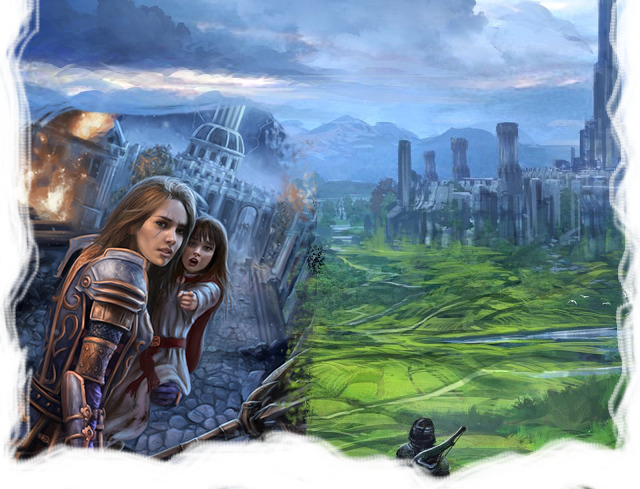
provides a fair amount of trust as well. While not particularly strong, a Cyrodiil in the party can be an excellent asset, as their silver tongues can bring their friends fortune, or at the very least, free board at an inn.
Representatives of Mankind
Because of their unique position in the geographic center of Tamriel, their claim to empire, their cosmopolitan nature, and their diplomatic ability, the Cyrodiils are seen as an example of all that Man is capable of. They are also the first point of contact for most Mer and Beastfolk, and in dealings with the other races, a Cyrodiil's word will often be seen as the word of the other nations of Man.
Skyrim and High Rock, home to the Nords and Bretons, respectively, have been known to hire Cyrodiils in their courts, in order to make use of their fair and level-headed reputation. This reputation has proven useful, too, at times when the Empire has spread out to control the Northern Kingdoms.
The Kothringi
There exists another form of Human, closely related to the Nibenese. They make their homes in the Black Marsh, and live tribalistic lives. Their hair is white, and their skin, a pale shade of Silver.
The Kothringi are believed to be descendant from what few men were able to escape Ayleiid captivity before Alessia's rebellion. They try to keep hidden away in their swamps, but they have a penchant for sailing. Though they still fear the Ayleiid's elven cousins, their travels along the coasts have brought out a more fearless variety of Kothringi.
In recent times, the Kothringi have been afflicted with the Knahaten Flu, and with no cure in sight, they may become an extinct tribe of mankind within the next few years.
Split in Two
While cosmopolitan in nature, Cyrodiils have only two distinct cultures, easily notable by geographic divide. To the west, in the Colovian highlands, you have the Colovian people. Conversely, the eastern portion of the province of Cyrodiil is dominated by the River Niben, and the culture there is known as Nibenese.
Cyrodiil Traits
Ability Score Increase. You get +1 to your Charisma score.
Age. Cyrodiils reach adulthood in their late teens and live less than a century.
Alignment. Cyrodiils are Cosmopolitan in nature, and it can be hard to judge them as a whole, but they tend toward Lawful and Neutral alignments.
Size. Cyrodiils vary in build, but rarely surpass 6 feet tall, and are rarely found under 4’8 at adulthood. Regardless of your position in that range, your size is Medium.
Speed. Your base walking speed is 30ft.
Languages. You can speak, read, and write Tamrielic, Cyrodiilic and one extra language of your choice. Cyrodiils typically learn the language of the Nord, but will learn the language of those they would otherwise deal with on a regular basis.
Colovian
Found primarily in western Cyrodiil, Colovians are known for their martial culture and strong Nord lineage. King Reman, progenitor of the Second Empire, was a notable Colovian. Typically, they will prefer function over form, and even nobles will wear plain, non-flashy outfit. They typically shun outsiders not willing to conform to Colovian ways, and their accents are more harsh and guttural.
Ability Score Increase. On top of the Cyrodiil Ability Score Increase, you get +1 to your Constitution.
Alignment. Colovians tend toward more Lawful alignments.
Warrior Tradition. You have proficiency in light armor and martial weapons.
Star of the West. When you are reduced to 0 hit points but not killed outright, you can drop to 1 hit point instead. You can't use this feature again until you finish a long rest.
Colovian Names: (Male) Rislav, Menien, Kantav, Chorus, Jiv, (Female) Etira, Marlena, Arriana, Hermina, Vala, (Surnames) Larich, Goneld, Cheynoslin, Kvinchal, Joral, Valga
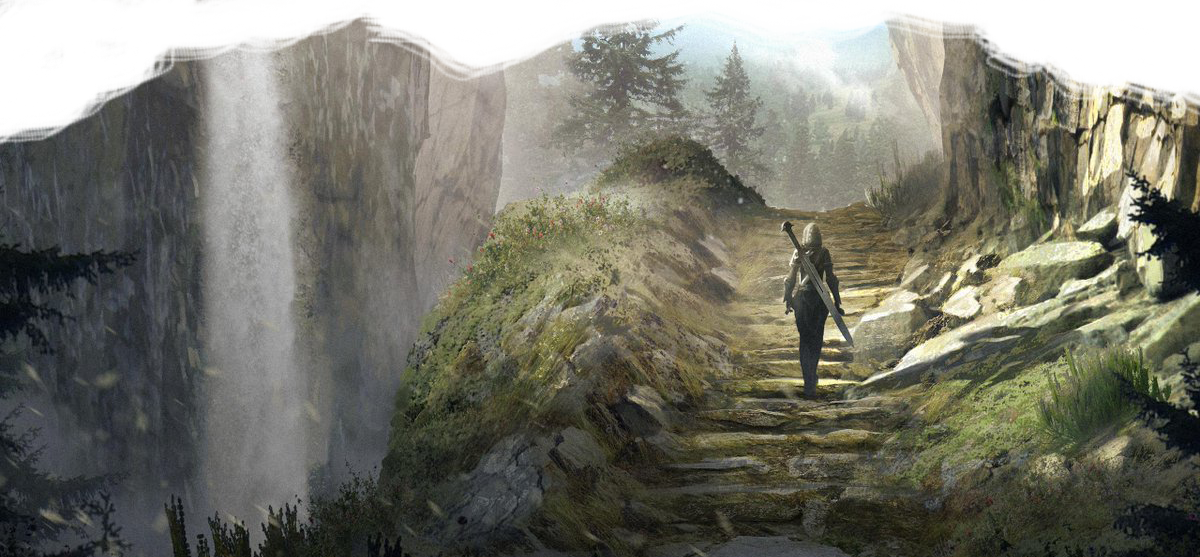
Nibenese
Native to eastern and southern Cyrodiil, the Nibenese are where Cyrodiils get their reputation as traders and diplomats. They are very open-minded, and prefer gaudiness to the spartan styles of their Colovian cousins. This leaks into their storytelling techniques, as well. Nibenese prefer metaphor and vaguaries to structured storytelling. Their lineage is more Nedic than Nord, and their accents and names tend to be more flowy.
Ability Score Increase On top of the Cyrodiil Ability Score Increase, you get +1 to Charisma.
Alignment. Nibenese tend toward more Neutral alignments.
Voice of the Emperor. You have proficiency in Performance and Persuasion.
Nibenese Names: (Male) Berich, Arentus, Uriel, Stalloccious, (Female) Adriana, Agrippia, Coventina, Eponis, (Surnames) Dichus, Tullius, Marconius, Palonix, Viria
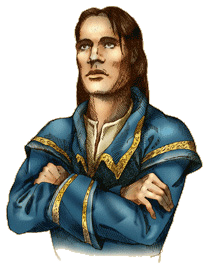

Breton
“Knights of Saint Pelin; Evermore Guard; freeborn militia of Mournoth and Ephesus: soldiers of Bangkorai! Ever have we been the shield of High Rock, the first line of defense for the Breton Kingdoms against invaders from the east. Time and again the Bretons of Evermore and her surrounding regions have taken up arms to garrison Bangkorai Pass and turn away those who would pillage and plunder our homeland. In the year 874 of the First Era, when Warlord Thulgeg's army of Orcs and Goblins was driven from Hammerfell by the Redguards, we denied them passage through the Pass and forced them to flee northeast, trudging all the way through the Dragontail Mountains before they finally reached Orsinium. Not a single Goblin made its way through our pickets into our homeland.”
-- King Eamond, Bangkorai, Shield of High Rock
The Bretons of High Rock, also known as the Manmer, though not united, are a powerful force in Tamriel. Their thirst for adventure and natural magical talents mean that many paths are open to a Breton. Though scholarly pursuits are one of the most common applications they push themselves toward, many see excitement in the work of a soldier or adventurer.
Elven Heritage
Borne of an intermingling over centuries between Aldmer and Nede, the Bretons are unique among the races of Man. Their ears are not as pointed as a Mer’s, but their brows and cheekbones are more prominent, and their connection to Magicka is stronger than the average Man’s.
Despite this common bond, Altmer despise them, and other Mer see them as only somewhat better than Man. As they are not-quite-half elven, the Bretons represent, to the Mer, a bastardization of their own heritage. Despite the bad blood between Man and Mer, in public, relations are somewhat cordial. Altmer will often ignore a Breton, but other Mer will still pay attention.
Because of their strengthened connection to Magicka, Bretons were the first to institute the Guild of Mages, which has grown in membership and in reputation throughout the Empire.
Fractured Kingdoms
No longer part of the Empire, the kingdoms of High Rock have united with the Redguards in Hammerfel and the Orcs who share High Rock in order to keep peace in the area, and defend against the Reachmen longhouse emperors of Cyrodiil. They still squabble, but for now, there is a hope of further stability in the region.
Founded in the late Merethic era, there are still countless kingdoms vying for dominance, and Political intrigue rules the day. While there are many routes to nobility and wealth, Bretons have romanticized the concept of the gallant questing knight, and to return to a lord with your tales of adventure, and the treasure you've found is considered the best of all methods. As such, Bretons have developed a great thirst for adventure.
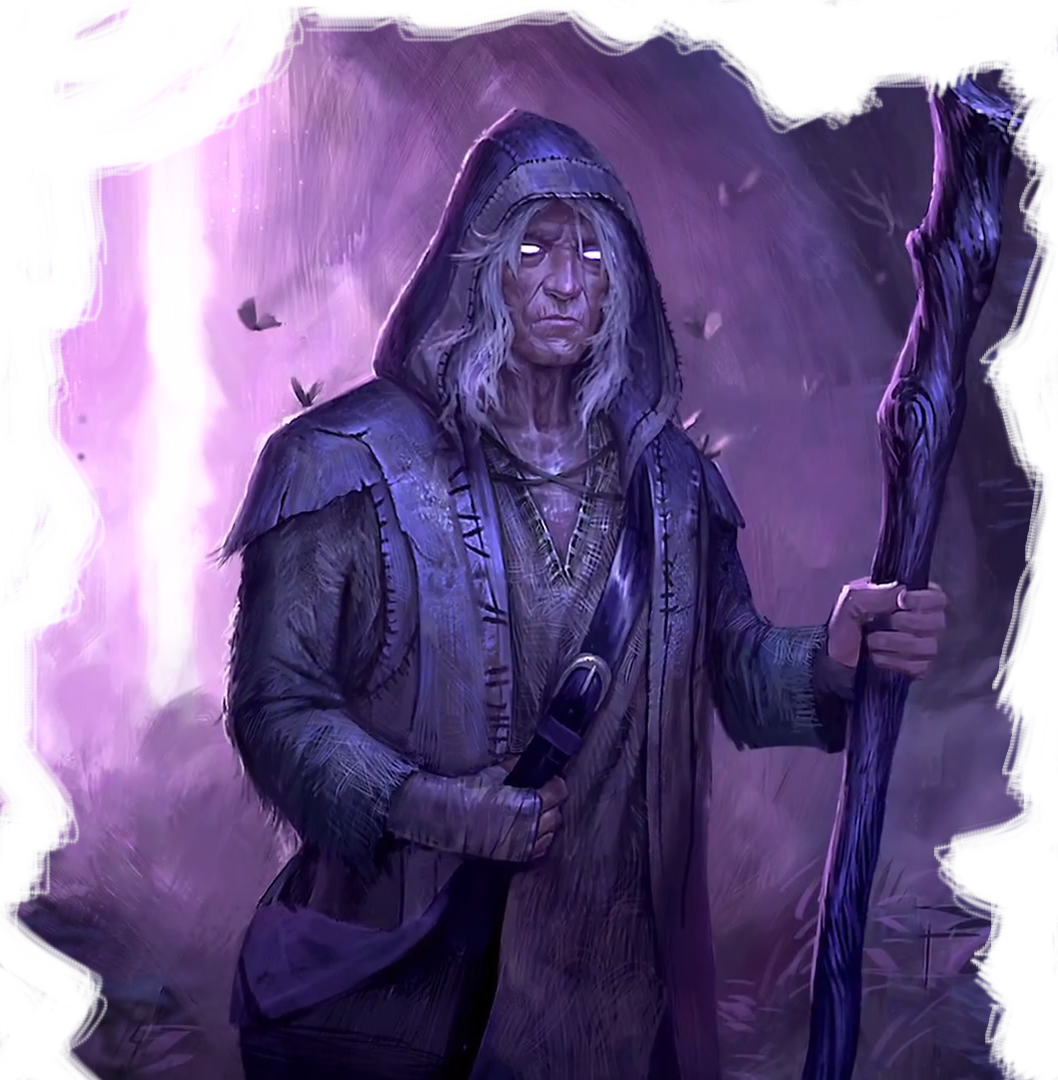
The Center of History
It can be said that High Rock is at the center of history. It is the location of the Adamantine tower, where the Aedra convened as they created Mundus. Having grown in a land full of history has inspired much pride in the Bretons, and they are often seen as haughty by Man, and at best, children, by Mer.
Breton Names
Bretons have a very flowery way of speaking, similar to their distant Nibenese cousins. This crosses over to their names as well.
Breton Names: (Male) Crendal, Julien, Verick, Hastrel, Thorley, Arniel, (Female) Virenne, Alyssa, Blanche, Rochelle, Muiri, (Surname) Acques, Fralinie, Galien, Montrose, Jurard
Breton Traits
Ability Score Increase. Your Intelligence and Charisma scores increase by +1.
Age. Bretons reach adulthood in their late teens, and can live as long as 200 years due to their Elven ancestry.
Alignment. Bretons have a wide range of views, and don’t lean in any particular direction. They can be Neutral, Chaotic, Lawful, Good, or Evil.
Size. Bretons are on the short side for Man, and typically range between 4’8 and 5’7. Their size is Medium.
Speed. Your base walking speed is 30 feet.
Languages. You can speak, read, and write Tamrielic and Altmeris.
Dragon Skin. You have advantage on saving throws against magic.
Arcane Connection. Your enhanced connection to Magicka gives access to any cantrip of your choice from any of the major spell schools. This cantrip does not count against your class' cantrips limit. You gain a cantrip at 1st level, and again at 5th, 10th, 15th, and 20th levels.
Relations between Mer and Breton
Altmer
The Altmer absolutely detest Bretons. Although Bretons came about from the interbreeding of Altmer local to the region and the local Nedes, modern day Altmer see the Bretons as an abomination, more despicable than mankind itself.
Interestingly, the Bretons seek acceptance - not for the sake of being accepted by the Altmer, but to give themselves more opportunity to learn.Bosmer
The Bosmer have no qualms with the Bretons, though while under the close watch of the Aldmeri Dominion, they are forced to be at odds with all races of Man.
Dunmer
The Dunmer as a whole have no opinion on the Bretons, but are inclined towards dislike, as Bretons have no understanding of their ways. Certain great houses, such as house Hlaalu, are more open minded, however.
Orsimer
There is little love lost between the Bretons and the Orsimer. Only recently have Orsimer been understood to be Mer rather than Goblin-ken, and for a large portion of history, the Nords, Reguards, and Bretons all would attempt to exterminate the Orcs.
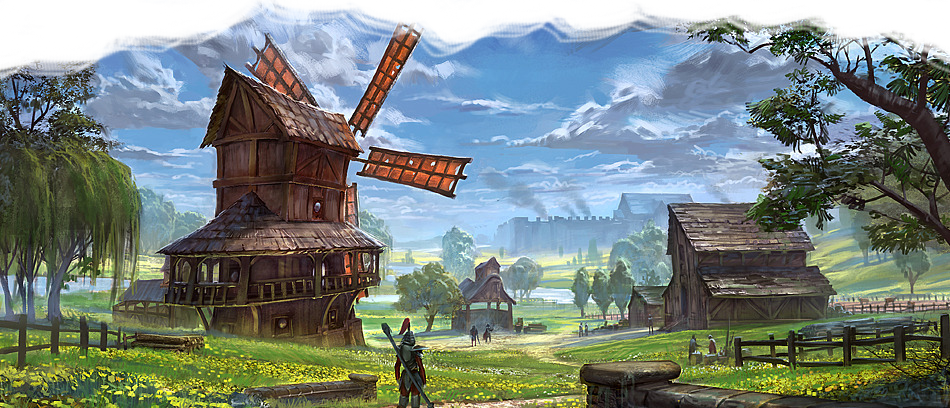
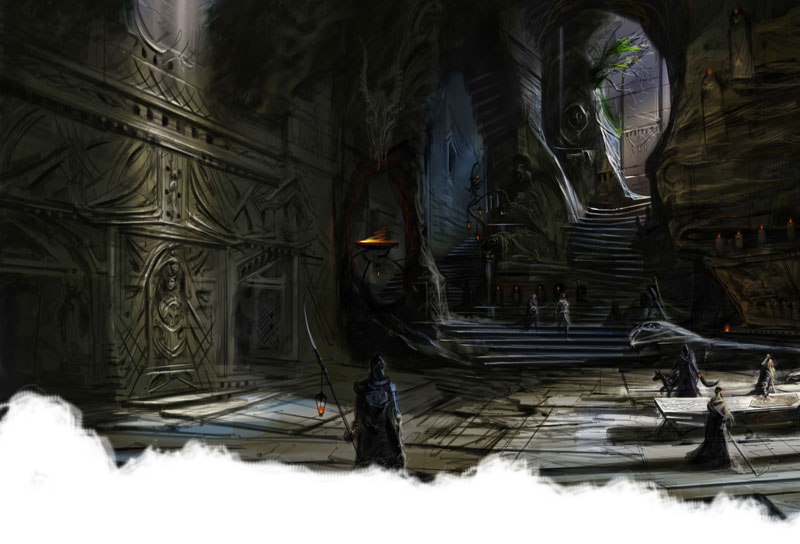
Nord
“But Ysmir. king of men and dragons, whose greatness preceded time, despaired and said ‘I have traveled the whole of Mundus and conquered many peoples, but where will I rest my head? If I rest to the East or the West or the North or the South, it will only cause division.
The local peoples will claim my tomb as their own. They will say, 'Ysmir is our king, for he rests among us.' And my children will fight amongst themselves and divide my body among them, sending my head one way, my hands another, and my feet, and my mighty heart.’
From among his thanes and housecarls, a young man, not more than a boy, whom none of them had seen before, then dared to speak. Bowing low, he said ‘Then do not go anywhere on Nirn, but go to the sky, where you can watch over all your peoples.’"
-- Ysmir, The Forefather, Volume IV
The Nords have a varied history, but the common thread is war. War is where a boy can truly prove himself a man, and it is where honor is upheld. This proud race is steeped in tradition, much like their Colovian descendants. A Nord never backs down. In recent years, they have entered a begrudging alliance with their longtime rivals, the Dunmer.
Sons of the North
The Nords descended to Tamriel as refugees from Atmora, escaping a mysterious chill that froze everything in its path. They settled in what is now Skyrim, and have waged war against the Dunmer off and on through the centuries.
Though their wars with the Dunmer have left both sides bitter, the two races have found themselves growing a mutual respect. To help recover after the Akaviri invasion, the Nords, the Dunmer, and the Argonians banded together under The Ebonheart Pact. The peace between Nords and Dunmer will be uneasy, but many hope that it will last.
Distrust of Magic
Nords are raised with a distrust of the magic arts. The general sentiment in their homeland of Skyrim is that one must rely on their own skill to complete a task, and Mages are seen as unpredictable cheaters. Nords do not get along well with magic users, particularly Elves.
Parodoxically, Skyrim is home to the College of Winterhold, an elite and influential academy for the magically adept. Many of the current Mages Guild members have tried and failed to get acceptance into the college.
A Hearth Divided
A little over 100 years ago, the high king of Solitude, Logrolf, was assassinated. His heir’s legitimacy was hotly contested, and while accepted by the Crown of Verity, after a moot was held, her contestor, Svartr of Solitude, was proclaimed High King, at the cost of fracturing of Skyrim into two kingdoms.
Kingdom of Windhelm
High King Logrolf’s heir, Queen Freydis, commands the eastern half of Skyrim from Windhelm. She has since passed, but her Kingdom remains independant. The Nords under her have a stronger sense of honor than the Nords of Solitude. Due to the peace, local farmers are also having a relativly prosperous time.
Kingdom of Solitude
High King Svartr, previously only a Jarl, has inherited the western half of Skyrim. His line has had great trouble in defending their territories from the Orcs and barbaric Reachmen. Morale is low, and crime is high in the kingdom, though Nords are not without morale -- With enemies abound, there's a fight to be had!
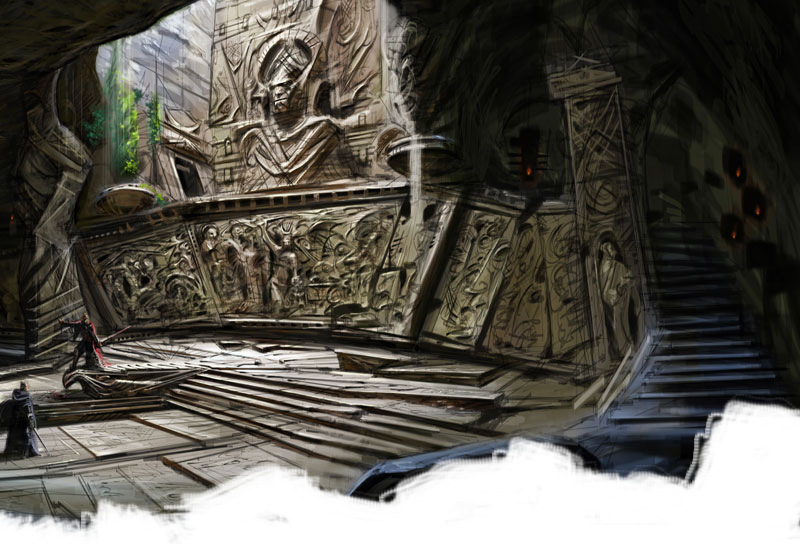
Nord Names
Nords have a very guttural, harsh language. They often also forgo their surname in favor of a title or nickname.
Nord Names: (Male) Tobias, Urik, Bjalfi, Halof, Roggvar, Torolf, (Female) Aeta, Ongi, Greta, Evette, Uthgerd, Tilma, (Surname) Alariksen, Bjarnelsen, Ulreldsen, (Title) The Unending, The Rotted, Bearclaw, Skull-Mother, Secret-Oath
Nord Traits
Ability Score Increase. Your Constitution score increases by +2.
Age. Nords reach adulthood in their late teens, and can live as long as 120 years due to their natural hardiness.
Alignment. Nords have a strong history of respecting tradition, and as such they are often found on the Lawful side of things.
Size. Nords are fearsome, and tower over their fellow Man. Very rarely are they shorter than 5’9, and stories tell of Nords reaching 7 feet tall, but their accuracy is not confirmed. Your size is Medium.
Speed. You have a base walking speed of 30 feet.
Languages. You can speak, read, and write Tamrielic and Nordic.
Battlecry. Once per long rest, as an action you may choose to use your battlecry in combat. All enemies within 30 feet that can hear you must succeed on a wisdom save against your Strength score, or become stunned until the end of your next turn.
Northern Hide. You have resistance against Cold damage.
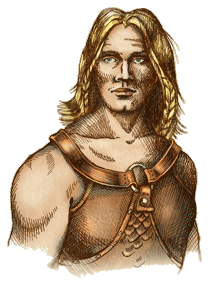
Allegiance
You may choose to hold allegiance to one of the two Lords of Skyrim, the Kingdom of Solitude or the Kingdom of Windhelm. If you choose to do so, you must take the traits in the following section, based on your loyalty.
Solitude Loyalist
You have sworn allegiance to the line of kings that began with High King Svartr. Your name will be cursed in the lands of the Kingdom of Windhelm.
Banned from Windhelm. You are not welcome in Windhelm's lands. If you try to enter a town in the Kingdom of Windhelm without valid permission or reason, you must keep your identity hidden, or be sent to the dungeon.
Loyal to Solitude. You are welcome in the Kingdom of Solitude's lands. For every Orc ear and Reachmen helmet you turn in to the guards, you will be rewarded. You are allowed to rest at the local inns for free, and merchants in Solitude will offer their wares for a discount.
Windhelm Loyalist
You have sworn allegiance to the line of kings that have ruled Skyrim since time immemorial. Your name will be cursed in the lands of the Kingdom of Solitude.
Banned from Solitude. You are not welcome in Solitude's lands. If you try to enter a town in the Kingdom of Solitude without valid permission or reason,you must keep your identity hidden, or be sent to the dungeon.
Loyal to Windhelm. You are welcome in Windhelm's lands. In honor of your loyalty, you are allowed to rest at the local guardhouse for free and buy merchandise at a discounted price. You may more easily request the audience of the King, and request weapons built to your specifications from the local smiths.
Unalligned Nords
If you choose not to pledge allegiance to Windhelm or Solitude, you will be able to enter both kingdom's cities without trouble, but you will not gain any of the benefits of being alligned with a specific kingdom.
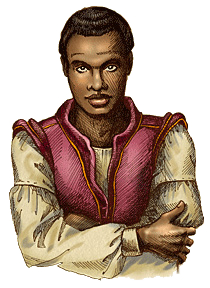
Redguard
“Train your opponent to make the wrong response.
The worst action executed with vigor is superior to the best action executed timidly.
A thrust is elegant, and a cut is powerful, but sometimes the right action is a head-butt.
The high guard is most suitable for feints and crossovers, but mind your nether limbs.
Your opponent's sword is not your enemy. Watch your opponent, not his sword.
Perfection in the eight basic cuts is critical—though you will never use them in battle.
A closed line is not open."
-- Frandar Hunding, The Book of Circles
The Redguard came from the west on ships, and made their way through the lands of Hammerfell, in search of a new home. Their skills with a blade are unmatched, but they are no brutes. The Redguard have a reputation as thinkers, philosophers.
Survivors of a Cataclysm
The Redguard originally came from a continent to the west, known as Yokuda. Even before they arrived, their ability with the sword was unmatched. Their legends told of heroes capable of casting magic using only their swords, and that warriors could cause explosions capable of sundering the earth itself if they weren’t careful. It’s theorized that this may be why they came to Tamriel.
Upon their arrival at the western shores of Tamriel, the Yokudan Ra Gada warriors decimated the local Nedic populations, eventually settling in Hammerfell, and making peace with theh Bretons.
Settlers in Unfriendly Terrain
Hammerfell's terrain is unfriendly to Man, in addition to a lack of access to fresh water, it hosted several Goblin tribes, some of them allegedly giant, and was at one time bordered by an Orcish homeland. Surrounded by enemies, and less in number than the other races of Man, the Redguard had to fight for its right to exist.
Fortunately for the Redguard, in addition to their martial prowess, they had brought advanced seafaring, agricultural, and astronomical knowledge, and this gave them an edge in their quest for survival.
The Way of the Sword
Every Redguard family has a copy of the Book of Circles somewhere in their home - usually in a prominent location. This book is a treatise on the mastery of the blade, and in many ways represents the devotion to the sword that most Redguard have.
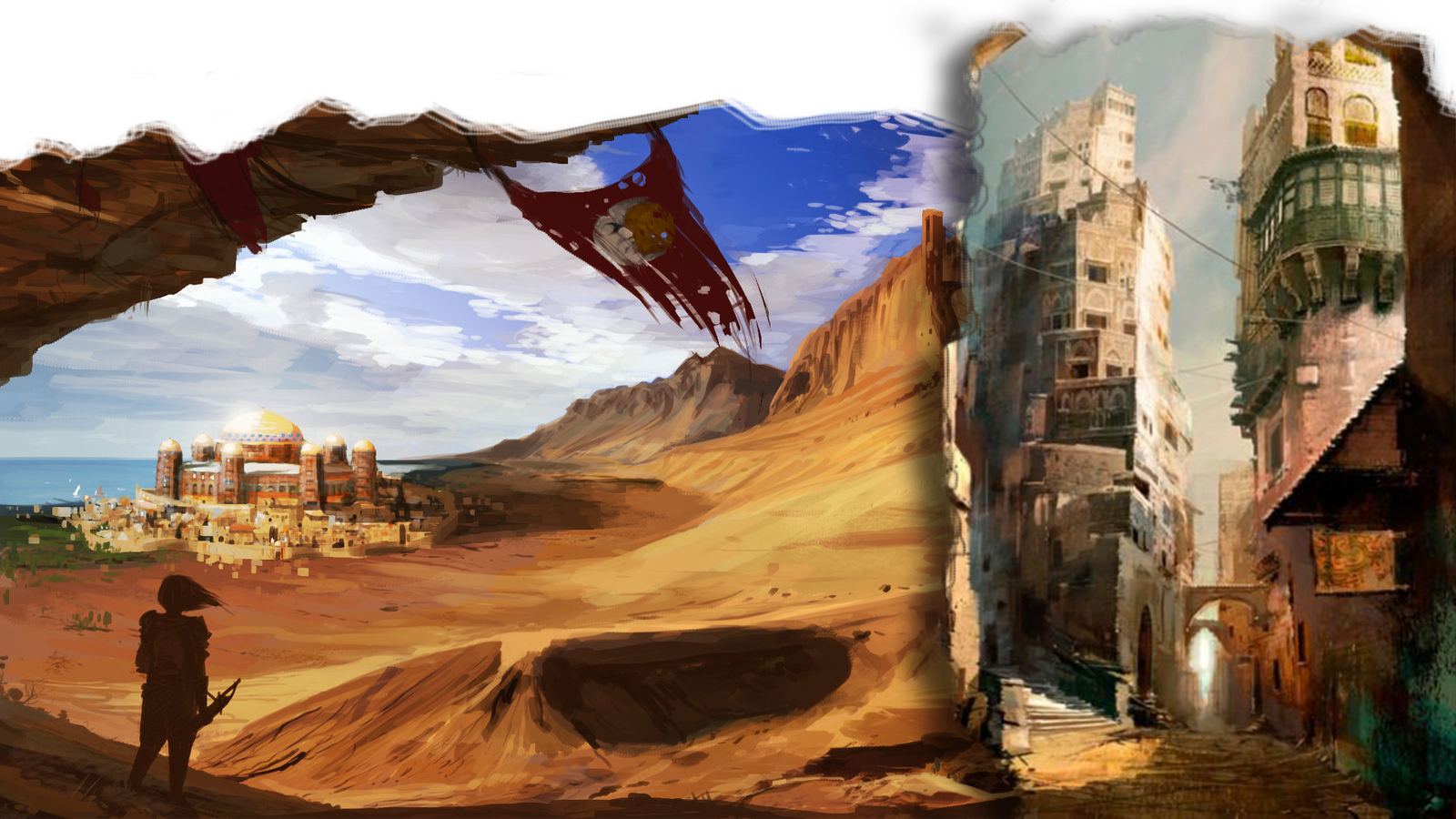
The Redguard are a highly militaristic society, and every Redguard child is expected to learn how to fight. Nobility are expected to have a great understanding of tactics. Despite this, they have no standing army.
Honor Above All Else
The Redguard, as a rule, frown upon the use of magic in battle. It is seen as cowardly, and even sword schools will demand the use of unenchanted blades. Necromancy, frowned upon by all but the Sload, is treated with even more disgust by the Redguard, as it dishonors those who have passed.
This attitude toward magic is at odds with the abilities of the ancient sword singers, who themselves were highly respected. However, as a general rule, Redguard avoid magical solutions when a physical one would suffice.
Equestrian Tradition
Redguards may have came form the sea, but they have a strong attachment to horses. Most Redguard will have spent some time around horses, and know how to handle them. They brought many breeds with them from Yokuda, though the most well known is the Yokudan Charger.
Class Tensions
When Hammerfel was absorbed into Reman’s Empire, two distinct classes emerged: The Forebears and the Crowns.
Forebears
The Forebears descend from the Ra Gada warrior class that colonized Hammerfel. They are open to Nedic and Nordic ideas, and have adopted Imperial and Breton style names and dress. They stick primarily to coastal cities and other centers of trade.
Forebear Names: (Male) Pyke, Owyn, Curtis, Boldon, Casimir, (Female) Miniel, Relinda, Kanet, Landa, Lette, (Surname) Mirel, Litte, Jerine, Leki
Crowns
The Crowns claim descent from the Yokudan High Kings and the Na-Totambu. They prize above all else the ancient Yokudan traditions, and hold great distaste for outsiders.
Crown Names: (Male) Avik, Camas, Cyrus, Relan, Nazir, Umay, (Female) Tanyin, Adima, Hakruba, Malakeh, Parvana, Zylle, (Surname) Rakham, at-Sal, Taloet, Shinji, al-Antiphyllos
Redguard Traits
Ability Score Increase. You gain +1 to your Strength and Dexterity scores.
Age. Redguard reach adulthood in their late teens, and have a lifespan of just over 100 years.
Alignment. Like the Nord, Redguard have a strong code of honor, and tend toward Lawfulness.
Size. Redguard are known for their tall, gaunt frames. They are typically as short as 5'8, and as tall as 6'8. Your size is Medium.
Speed. You have a base walking speed of 35 feet.
Languages. You can speak, read, and write Tamrielic and Yoku.
Composed Stance. As an action, you may shift your posture for combat. You gain a number of temporary hit points equal to your level + your Constitution modifier. These hit points expire at the end of your third turn in combat. Additionally, you gain an additional 10 feet of movement speed. You may only do this once per long rest.
Strong Immune System. You have advantage on saving throws against poisons and disease.
Sword Lessons. Every Redguard child is taught to use the scimitar. You have proficiency with scimitars.

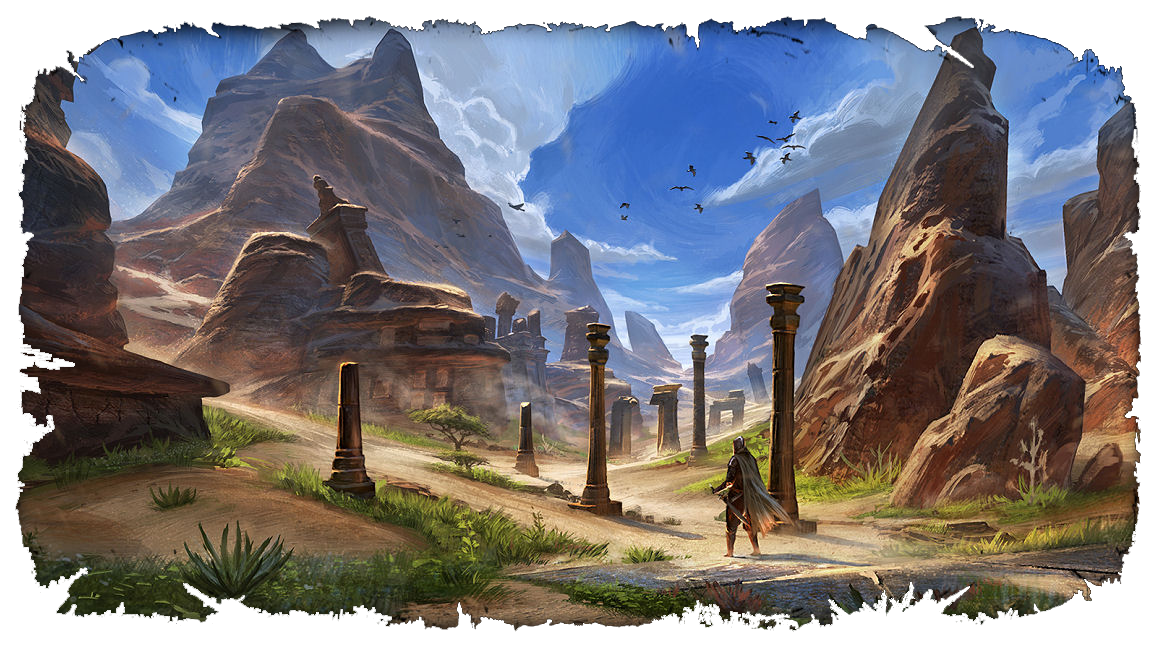
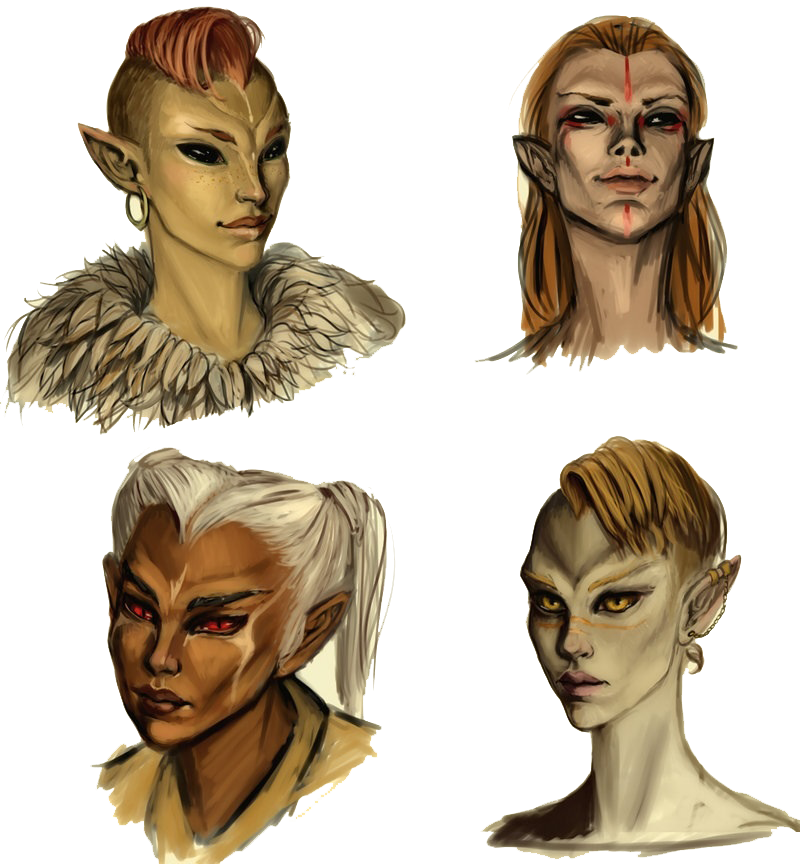
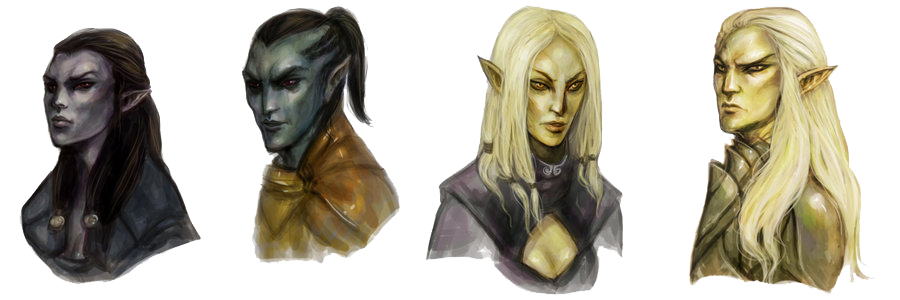
The Races of Mer
Mer, or more colloquially, elves, are the original inhabitants of Tamriel. They descended from the Aldmeri, who descended from the Ehlnofex, the Mortalized et'Ada - spirits who chose not to wander the Nirn after its creation. Mer see themselves as above Human and Beast kind, as their stronger connection to magicka and their lengthy lifespans make them that much closer to their previous identities as et'Ada.
There are various forms of Mer, the Altmer, or High Elves; the Bosmer, or Wood Elves; the Dunmer, or Dark Elves; the Maormer, Sea Elves; the Dwemer of old, Deep Elves; the long extinct Falmer, Snow Elves; the Ayleiids, the Hidden Elves; and more recently understood to be Mer, the Orsimer, the Pariah folk, more commonly known as Orcs.
Most Mer typically don't get along with Mankind, with the exception of the Bosmer. Altmer and Dunmer see themselves as superior to Man in every way, while the Orsimer hold a deep grudge against Humans for constantly waging war against them.
Altmer
"MALVASIAN: Let me make sure I understand. You have a little bit of magicka left, so you elected to use it to make Schiavas the ghost's target, forcing me to use most of my limited reserve to destroy the creature so I wouldn't be more powerful than you. That's first-rate thinking.
INZOLIAH: Thank you. It's only logical. Do you have enough power to cast any other spells?
MALVASIAN: Naturally. An experienced battlemage always knows a few minor but highly effective spells for just such a trial. I take it you, too, have a few tricks up your sleeve?"
-- Anthil Morvyr, A Hypothetical Treachery
The Altmer, self described as the Cultured "Ones," are among the oldest existing race of Elves. They are direct descendants of the Aldmer, and many would cling to that heritage as proof of their supremacy. They reside in the Summerset Isles, and let few outsiders enter.
Ancients Among Us
The Altmer hold a belief that they are directly descended from the Aedra, and though they are mortal, some believe they must find a path to ascension. To these Altmer, Nirn and Mundus itself is considered a roadblock. Altmer who seek ascension are less often adventurers, and more often stay in the Summerset Isles, becoming politicians and scholars.
Some Altmer, however, have accepted their mortality. These Mer have a tendency to seek further understanding of the world they live in, be it through the Mage's Guild, Adventuring, or acting as merchants. They are more likely to be excited by material goods, but despite their disposition, they still hold themselves as superior to any non-Altmer they come across.
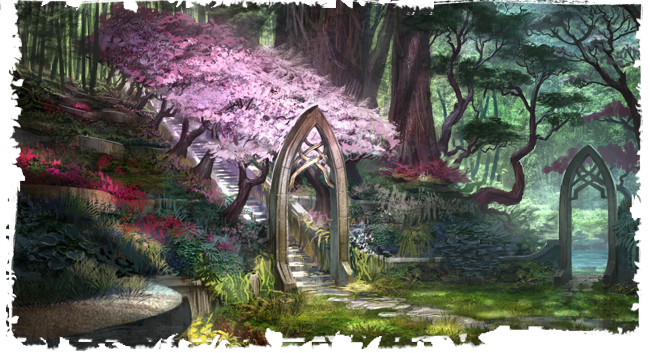
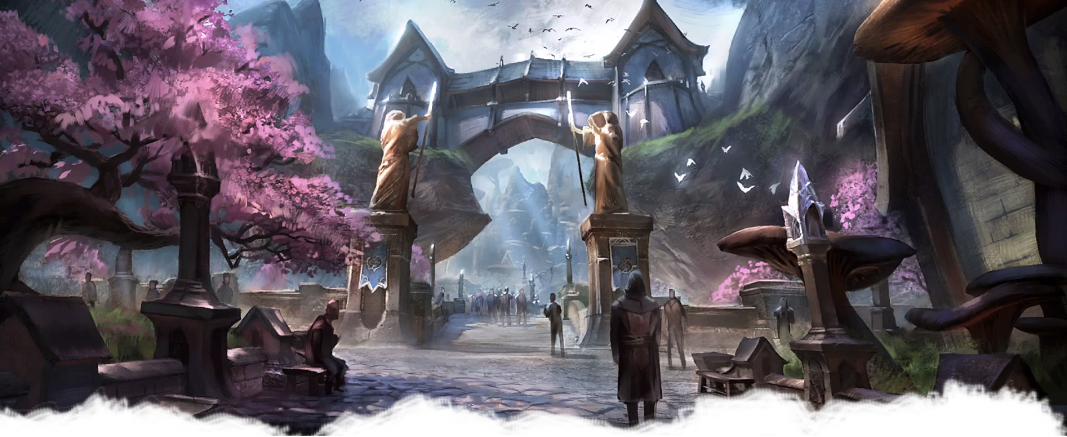
Elven Rivalry
Maormer
The Altmer and the Maormer of Pyandonea have been locked in a feud for centuries. Nobody is quite sure why, but many chalk it up to the Altmer's high-and-mighty ways.
The Maormer regularly send ships of soldiers to Summerset's shores. It is unheard of, even among adventurers, for Altmer and Maormer to ever get along.
Bosmer
The Altmer see the Bosmer as misguided, and seek to enlighten the Bosmer to their heritage, so that they might join them and return to their Aldmeric heritage.
Dunmer
The Altmer see the Dunmer as Daedra-worshipping fools, but don't discount their scholarly prowess.
Orsimer
To the Altmer, the Orsimer are beasts, and a black mark on the Aldmeri family tree.
Cultural Progenitors
Altmeris has shaped the Common Tamrielic tongue even more than Cyrodillic has, and The Empire has derived much of its arts, crafts, sciences, and laws from Altmeric culture. The Empire has even gone as far as to give focus to the 8 divines of the Atmeri pantheon, albeit with their own local flavoring.
Reasons for their culture being omnipresent could be in part due to their reputation as scholars, and their lengthy lifespans allowing them to focus and truly master a field of study. The other Elven races are said to have been originally Altmer, and moved off after minor disagreements.
Magically Gifted
The Altmer are among the most powerful in magical ability. The longer an Altmer lives, the stronger of a mage they may be, as they've had countless years to devote to honing their skills. There is debate as to the upper limit of an Altmer's age because of this. While most Altmer don't make it beyond 400, the first true leader of the Altmer in the Summerset Isles led the race through the first era, surviving well past 3000.
An Altmer's greatest weakness is their ability to resist Magic and the elements, or lack thereof. They are vulnerable to magical attack, the cold, fire, and electricity. Because of this weakness, it is often trained into Altmer youth not to trust even their closest friends, as an Altmer is most able to hurt another Altmer.
A Stratified Society
Altmer society is made up of castes. In order of importance, they were:
- Teachers and Priests
- Artists, Princes
- Warriors
- Landowners
- Merchants
- Workers
- Slaves
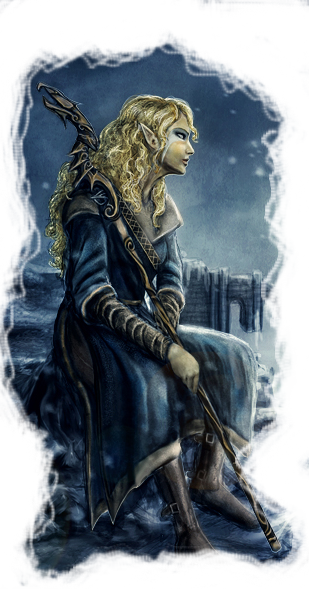
Slavers
Because the Altmer, for the most part, see themselves above all other Mortals, they are often open to the enslavement of lesser beings. Most well known is the enslavement of Goblins, which often fetch good money on the black market for their use as guards for underground dealings.
They have also been known to enslave the Kkajiit and Argonians, seeing them as little more than beasts. This has caused political issues with the Empire and with the beast races, though little has come of it.
Altmer Names
Altmeris is a flowy language, and somewhat inspired Nedic in that regard.
Altmer Names: (Male) Aldaril, Caryarel, Eraamion, Henantier, Lithnillian, Muril, Vanus, (Female) Medora, Calmaninde, Elante, Imare, Nerussa, Taarie, Tuinden, (Surname) Adal, Gaethar, Mothril, Aliaria, Rilis, Ateldil
Altmer Traits
Ability Score Increase. Your Intelligence score increases by +2.
Age. Altmer mature at the same rate as humans, and are considered adults in their late teens. Their lifespan usually ends at 300, but there have been recorded instances of High Elves living 10 times that long.
Alignment. The Altmer can be as good or as bad as any other race, but often tend toward Lawful alignments.
Size. Altmer have an imposing height, and are usually between 5'8 and 6'5. You are Medium sized.
Speed. You have a base walking speed of 30 feet.
Languages. You can speak, read, and write Tamrielic and Altmeris
Highborn. You are immune to disease. However, you have disadvantage on saving throws you make against a spell. You also have a minimum amount of 1st-level spell slots equal to your intelligence modifier, regardless of class. You know 1 cantrip from the schools of Alteration, Destruction, or Mysticism, and begin with 1 spell from those schools.
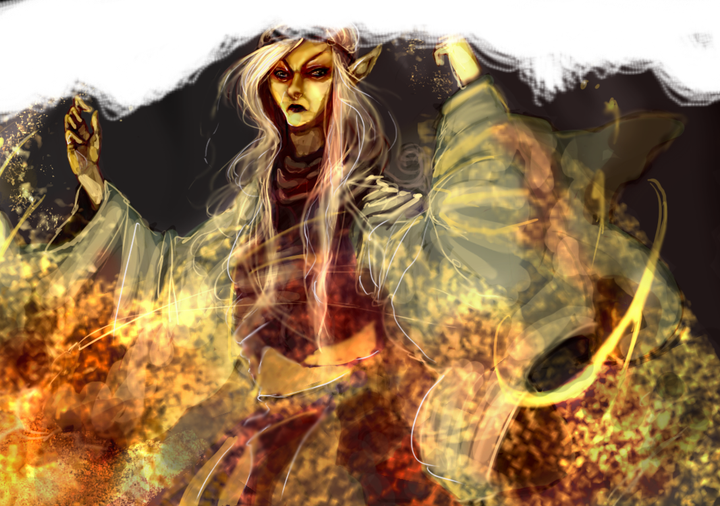
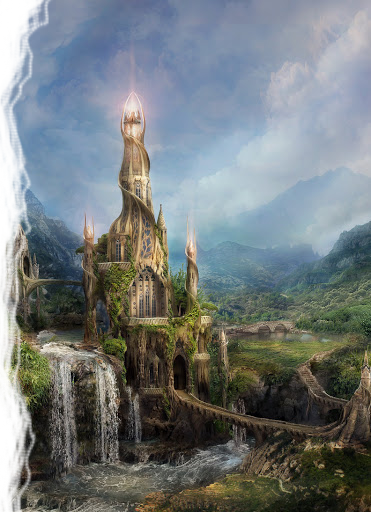
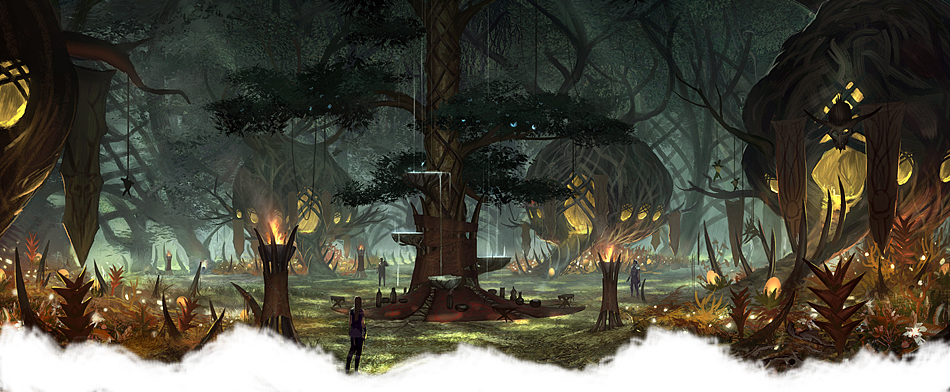
Bosmer
"The Spinner took thumping, methodical steps across the hilltop, eyes closed, hands tracing the patterns of shells wrapped around his chest. His voice shamed the night-calls of nearby insects to silence.
The others watching were reverently silent, eyes closed, swaying in time with the Spinner's steps. His feet slowed, pounding deep footprints in the earth. He no longer spoke; he sighed. He whispered.
'We are who we are,' the taller tribe says, in a voice made of leaf-shivers. 'We taste the earth and feel your steps over us. We were the land of green singing before the bones were set. Before the before-and-after.'"
The Bosmer, or Wood Elves, are native to Valenwood. They rejected Altmeri culture in favor of a more romantic, simple existance with the land. They are the most numerous of Mer in Tamriel, and are adept archers and scouts. Typically free spirits, the Bosmer prefer a life of excitement, throwing the idea of a stable life to the wind in favor of the next big adventure.
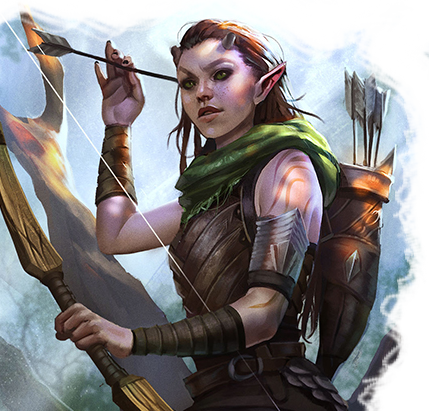
The Green Pact
Many Bosmer born in Valenwood follow the tenants of the Green Pact. The Green Pact lays out a set of rules that must be adhered to strictly. These inclulde:
- Do not harm the forests of Valenwood.
- Do not eat anything made from plant life. Eat only meat.
- When enemies are conquered, their meat must be eaten, not left to rot. Do not kill wastefully.
- Do not take on the shape of beasts.
Allegedly, the Pact was made with the Bosmer god Y'ffre, and allowed the Bosmer to take a coherent form. If a Pact-following Bosmer violates any of these rules, they will be killed by their fellow Bosmer. That said, the practice of eating ones enemies has begun to die down in recent years.
Because they are unable to harm the forests of Valenwood, wood for wooden structures must be imported from the other provinces. Additionally, anyone, foreigner or not, will be considered an enemy of the Bosmer if they fell any of Valenwood's trees.
Maormer Incursions
In the past few decades, as the Empire's strength has weakened heavily, the Maormer have been able to take much of the southern coastline of Valenwood, to use as staging grounds for their eternal war with the Altmer. Among other reasons, this has caused the Bosmer to join in alliance with the Altmer, despite their differences. This alliance is known as the Aldmeri Dominion, and the Khajiit are also part of it, despite being on friendly terms with neither nation. However, the Bosmer people see the alliance as a means to survival, and openly resent it.
Lycanthropy and the Green Pact
If a Bosmer follows the Green Pact and succumbs to Lycanthropy, this is considered violating the Pact. Even if a cure is found, should the Bosmer have ever become a Werewolf, he is to be killed.
Skilled Bowmer
Because of the Green Pact, the weaponry Bosmers have access to is limited. Often they will use bone clubs, or axes and spears with stone or obsidian edges. On the coast, they import less primitive weaponry.
The Bosmer are the inventors of the bow, and utilize horn bows, which are often regarded as the finest in the land. Just as the Redguard are taught the sword, the Bosmer are taught the bow at a young age. As early as 14, they are expected to join hunting parties.
Rather than the usual bow made of wood and string, Bosmer bows are made with horn and sinew - many Bosmer swear by Khajiiti entrails.
Inventive Designs
As with their bows, architects and artists must think outside of the box. Walls will often use bone rather than wood. Particularly greusome homes will have their walls made entirely out of skull. Hide is also used, to keep the bone secure and to create partitions.
Some Bosmer are able to carefully grow their homes, avoiding actual damage to the forest, while still getting the comforts of a wodden home. Bosmer near the coast are able to enjoy a more luxurious lifestyle, using imported wood to build more recognizable homes.
Bridges are often made of sinew, bone, and resin, and can bridge land or tree, as some Bosmer prefer to carefully tie together the branches of trees for their walkways.
Intriguingly, the art styles of the Bosmer are similar to that of the Nords, only where the Nords use animal motifs, the Bosmer will create floral designs. Form is held sacred in Bosmeri culture, as it was a gift from Y'ffre, and though their art hosts several designs, there is no room for variation in those designs.
The Rite of Theft
In Bosmeri Culture, there is a tradition known as the Rite of Theft. While foreigners will not necessarily understand or appreciate it, it is beloved by the local Bosmer. In this rite, they steal a cherished item. When they return it, they demand something of equal value in exchange. This could be another item, it could be a favor, it could even be a fleet of ships, if the stolen item is valuable enough.
While it is a Bosmeri tradition, they do not frown upon foreigners trying their hand at it, and there could be much to gain from doing so.
The Wild Hunt
In times of desperation, a collective group of Bosmer can bring forth a Wild Hunt to vanquish their enemies. Upon doing so, the group of Bosmer revert back to what they call the "Ooze." The entire group uncontrollably shapeshifts between several different creatures, and goes on a rampage, killing and devouring anything in their path.
After performing a Wild Hunt, there seems to be no going back to their Bosmeri forms -- And even if there were, they would have to kill each other for violating the Green Pact. As such, this is one of the most desperate moves the Bosmer can make, and it would be wise to avoid a Wild Hunt in progress.
The Varieties of Faith
Bosmer do not stick to the traditional worship of the 8 Divines. If anything, they act more like the ancestors of all races, and worship a wide variety. Y'ffre stands at the top of their pantheon, and is considered the "Spirit of the Now." Next is Auri-El, whom most Bosmer claim direct descendance from. Beyond these two deities, their pantheon is replete with spirits of trickery, and they are of the few Mer that openly wlecome Lorkhan.
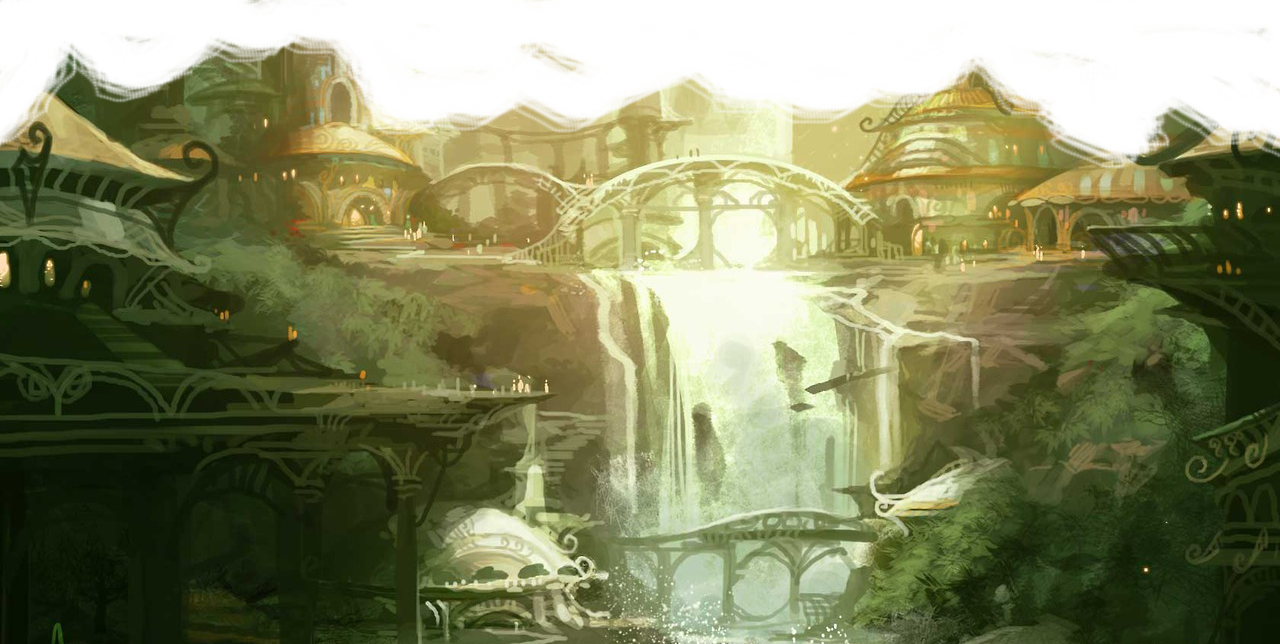
Natural Shapeshifters
While the Green Pact explicitly forbids it, Bosmer are capable of shifting their form into that of a beast or plant. This is most notable in the case of a Wild Hunt, but certain groups, such as the Vinedusk Rangers, have made use of their ability in the past.
Particularly educated lords of foreign lands have been knwon to approach their Bosmer subjects with offers of great reward should the Bosmer spy for them, making use of this ability, however, this ability is not well known to non-Bosmer, and even Bosmer that don't follow the Green Pact find it distasteful.
Connection to Nature
Bosmer are deeply connected to their natural surroundings, and can even speak to unintelligent beasts. Often times, Bosmer within Valenwood will have an animal companion, one that they consider not just a pet, but a friend to help them find their way, hunt enemies, and perform daily chores.
Outside of Valenwood, Bosmer continue this tradition, and keep pets. However, they consider them only pets, albeit ones that can tell a good joke now and then. Regardless of whether a Bosmer is from Valenwood or another province, any slight against their animal companions is taken as a slight against them. Animals are never taken as part of the Rite of Theft.
Examples of Animals Bosmer will keep with them regularly include dogs, hawks, boars, and deer.
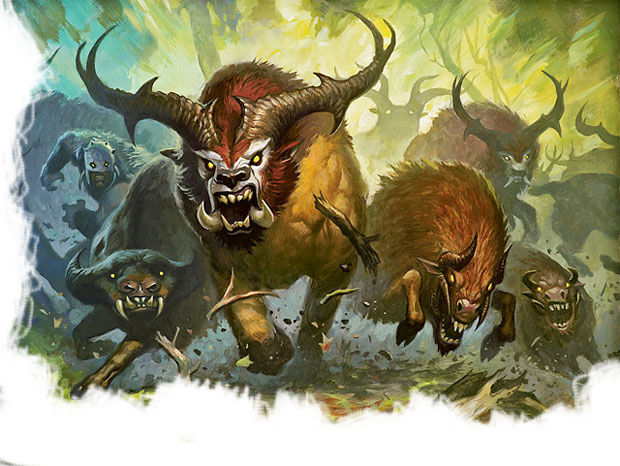
Bosmer Names
Bosmeris is derived from Altmeris, and is also a flowy language.
Bosmer Names: (Male) Agarond, Arranir, Bolrin, Cingor, Fargoth, Hagaer, Sarolion, (Female) Berwen, Distel, Falion, Hasathil, Nilawen, Zifri, (Surname) Beesinger, Benoch, Oakwood, Fernvale, Vayn
Bosmer Traits
Ability Score Increase. Your Dexterity score increases by +2.
Age. Bosmer are not known to be older than 300 years old, and reach maturity in their late teens. However, like with most elves, the true upper limit of their age is uncertain.
Alignment. Bosmer gravitate toward Neutral alignments.
Size. Among the shorter of the Elven races, Bosmer typically range from 4'8 to 5'7. Your size is Medium.
Speed. You have a base walking speed of 30 feet.
Languages. You can speak, read, and write Tamrielic, Altmeris, and Bosmeris
Beast Tongue. You may converse with animals, and ask them to perform favors.
Hunter's training. You have proficiency with shortbows and longbows.
Natural Shapeshifters. Though you loathe doing so, once per long rest you may change your form to that of any beast or flower. Your equipment does not transform with you, and you take the stats of whatever you shift into, though you retain your racial abilities. The process takes an hour, and if other Bosmer see this you will be marked for death. Transforming back does not require an additional use of this ability.
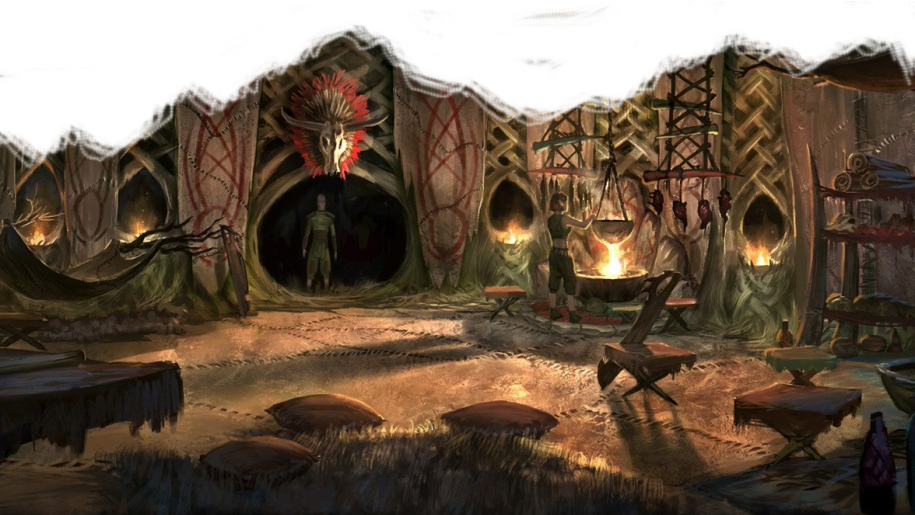
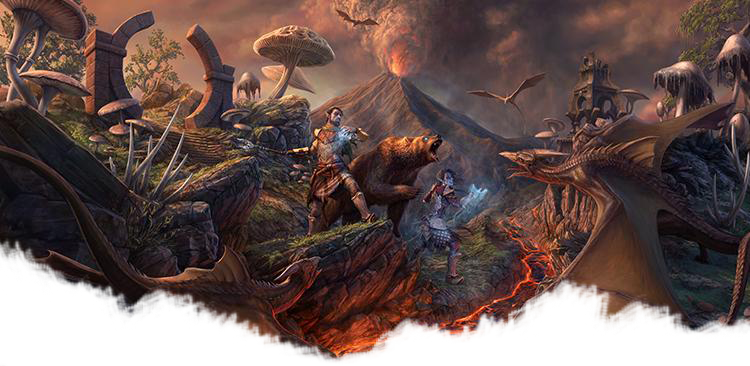
Dunmer
"Did you come to hide from war,
Or come to herd the guar,
Or were you with the House Guard
At the Battle of Molag Beran?
For I was there, and fought and cried,
And tasted blood and thunder.
I stood in line with mace and shield
As Dunmer clan slew Dunmer."
-- Anonymous, The Battle of Molag Beran
Like their Altmeri cousins, the Dunmer, or Dark Elves, are a proud race, with aptitude toward the Magic arts and a distaste for those not Dunmer. Unlike the Altmer, the Dunmer worship some Daedra, as well as the Tribunal, Mortals who attained godhood and have led their civilization since Merethic times. It is rare to see a Dunmer outside of Morrowind, even more so to see them smile.
The Changed Ones
The Dunmer were not always ashen skinned. In the late Merethic, the Chimer left the Altmer people, and headed east, under the guidance of the prophet Veloth. They settled in what is now the Velothi Mountains, and spread east and
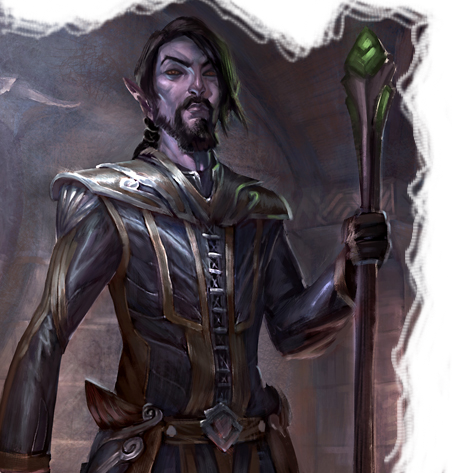
Mottos of The Great Houses
Of the six Great Houses of Morrowind, five are still standing. Every Dunmer in Morrowind belongs to one of these houses. Below are the House mottos and their patron saints.
House Redoran
"A Redoran is a warrior whose duty is first to the Tribunal, second to House Redoran, and third to family and clan."
- Saint Nerevar the Captain is the patron saint of House Redoran.
House Indoril
"Justice knows no sleep: Indoril shall order, the Temple shall judge."
- Saint Olms the Just is the patron saint of House Indoril.
House Hlaalu
"To trade fairly and freely is to honor the Three."
- Saint Veloth the Pilgrim is the patron saint of House Hlaalu.
House Dres
"To spread culture and truth to the benighted: this is our commitment and burden."
- Saint Llothis the Pious is the patron saint of House Dres.
House Telvanni
"The forceful expression of will gives true honor to the Ancestors."
- Saint Vorys the Immolant is the patron saint of House Telvanni.
southward to the near-empty lands of Morrowind. A war broke out between the Nords, the Dwemer, and the Chimer, and to survive it, three Chimer had to ascent to godhood. The Tribunal, as they are now known, led the Chimer to victory, but the Daedra prince Azura felt slighted. To take her revenge, she transformed the Chimer into the Dunmer, changing their skin to match the color of the ash that spewed from nearby Red Mountain, and their eyes the same red as the lava that flowed under it.
The Living Gods
The Tribunal, known individually as Vivec, Almalexia, and Sotha Sil, are the three main gods of the Dunmer. Vivec the poet, leads from his temple city that shares his name, on the forbidden island of Vvardenfel. Vertically, half of his body retains the visage of the Chimer, while the other half is Dunmer.
Almalexia, the warrior leads from the capitol city of Mournhold, and her body remains fully Chimer.
Sotha Sil, the sage, ever the recluse, has a city rumored to be deep underground and made of Clockwork. Nobody is quite certain how he appears.
To insult or go against any of these three is a great blasphemy, and Dunmer living in Morrowind are careful to avoid being seen as dissidents.
Exclusive Lands
Morrowind is difficult to enter as an outsider. For those few who can obtain entry without being enslaved or going to war, the local Dunmer will treat you with great disrespect. This holds true even for Dunmer that are born outside of Morrowind. An Outlander is an Outlander.
Vvardenfel, the mysterious island to the north of the province and home to Red Mountain, is considered property of the Temple, and no mortal may step foot on it except those personally approved by the Tribunal. It is rumored to be full of ebony and other valuable materials, but it does not look like outsiders will get to mine there for many years to come. Besides Vivec and those that staff his temple city, there are minor shrine cities throughout the region, and it is said that there are Dunmer who have devolved into a tribalistic society, who continue to worship only the Daedra. They are said to be the remnants of the 6th Great House, who's name is unknown.
Unfriendly Neighbors
The Dunmer are known for their constant wars against the Nords, though the Ebonheart Pact may put a stop to the fighting for as long as it will last, but what is less known is their habit of enslaving the Argonians to the south. As of late, region is seeing a period of unprecedented peace.
Doors of the Spirit
Besides Daedra and the Tribunal, Dunmer have a tradition of Ancestor Worship. They often live with their families, and bury their dead in their family shrines. Bodies are cremated, and ashes and bones are left in round ash pits.
Dunmer particularly despise Necromancers, though it is rumored that those loyal to House Telvanni are more openminded.
Dunmer Names
Dunmeris is derived from Altmeris, and is also a flowy language. Names of Ashlander Dunmer are usually distinct from the typical names you'll find in the civilized portions of Morrowind. Ashlanders also have a noticeable accent, and those Ashlanders that try to join civilization are easily noticeable. Dunmer Names: (Male) Adaves, Dralen, Danar, Ervas, Llarar, Ondres, Thoryn, (Female) Andilu, Dalyne, Girvani, Llavesa, Ravani, Vivyne, (Surname) Saren, Drelas, Nerano, Baro, Terano, Gilnith.
Dunmer Traits
Ability Score Increase. Your Wisdom and Dexterity scores increase by +1.
Age. Dunmer reach maturity in their late teens, and rarely survive longer than 300 years.
Alignment. Tendencies toward alignments change depending on the Noble House each Dunmer is a part of.
Size. Dunmer are not short, but not nearly as tall as their Altmer cousins. They typically range between 5'5 and 6'0. You are Medium sized.
Speed. You have a base walking speed of 30 feet.
Languages. You can speak, read, and write Tamrielic and Dunmeris
Ashborn. You are naturally resistant to fire damage.
Ancestral Protection. Once per long rest, as bonus action you may call upon the Wisdom of your ancestors. Gain +3 to your AC until the beginning of your next turn.
Great House. You may choose to belong to a great house. If you do, you pick from Dres, Hlaalu, Indoril, Redoran, or Telvanni, detailed after this section. Your racial ability score increase only provides the Wisdom increase, and you add the great house's ability score increase instead. You also lose your Ancestral Protection feat in favor of the racial feats listed under your great house.
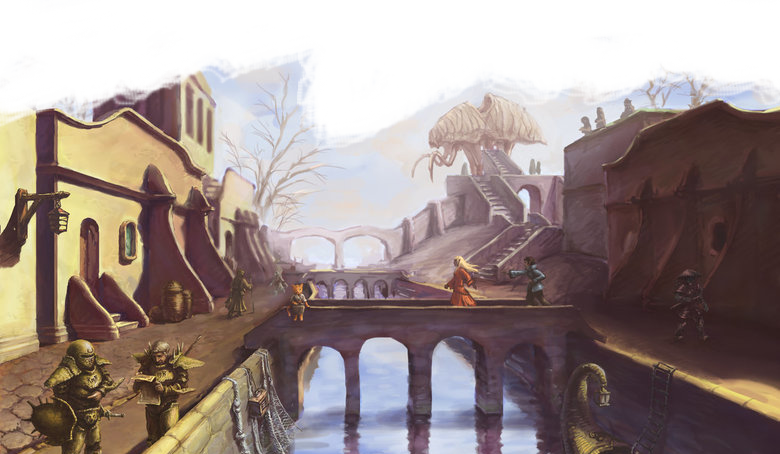
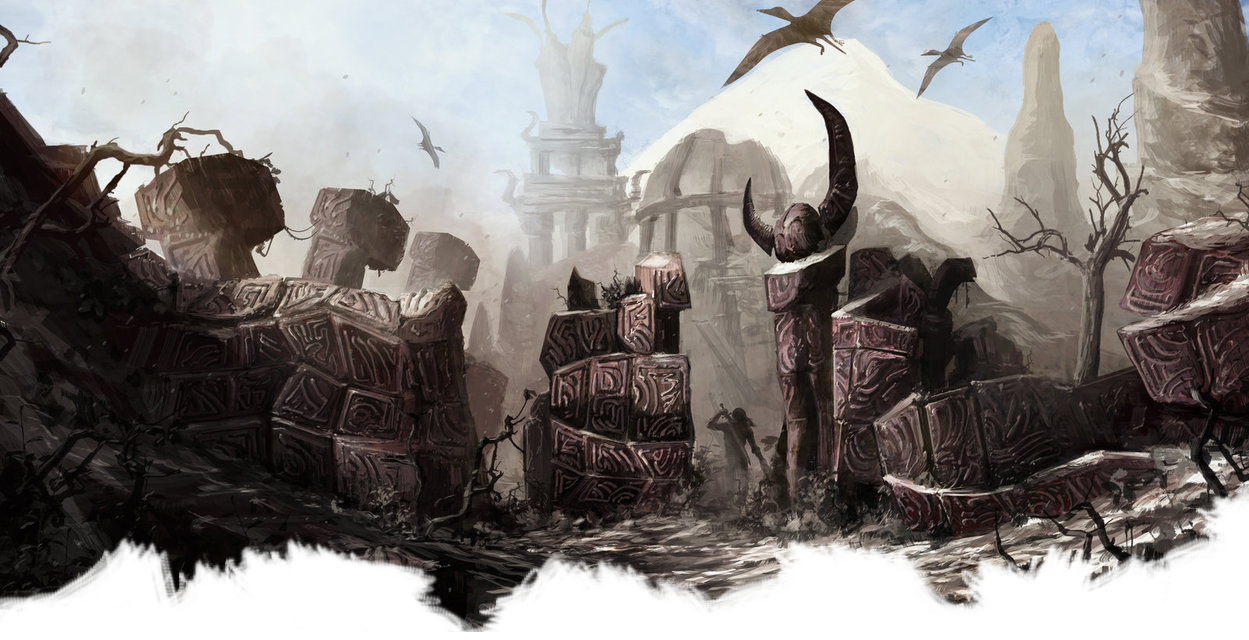
Dres
The Dres control southern Morrowind, from the end of Hlaalu borders down to the Argonian border, where they regularly raid Argonian villages for slaves to bring to their plantations. They are the agricultural center of Morrowind, and tend toward Daedra Worship above Tribunal worship.
Ability Score Increase. You get an additional +1 to Constitution.
Alignment. The Dres tend toward Neutral alignments.
Artisans. You have proficiency in two types of artisan tools.
Hlaalu
Hlaalu are Merchants and Diplomats above all else. They mainly control the central heartlands of Morrowind.
Ability Score Increase. You get an additional +1 to Charisma.
Alignment. Typically, Hlaalu will be
Neutral.
Languages. You may choose an additional language to have fluency in.
Born Hagglers. You have proficiency in Persuasion.
Indoril
The Indoril represent the Temple of the Tribunal, and control the holy sites and capitol cities of Morrowind. This includes Necrom, Mournhold, and Vvardenfel, among others. Their word is law in Morrowind. As such, Indorils are required to study the law and the accepted history of Morrowind as relayed by the Tribunal.
Ability Score Increase. You get an additional +1 to Wisdom.
Alignment. The Indoril are always Lawful.
Priestly Class. You have 1 cantrip of your choice from the spell schools of Alteration or Restoration.
Redoran
The Redoran are the honorable Warrior class of Morrowind. They are dependable, and closely alligned with House Indoril on all matters. They mainly control the Northwestern regions of Morrowind, from the Velothi Mountains upward.
Ability Score Increase. You get an additional +1 to Strength.
Alignment. Redoran follow a strict code of conduct not dissimilar to that of the Nords. They tend toward Lawful Good.
Weapons Training. You have proficiency in two Martial Weapons.
Telvanni
The Telvanni are an unknown quantity to many, even native Dunmer. What matters to them is the pursuit of knowledge above all else. They reside wherever they like, but are officially found in the mushroom forests of the northeastern peninsula.
Ability Score Increase. You get an additional +1 to Intelligence.
Alignment. Telvanni tend
toward Neutral and Chaotic.
Arcane Tradition. You have 1
cantrip of your choice from the spell
schools of Conjuration,
Destruction, or Illusion.
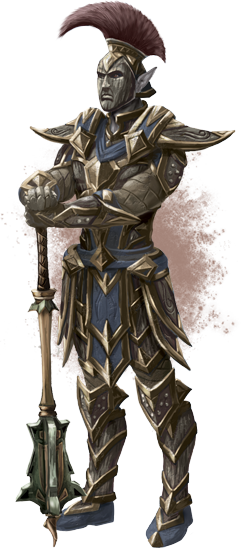
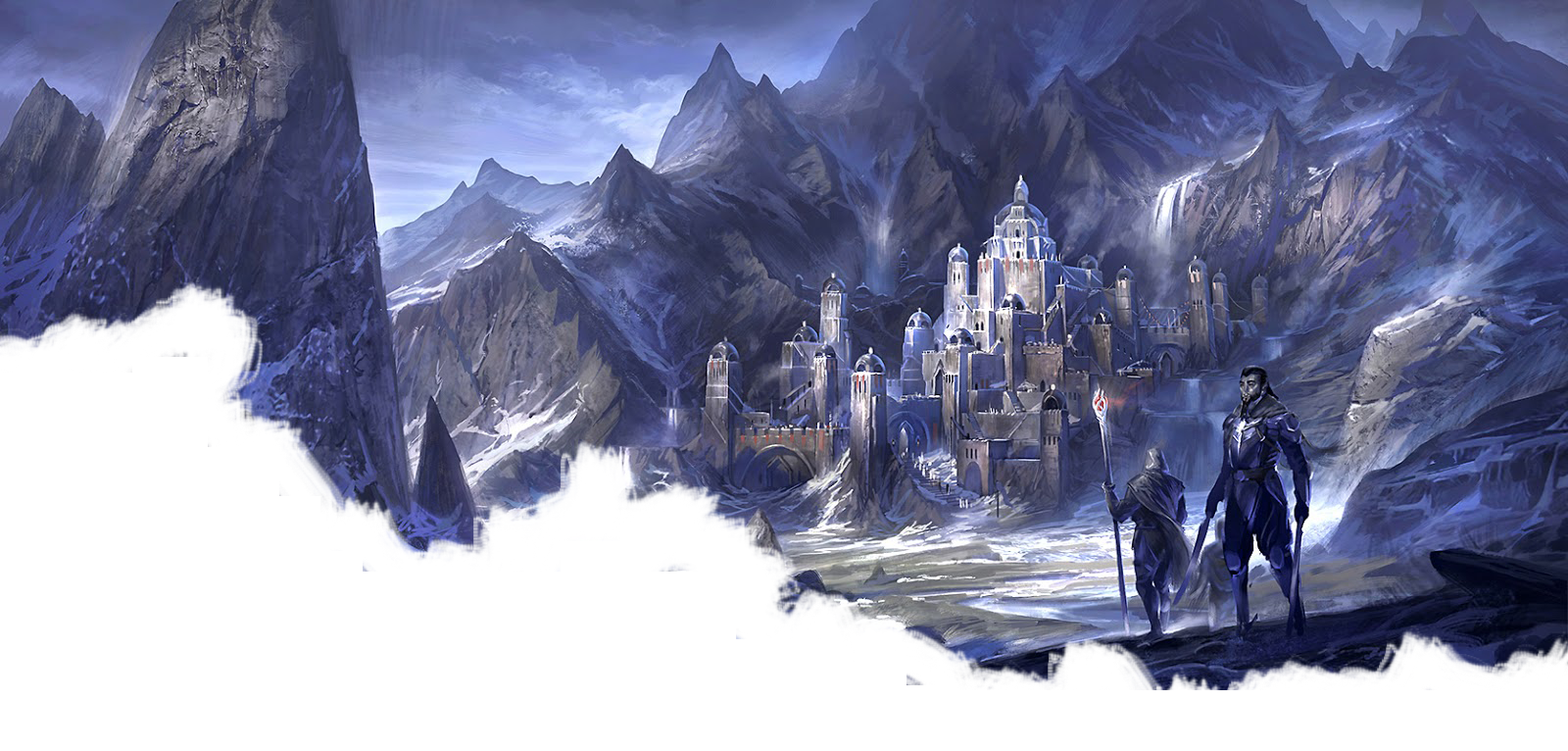
Orsimer
"The Orcs are strong people, fierce and warlike. Blood is our birthright, and the sinews of Malacath knit around our bones. But we were not made to sit still. We were not made to settle and till the land, but to move and pillage, and plunder. Our strength is to destroy and reap from what we destroy the glory of war.
But many years ago, Turog, first among the Orcs in strength and rage, came to our people with a vision. We will build a great city, said he, and the rest of the world will look to us with fear and respect.
Fear us they did, but know that an Orc is never respected, no matter how great a city he builds."
--Anonymous, Why We Fled
The Orsimer, better known as Orcs, were long thought to be an unintelligent race of Goblin-ken, dangerous pests to be put down whenever they set up nests. Orsinium, their kingdom, has only just recently been allowed to stand by the combined might of Hammerfell and the Kingdoms of High Rock. With trepidation, they have entered an alliance with their aggresors, and in this time they have been able to rebuild.
The Orcs are a rough, hardy folk, but despite this, are highly sophisticated. Their craftsmanship is second to no race in Tamriel, and friendship is highly prized - if you are a friend with an Orsimer, that friendship will not die easily.
Always on the Move
Ever since Man first stepped foot on Tamriel, they have been at odds with the Orcs. Seeing them as Beastfolk or Goblin-ken, Orsinium has been sacked and destroyed countless times. Because of this, Orsimer have never known a stable homeland. Orsinium has traditionally been built in or on the border of Hammerfel, High Rock, and Skyrim.
Orsimer can be found throughout Tamriel. Some have small, hidden camps in Morrowind, others, known as the Iron Orcs, stay in the vicinity of Orsinium, and others, known as the Wood Orcs, traverse the forests of Valenwood, among others.
Children of Trinimac
Orsimer worship Malacath, or Mauloch, Daedric Prince of Outcasts and the reincarnation of Trinimac, slew by the Daedric Prince Boethiah. The story goes that Malacath was born when Boethiah ate Trinimac and excreted him. In doing so, he also transformed the original Orsimer, devout Trinimac worshippers, from Altmer-like elves into the Orcs we see today.
Some Orcs deny that their deity, Mauloch, is Malacath, but many other tribes refute that denial. Regardless, the worship of the prince of Outcasts befits the Orsimer's lifestyles, and Orc weddings are even held at midnight.
Life in the Stronghold
Orsimer living outside of Mannish and Merrish cities must adhere to a lifestyle difficult for outsiders to accept, one that seems too barbaric to be acceptable to an intelligent race. All Orcs defer to their cheiftain, and may take no wives nor father any children. The chieftain is replaced only when one of his children can best him in combat and kill him.
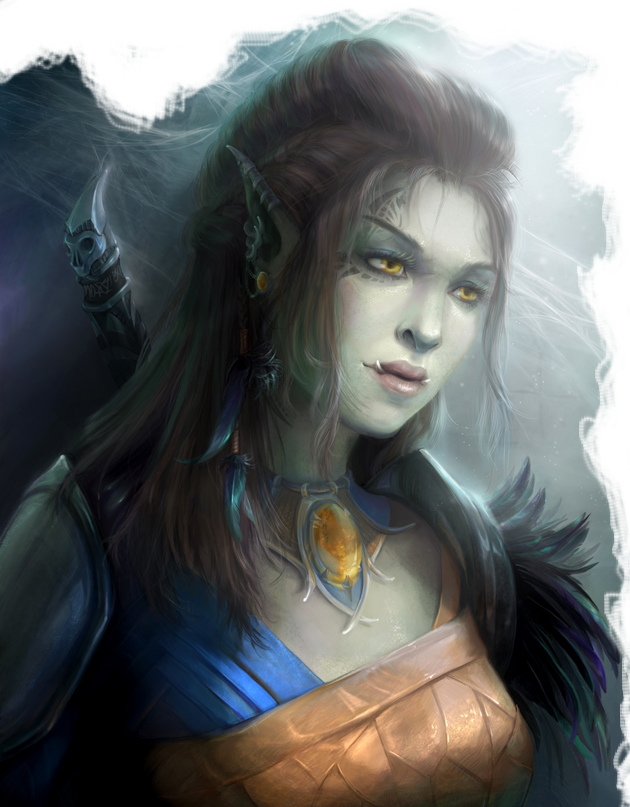
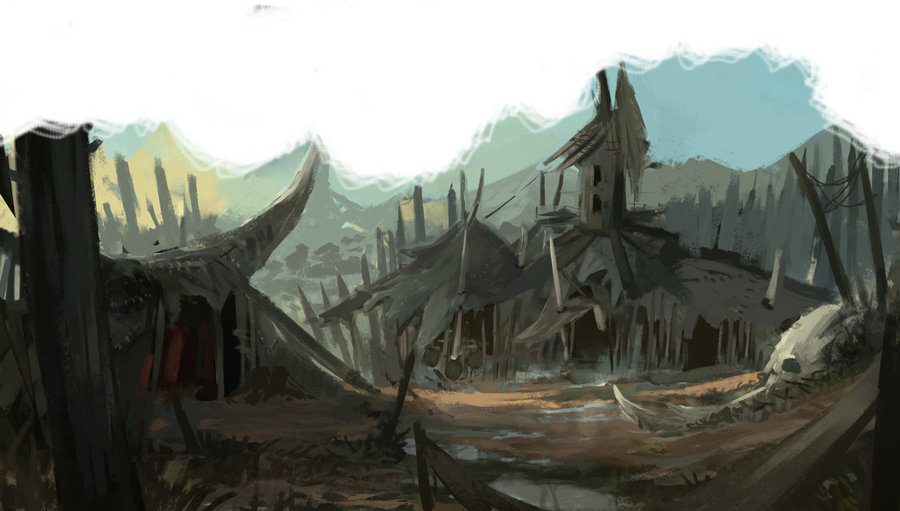
Women traditionally act as smiths and wisewomen, and are expected to perform the same duties a male Orc would. The chieftain's daughters are usually reserved for marriage into other clans, allowing stronger ties between them. Often the female Orcs you see in a civilized city are there to escape the fate of being a political pawn.
Relations with Mer
Although Orsimer have elven blood, most Mer consider them as undesirables, and Orsimer believe other Mer to be weaklings not worth an Orc's time, unless proven otherwise.
The Code of Malacath
Orcs live by an unwritten set of rules, known as the Code of Malacath. To summarise:
- Theft and unwarranted violence is prohibited, and conflicts must be resolved with honor and personal strength.
- Imprisonment is unacceptable, those who violate this order must pay a blood price.
A Blood Price allows the offended party to spill the offender's blood until the price has been paid. Often, families will document their grievances, and weigh the blood prices carefully, using such weights as "Wife," "Cheif," and "Warrior."
Orcish Craftsmanship
Orcs are skilled at working with Ebony, and make excellent Orichalcum armor. Their work is second to none, and members of the Daggerfall Covenant have scrambled to bring Orcish smiths into their cities to better equip their soldiers.
Orc smiths specialize in heavy armor, and while difficult to carry, it is rare that a weapon can penetrate it.
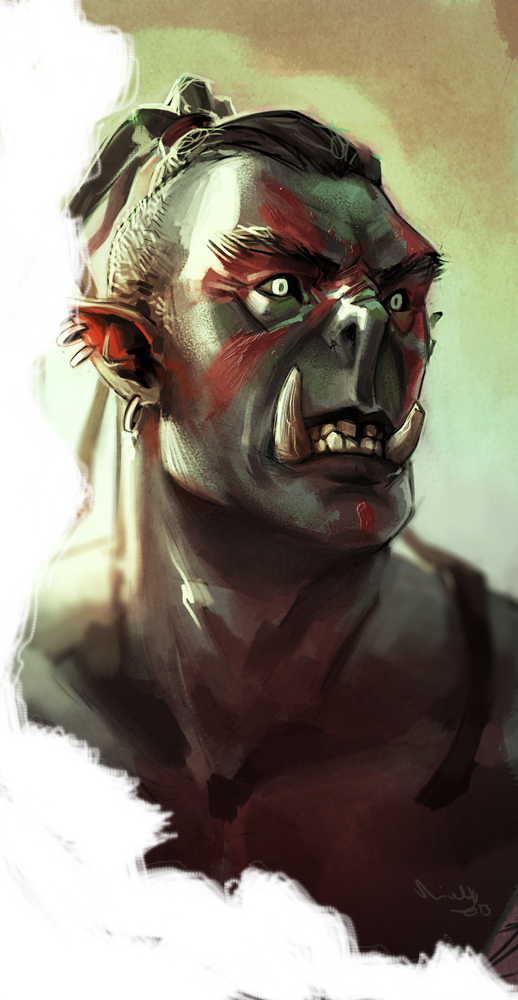
Orsimer Names
Unlike other Merrish languages,
Orcish is deep and gutteral. Orcish is
typically spoken only by the Orcs of
Orsinium, and other Orcs will take
on the languages of their neighbors.
Orsimer Names: (Male) Azuk,
Bazgulub, Gruzgob, Makor, Shagol,
(Female) Batul, Ghob, Mazoga, Urog,
(Surname) Trailslag, Yagash, Mughol,
Nogremor
Orsimer Traits
Ability Score Increase. Your
Strength score increases by +2.
Age. Orsimer reach maturity
in their late teens, and have a
lifespan similar to most Humans,
rarely living beyond 100.
Alignment. Orcs tend toward Lawful
Neutral within a stronghold, and otherwise,
Neutral alignments.
Size. Orcs are very imposing creatures, and can be anywhere from 6'0 to 7'0. Their size is Medium.
Speed. You have a base walking speed of 30 feet.
Berserker Rage. As an action, you may invoke Berseker Rage, gaining a number or hit points equal to your Constitution modifier + your level, and gaining advantage on all melee attacks. During this time you cannot cast spells, and attackers have advantage on melee attacks against you. You may do this once per long rest.
Orsinium and Iron Orcs
Languages. You can speak, read, and write Orcish and Tamrielic.
Wood Orcs
Ability Score Increase. Instead of your regular increase, your Dexterity score increases by +2 instead.
Languages. You can speak, read, and write Bosmeris and Tamrielic.
The Beastfolk
Besides Man and Mer, Tamriel is home to several beastfolk -- Ireferred to by some as Betmer, despite having no obvious Mer heritage. Beastfolk can refer to the Khajiit, the Argonians, the Imga, Goblin-ken, Griants, Lilmothiit, Sload, and others. Of these races, Khajiit, Argonians, and Imga are the only ones currently suitable for a player to play as. Several Khajiiti subspecies are also not suitable for play, but may be useful as NPCs.
Khajiit
"Azarrid observed the dispute, leaning against the cool stone of the ancient wall as his companions' argument intensified. His gaze flicked down the hallway and his face lit up with a hungry grin as he noticed something interesting. Buffing his claws on his leather armor, he waited for the right moment. "Khajiit thinks," he said during a seething pause, "that whoever is best to decide is the best adventurer, and that is the one who picks it up first." He took off and sprinted past the Nord and Altmer."
-- Anonymous, Azzarid's Race
The Khajiit are a cat-like people, hailing from the sand and jungle of Elsewyr. They are perhaps one of the most varied races, with several subspecies, all of which have their own distinct traits, and some of which do not appear to posses man or mer-like intelligence whatsoever. They worship the moons, along with some Aedra and Daedra, and refer to themselves in the third person.
Words of the Clan Mothers
Khajiit follow the lore given to them by their Clan Mothers. These are figures shrouded in mystery, and are exempt from the Mane's rule, and the rule of local leaders. Their religion is mostly the same as that of Men and Mer, but unlike the Mer, they admire and respect Lorkhan's attempts to bring Mundus to life. More information on the Khajiiti pantheon can be found in the appendices.
The Lunar Lattice
It is said among the Khajiit that they are part of the lunar lattice, or ja-Kha'jay, protecting Mundus from Oblivion. This represents itself in the birth cycle of the Khajiit. Depending on the phases of Masser and Secunda at the time of their birth, their morphology can be wildly different.
Ohmes
Born when Secunda is Full and Masser is New, the Ohmes appear similar to smaller Bosmer. The are occasionally sent to spy on Bosmer movements, but prefer not to, typically tattoing their bodies to appear more feline. Ohmes are seen often in the Elven provinces as ambassadors as well, and or the most commonly seen Khajiit across Tamriel.
Ohmes-raht
Born when Secunda is Waxing and Masser is New, the Ohmes-raht are in some ways similar to their Ohmes cousins, however they are also distinct, unlike most "raht" variants of Khajiit races. They appear less like Mer, and more like Man, and are usually seen in High Rock and Hammerfel when outside of Elseweyr They are the only breed of Khajiit to walk on their heels, rather than the balls of their feet.
Suthay(-raht)
Born when Secunda is New or Waning(raht) and Masser is New, the Suthay breeds are among the most common to see in and outside of Elsewyr. They are commonly sighted as slaves in Morrowind, and there are communities of Suthay in Stros M'kai. Suthay are often referred to as "ja'Khajiit,' or Kittens, in their native Ta'agra. They are slim, and smaller than most Men and Mer. They are typically more dextrous, and many are employed as alchemists or theives.
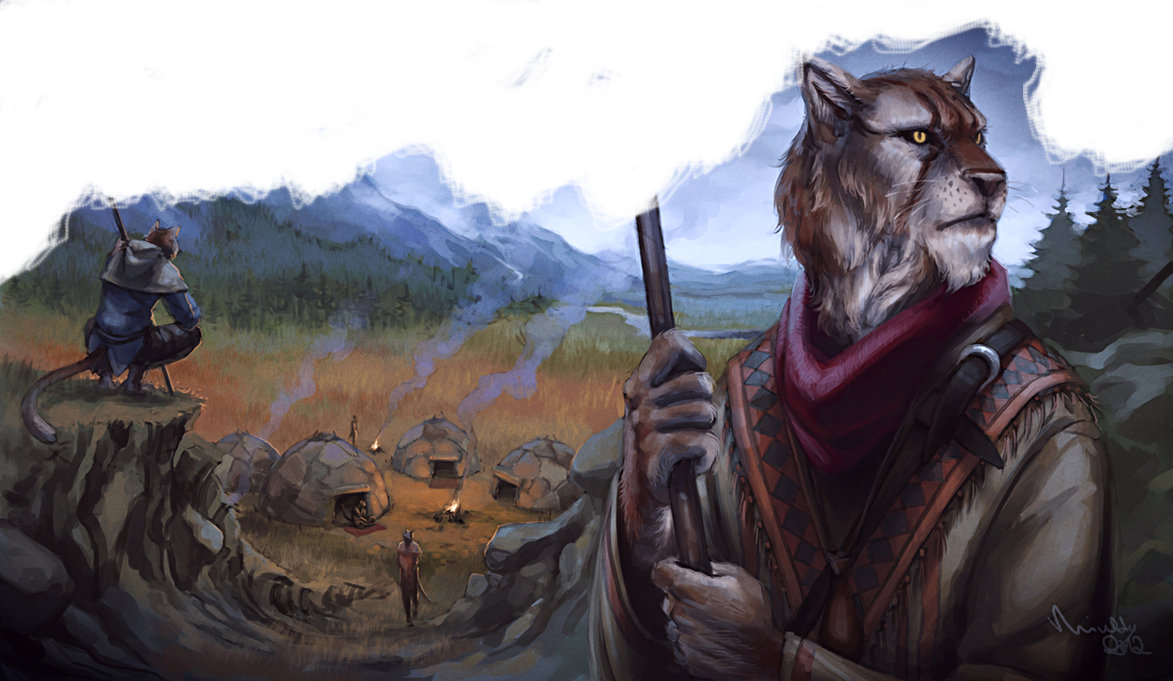
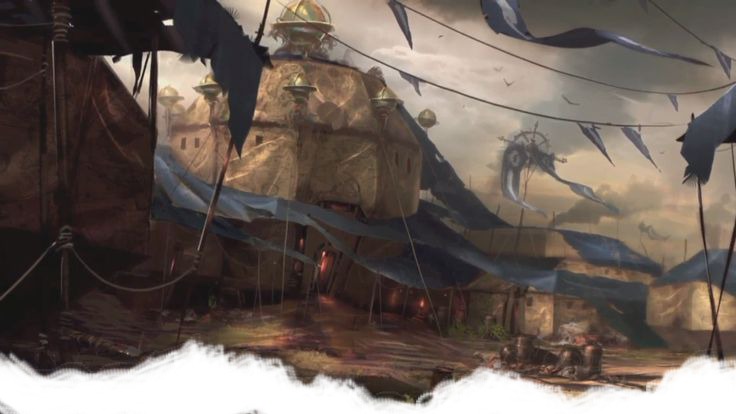
Cathay(-raht)
Born when Secunda is Full or Waxing(raht) and Masser is Waxing, the Cathay breeds are referred to as "Jaguar-men." They have some similarities with the Suthay, only are larger, stronger, and much more intimidating. They are usually employed as bodyguards for trade caravans.
Tojay
Born when Secunda is New or Waning(raht) and Masser is Waxing, the Tojay are humanoid, but with the distinct ears of a Suthay. Beyond that, not much is known about them, save that they live in the jungles and marshes of southern Elsewyr.
Alfiq
Born when Secunda is Full or Waxing(raht) and Masser is Waning, you can easily mistake the Alfiq breeds for common housecats. Small, quadripedal, and unable to communicate through speech, these Khajiit are still highly intelligent, and it is alleged, though unconfirmed, that they capable of sorcery.
Dagi
Born when Secunda is New or Waning(raht) and Masser is Waning, the Dagi breeds are relatively common in the Tenmar forests. They are small, rarely exceeding 4', and are at home on the branches of trees. They have a strong magical aptitude, and are often used in Khajiiti armies as battlemages. They are highly inquisitive, and tend to seek out new knowledge.
Pahmar
Born when Secunda is New or Waning(raht) and Masser is Full, the Pahmar breeds are feirce warriors, and their intelligence is sometimes questioned due to their feral-like attacks on the Bosmer of Valenwood. They, like the Tojay, are tall and tiger-like, but the Pahmar tend to be bulkier.
Senche
Born when Secunda is Full or Waxing(raht) and Masser is Full, the Senche are often used as steeds. Like the Alfiq and Pahmar, they are easily perceived as unintelligent beasts, but it's possible this holds true for the Senche.
The Mane
A Khajiit known only as the Mane is considered the unofficial ruler of all Khajiit. The Mane is not a title, however, but a subspecies, of which only one has been known to exist at a time. A Mane is born only under a rare alignment of Masser and Secunda, where a supossed "third moon" appears.
Sugar tooths
As Khajiit worship the moon, they are also drawn to Moon Sugar, a highly addictive, illicit drug used in the creation of Skooma. Most baked goods and traditional meals in Elsewyr are enriched with moon sugar. The Khajiit claim it to be "Crystalized Moonlight," believing that by consuming it, they can become closer to Jone and Jode, the moon gods. However, they are not immune to the the negative effects of Moon Sugar, which often induces fits of ecstacy and madness.
Khajiit Names
Khajiit names are in the language of Ta'agra, and are traditionally suffixed with an honorific. Recently, honorific prefixes have become popular among the youth. They do not typically use surnames, but will occasionally hold a nickname or title.
Khajiit Names: (Male) Ma'randru-jo, Duzal-ja, Akkhuz-ri, Shansi-sa, Jo'barro, (Female) Ahjarra, Adharama-ri, Nizil-dar, M'kai, Kishra-do
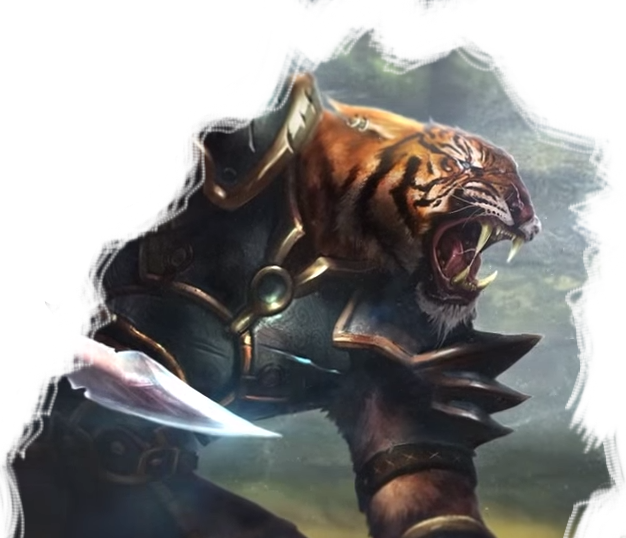
Khajiit Traits
Ability Score Increase. Your Dexterity score increases by +1.
Age. Khajiit reach maturity in their late teens, and do not often live beyond 80 years.
Speed. Khajiit characters have a movement speed of 40 feet. Because of their claws, they have 30 feet of climbing speed.
Alignment. Khajiit are typically Neutral, and don't lean toward good or evil.
Languages. You can speak, read, and write Tamrielic and Ta'agra
Cat's Eye. Accustomed to traveling at night, guided only by the phase of the moon, Khajiit can see well in the dark. You have 60 feet of Darkvision.
Claws. Your powerful claws can be used as a natural weapon, which you can use to make unarmed strikes. If you hit with them, you deal slashing damage equal to 1d6 + your Dexterity modifier, instead of the bludgeoning damage normal for an unarmed strike.
Cathay
Ability Score Increase. In addition to your Khajiit ability score increase, your Constitution score increases by +1.
Size. Cathay are capable of reaching great sizes. They can range from 5'10 to 6'8. Your size is Medium.
Jaguar-men. You have proficiency in Athletics.
Suthay-raht
Ability Score Increase. In addition to your Khajiit ability score increase, your Dexterity score increases by +1.
Size. Suthay are rather short, and range from 4'8-5'4. Your size is Medium.
Hidden by the Moons. You have proficiency in Stealth.
Dagi
Ability Score Increase. In addition to your Khajiit ability score increase, your Intelligence score increases by +1.
Size. The Dagi are one of the shortest playable races. They range between 3'-3'4. Your size is Small.
Raht Variants
Raht-variants of these playable Khajiit are typically 4-6 inches taller than their counterparts. Sizes must be adjusted as appropriate.
Eye of the Dagi. Once per short or long rest, you may mark a creature that is within 30 feet and can see you. For up to 1 minute, you have advantage on any spell attack rolls you make against that creature.
Pahmar
Ability Score Increase. Instead of your Khajiit ability score increase, your Strength score increases by +1 and your Constitution score increases by +1.
Size. Pahmar range from 8' to 8'10. Your size is Large.
Savage Bite. In addition to your Claws, you may make attack with your razor-sharp teeth as an unarmed attack. If you hit with them, you deal piercing damage equal to 1d8 + your Strength modifier.
Eye of Fear. Once per long rest, as an action you may use Eye of Fear on a creature within 30 feet that can see you. You will have advantage on any intimidation rolls and attack rolls. In combat, they must succeed a Wisdom saving throw contested by your strength ability score, or become frightened.
Khajiiti Honorifics
Certain honorifics are more common with the different sexes. Prefixed honorifics are prefixed with an apostraphe, while suffixed honorifics are suffixed with a dash. Here are a small handful of honorifics:
Masculine
- Dar - Theif, Clever
- Do - Distinctive Warrior
- Dro - Grandparent
- J/Ja/Ji - Bachelor, Young adult
- Jo - Respected physician, scholar, or mage
- Ra - Esteemed leader of soldiers, trade, or government
- Ri - King, Mane, Great leader
Feminine
- Dra - Wise, full of wit, of venerable age
- Ko - Respected healer or scholar, sometimes added to to names of learned ancestors
- Daro - Nimble-fingered, lithe tongue
- La - Promiscuous maiden
Gender-Neutral
- Do - Warrior
- M/Ma - Child, apprentice, virgin, term of endearment
- S - Adult
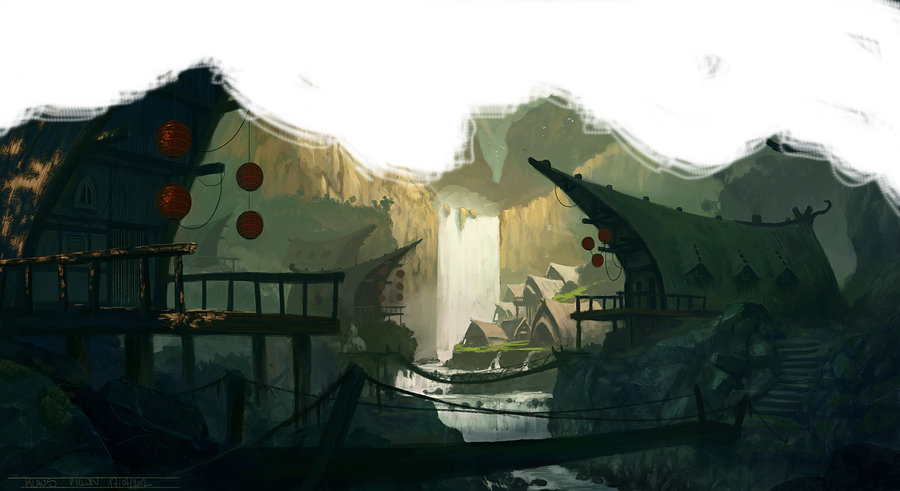
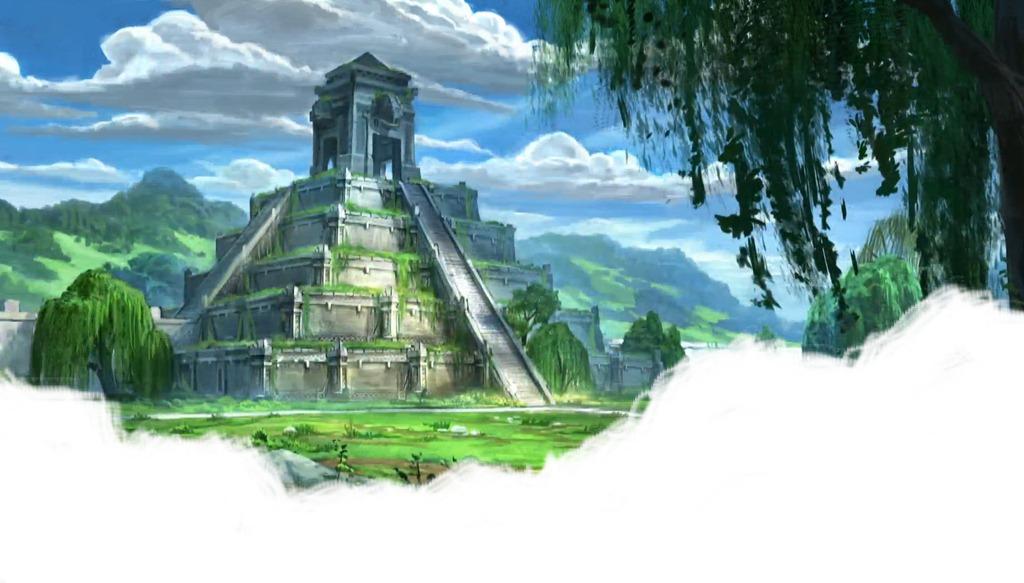
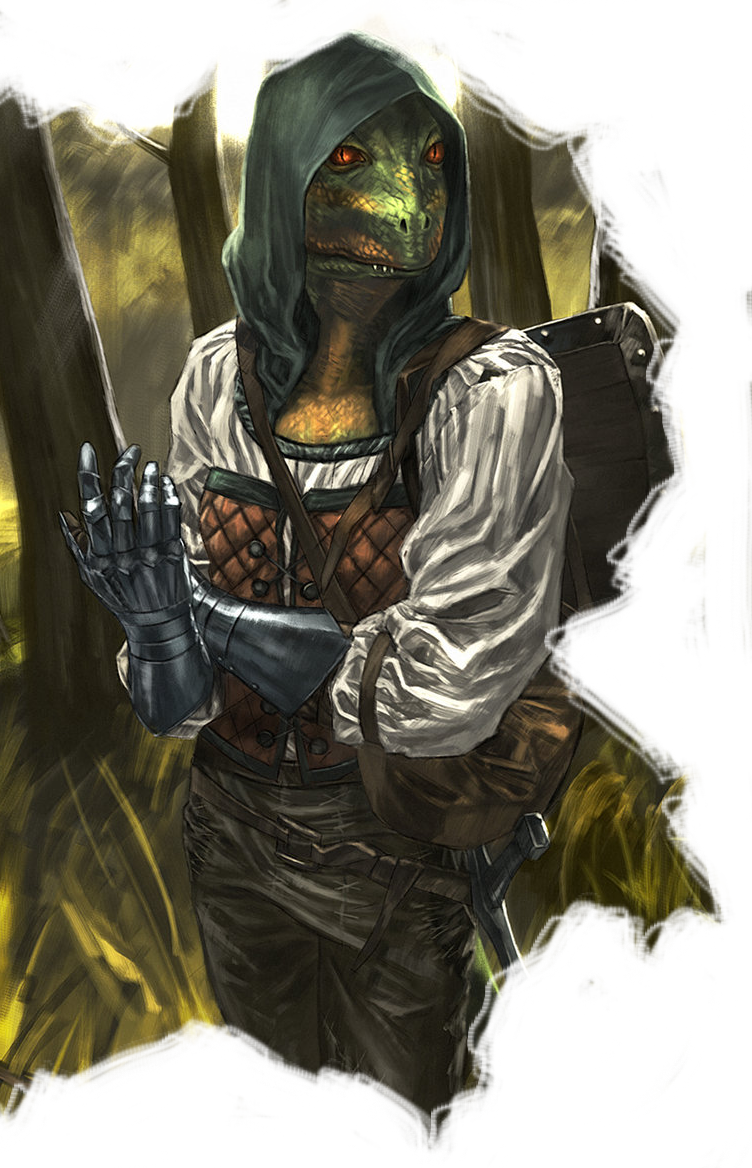
Argonians
"Nomu smiled, his long mouth arching up like a host happy to see an unwanted guest leave a party. "Shehs will guide you."
Shehs, it seemed, was the bitter little yellow creature, and he was not at all pleased at the assignment. With surprising strength, he hoisted Scotti up, and for a moment, the clerk was reminded of Gemullus dropping him into the bubbling muck that led to the Underground Express. Instead, Shehs shoved Scotti toward a tiny little raft, razor-thin, that bobbed on the surface of the water.
"This is how you travel?"
"We don't have the broken wagons and dying horses of our brothers on the outside," Shehs replied, rolling his tiny eyes. "We don't know better."
-Waughin Jarth, The Argonian Account
The Argonians are a species shrouded in mystery. Their homeland, the Black Marsh, is inhospitable to Man and Mer
alike, and their language is entirely different
from any language descended from Aldmeris or Nedic
influences.
What is known about the Argonians is that behind their scaly appearance and inability to display emotion lays a fierce sense of loyalty to those they consider friends, and that, like the Bosmer, they prefer to live in the Aurbic Now, rather than dwelling in the past or the future, as Men and Mer often do.
Mythical Creatures
In the first era and the period before, accounts of the Argonians were limited. The few people who encountered them saw them as terrifying monsters akin to Dragons, a mysterious force of the swamp, and occasionally as heroic figures.
Despite their reptilian appearance, there is no known relationship between the Argonians and the Dragons of old. By all recorded accounts, Argonians came from the Hist, sentient trees of the Black Marsh, which have existed on Nirn for as long as the Ehlnofey have.
The Hist Brain
Most Argonians are influenced by the Hist, and can feel a direct connection to it in their minds. The further they travel from the Black Marsh, and presumably the Hist, however, the weaker that connection gets. A small amount of Argonians are born without this connection, and are often pitied by their fellows, as they are unable to understand the Hist "language," nor are they able to understand many Argonian gestures influeced by it. Supposedly, there is an item in Tamriel that represents the physical manifestation of this link between Hist and Argonian, and legends state that if the item were to be destroyed, all Argonians linked to the Hist would perish.
An Oppressed Peoples
In Merethic times, the Chimer would often use Argonians as slave labor. This practice continued with the Dunmer, who saw this enslavement as their duty, for the Argonian's own good. Of course, this view isn't shared by the Argonians. Despite this, ever since the Akaviri invasion, the Argonians have of their own accord, if grudgingly, allied with the
Dunmer and the Nords. Ever since this pact, the practice of enslaving Argonians has lessened, and many of the Great Houses of Morrowind have banned the practice altogether.
While unconfirmed, there are rumors that the Knahatan Flu, which originated in the Black Marsh town of Stormhold in 2E560, was created by the Argonians in order to keep slavers at bay.
The Shadowscales
The Shadowscales are a group of Argonians, chosen at birth, who are trained in the arts of assasination and subterfuge. They serve Sithis directly, and are supposedly a faction within the mythical Dark Brotherhood. It is uncertain why they are chosen, but some allege that all Shadowscales are born under the sign of the Shadow.
Tribal Living
Argonians living in the Black Marsh are divided into tribes. There are many, but the most well known ones are the Miredancers, Black-Tongues, Root-House People, Ghost People, and Bright Throats.
Each Tribe has their own distinct cultural norms. The Mire-Dancers are known to be devoted to the Hist, and also hopeless gamblers. The Black-Tongues are esteemed Alchemists, and live to cultivate more Shadowscales. The Root-House People are brutish, and attack and loot other tribes. The Ghost People are nearly translucent, and steal the dead from other tribes to use as fertilizer for their Hist trees. The Bright-Throats are master craftsmen, and their musical instruments are prized among all Bards.
Argonian Names
Jel is almost impossible for non-Argonians to speak, and they will typically only speak in Tamriellic to those outside the Black Marsh. Fortunately, they also translate their names. They do not typically have surnames.
Argonian Names: (Male) Fine-Mouth, Grey-Throat, Ten-Tongues, Morning-Star-Steals-Away-Clouds, Fly-Breath, Wind-In-His-Hair, Sings-Like-Thunder, (Female) Tern-Feather, Quill-Weave, Wide-Eye, Scared-Of-Snow, Walks-With-Bargains, Long-Claw
Argonians Traits
Age. Argonians that regularly lick the Hist Sap can live up to 150 years. Those who do not will often pass away after 100 years. It is unknown when they reach maturity.
Alignment. Nobody is quite sure exactly how Argonians operate, it is only known that every action has a purpose. Argonians can be any alignment.
Ability Score Increase. Your Dexterity and Wisdom scores increase by +1.
Size. Argonians have a height range of 5'10-6'. You are of Medium size.
Speed. You have a base walking speed of 30 feet.
Languages. You can speak, read, and write Tamrielic, Hist, and Jel
Histskin. You are immune to poison and disease. Additionally, once per long rest, as an action you may choose to use one of hit die to heal yourself while not resting.
Swift Swim. Argonians are naturally adept at swimming. You have proficiency in Athletics and a swimming speed of 30ft.
Imga
"Then, because he had toyed with the ape-maiden Dulsa, did Maruhk spend his Century of Penance upon the Stonemeadows, and his sight was seared, and his tongue was swollen, and his pelt was mottled, and his left thumb pointed ever at the stars of the Tower. And ever did the shade of Al-Esh speak to him, serrated words that rasped his concept-organ and brought him to wisdom through affliction. And he recorded her words in his simian gore with glyphs on the Beseeching Scarp, and the fire in his blood did etch the lithic face with the Seventy-Seven Inflexible Doctrines. And though the labor depleted, yea, even consumed his very substance, he stinted not, for he knew that death is an illusion. For did not Al-Esh persist, speaking knives, though dead? And had not Pelin-Al been witness to her death, although dead himself at the death of Umar-Il? Then did Maruhk know a Right Reaching, that one devoted to Proper-Life and Ehlnofic Annulment shall persist beyond the illusion of death—for indeed, the drive to expunge corruption can conquer even the Arkayn Cycle."
-- The Illusion of Death, Marukh
The appearance of the Imga is striking. Imagine a seven foot ape, hunched over with thickly muscled forearms, a high sagittal crest and a long baboon-like jaw, covered with dark fur, paling to a lovely golden yellow on the backs of the leaders of their ‘nogs’ or clans. They have two opposable digits on each limb to enable them to climb at amazing speeds and with an agility that belies their size. While those not knowledged of the Imga assume an immense Strength, the Imga's true strength lies in their minds.
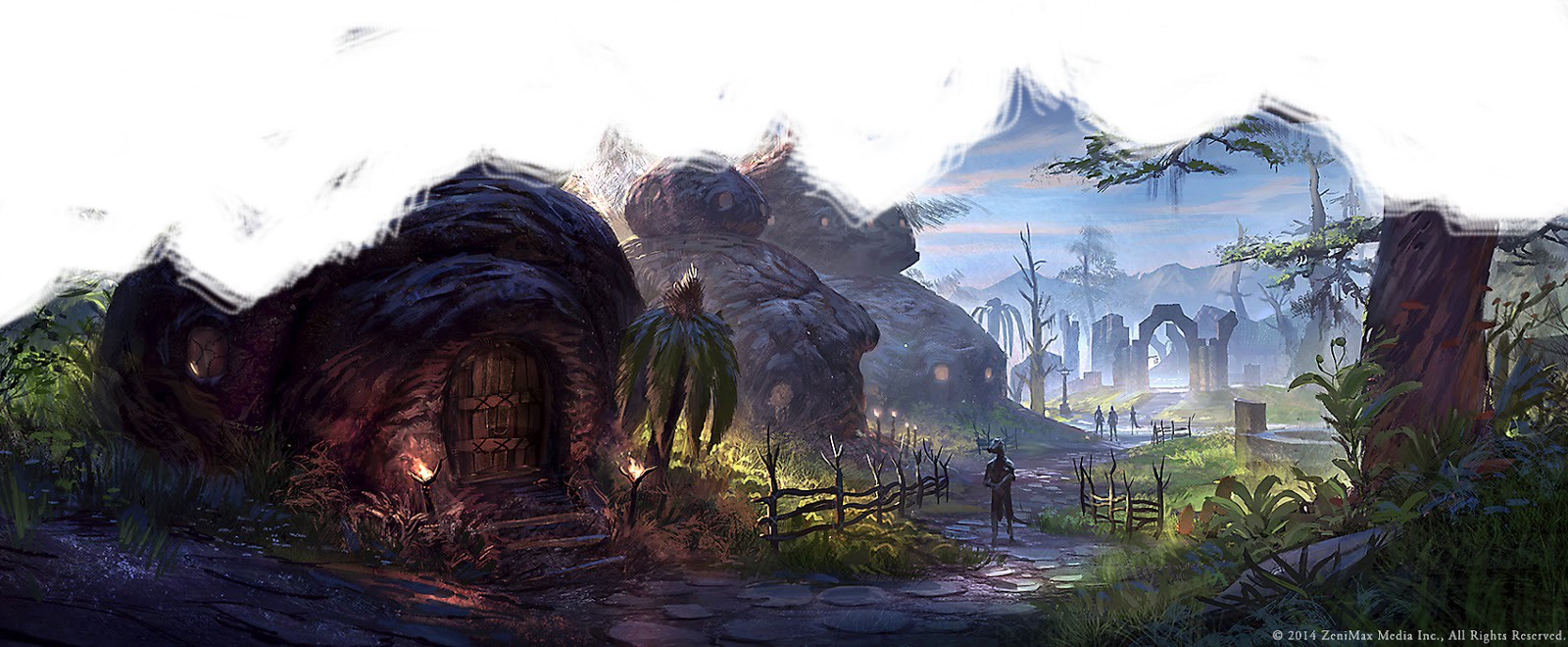
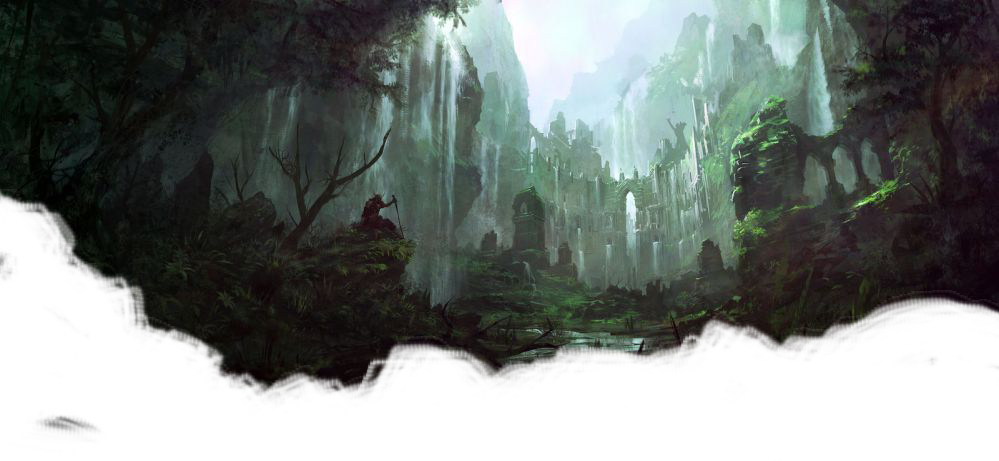
Their tall skulls are filled with minds larger than that of Men, Mer, and the other beastfolk. Imga that are not taken by Dominion slavers or circus owners are often reclusive, sticking to the deep forests and southern shores of Valenwood, writing and collecting outside information in an attempt to further their understanding of the world. Their fashion is notoriously out of date by modern standards across Tamriel, often wearing silk capes and crowns.
Many people who have not met an Imga face-to-face imagine the beasts to have tails but this is a fallacy perpetuated by the Cyrodiilic fashion for keeping pet monkeys, colloquially known as ‘imga-kin’. In fact, one of the sure ways in which to identify fake Bosmer carving is to check any depictions of Imga for a tail.
The already reclusive Imga often hide during times of war, wishing to avoid contact with the outside world unless necessary, seeking to protect their knowledge so their ancestors lives weren't wasted. When they do engage in combat, they are often found wielding large tridents and light armor.
Chosen of Hermmorah
The Imga do not maintain an expansive pantheon, instead preferring the worship of Hermaeus Mora, in their tongue Hermmorah, Daedric Prince of knowledge, in combination with ancestor worship. The Imga believe that the true purpose of life is to impart knowledge onto the next generation, and that one must devote themselves to finding understanding.
Ironically, because Imga are often out of the rest of the world's view, outsiders often know very little of the Imga, and a faction of Altmer have taken to exploiting that lack of knowledge. They describe the Imga as obsessed with Altmeri culture, pointing to their love of knowledge and wearing of silk capes, an old Altmeri fashion. However, these rumors don't hold up against the scrutiny of first-hand accounts of travellers who have met the Imga.
Imga Names
The Imga have a language unknown to most Men and Mer, but is noted by its wide use of hard consonant endings. Names often consist of a single name, followed by their clan name.
Imga Names. (Male) Algot, Durnoch, Harvok, Lemmig, Marukh, (Female) Brilegg, Dula, Verroch, Yassekh, Zallen, (Clan) Bornuck, Gruznoch, Krevhett, Voldun
Imga Traits
Ability Score Increase. Your Intelligence, and Wisdom scores increase by +1.
Age. Imga Mature in their late teens, and have been observed living up to 60 years.
Alignment. Imga have been noted to tend more toward Chaotic and Neutral alignments.
Size. Imga are typically 7'-9' tall. Depending on where you fall in this range, you are either Medium or Large sized.
Speed. You have a base walking speed of 30 feet.
Languages. You can speak, read, and write Tamrielic, Altmeris, and Bosmeris
Seekers of Truth. You have proficiency in Arcana, History, and Insight.
Polearm Training. You are proficient with Polearms.
Nimble Climbers. You have a climbing speed of 30 feet.
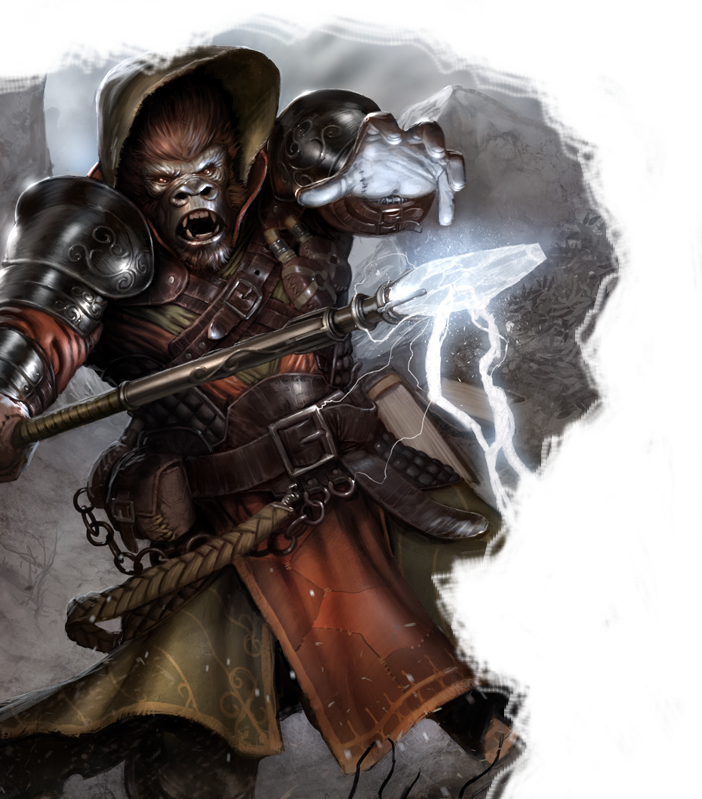
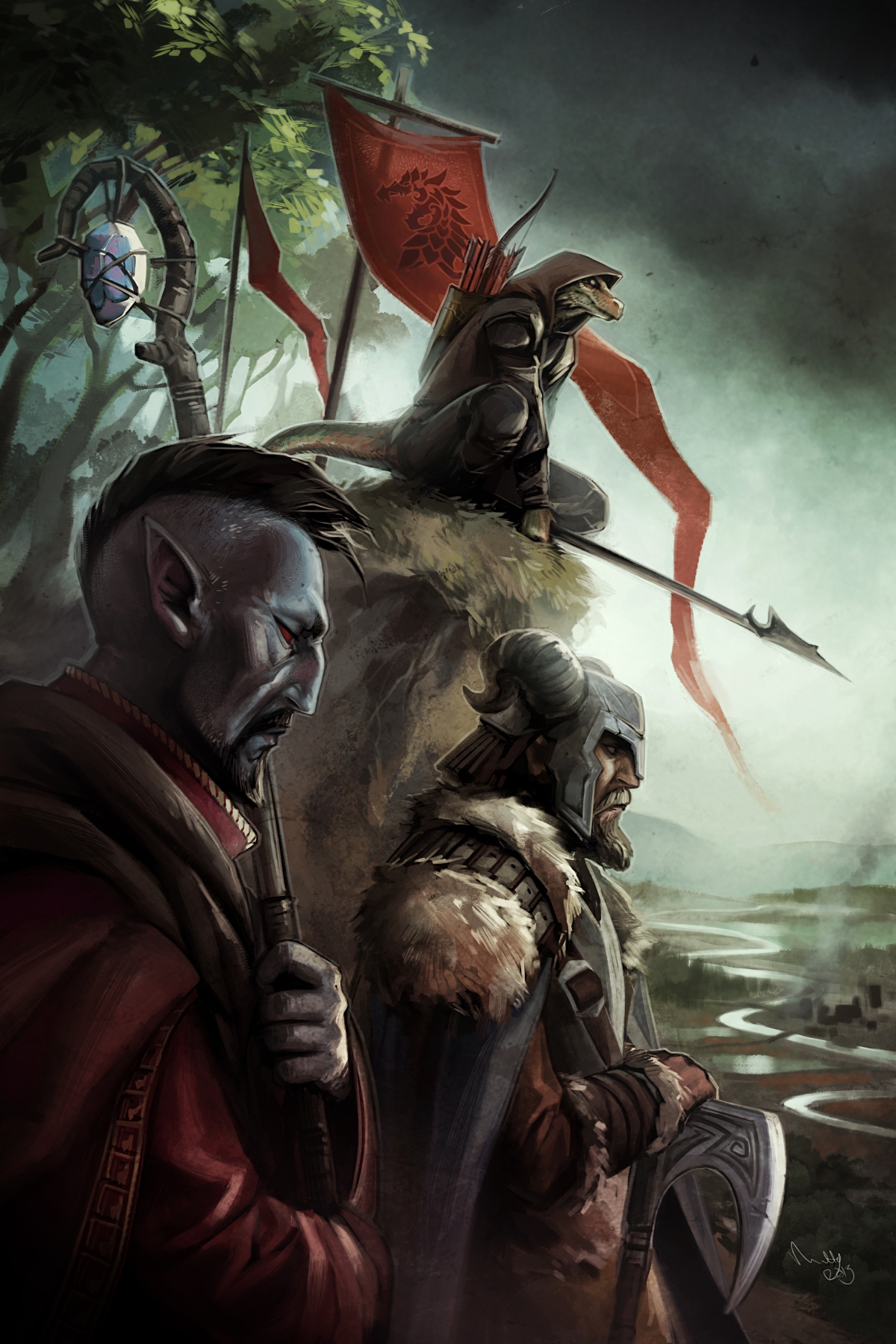
Chapter 2: Classes
Adventurers are extraordinary people, driven by a thirst for excitement into a life that others would never dare lead. They are heroes, compelled to explore the dark places of the world and take on the challenges that lesser women and men can't stand against.
Class is the primary definition of what your character can do. It's more than a profession; it's your character's calling. Class shapes the way you think about the world and interact with it and your relationship with other people and powers in Mundus and beyond. A fighter, for example, might view the world in pragmatic terms of strategy and maneuvering, and see herself as just a pawn in a much larger game. A pilgrim, by contrast, might see himself as a willing servant in the Aedra or Daedra's unfolding plans, or a conflict brewing amongst the spirits. While the fighter has contacts in a mercenary company or army, the pilgrim might know anumber of priests, knights, and other devotees of his faith.
Your class gives you a variety of special features, such as a fighter's mastery of weapons and armor, and a wizard's spells. At low levels, your class gives you only two or three features, but as you advance in level you gain more and your existing features often improve. Each class entry in this chapter includes a table, summarizing the benefits you gain at every level, and a detailed explanation of each one.
Adventurers sometimes advance in more than one class. A Conjurer might switch direction in life, and become a holy knight. A Barbarian might discover latent magical ability and dabble in the conjurer class while continuing to advance as a barbarian. Mer are known to combine martial mastery with magical training, and advance as fighters and wizards simulatneously.
Ten classes--listed in the Classes table--are found in almost every province and define the spectrum of typical adventurers.
Classes
| Class | Description | Hit Die | Primary Ability | Saving Throw Proficiencies | Armor and Weapon Proficiencies |
|---|---|---|---|---|---|
| Barbarian | A fierce warrior of primitive background who can enter a battle rage. | d12 | Strength | Strength & Constitution | Light and medium armor, shields, simple and martial weapons |
| Bard | An inspiring magician whose power can manipulate the tonal architecture of Mundus itself. | d8 | Charisma | Dexterity & Charisma | Light armor, simple weapons, hand crossbows, longswords, rapiers, shortswords |
| Conjurer | A wielder of magic derived from the Daedric planes. | d6 | Charisma | Wisdom & Charisma | Daggers, darts, slings, quarterstaffs, light crossbows |
| Fighter | A master of martial combat, skilled with a variety of weapons and armor. | d10 | Strength or Dexterity | Strength & Constitution | All armor, shields, simple and martial weapons |
| Healer | A master of restorative abilities through magic or potions to aid their allies in combat. | d8 | Wisdom | Wisdom & Charisma | Light armor, shields, simple weapons |
| Knight | A holy warrior bound to the service of multiple or a single Aedra or Daedra. | d10 | Strength & Charisma | Wisdom & Charisma | All armor, shields, simple and martial weapons |
| Mage | A magic user capable of manipulating the structures of reality. | d6 | Intelligence | Intelligence & Wisdom | Daggers, darts, slings, quarterstaffs, light crossbows |
| Monk | A master of martial arts, harnessing the power of the body in pursuit of physical and spiritual perfection. | d8 | Dexterity & Wisdom | Dexterity & Wisdom | Simple weapons, shortswords |
| Ranger | A warrior who uses martial prowess and mastery of the land to combat threats at the edge of civilization. | d10 | Dexterity | Dexterity & Strength | Light and medium armor, shields, simple and martial weapons |
| Rogue | A scoundrel who uses stealth and trickery to overcome obstacles and enemies. | d8 | Dexterity | Dexterity & Intelligence | Light armor, simple weapons, hand crossbows, longswords, rapiers, shortswords |
Barbarian
Barbarians in the Elder Scrolls universe are much like their counterparts in other D&D settings, as described in the Player's Handbook. The paths illustrated in the official sourcebooks are excellent approximations of Barbarian types you will find in every culture across Tamriel.
Racial Affinity
Barbarians can be found in every race present on Tamriel - even the snobbish Altmer. However, some races are more likely to be attracted to the Barbarian lifestyle. The Orsimer, Kahjiit, and Nords are more likely to follow a rage-feuled path; The Bosmer, Argonians, and Bretons prefer a more druid-like path; and Dunmer Barbarians double-down in their ancestor worship. Imperials and Redguards often eschew this path in favor of becoming fighters or knights, and Altmer rarely find the Barbarian lifestyle appealing, but it is not entirely unheard of.
Personal Totems
Barbarians tend to travel light, carrying little in the way of personal effects or other unnecessary gear. The few posessions they do carry ofthen include small items that have special significance. A personal totem is significant because it has a mystical origin or is tied to an important moment in the character's life -- perhaps a remembrance from the barbarian's past or a harbinger of what lies ahead.
A personal totem of this sort might be associated with a barbarian's spirit animal, ancestor, or deity. This is, of course, not always the case. One who carries with them the spirit of an ancestor, for instance, may still carry a Cliffracer's beak as a personal totem. Consider creating one or more personal totems for your character -- objects that hold a special link to your character's past or future. Think about how a totem might affect your character's actions.
Personal Totems
| d4 | Totem |
|---|---|
| 1 | A scrap of metal from Dwemer debris you found during a hunt. |
| 2 | Three Slaughterfish fangs given to you by a wise shaman, who told you they would play a role in determining your fate. |
| 3 | A necklace made from the beaks of a cliffracer you slew as a child. |
| 4 | A small leather pouch holding three stones marked with constellations. |
Primal Path Variants
The Primal Paths noted in the Player's Handbook, the Sword Coast Adventurer's Guide, and Xanathar's Guide to Everything are all workable in the Elder Scrolls setting. In addition, there are variant paths available unique to the setting.
The Path of Trinimac
Commonly made up of Altmer and Orsimer, those who follow Trinimac have trained in the arts of Adaltadoon, the signature martial art of the Summerset Isles developed by Trinimac itself as a contact sport, and Adaghartok a variation of Adaltadoon that also utilizes Alteration magic. These followers rarely organize together, preferring instead to seek out physical and mental challenges. This group is identical to the Path of the Berserker (PHB 49), with the following changes:
Adaltadoon
Replacing Mindless Rage, beginning at 6th level, you may add an additional +1 to your Rage damage bonus.
Adaghartok
Replacing Intimidating Presence, Beginning at 10th level, you may begin learning the following Alteration spells according to the Adaghartok table(See Part 7 -- Spells for Spell Levels): Burdening Touch, Feather, Oakflesh, Bouyancy, Fire Shield, Frost Barrier, Lightning Shield, Spike Growth, Burden, Heat Metal, Longstrider, Jump, Corrode, Lightning Arrow, Ondusi's Unhinging, Rope Trick, Slowfall, Spider Climb, Stone Shape, Water Walking. You know these spells as though they were martial techniques, and do not need to record them in a Spellbook.
Adaghartok
| Barbarian Level | Spells Known | 1st | 2nd | 3rd | 4th |
|---|---|---|---|---|---|
| 10th | 3 | 3 | 1 | 1 | 0 |
| 11th | 3 | 3 | 1 | 1 | 0 |
| 12th | 4 | 3 | 2 | 1 | 0 |
| 13th | 4 | 3 | 2 | 1 | 0 |
| 14th | 5 | 3 | 2 | 2 | 0 |
| 15th | 5 | 3 | 2 | 2 | 0 |
| 16th | 6 | 3 | 3 | 2 | 0 |
| 17th | 6 | 3 | 3 | 2 | 1 |
| 18th | 7 | 3 | 3 | 3 | 1 |
| 19th | 7 | 3 | 3 | 3 | 1 |
| 20th | 7 | 3 | 3 | 3 | 2 |
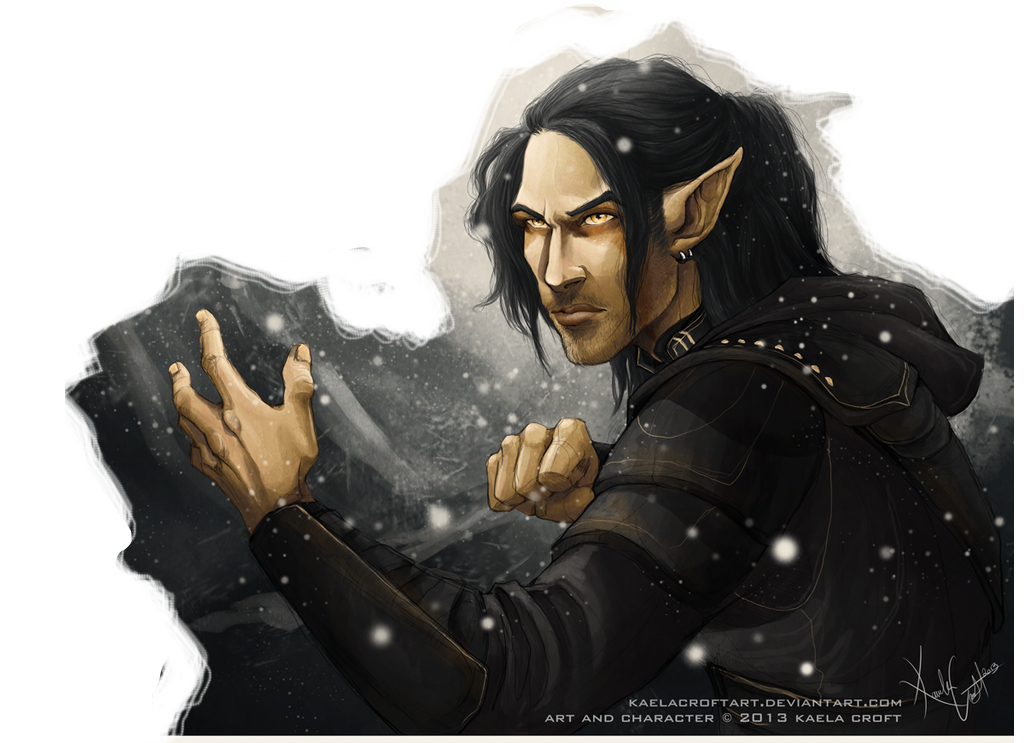
The Path of the Dragon
The Path of the Dragon is steeped in Nordic and Atmoran history. Based on a modern idealization of the ancient High King Ysmir Wulfharth, dubbed the Dragon of the North. It is as much a religion as it is a lifestyle. Barbarians who follow the Path of the Dragon specialize in wearing bulky armor, and throwing themselves into combat, striking with their body itself and giving themselves over to the fury of battle.
Restriction: Nords Only
Only Nords follow the Path of the Dragon. These barbarians fill a particular niche in Nordic society and culture.
Your DM can list this restriction to better suit the campaign. The restriction exists for The Elder Scrolls. It might not apply to your DM's setting or your DM's version of the universe.
Dragontooth Armor
When you choose this path at 3rd level, you gain the ability to use Dragontooth Armor(See the Dragontooth Armor sidebar) as a weapon.
While you are using Dragontooth Armor and are raging, you can use a bonus action to make one melee weapon attack with your armor spikes against a target within 5 feet of you. If the attack hits, the spikes deal 1d4 piercing damage. You use your Strength modifier for the attack and damage rolls.
Additionally, when you use the Attack action to grapple a creature, the target takes 3 piercing damage if your grapple check succeeds.
Dragontooth Armor
Dragontooth armor is a rare type of heavy armor made by Nords. It consists of a fur coat and leggings with steel plate for an outer layer, and razor-sharp dragon teeth adorning large pauldrons.
Cost: 75gp
AC: 14 + Dexterity modifier (max 2)
Stealth: Disadvantage
Weight: 45 lb.
Reckless Abandon
Beginning at 6th level, you gain the class feature Reckless Abandon as described in the Sword Coast Adventurer's Guide page 121
Dragon Charge
Beginning at 6th level, you gain the class feature Battlerager Charge as described in the Sword Coast Adventurer's Guide page 121
Spiked Retribution
Starting at 14th level, when a creature within 5 feet of you hits you with a melee attack, the attacker takes 3 piercing damage if you are raging, aren't incapacitated, and are wearing Dragontooth Armor.
Bard
Bards in the Elder Scrolls universe are much like their counterparts in other D&D settings, as described in the Player's Handbook. The major differences are what spells they have access to, and what colleges they may be a part of.
Bard Colleges
The way of a bard is gregarious. Bards seek each other out to swap songs and stories, boast of their accomplishments, and share their knowledge. Bards form loose associations, which they call colleges, to facilitate their gatherings and preserve their traditions.
Spellcasting
Bards may Record Illusion magic up to the 4th spell level in thier Spellbooks, and gain spell slots up to the 4th level based on that chart in the Player's Handbook.
You automatically know the cantrips Vicious Mockery and Legend Lore.
Scenarist's Guild
The Scenarist's Guild has been around as long as anyone can remember. They are renowned across Tamriel, and have a hall in every major city across the Empire, but their main hall is nestled deep in the Dragontail Mountains, and roughly aligned with the Bretons. They are roughly the same as the College of Lore (PHB 34).
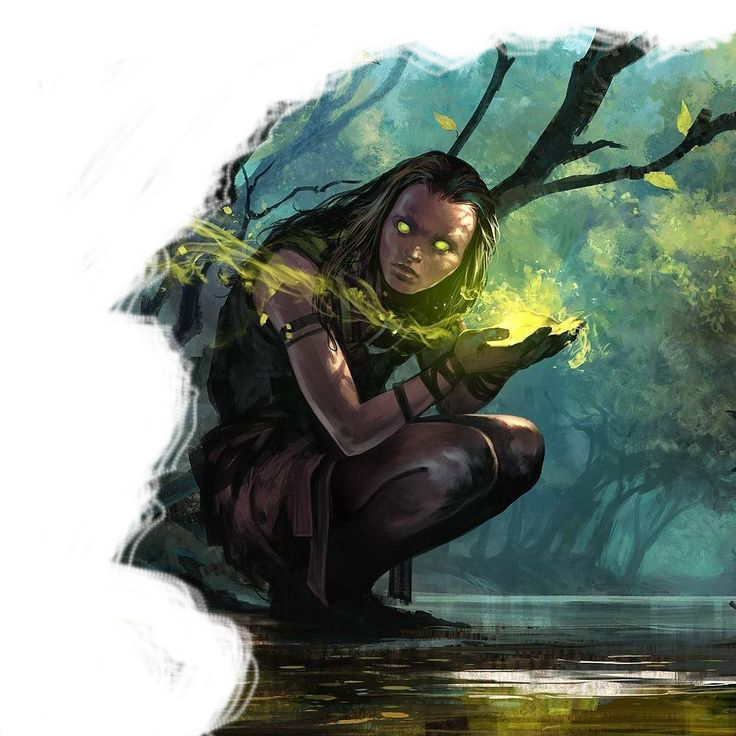
College of Solitude
Bards of the College of Solitude are well versed in the history of the Nords. They are often just as much performers as they are adventurers, often leaping into ruins to find lost artifacts and manuscripts. They are roughly the same as the College of Valor (PHB 35).
College of Y'ffre
The "College" of Y'ffre actually referse to a relatively small, lesser known group in Valenwood, made up primarily of Bosmer, but some other Mer and Beastfolk have been known to enter. They meet at random times, in random locations, and have no fixed location. They specialize in the music of the forest, and those unaware of them refer to them as druids, as their songs can affect the forests around them.
Those who enter this College are subject to certain aspects of the Green Pact, and may not harm the forests of Valenwood or shapeshift, or they will lose the powers granted by this college until they can seek the forgivness of Y'ffre. Due to their adherence to the pact, they may learn Druidcraft(See the Druidcraft Table).
Bonus Proficiencies
When you join the College of Y'ffre at 3rd level, you gain proficiency in Nature and Animal Handling.
Druidcraft
| Bard Level | Druidcraft Spells |
|---|---|
| 3rd | Commune With Nature |
| 5th | Plant Growth |
| 7th | Entangle |
| 9th | Grow Claws |
| 15th | Revivify |
| 20th | Control Weather |
Y'ffre's Shelter
Also at 3rd level, you learn how to call for the aid of the natural world. Nearby flora and fauna may come to your aid in battle, and outside of combat, within forests you may ask the trees to grow in such a way as to create a temporary shelter, lasting as many hours as your Bard level.
Land's Stride
Starting at 6th level, you have the class feature Land's Stride, asdescribed in the Player's Handbook on page 69.
Nature's Sanctuary
When you reach 14th level, you gain the class feature Nature's Sanctuary, as described in the Player's Handbook on page 69.
College of Sword Singers
Taking their name from the renowned Swordsmen of old Yokudan legends, the College of Sword Singers is based in Hammerfell. They specialize in willing illusive, smoky blades into existence, and often put on plays. While their abilities pale in comparison to ancient legends, swordsmen and bards travel across Tamriel just to see the performances put on by accomplished Sword Singers. The students of this College obsess over Yokudan lore, and any new discovery is to be celebrated. They are able to learn Spirit Magic at the levels determined by the Spirit Magic Table.
Spirit Magic
| Bard Level | Spirit Magic |
|---|---|
| 3rd | Booming Blade |
| 5th | Ethereal Knives |
| 7th | Dancing Scimitars |
| 9th | Shehai |
| 13th | Burning Blade |
| 20th | Pankratosword |
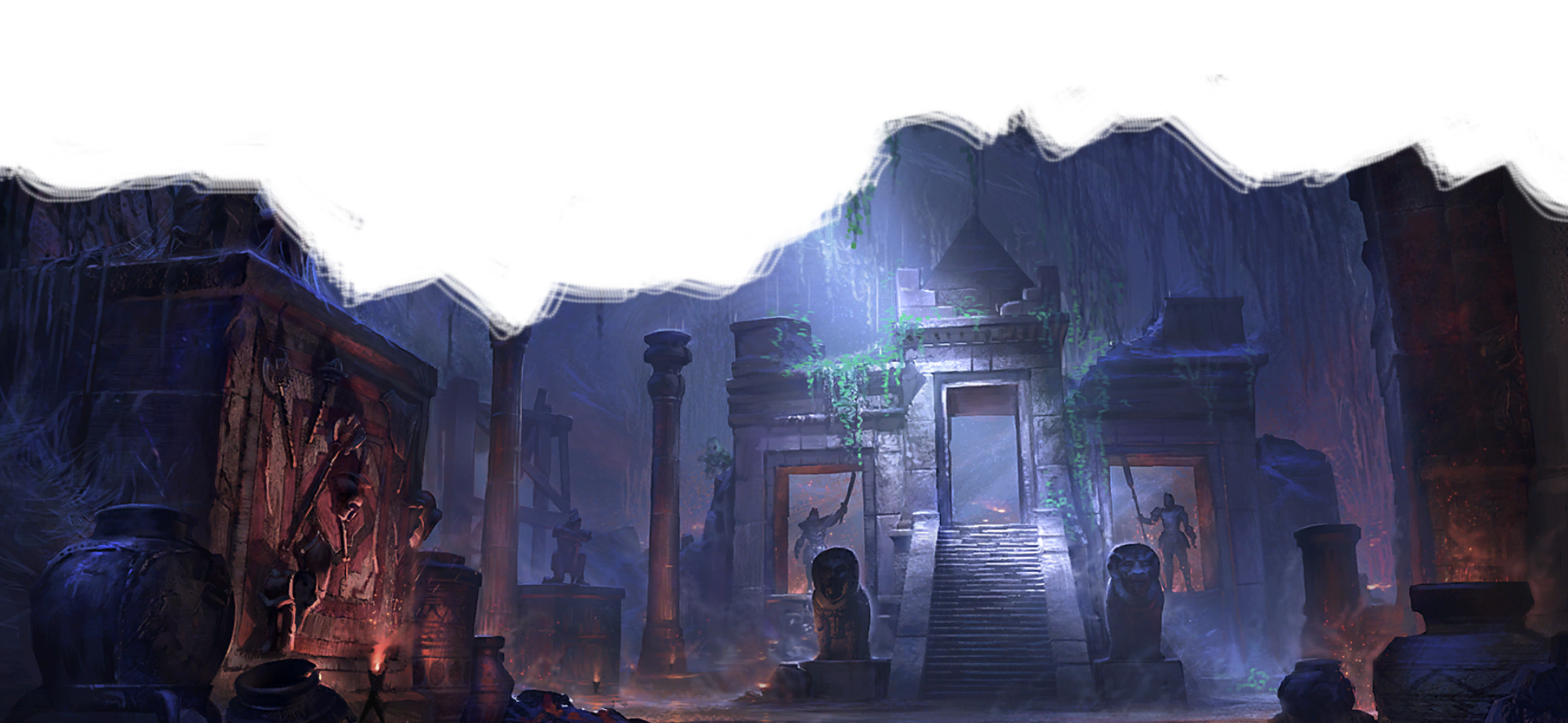
Quick Strike
Starting at 6th level, you may make a regular
attack as a bonus action in combat.
Shehai
Beginning at 9th level, can conjure an illusory
bladed weapon from your own spirit, with the same stats
as its regular counterpart. The Shehai is unique to your
spirit, and will never change form unless your spirit
somehow changes form. It will disappear after 3
minutes(See Shehai in the Bard Spells section).
Song of War
At the 14th level, during battle you may take an action
to use your blade as an instrument, striking the
air to create tones that inspire
confidence in any ally that can hear you.
You must declare an attribute and roll
1d4. Any ally that can hear your
song will have the declared stat
increased by the result for three
rounds. This will require the use
of one of your Bardic Inspiration
die.
Conjurer
In the Elder Scrolls setting, Conjurers are
analagous to a combination of Wizards and Warlocks. Practitioners of the art of Conjuration, they are the only class capable of communing with the Daedra on their own terms. Their greatest difference, however, is that they are not generally bound by a pact with a Daedric Prince. Instead, they are bound only to their wits and their ability to bargain with the forces of Oblivion. Relying on their Charisma, one wrong word or careless action can quickly bring doom to a fledgling Conjurer.
Delvers into the Unknown
A Conjurer's magic often requires either complex rituals, expensive ingredients, strong willpower, or a silver tongue. More often than not, it requires all of the above. Conjurers probe and travel the Outer Realms, planes of Oblivion not beholden to any one Daedric Prince. The thirst for knowledge that drives them can lead them to wonderful treasures, ancient secrets, but also into deadly traps or unexpected pacts.
Companions to Fiends
Conjuration magic works by reaching into Oblivion itself, and taking living beings - Daedric spirits, and shaping them to your will. Conjurers often bring forth Scamps to serve as messengers and assistants and Dremorae as bodyguards, but they also make use of spells that bind a Daedric spirit into the shape of more recognizable animals, such as horses and bears, or as weapons and armor. It is vital for a Conjurer to remain in control of their conjured Daedra, and on good terms.
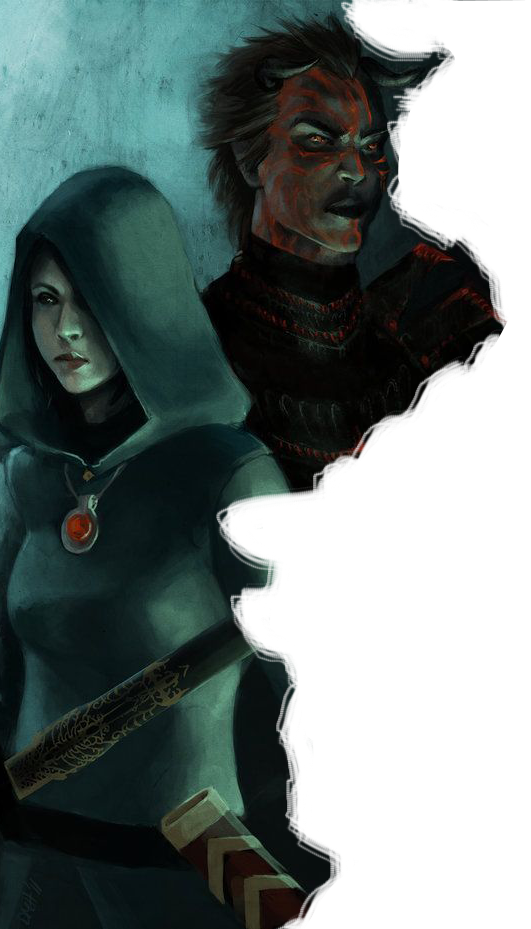
Eccentric Masters
If a Conjurer survives their chosen field long enough, they will start to see the world in a vastly different light in comparison to others. No longer bound to the average mortal's understanding of the world, Conjurers begin to
adopt the same views that immortal spirits have about the cycles of death and rebirth, the importance of magic, and the harsh struggle that is mortal life. They may consider their fellow mortals as pitiable or even expendable.
Creating a Conjurer
As you make your Conjurer character, spend some time thinking about the planes of Oblivion and the varying types of Daedra. What led you to experiment with Oblivion and its
denizens? Did you make a pact with a lesser Daedra or Daedric Prince? Perhaps you saw the power Daedra hold, and wanted that power for yourself. Maybe the convenience of summoning your own horse and armor is too good to pass up. Were you seduced into ummoning a Daedra, or did you seek out the rituals that would allow you to make contact with them. Did you learn your craft through the Mage's guild, or did you serve as an apprentice to an experienced Conjurer?
Work with your DM to determine how big a part your abilities will play into your character's adventuring career. Your experiments communing with the Daedra might drive you into adventuring, or they might consist of seeking out rare ingredients or attempting to gain favor between adventures.
What kind of relationship do you have with your summoned Daedra? Is it friendly, antagonistic, uneasy, or romantic? How important do they consider you to be? What part do you play in your summoned creature's plans (and believe me, they have plans)? Have you bound a Daedra as your familiar? Do you have connections with worshipers of any particular Daedric Princes?
Quick Build
You can make a Conjurer quickly by following these suggestions. First, Charisma should be your highest ability score, followed by Wisdom. Second, choose the Charlatan background. Third, choose the Bind Familiar cantrip, along with the 1st-level spells Bound Weapon and Summon Scamp.
The Conjurer
| Level | Proficiency Bonus | Features | Cantrips Known | 1st | 2nd | 3rd | 4th | 5th | 6th | 7th | 8th | 9th | Invocations Known |
|---|---|---|---|---|---|---|---|---|---|---|---|---|---|
| 1st | +2 | Spellcasting, Arcane Recovery | 3 | 2 | — | — | — | — | — | — | — | — | — |
| 2nd | +2 | Ancient Invocations | 3 | 3 | — | — | — | — | — | — | — | — | 2 |
| 3rd | +2 | Soul Trap | 3 | 4 | 2 | — | — | — | — | — | — | — | 2 |
| 4th | +2 | Ability Score Improvement | 4 | 4 | 3 | — | — | — | — | — | — | — | 2 |
| 5th | +3 | ─ | 4 | 4 | 3 | 2 | — | — | — | — | — | — | 3 |
| 6th | +3 | Conjuration Savant, Decaying Strike | 4 | 4 | 3 | 3 | — | — | — | — | — | — | 3 |
| 7th | +3 | ─ | 4 | 4 | 3 | 3 | 1 | — | — | — | — | — | 4 |
| 8th | +3 | Ability Score Improvement | 4 | 4 | 3 | 3 | 2 | — | — | — | — | — | 4 |
| 9th | +4 | ─ | 4 | 4 | 3 | 3 | 3 | 1 | — | — | — | — | 5 |
| 10th | +4 | Planar Jetlag | 5 | 4 | 3 | 3 | 3 | 2 | — | — | — | — | 5 |
| 11th | +4 | ─ | 5 | 4 | 3 | 3 | 3 | 2 | 1 | — | — | — | 5 |
| 12th | +4 | Ability Score Improvement | 5 | 4 | 3 | 3 | 3 | 2 | 1 | — | — | — | 6 |
| 13th | +5 | ─ | 5 | 4 | 3 | 3 | 3 | 2 | 1 | 1 | — | — | 6 |
| 14th | +5 | Daedric Bargain, Hurl Through Oblivion | 5 | 4 | 3 | 3 | 3 | 2 | 1 | 1 | — | — | 6 |
| 15th | +5 | ─ | 5 | 4 | 3 | 3 | 3 | 2 | 1 | 1 | 1 | — | 7 |
| 16th | +5 | Ability Score Improvement | 5 | 4 | 3 | 3 | 3 | 2 | 1 | 1 | 1 | — | 7 |
| 17th | +6 | ─ | 5 | 4 | 3 | 3 | 3 | 2 | 1 | 1 | 1 | 1 | 7 |
| 18th | +6 | Pocket Realm | 5 | 4 | 3 | 3 | 3 | 2 | 1 | 1 | 1 | 1 | 8 |
| 19th | +6 | Ability Score Improvement | 5 | 4 | 3 | 3 | 3 | 2 | 1 | 1 | 1 | 1 | 8 |
| 20th | +6 | ─ | 5 | 4 | 3 | 3 | 3 | 2 | 1 | 1 | 1 | 1 | 8 |
Class Features
As a Conjurer, you gain the following class features
Hit Points
- Hit Dice: 1d6 per Conjurer level
- Hit Points at 1st Level: 6 + your Constitution modifier
- Hit Points at Higher Levels: 1d6 (or 4) + your Constitution modifier per Conjurer level after 1st
Proficiencies
- Armor: Light armor
- Weapons: Simple weapons
- Tools: None
- Saving Throws: Wisdom, Charisma
- Skills: Choose two from Arcana, Deception, History, Intimidation, Investigation, Nature, and Religion
Equipment
You start with the following equipment, in addition to the equipment granted by your background:
- (a) a light crossbow and 20 bolts or (b) any simple weapon
- (a) a component pouch or (b) an arcane focus
- (a) a scholar's pack or (b) a dungeoneer's pack
- (a) Leather armor, any simple weapon, and two daggers.
Spellcasting
As a student of arcane magic, you have a spellbook containing spells that show the first glimmerings of your true power. See chapter 7 for the general rules of spellcasting and chapter 8 for the Conjuration spell list.
Cantrips
At 1st level, you know three cantrips of your choice from the Conjuration spell list. You learn additional Conjuration cantrips of your choice at higher levels, as shown in the Cantrips Known column of the Conjurer table.
Spellbook
At 1st level, you have a spellbook containing four 1st-level Conjuration spells of your choice, and two 1st-level spells from the schools of Destruction or Mysticism of your choice. Your spellbook is the repository of the spells you know, except your cantrips, which are fixed in your mind.
Preparing and Casting Spells
The Conjurer table shows how many spell slots you have to cast your spells of 1st level and higher. To cast one of these spells, you must expend a slot of the spell's level or higher. You regain all expended spell slots when you finish a long rest.
You prepare the list of spells that are available for you to cast. To do so, choose a number of spells from your spellbook equal to your Intelligence modifier + your Conjurer level (minimum of one spell). The spells must be of a level for which you have spell slots.
You can change your list of prepared spells when you finish a long rest. Preparing a new list of spells requires time spent studying your spellbook and memorizing the incantations and gestures you must make to cast the spell: at least 1 minute per spell level for each spell on your list.
Spellcasting Focus
You can use an arcane focus as a spellcasting focus for your spells.
Learning Spells of 1st-Level and Higher
Each time you gain a Conjurer level, you can add two spells of your choice from the school of Conjuration to your spellbook for free. Each of these spells must be of a level for which you have spell slots, as shown on the Conjurer table. On your adventures, you might find other spells that you can add to your spellbook.
At levels 6, 11, and 15, you may instead add one Conjuration spell up to your highest level spell slot and one spell from the schools of Alteration, Destruction, or Mysticism of up to the 4th spell level.
Arcane Recovery
You have learned to regain some of your magical energy by studying your spellbook. Once per day when you finish a short rest, you can choose expended spell slots to recover. The spell slots can have a combined level that is equal to or less than half your Conjurer level (rounded up), and none of the slots can be 6th level or higher.
Banish
Up to three times per short or long rest, You attempt to send a conjured creature back to its plane of Oblivion. The target must succeed on a Charisma saving throw or be banished. If you are currently on a plane of Oblivion, you cannot utilize this spell on creatures native to this plane.
If the Banishment is successful, the target is banished with a faint popping noise, returning to its home plane. If the spell ends before 1 minute has passed, the target reappears in the space it left or in the nearest unoccupied space if that space is occupied. Otherwise, the target doesn't return.
Ability Score Improvement
When you reach 4th level, and again at 8th, 12th, 16th, and 19th level, you can increase one ability score of your choice by 2, or you can increase two ability scores of your choice by 1. As normal, you can't increase an ability score above 20 using this feature.
Ancient Invocations
In your study of occult lore, you have unearthed ancient Invocations, fragments of forbidden knowledge that imbue you with an abiding magical ability.
At 2nd level, you gain two Ancient Invocations of your choice. Your Invocation options are detailed on the Invocations table. When you gain certain Conjurer levels, you gain additional invocations of your choice, as shown in the Invocations Known column of the Conjurer table.
Additionally, when you gain a level in this class, you can choose one of the invocations you know and replace it with another invocation that you could learn at that level.
Details of the various invocations can be found in the Player's Handbook pages 110-111, and Xanathar's Guide to Everything pages 56-57. Any modifications to these will be noted at the end of the class description.
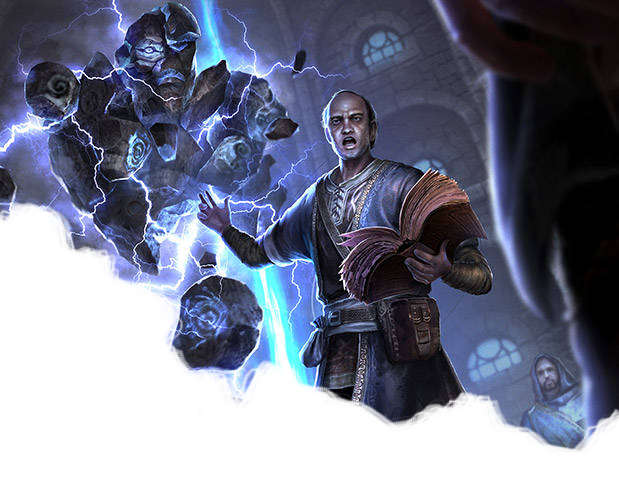
Soul Trap
At 3rd level, you automatically learn to cast Soul Trap as a 2nd-level Conjuration spell.
Conjuration Savant
Decaying Strike
Also at 6th level, When you hit with a Bound weapon, the target creature takes extra necrotic damage equal to your Charisma modifier (minimum of 1).
Invocations
| Prerequisite | Invocation |
|---|---|
| — | Armor of Shadows |
| — | Beguiling Influence |
| — | Devil's Sight |
| — | Eldritch Sight |
| — | Eyes of the Rune Keeper |
| — | Gaze of Two Minds |
| — | Mask of Many Faces |
| A Bound Familiar | Voice of the Master |
| 5th Conjurer Level | One With Shadows |
| 5th Conjurer Level | Cloak of Flies |
| 5th Conjurer Level | Tomb of Levistus |
| 5th Conjurer Level | Gift of the Depths |
| 7th Conjurer Level | Ghostly Gaze |
| 9th Conjurer Level | Ascendant Step |
| 9th Conjurer Level | Otherworldly Leap |
| 15th Conjurer Level | Witch Sight |
Planar Jetlag
Starting at 10th level, you no longer need to sleep and can't be forced to sleep by any means. To gain the benefits of a long rest, you can spend all 8 hours doing light activity, such as reading and keeping watch.
Daedric Bargain
Hurl Through Oblivion
Starting at 14th level, once per long rest, when you hit a creature with an attack, you can use this feature to instantly transport the target through the Daedric planes. The creature disappears and hurtles through Oblivion,
At the end of your next turn, the target returns to the space it previously occupied, or the nearest unoccupied space. If the target is not a Daedra, it takes 10d10 psychic damage as it reels from the horrific experience.
Pocket Realm
At 18th level, you gain the ability to construct your own island within the planes Oblivion, up to 300 feet in diameter. You can create the island in any form -- a peaceful grassy island, a desert, a hellscape, even a castle, as long as it does not exceed 300 feet in any direction. You may teleport yourself and up to 4 others to it and back once per long rest. To create this island, you will need to spend 3 months using your magical energies. During this period you will be unable to cast spells, and your spell slots will become empty. You will not be able to regain your spell slots until a week has passed.
Arcane Invocations
Otherworldly Leap
Prerequisite: 9th level
You can cast Tinur's Hoptoad on yourself at will, without expending a spell slot or material components.
Voice of the Master
Prerequisite: Bound Familiar
This invocation is identical to Voice of the Chain Master, as described in the Player's Handbook page 111.
Fighter
Fighters in the Elder Scrolls universe are much like their counterparts in other D&D settings, as described in the Player's Handbook. The majority of martial archetypes described in the various sourcebooks remain compatible, with the exception of the Eldritch Knight, which is replaced here by the Spellsword.
Martial Archetypes
Different fighters choose different approaches to perfecting their fighting prowess. The martial archetype you choose to emulate reflects your approach.
Spellsword
The archetypical Spellsword combines the martial mastery common to all fighters with a careful study of magic. Spellswords use magical techniques similar to those practiced by mages. They focus their study on two of the six schools of magic: Alteration and Destruction. Alteration spells grant Spellswords an unpredictability in battle, providing the ability to augment their traits and the traits of their enemies or surroundings, and Destruction spells deal damage to many foes at once, extending the fighter's reach in combat. These fighters learn a camparatively small number of spells, committing them to memory instead of keeping them in a spellbook.
Spellcasting
When you reach 3rd level, you augment your martial prowess with the ability to cast spells. See Chapter 8 for the list of spells.
Cantrips. You learn two cantrips of your choice from the Alteration and Destruction spell lists. You learn an additional cantrip of your choice from one of those two schools at 10th level.
Spell Slots. The Spellsword Spellcasting table shows how many spell slots you have to cast your spells of 1st level and higher.
Spells Recorded of 1st-Level and Higher. You record three 1st-level spells of your choice in your spellbook, two of which must be from the schools of Alteration or Destruction.
The Spells Recorded column of the Spellsword Spellcasting table shows when you may add more spells of 1st level and higher by leveling up. Each of these spells must be an Alteration or Destruction spell of your choice, and must be of a level for which you have spell slots. For instance, when you reach 7th level in this class, you can learn one new spell of 1st or 2nd level.
The Spells you record at 8th, 14th, and 20th level can also come from Illusion, Mysticism, or Restoration.
Whenever you gain a level in this class, you can replace one of the spells you've recorded with another spell of your choice from the Alteration and Destruction spell list, unless you're replacing the spell you gained at 3rd(non Alteration/Destruction), 8th, 14th, or 20th level, in which case you may replace it with a spell from any non-class Spell School. It must be a spell of a slot level you have access to.
| Fighter Level | Cantrips Known | Spells Recorded | 1st | 2nd | 3rd | 4th |
|---|---|---|---|---|---|---|
| 3rd | 2 | 3 | 2 | 0 | 0 | 0 |
| 4th | 2 | 4 | 3 | 0 | 0 | 0 |
| 7th | 2 | 5 | 4 | 2 | 0 | 0 |
| 8th | 2 | 6 | 4 | 2 | 0 | 0 |
| 10th | 3 | 7 | 4 | 3 | 0 | 0 |
| 11th | 3 | 8 | 4 | 3 | 0 | 0 |
| 13th | 3 | 9 | 4 | 3 | 2 | 0 |
| 14th | 3 | 10 | 4 | 3 | 2 | 0 |
| 16th | 3 | 11 | 4 | 3 | 3 | 0 |
| 19th | 3 | 12 | 4 | 3 | 3 | 1 |
| 20th | 3 | 13 | 4 | 3 | 3 | 1 |
Spellsword Feats
Spellswords have identical feats to Eldritch Knights, besides the modifications to spellcasting. See Player's Handbook page 75.
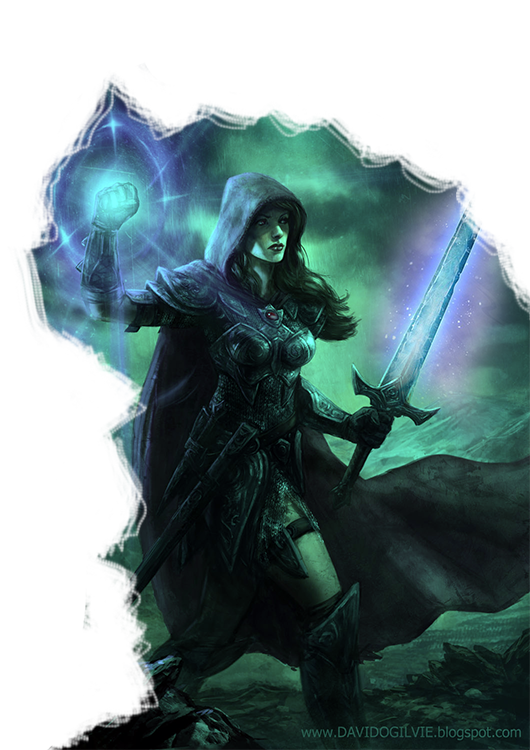
Healer
A Dunmer stands tall at his workstation, crushing herbs together slowly into a fine dust. As he adds liquid to the powder, it froths and churns, simultaneously boiling and simmering until finally, it settles. He pours the deep blue mixture into a clear bottle, and places it on his shelf, ready at last to open his apothecary.
A robed Argonian approaches injured Imperial soldiers. His scaled hands raised, he pushes the air in front of them, a white light emanates from him as the solder's wounds heal.
Goblins back a Breton into the end of an alley. She reaches for a tube attached to his belt. She raises her hands, ready to throw the bubbling red mixture. They shriek as it leaps toward them, shattering in the middle of the group, and engulfing them in flames.
An Oath toward Restoration
Fighters of poison and illness, Healers rely on Alchemy and the school of Restoration to protect those around them. Some focus their attention toward magic, directing the flow of aetherial energy into a friend's wounds, or surrounding themselves in an ethereal shield.
Others prefer to sit down with equipment and ingredients, churning flowers, fat, eggs, and other scavenged items into dust or potions, and in some cases, poisons.
As a whole, Healers regularly practice the magic arts of Restoration, Alteration, and Alchemy. They may learn spells up to slot level 4 in Restoration and Alteration.
In Service to the Sick
Healers, particularly those who prefer to work with magic, are often priests or other religious authorities in their locale. In the Empire, this often amounts to acting in service to one of the 8 Divines. Ashlander healers will usually work their magic in the name of certain Daedric Princes.
Alchemists in some regions, like the Black Marsh, do their work in service to the Hist, however in the regions of Man, they often work toward knowledge of the Arcane arts, under the patronage of the Mage's Guild, rather than the temple.
Creating a Healer
As you create a Healer, the most important question to consider is what drives your character to protect others, what are your character's core principles? Does your Alchemy-leaning Healer approve of the use of Daedric ingredients? Do they want to create poisons to help weaken their enemies, or potions to heal their allies? Does your Restorative healer wish to see people's wounds heal, or do they wish to boost their allies abilities?
Quick Build
You can make your Healer quickly by following these suggestions. First, Wisdom should be your highest ability score, followed by Constitution. Dexterity can be an important trait as well if you follow the Alchemist path. The Mage's Charges may be considered good choices for Birthsigns for a Healer, particularly the Apprentice or the Ritual.
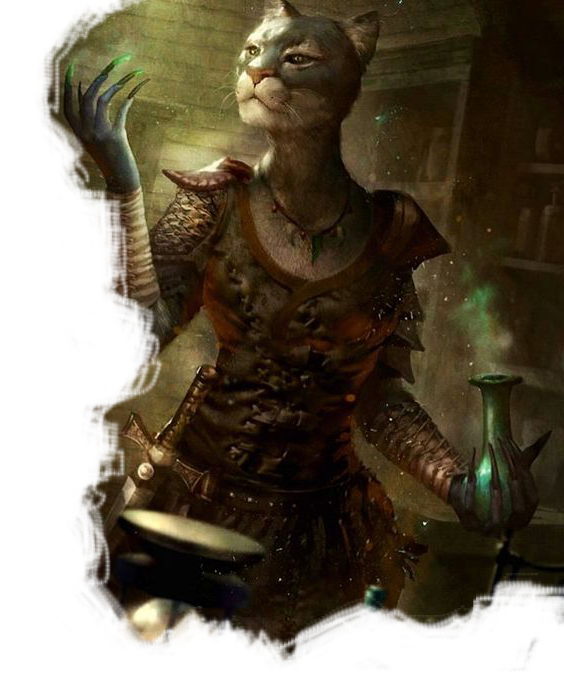
Class Features
As a Healer, you gain the following class features.
Hit Points
Hit Dice: 1d8 per Healer level
Hit Points at 1st Level: 8 + your Constitution Modifier
Hit Points at Higher Levels: 1d8 (or 5) + your Constitution modifier per Healer level after 1st.
Proficiencies
Armor: Light armor, Shields
Weapons: Simple weapons
Saving Throws: Wisdom, Intelligence
Skills: Choose two from Medicine, Nature, Arcana, and Slight of Hand
Equipment
You start with the following equipment, in addition to the equipment granted by your background:
- (a) a club or (b) a light hammer
- Leather armor
- (a) a light crossbow and 20 bolts or (b) any simple weapon
- (a) a priest's pack or (b) an explorer's pack
- A shield and an Alchemist's supply kit
The Healer
| Level | Proficiency Bonus | Features | Cantrips Known | Spells Recorded | 1st | 2nd | 3rd | 4th | 5th | 6th | 7th | 8th | 9th |
|---|---|---|---|---|---|---|---|---|---|---|---|---|---|
| 1st | +2 | Spellcasting | 3 | 3 | 2 | — | — | — | — | — | — | — | — |
| 2nd | +2 | Channel Aura | 3 | 4 | 2 | — | — | — | — | — | — | — | — |
| 3rd | +2 | Healing Specialty | 3 | 4 | 3 | 2 | — | — | — | — | — | — | — |
| 4th | +2 | Ability Score Improvement | 4 | 4 | 4 | 2 | — | — | — | — | — | — | — |
| 5th | +3 | — | 4 | 5 | 4 | 3 | — | — | — | — | — | — | — |
| 6th | +3 | Ability Score Improvement, Healing Specialty Feature | 4 | 5 | 4 | 3 | 1 | — | — | — | — | — | — |
| 7th | +3 | Channel Aura(2/rest), Destroy Undead(CR 1/2) | 4 | 5 | 4 | 3 | 3 | — | — | — | — | — | — |
| 8th | +3 | Ability Score Improvement | 4 | 5 | 4 | 3 | 3 | 2 | — | — | — | — | — |
| 9th | +4 | Healing Specialty Feature | 4 | 6 | 4 | 3 | 3 | 3 | 1 | — | — | — | — |
| 10th | +4 | Destroy Undead(CR 1) | 5 | 7 | 4 | 3 | 3 | 3 | 2 | — | — | — | — |
| 11th | +4 | Healing Specialty Feature | 5 | 7 | 4 | 3 | 3 | 3 | 3 | 1 | — | — | — |
| 12th | +4 | Ability Score Improvement, Destroy Undead(CR 2) | 5 | 8 | 4 | 3 | 3 | 3 | 3 | 2 | 1 | — | — |
| 13th | +5 | ─ | 5 | 9 | 4 | 3 | 3 | 3 | 3 | 2 | 1 | — | — |
| 14th | +5 | Ability Score Improvement, Healing Specialty Feature | 5 | 9 | 4 | 3 | 3 | 3 | 3 | 2 | 1 | — | — |
| 15th | +5 | Destroy Undead(CR 3) | 5 | 10 | 4 | 3 | 3 | 3 | 3 | 2 | 2 | — | — |
| 16th | +5 | Ability Score Improvement | 5 | 11 | 4 | 3 | 3 | 3 | 3 | 2 | 2 | — | — |
| 17th | +6 | Healing Specialty Feature, Destroy Undead(CR 4) | 5 | 12 | 4 | 3 | 3 | 3 | 3 | 2 | 2 | 1 | — |
| 18th | +6 | Channel(3/level) | 5 | 12 | 4 | 3 | 3 | 3 | 3 | 2 | 2 | 1 | 1 |
| 19th | +6 | Ability Score Improvement | 5 | 13 | 4 | 3 | 3 | 3 | 3 | 2 | 2 | 1 | 1 |
| 20th | +6 | ─ | 5 | 13 | 4 | 3 | 3 | 3 | 3 | 2 | 2 | 1 | 1 |
Spellcasting
As a Healer, you can learn Restoration, Alteration, and Healer-specific spells up to Spell slot level 4. See Chapter 7 for the general rules of spellcasting, and chapter 8 for the requisite spell lists.
Cantrips
At 1st level, you know up to three cantrips of your choice from the Restoration and Healer-specific spell lists, and up to one cantrip from the Alteration spell list, with a total of 3 cantrips. You learn additional cantrips of your choice at higher levels, as shown in the Cantrips Known column of the Healer table.
Spellbook
At 1st level, you have a spellbook containing three 1st-level spells of your choice. Your spellbook is the repository of the spells you know, except your cantrips, which are fixed in your mind.
Preparing and Casting Spells
The Healer table shows how many spell slots you have. The table also shows what the level of those slots is. To cast one of your spells of 1st level of higher, you must expend a spell slot.
You regain all expended spell slots when you finish a short or long rest.
You prepare the list of spells that are available for you to cast. To do so, choose a number of spells from your spellbook equal to your Wisdom modifier + your Healer level(minimum of one spell). The spells must be of a level for which you have spell slots.
For example, if you're a 3rd-level Healer, you have three 1st-level and two 2nd-level spell slots. With a wisdom of 16, your list of prepared spells can include five spells of 1st or 2nd level, in any combination, chosen from your spellbook. If you prepare the 1st-level spell Hearth Heal, you can cast it using a 1st-level or a 2nd-level slot. Casting the spell doesn't remove it from your list of prepared spells.
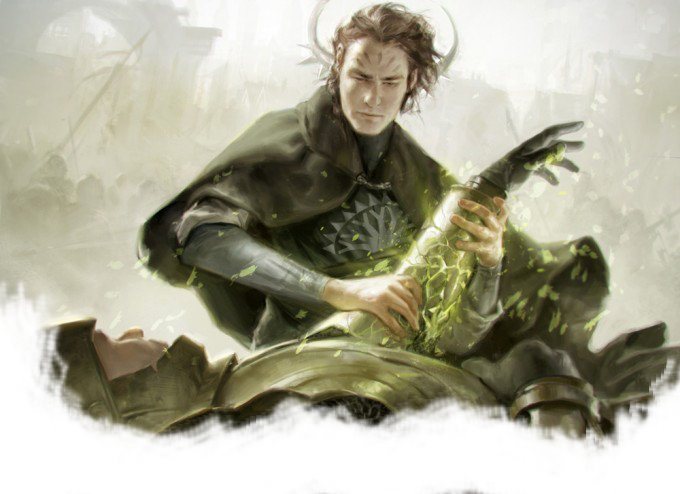
Your Spellbook
The spells that you add to your spellbook as you gain levels reflect the arcane research you conduct on your own, as well as intellectual breakthroughs you have had about the nature of the world. You might find other spells during your adventures. You could discover a spell recorded on a scroll in an evil wizard's chest, for example, or in a dusty tome in an ancient library. See the "Your Spellbook" sidebar in the Player's Handbook page 114 for more detail.
You can change your list of prepared spells when you finish a long rest. Preparing a new list of spells requires time spent studying your spellbook and memorizing the incantations and gestures you must make to cast the spell: at least 1 minute per spell level for each spell on your list.
Spells Recorded of 1st Level and Higher
At 1st level, you record 1 Restoration spell and 2 other spells of your choice from Restoration and Alteration. The Spells Recorded column of the Healer table shows when you record more healer spells of your choice of 1st level and higher. A spell you choose must be of a level no higher than your highest Spell Slot level. Once you reach 9th level, for example, you record a new spell which can be 1st, 2nd, 3rd, 4th, or 5th level. Healers can learn Restoration and Alteration spells.
Ritual Casting
You can cast a spell as a ritual if that spell has the ritual tag and you have the spell in your spellbook. You don't need to have that spell prepared.
Channel Aura
At 2nd level, you gain the ability to channel Magicka from the area around you for up to 1 minute to fuel magical effects. You start with one such effect: Turn Undead. Healing Specialties will provide their own Auras as you advance in levels, as noted by the specialty description.
When you use your Aura, you choose which effect to create. You must then finish a short or long rest to use your Aura again.
Some Aura effects require saving throws. When you use such an effect from this class, the DC equals your Healer spell save DC.
Beginning at 7th level, you can use your Aura twice between rest, and beginning at 18th level you can use it three times between rests. When you finish a short or long rest, you regain your expended uses.
Channel Aura: Turn Undead
While concentrating, you evoke healing energy that can cause undead being to run away. Each undead within 30 feet of you must make a Wisdom saving throw. If the creature fails its saving throw, it is turned for as long as you are concentrating or until it takes any damage.
A turned creature must spend its turns trying to move as far away from you as it can, and it can't willingly move to a space within 30 feet of you. It also can't take reactions. For its action, it can only use the Dash action or try to escape from an effect that prevents it from moving. If there's nowhere to move, the creature can use the Dodge action.
Ability Score Improvement
When you reach 4th level, and again at 6th, 8th, 12th, 14th, 16th, and 19th level, you can increase one ability score of your choice by 2, or you can increase two ability scores of your choice by 1. As normal, you can't increase an ability score above 20 using this feature.
Destroy Undead
Starting at 7th level, when an undead fails its saving throw against your Turn Undead feature, the creature is instantly destroyed if its challenge rating is at or below a certain threshold, as shown in the Destroy Undead table.
| Healer Level | Destroys Undead of CR... |
|---|---|
| 7th | 1/2 or lower |
| 10th | 1 or lower |
| 12th | 2 or lower |
| 15th | 3 or lower |
| 17th | 4 or lower |
Healing Specialties
At 3rd level, you may pick a specialty to focus on in the healing arts, taking the path of Alchemy will provide you with the ability to create advanced potions and poisons more easily, and abilities to better make use of them; becoming a Restoration Mage will provide you with a further selection of spells to protect and strengthen your allies. Whichever path you choose, you will be instrumental in keeping yourself and your allies alive.
Restoration Mage
As a Restoration Mage, you will specialize in the use of Restoration magic. As you level up, you will unlock spell slots above the 4th level according to the Healer Class table. Above the 4th spell level, you may only learn Restoration magic.
Restorative Adept
At 3rd level, upon choosing the path of a Restoration Mage, you gain the abilities described under Disciple of Life, in the Player's Handbook page 60.
Channel Aura: Preservation
Starting at 6th level, you can project an aura to protect others.
While concentrating, you evoke healing energy that can prevent damage up to five times your Healer level. Choose any creatures within 30 feet of you. As long as they remain in range, the healing energy will act as temp HP shared with each creature affected. You can't use this feature on an undead or a construct. The aura will not affect you.
Aetherial Emissions
Beginning at 9th level, you gain the abilities described under Blessed Healer, in the Players' Handbook page 60.
Infused Strike
At 11th level, you gain the ability to infuse your weapon strikes with healing Magic. Once on each of your turns when you hit a creature with a weapon attack, you can choose to heal instead of harm the target. The target will then be healed based on your attack roll.
Using this on an undead creature will instead cause the attack to deal an extra 1d8 radiant damage to the target. When you reach 14th level, the extra damage increases to 2d8.
Channel Aura: Healing
Beginning at 14th level, you can project an aura to heal the badly injured.
While concentrating, you evoke healing energy that can restore a number of hit points equal to five times your Healer level. Choose any creatures within 30 feet of you, and divide those hit points among them. This feature can restore a creature to no more than half of its hit point maximum. You can't use this feature on an undead or a construct. The aura will not affect you.
Restoration Mastery
Starting at 17th level, you gain the abilities described under Supreme Healing, in the Player's Handbook page 60.
Alchemist
As an Alchemist, you will specialize in potioncraft, capable of brewing high quality potions and poisons to sell, trade, or use on your journeys. These can end up having creative uses, and an appendix of potions and ingredients can be found near the end of this book. You will be unable to cast Magic above the 4th spell level without branching into a different class that is otherwise able, though you will still be able to learn new spells per the Healer Class table.
Alchemist's Satchel
At 3rd level, upon choosing the path of an alchemist, you create a satchel capable of safely holding up to three potions or poisons ready for quick use, allowing them to be used as a bonus action in combat. If you lose this satchel, you'll need to spend an hour to craft a new one, with the necessary supplies costing no more than 1GP.
Apprentice's Experience
At 3rd level, you also gain proficiency in the use of Alchemist's Supplies.
Gaseuous Brew
Beginning at 6th level, you can create gaseous brews. Gaseous brews are potions/poisons you can throw at any location. Unless caught, upon impact the containers will shatter, releasing the contents of the brew. If the brew shatters on a creature, the creature will take 1d4 piercing damage, in addition to any effects infused into the brew.
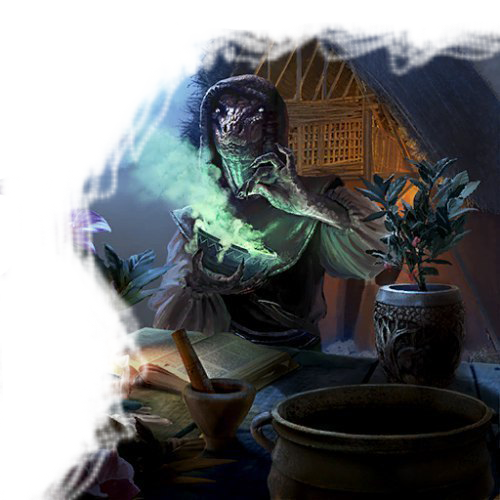
When creating a brew, you must have a potion or poison and a set of alchemist's supplies. Using the supplies and the potion/poison, one of the following will happen:
Critical Fail. This is up to the DM. Most likely, the brew evaporates completely, leaving you with nothing.
Fails the DC check. The potions effects are rendered inert, giving you a simple Smoke Bomb.
Succeeds the DC check. The potions effects are infused into a smoke bomb. When released, the potions effects will affect anyone who travels through the gas.
Critical Success. This is up to the DM. Most likely, the potions effects are amplified, and infused into a smoke bomb.
Channel Aura: Amplification
Starting at 9th level, you can project an aura that amplifies the effects of potions.
While concentrating, you evoke energy that seeps into potions, poisons, and brews within 30 feet. The effects of these concoctions will be doubled as long as the aura is active.
Satchel Pockets
Also at 9th level, your Alchemist's Satchel now has an additional 3 pockets, allowing you to carry 6 potions ready for quick use. The crafting requirements remain the same.
Volatile Brew
At 11th level, you can create volatile brews. Volatile brews are, like gaseous brews, potions/poisons you can throw at any location. Unless caught, the containers will shatter on impact, and the contents will explode, dealing damage equal to 7d6 damage with a type based on the potion/poison to anyone within 20 feet of the explosion, and 1d4 piercing damage to anyone within 10 feet of the explosion. The brew damage increases by 1d6 when you reach certain levels in this class: 16th level(8d6), 18th level(9d6), 20th level(10d6).
Damage Types. The damage type of the brew is affected by the type of potion or poison the brew is created from. Non-damaging potions and poisons will cause acid damage. Healing potions will not heal any creatures within the explosion, though buffs will transfer from the explosion to anyone caught within. Poisons or potions that cause a condition will dead acid damage and the condition, as well.
When creating a brew, you must have a potion or poison and a set of alchemist's supplies. Using the supplies and the potion/poison, one of the following will happen:
Critical Fail. This is up to the DM.
Fails the DC check. The potion/poison is ruined. It will not explode or provide smoke. and if ingested it will dead 1d4 acid damage.
Succeeds the DC check. The potion/poison's effects are infused into a volatile mixture.
Critical Success. This is up to the DM.
Magic Item Analysis
Beginning at 14th level, your experience in identifying alchemical properties has begun to transfer into identiying enchantments. If you do not already know it, you may cast Detect Magic and Identify. Regardless of whether you already know them or not, you may cast them as rituals, and do not need to provide a material component when casting Identify with this feature.
Channel Aura: Master's Expertise
Also at 14th level, you can project an aura that temporarily transfers your alchemic proficiencies to others.
While concentrating, you evoke energy that moves from your mind to other creatures within 30 feet. The chosen creatures will gain the proficiencies you have received from this class as long as the aura is active.
Battle Brewing
At 17th level, in combat, you may take an action to transform a potion/poison into a Gaseous or Volatile brew, or to create a potion. You will have neither advantage nor disadvantage on creating your concoction, but it will be ready for use on your next turn.
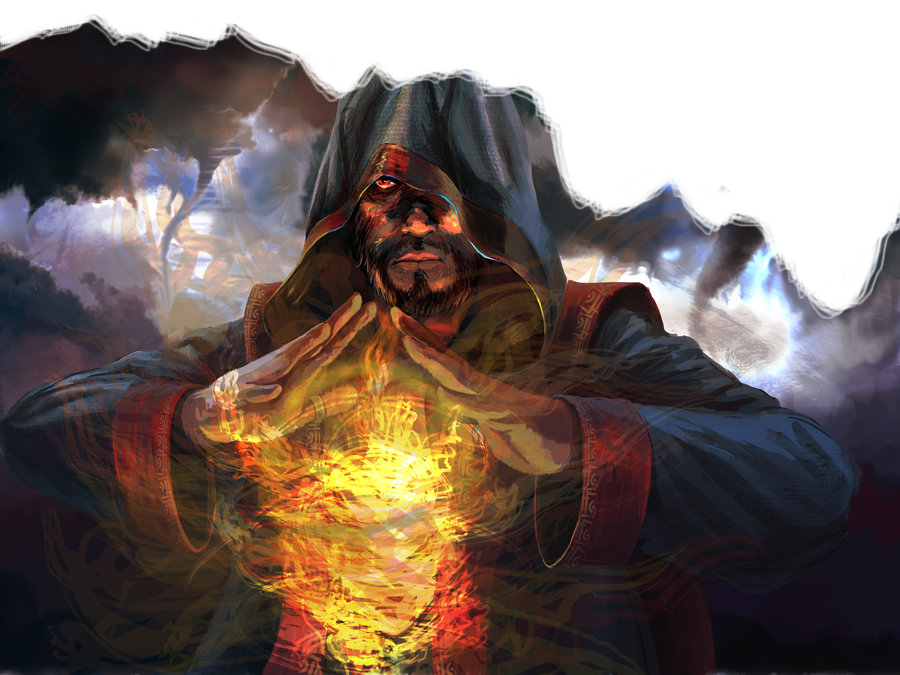
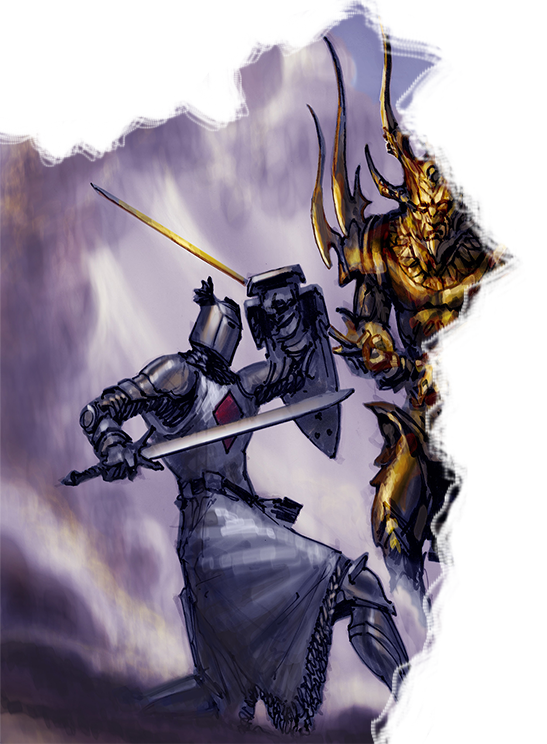
Knight
Knights are analagous to Paladins in other D&D settings. Often their oaths are to an independant state, or to the Aedra. Those who take an oath of vengeance often consort with the Daedric princes, but the rare few Knights who gain power from more personal oaths do exist in the Elder Scrolls universe.
Righteous Defenders
A Knight swears to uphold the laws and traditions of whatever they are loyal to. Their Kingdom, their city, their patron deity, even their family. To that end, they will hunt anything that dares to threaten what it is they hold dead, wherever it lurks. Different Knights focus on various aspects of the cause of righteousness, but all are bound by the oaths that grant them power to do their sacred work. Although many Knights are devoted to the Aedra, a Knight's
power comes just as much from a commitment
to justice itself as it does from a god.
Knights train for years to learn the skills of combat, mastering a variety of weapons and armor. Even so, their martial skills are secondary to the magical power they wield: power to heal the sick and injured, to smite the wicked and the undead, and to protect the innocent and those who join them in the fight for justice.
Explorers of Creation
Almost by definition, the life of a Knight is an adventuring life. Unless a lasting injury has taken him or her away from adventuring for a time, every Knight lives on the front lines of the cosmic struggle between right and wrong. Fighters are rare enough among the ranks of the militias and armies of the world, but even fewer people can claim the true calling of a Knight. When they do receive the call, these warriors turn from their former occupations and take up arms to fight evil. Sometimes their oaths lead them into the service of the crown as leaders of elite groups of soldiers, but even then their loyalty is first to the cause of righteousness.
Adventuring Knights take their work seriously. A delve into an ancient ruin or dusty crypt can be a quest driven by a higher purpose than the acquisition of treasure. Evil lurks in dungeons and primeval forests, and even the smallest victory against it can tilt the cosmic balance away from the forces of Oblivion.
Divine Playthings
Knights, particularly those belonging to a religious order
such as the Knights of the Eight, are often used as
pawns in a long game of chess played by Daedric and
Aedric spirits. These deities will "gift" power to a
Knight so that that Knight might further their
agenda. As a Knight, you aren't always aware of
where magical abilities or feats come from,
however in your eyes, they are granted by the
oath you swore.
Creating a Knight
How did you experience your call to serve as a Knight? Did you hear a whisper from an unseen god while you were at prayer?Did another Knight sense the potential within you and decide to train you as a squire?
Class Name
| Level | Proficiency Bonus | Features | Spells Recorded | 1st | 2nd | 3rd | 4th | 5th |
|---|---|---|---|---|---|---|---|---|
| 1st | +2 | Stalwart Defender, Lay On Hands | — | — | — | — | — | — |
| 2nd | +2 | Fighting Style, Spellcasting | 2 | 2 | — | — | — | — |
| 3rd | +2 | Sacred Oath, Channel Aura | 3 | 3 | ─ | — | — | — |
| 4th | +2 | Ability Score Improvement | 3 | 3 | ─ | ─ | ─ | ─ |
| 5th | +3 | Extra Attack | 4 | 3 | 2 | — | — | — |
| 6th | +3 | Channel Aura: Protection | 4 | 3 | 2 | — | — | — |
| 7th | +3 | Sacred Oath Feature | 4 | 3 | 2 | — | — | — |
| 8th | +3 | Ability Score Improvement | 4 | 3 | 2 | ─ | ─ | ─ |
| 9th | +4 | ─ | 4 | 3 | 2 | — | — | — |
| 10th | +4 | Channel Aura: Courage | 4 | 3 | 3 | — | — | — |
| 11th | +4 | ─ | 4 | 3 | 3 | 2 | — | — |
| 12th | +4 | Ability Score Improvement | 4 | 3 | 3 | 2 | ─ | ─ |
| 13th | +5 | ─ | 4 | 3 | 2 | 3 | — | — |
| 14th | +5 | Cleansing Touch | 4 | 3 | 3 | 3 | — | — |
| 15th | +5 | Sacred Oath Feature | 4 | 3 | 3 | 3 | 1 | — |
| 16th | +5 | Ability Score Improvement | 4 | 3 | 3 | 3 | 1 | ─ |
| 17th | +6 | ─ | 4 | 3 | 3 | 3 | 2 | — |
| 18th | +6 | Aura Improvements | 4 | 3 | 3 | 3 | 2 | — |
| 19th | +6 | Ability Score Improvement | 4 | 3 | 3 | 3 | 2 | — |
| 20th | +6 | Sacred Oath Feature | 4 | 3 | 3 | 3 | 2 | 1 |
Or did some terrible event - the destruction of your home, perhaps - drive you to your quests? Perhaps you stumbled upon a sacred grove or idyllic village and found yourself called to protect all such refuges of goodness and beauty. Or you might have known from your earliest memories that the Knight's life was your calling, almost as if you had been sent into the world with that purpose stamped on your soul.
As guardians against the forces that threaten their oath, Knights often take on the alignment of what they hold dear - a patron deity, or kingdom. They are most always lawful. Consider how your alignment colors the way you pursue your quest and the manner in which you conduct yourself before gods and mortals. Your oath and alignment may be in harmony, or your oath might represent standards of behavior that you have not yet attained.
Quick Build
You can make a Knight quickly by following these suggestions. First, Strength should be your highest ability score, followed by Charisma. Second, choose the noble background.
Class Features
As a Knight, you gain the following class features.
Hit Points
- Hit Dice: 1d10 per Knight Level
- Hit Points at 1st Level: 10 + your Constitution Modifier
- Hit Points at Higher Levels: 1d10 (or 6) + your Constitution modifier per Knight level after 1st.
Proficiencies
- Armor: All armor, shields
- Weapons: Simple weapons, martial weapons
- Tools: None
- Saving Throws: Wisdom, Charisma
- Skills: Choose two from Athletics, Insight, Intimidation, Medicine, Persuasion, and Religion
Equipment
You start with the following equipment, in addition to the equipment granted by your background.
- (a) a martial weapon and a shield or (b) two martial weapons
- (a) five javelins or (b) any simple weapon
- (a) a priest's pack or (b) an explorer's pack
- Chainmail and a symbol of your oath
Stalwart Defender
You cannot complete your quest alone. Every good Knight knows they need help, and to get help, they must also give it. In combat, when a creature within 5 feet of you is targeted by another creature, you may use your reaction to move between them and their assailant, and take the blow instead.
Lay On Hands
As part of your training, you were required to learn basic healing magic. You have the class feature Lay on Hands as described in the Player's Handbook page 84.
Fighting Style
At 2nd level, you adopt a style of fighting as your specialty. Choose one of the options provided in the Player's Handbook on page 84, noting that Protection cannot be used at the same time as the Stalwart Defender class feature..
Spellcasting
By 2nd level, you have learned to draw on restoration and destruction magic through meditation and training, to cast spells. See chapter 7 for the general rules of spellcasting, and chapter 8 for the Restoration spell list.
Spellbook
At 2nd level, you have a spellbook containing two 1st level Restoration spells of your choice. Your spellbook is the repository of the spells you know.
Preparing and Casting Spells
The Knight table shows how many spell slots you have to cast your spells. To cast one of your spells of 1st level or higher, you must expend a slot of the spell's level or higher. You regain all expended spell slots when you finish a long rest.
You prepare the spells that you have learned in your spellbook. When you do so, choose a number of spells equal to your Charisma + half your Knight level, rounded down (minimum of one spell). The spells must be of a level for which you have spell slots.
For example, if you are a 5th-level Knight, you have three 1st-level spell slots and two 2nd-level spell slots, and may only have 4 spells ready. Casting a spell doesn't remove it from your list of prepared spells.
You can change your list of prepared spells when you finish a long rest. Preparing a new list of spells requires time spent in meditation, prayer, and study: at least 1 minute per spell level for each spell in your book.
Sacred Oath
When you reach 3rd level, you swear the oath that binds you as a Knight forever. Up to this time you have been in a preparatory stage, committed to the path but not yet sworn to it. Now you choose the Oath of Devotion, the Oath of the Ancients, the Oath of the Crown, or the Oath of Vengeance,, all detailed at the end of the class description.
Your choice grants you features at 3rd level and again at 7th, 15th, and 20th level. Those features include oath spells and the Channel Aura feature.
Oath Spells
Each Oath has a list of associated spells. You gain access to these spells at the levels specified in the oath description. Once you gain access to an oath spell, you always have it prepared. Oath spells don't count against the number of spells you can prepare each day.
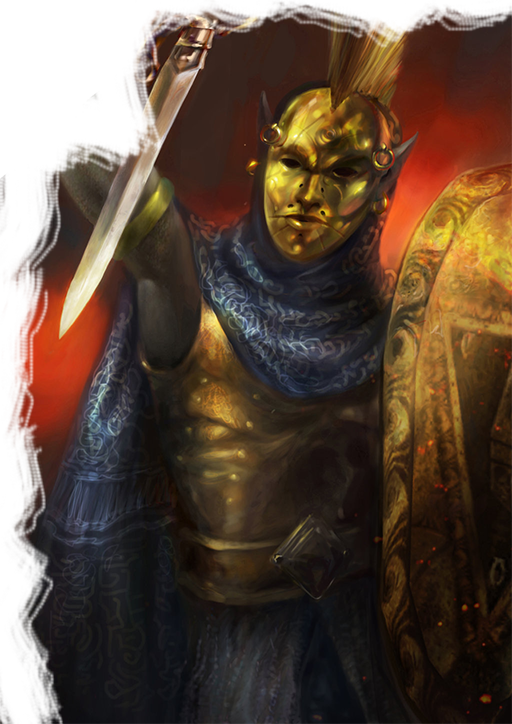
Channel Aura
Your oath allows you to channel magicka to fuel magical effects. Each Channel Aura option provided by your oath explains how to use it.
When you use your Channel Aura, you choose which option to use. You must then finish a short or long rest to use your Channel Aura again.
Some Channel Aura effects require saving throws. When you use such an effect from this class, the DC is your Knight spell save DC.
Ability Score Improvement
When you reach 4th level, and again at 8th, 12th, 16th, and 19th level, you can increase one ability score of your choice by 2, or you can increase two ability scores of your choice by 1. As normal, you can't increase an ability score above 20 using this feature.
Extra Attack
Beginning at 5th level, you gain the Extra Attack class feature, as described in the Players' Handbook on page 85.
Channel Aura: Protection
Starting at 6th level, while you concentrate for up to 1 minute, whenever a friendly creature within 10 feet of you must make a saving throw, the creature gains a bonus to the saving throw equal to your Charisma modifier (with a minimum bonus of +1).
At 18th level, the range of this aura increases to 30 feet.
If you have chosen the Oath of Protection or the Crown and your vows remain unbroken, this Aura constantly surrounds you, with no need for concentration.
Channel Aura: Courage
Starting at 10th level, while you concentrate for up to 1 minute, you and friendly creatures can't be frightened.
At 18th level, the range of this aura increases to 30 feet.
If you have chosen the Oath of Devotion or Redemption and your vows remain unbroken, this Aura constantly surrounds you, with no need for concentration.
Cleansing Touch
Beginning at 14th level, you gain the class feature Cleansing Touch as described in the Player's Handbook on page 85.
Sacred Oaths
Becoming a Knight involves taking vows that commit the Knight to his or her cause. The final oath, taken when he or she reaches 3rd level, is the culmination of all the Knight's training. Some characters with this class don't consider themselves true knights until they have reached 3rd level and made this oath. For others, the actual swearing of the oath is a formality, an official stamp on what has always been true in the Knight's heart.
Oath of Devotion
The Oath of Devotion binds the Knight to a higher calling - The Divine Aedra, a Daedric Prince, or other deities. Sometimes called zealots, holy warriors, or white knights, these Knights meet the ideal of their fellow faithful. They hold themselves to the highest standards of conduct, and some, for better or worse, hold the rest of the world to the same standards. Many who swear this oath are devoted to the gods of law and good, and use their gods' tenets as the measure of their devotion. They often bear the title of Knight-Paladin.
Tenets of Devotion/Oath Spells
The tenets and spells vary from deity to deity, but each is listed in Appendix B.
Noticed by the Gods
By taking this Oath, your actions will be watched by the deity you chose to serve. If you please your deity, they may reward you with additional feats related to their governance. At the DM's discretion, you may receive additional feats based on your actions.
Sacred Weapon
When you take this oath at 3rd level, as an action, you can imbue one weapon that you are holding with divine energy. For 1 minute, you add your Charisma modifier to attack rolls made with that weapon (with a minimum bonus of +1). The weapon also emits bright light in a 20-foot radius and dim light 20 feet beyond that. If the weapon is not already magical, it becomes magical for the duration.
You can end this effect on your turn as part of any other action. If you are no longer holding of carrying the weapon, or if you fall unconscious, this effect ends.
Channel Aura
Also at 3rd level, you gain the following Channel Aura option:
Turn the Unholy. Concentrating, you present the symbol of your faith and speak a prayer censuring Daedra and the undead for up to 1 minute, using your Channel Aura. Each daedra or undead that can see or hear you within 30 feet of you must make a Wisdom saving throw each turn while you pray. If the creature fails its saving throw, it is turned for 1 minute or until it takes damage.
A turned creature must spend its turns trying to move as far away from you as it can, and it can't willingly move to a space within 30 feet of you. It also can't take reactions. For its action, it can only use the Dash action or try to escape from an effect that prevents it from moving. If there's nowhere to move, the creature can use the Dodge action.
Aura of Devotion
Starting at 7th level, you gain the class feature Aura of Devotion as described in the Player's Handbook on page 86.
At 18th level, the range of this aura increases to 30 feet.
You may use your Channel Aura ability to expand this aura to 30 feet prior to reaching 18th level.
Purity of Spirit
Beginning at 15th level, you gain the class feature Purity of Spirit as described in the Player's Handbook on page 86.
Divine Favor
At 20th level, you are granted your deity's divine favor feature, which can be found in Appendix B.
Oath of the Ancients
The Oath of the Ancients is mostly the same as described in the Player's Handbook (PHB 87), with the following changes.
Oath Spells
You gain oath spells at the Knight levels listed.
| Knight Level | Spells |
|---|---|
| 3rd | Oakflesh, Magelight |
| 5th | Moonbeam, Entangle |
| 9th | See Invisibility, Gust of Wind |
| 13th | Call Lightning, Beacon of Hope |
| 17th | Stone Shape, Sanctuary |
Channel Aura
When you take this oath at 3rd level, you gain the following two Channel Aura options.
Nature's Wrath. You can invoke primeval forces to ensnare a foe. While concentrating for up to 1 minute, you can cause spectral vines to spring up and reach for a creature within 10 feet of you that you can see. The creature must succeed on a Strength of Dexterity saving throw(its choice) or be restrained. While restrained by the vines, the creature repeats the saving throw at the end of each of its turns. On a success, it frees itself and the vines vanish.
Turn the Faithless. Concentrating, you utter ancient words that are painful for fey and daedra to hear. Daedra and the undead for up to 1 minute, using your Channel Aura. Each daedra or fey that can hear you within 30 feet of you must make a Wisdom saving throw each turn while you pray. If the creature fails its saving throw, it is turned for 1 minute or until it takes damage.
A turned creature must spend its turns trying to move as far away from you as it can, and it can't willingly move to a space within 30 feet of you. It also can't take reactions. For its action, it can only use the Dash action or try to escape from an effect that prevents it from moving. If there's nowhere to move, the creature can use the Dodge action.
If the creature's true form is concealed by an illusion, shapeshifting, or other effect, that form is revealed while it is turned.
Oath of the Crown
The Oath of the Ancients is mostly the same as described in the Sword Coast Adventurer's Guide on page 182, with the following changes.
Oath Spells
You gain oath spells at the Knight levels listed.
| Knight Level | Spells |
|---|---|
| 3rd | Alarm, Command |
| 5th | Heroic Touch, Zone of Truth |
| 9th | Detect Trap, Lightning Arrow |
| 13th | Fortitude, Steadfast Ward |
| 17th | Righteousness, Shockbloom |
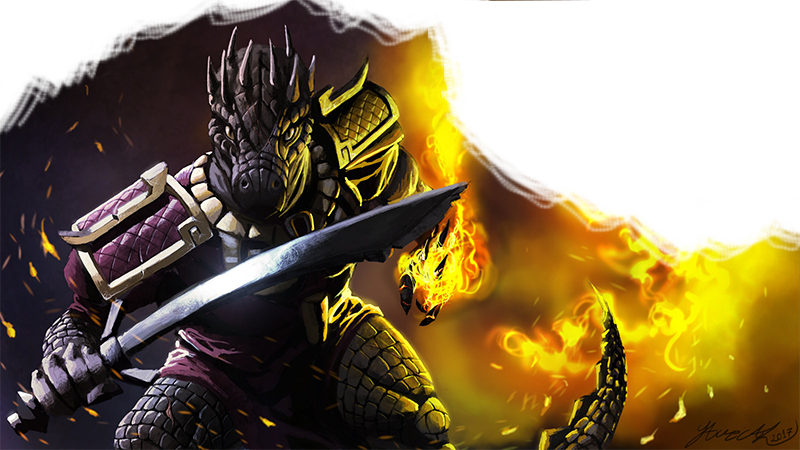
Channel Aura
When you take this oath at 3rd level, you gain the following Channel Aura options.
Turn the Tide. While concentrating, you can bolster injured creatures with your Channel Aura. Each Creature of your choice that can hear you within 30 feet of you regains hit points equal to your Charisma modifier (minimum of 1) each turn if it has no more than half of its hit points.
Champion Challenge
Starting at 7th level, as a bonus action you may issue a challenge that compels other creatures to do battle with you. Each creature of your choice that you can see within 30 feet of you must make a wisdom saving throw. On a failed save, a creature can't willingly move more than 30 feet away from you. The effect ends on the creature if you are incapacitated or die or if the creature is moved more than 30 feet away from you.
Oath of Vengeance
The Oath of Vengeance is mostly identical to the version described in the Player's Handbook (PHB 87), with the following changes.
Channel Aura
When you take this oath at 3rd level, you gain the following two Channel Aura option.
Vow of Enmity. While concentrating, you push a field of enmity to any creatures of your choice that you can see within 10 feet of you. Your party gains advantage on attack rolls against the creature for 1 minute or until it drops to 0 hit points or falls unconscious.
Oath Spells
You gain oath spells at the Knight levels listed.
| Knight Level | Spells |
|---|---|
| 3rd | Burning Hands, Wound |
| 5th | Weakness to Fire, Demoralizing Touch |
| 9th | Shatter, Fireball |
| 13th | Flame Cloak, Cruel Noise |
| 17th | Ice Spike, Night Eye |
Abjure Enemy
As an action, you present the symbol of your oath and denounce one creature within 60 feet of you, that you can see, expending a use of Channel Aura. That creature must make a Wisdom saving throw, unless it is immune to being frightened. Daedra and Undead have disadvantage on this savingthrow.
On a failed save, the creature is frightened for 1 minute or until it takes damage. While frightened, the creature's speed is 0, and it can't benefit from any bonus to its speed.
On a successful save, the creature's speed is halved for 1 minute or until it takes damage.
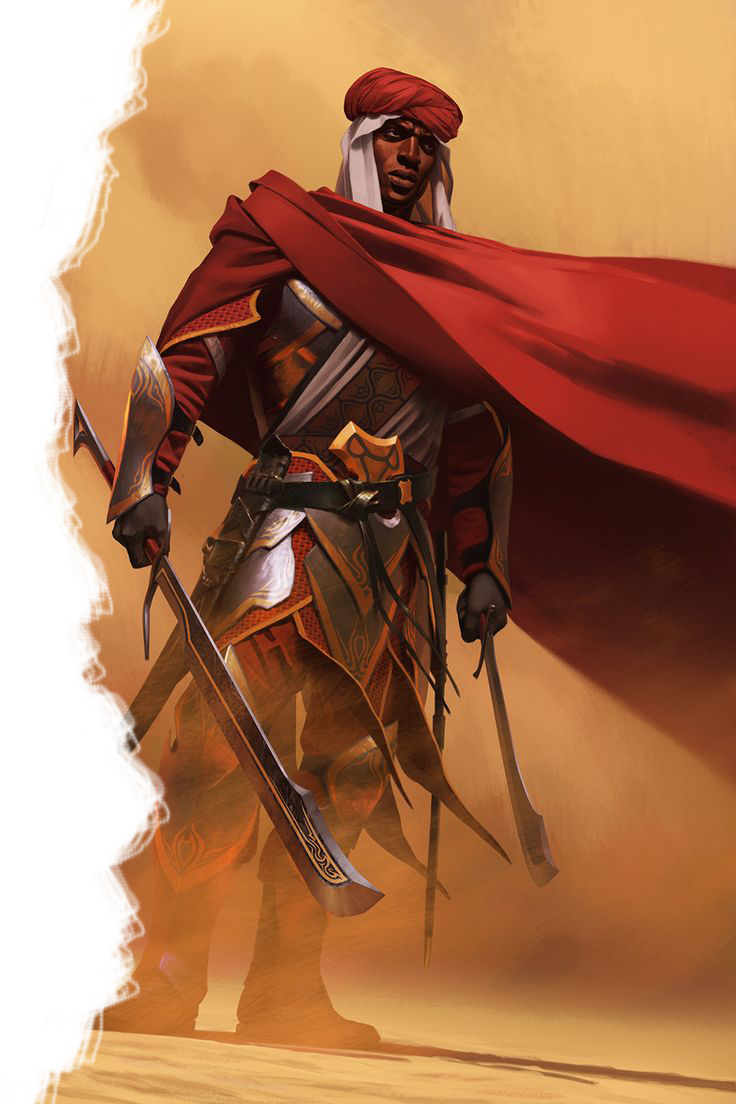
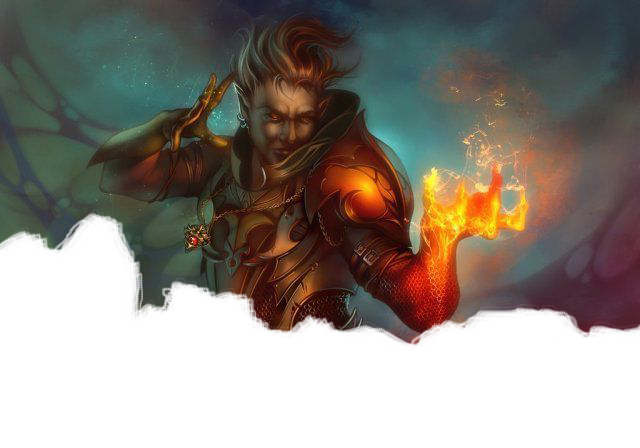
Mage
Mages are Nirn's equivalent of Wizards -- versatile wielders of arcane energy, capable of weaving phantom illusions, communicating beyond vast distances, and altering the elements themselves. Whether they specialize in Destruction, Alteration, Illusion, or Mysticism, they can make for powerful allies.
Scholars of the Arcane
Wild and enigmatic, varied in form and function, the power of magic draws students who seek to master the mysteries of Mundus. Some aspire to be like the gods, shaping reality itself. Though the casting of a typical spell requires merely belief in its effects and motioning with one's hands, and sometimes a pinch of clump of exotic materials, these surface components barely hint at the expertise attained after years of apprenticeship and countless hours of study.
Mages live and die by their spells. Everything else is secondary. They learn new spells as they experiment and grow in experience. They can also learn them from other Mages, from ancient tomes or inscriptions, and from ancient creatures (such as fey or Daedra) that are steeped in magic.
The Lure of Knowledge
Mage's lives are seldom mundane. The closest a wizard is likely to come to an ordinary life is working as a sage or lecturer in a library or college, teaching others the secrets of Aetherius. Other Mages sell their services as diviners, serve in military forces, assist scholars in excavations of ancient sites, or pursue lives of crime and domination.
But the lure of knowledge and power calls even the most unadventurous Mages out of the safety of their libraries and laboratories and into crumbling ruins and lost cities. Most Mages believe that their counterparts in ancient civilizations knew secrets of magic that have been lost to the ages, and discovering those secrets could unlock the path to a power greater than any magic available in the present age.
Creating a Mage
Creating a Mage character demands a backstory dominated by at least one extraordinary event. How did your character first come into contact with magic? How did you discover you had an aptitude for it? Do you have a natural talent, or did you simply study hard and practice incessantly? Did you encounter a magical creature or an ancient tome that taught you the basics of magic?
What drew you forth from your life of study? Did your first taste of magical knowledge leave you hungry for more? Have you received word of a secret repository of knowledge not yet plundered by other Mages? Perhaps your simply eager to put your newfound magical skills to the test in the face of danger.
Quick Build
You can make a Mage quickly by following these suggestions. First, Intelligence should be your highest ability score, followed by Constitution or Dexterity. If you plan to specialize in the school of Mysticism, make Wisdom your next best score. Second, choose the sage background.
Class Features
As a Mage, you gain the following class features.
Hit Points
- Hit Dice: 1d6 per Mage level
- Hit Points at 1st Level: 6 + your Constitution Modifier
- Hit Points at Higher Levels: 1d6 (or 4) + your Constitution modifier per Mage level after 1st.
Mage
| Level | Proficiency Bonus | Features | Cantrips Known | 1st | 2nd | 3rd | 4th | 5th | 6th | 7th | 8th | 9th |
|---|---|---|---|---|---|---|---|---|---|---|---|---|
| 1st | +2 | Spellcasting, Arcane Recovery | 3 | 2 | — | — | — | — | — | — | — | — |
| 2nd | +2 | Arcane Specialization, Minor Feat | 3 | 3 | — | — | — | — | — | — | — | — |
| 3rd | +2 | — | 3 | 4 | 2 | — | — | — | — | — | — | — |
| 4th | +2 | Minor Feat | 4 | 4 | 3 | ─ | ─ | ─ | ─ | — | — | — |
| 5th | +3 | — | 4 | 4 | 3 | 2 | ─ | ─ | ─ | — | — | — |
| 6th | +3 | Major Feat | 4 | 4 | 3 | 3 | ─ | ─ | ─ | — | — | — |
| 7th | +3 | ─ | 4 | 4 | 3 | 3 | 1 | ─ | ─ | — | — | — |
| 8th | +3 | Ability Score Improvement | 4 | 4 | 3 | 3 | 2 | ─ | ─ | — | — | — |
| 9th | +4 | ─ | 4 | 4 | 3 | 3 | 3 | 1 | ─ | — | — | — |
| 10th | +4 | Minor Feat | 5 | 4 | 3 | 3 | 3 | 2 | ─ | — | — | — |
| 11th | +4 | Major Feat | 5 | 4 | 3 | 3 | 3 | 2 | 1 | — | — | — |
| 12th | +4 | Ability Score Improvement | 5 | 4 | 3 | 3 | 3 | 2 | 1 | — | — | — |
| 13th | +5 | ─ | 5 | 4 | 3 | 3 | 3 | 2 | 1 | 1 | — | — |
| 14th | +5 | Spell School Mastery, Minor Feat | 5 | 4 | 3 | 3 | 3 | 2 | 1 | 1 | — | — |
| 15th | +5 | ─ | 5 | 4 | 3 | 3 | 3 | 2 | 1 | 1 | 1 | — |
| 16th | +5 | Ability Score Improvement | 5 | 4 | 3 | 3 | 3 | 2 | 1 | 1 | 1 | — |
| 17th | +6 | Minor Feat | 5 | 4 | 3 | 3 | 3 | 2 | 1 | 1 | 1 | 1 |
| 18th | +6 | Major Feat | 5 | 4 | 3 | 3 | 3 | 2 | 1 | 1 | 1 | 1 |
| 19th | +6 | Ability Score Improvement | 5 | 4 | 3 | 3 | 3 | 2 | 1 | 1 | 1 | 1 |
| 20th | +6 | ─ | 5 | 4 | 3 | 3 | 3 | 2 | 1 | 1 | 1 | 1 |
Proficiencies
- Armor: None
- Weapons: Daggers, darts, slings, quarterstaffs, light crossbows
- Tools: None
- Saving Throws: Intelligence, Wisdom
- Skills: Choose two from Arcana, History, Insight, Investigation, Medicine, and Religion
Equipment
You start with the following equipment, in addition to the equipment granted by your background:
- (a) a quarterstaff or (b) a dagger
- (a) a component pouch or (b) an arcane focus
- (a) a scholar's pack or (b) an explorer's pack
- A spellbook
Spellcasting
As a student of arcane magic, you have a spellbook containing spells that show the first glimmerings of your true power. See Chapter 7 for the general rules of spellcasting and Chapter 8 for the spell list. You can learn 1st-level spells from the schools of Alteration, Destruction, Illusion, and Mysticism.
Cantrips
At 1st level, you know three cantrips of your choice from the Alteration, Destruction, Illusion, or Mysticism spell lists. You learn additional cantrips from those schools at higher levels, as shown in the Cantrips known column of the Mage table.
Spellbook
At 1st level, you have a spellbook containing six 1st-level spells of your choice within the schools of Alteration, Destruction, Illusion, or Mysticism. Your spellbook is the repository of spells you know, except your cantrips, which are fixed in your mind.
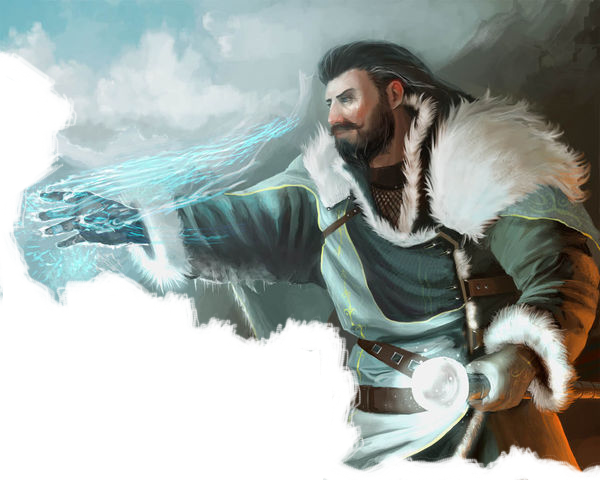
Preparing and Casting Spells
The Mage table shows how many spell
slots you have to cast your spells of 1st
level and higher. To cast one of these
spells, you must expend a spell slot of
the spell's level or higher. You regain
all expended spell slots when
you finish a long rest.
You prepare the list of spells
available for you to cast. To do
so, choose a number of spells
from your spellbook equal to your
Intelligence modifier + your Mage
level (minimum of one spell). The spells
must be of a level for which you have spell slots.
You can change your list of prepared spells when you finish a long rest. Preparing a new list of spells requires time spent memorizing the spells: at least 1 minute per spell level for each spell on your list.
Ritual Casting
You can cast a spell as a ritual if that spell has the ritual tag and you have the spell in your spellbook. You don't need to have the spell prepared.
Spellcasting Focus
You can use an arcane focus as a spellcasting focus for your Mage spells.
Learning Spells of 1st Level and Higher
Each time you gain a Mage level, you can add two spells of your choice from the schools of Alteration, Destruction, Illusion, or Mysticism to your spellbook for free. Each of these spells must be of a level for which you have spell slots, as shown on the Mage table. Spells above the 3rd spell level must be of your chosen School. On your adventures, you might find other spells that you can add to your spellbook.
Arcane Recovery
You have learned to regain some of your magical energy by studying your spellbook. Once per day when you finish a short rest, you can choose expended spell slots to recover. The spell slots can have a combined level that is equal to or less than half your Mage level (rounded up), and none of the slots can be 6th level or higher.
Arcane Specialization
When you reach 2nd level, you choose one of four schools of magic to specialize in: Alteration, Destruction, Illusion, or Mysticism, all detailed at the end of the class description.
Your choice unlocks certain major and minor feats available to you. Additionally you gain the ability to learn 3rd level and higher spells of that school.
Ability Score Improvement
When you reach 8th level, and again at 12th, 16th and 19th level, you can increase one ability score of your choice by 2, or you can increase two ability scores of your choice by 1. As normal, you can't increase an ability score above 20 using this feature.
Arcane Traditions
The study of wizardry is ancient, stretching back to the earliest era of creation. It is firmly established in the Elder Scrolls universe, with various traditions dedicated to its complex study.
The most common arcane traditions in the universe revolve around the schools of magic. Mages through the ages have cataloged thousands of spells, grouping them into eight categories called schools, as described in Chapter 7. In some places, these traditions are literally schools; a budding Mage might study at the School of Illusion while another studies across town at the School of Mysticism. In other institutions, the schools are more like academic departments, with rival faculties competing for students and funding.
Even Mages who train apprentices in the solitude of their own towers use the division of magic into schools as a learning device, since the spells of each school require mastery of different techniques. Of the six accepted schools of magic, Mages focus on Alteration, Destruction, Illusion, and Mysticism. Mages of Restoration exist, but they train in healer's traditions more often than not, and Conjuration is the purview of Conjurers.
School of Alteration
You are a student of spells that modify energy and matter. To you, the world is not a fixed thing, but eminently mutable, and you delight in being an agent of change. You wield the raw stuff of creation and learn to alter both physical forms and mental qualities. Your magic gives you the tools to become a smith on realities forge.
Some Alteration Mages are tinkerers and pranksters, turning people's flesh into wood, or weighing them down with burden spells. Others seek to simplify their lives and protect others. Yet others seek to shape the world in their image.
You may now cast Alteration spells above 3rd level.
Spell School Mastery: Master Transmuter
Starting at 14th level, if you do not have the Major Feat Altering Stone, you may create an Altering Stone as described under the Major Feat. You will not be able to recreate further stones unless you take the feat.
You can use your action to consume the reserve of Alteration magic stored within your Alteration Stone or two 5th-level spell slots and two 4th-level spell slots in a single burst. When you do so, choose one of the effects listed under Master Transmuter as described in the Player's Handbook page 119, noting that Restore Life does not use the Raise Dead spell, but instead the Reincarnate spell. Your Alteration Stone is destroyed or your spell slots cannot be recovered until you finish a long rest.
School of Destruction
You focus your study on magic that creates powerful elemental effects such as bitter cold, searing flame, rolling thunder, crackling lightning, and burning acid. Some Destruction Mages find employment in military forces as Battlemages, others use their spectacular power to protect the weak, while some seek their own gain as bandits, adventurer's or aspiring tyrants.
You may now cast Destruction spells above 3rd level.
Spell School Mastery: Overchannel
At 14th level, you can increase the power of your simpler spells. When you cast a Destruction spell of 1st through 5th level that deals damage, you can deal maximum damage with that spell.
School of Illusion
You focus your studies on magic that dazzles the senses, befuddles the mind, and tricks even the wisest folk. Your magic is subtle, but the illusions crafted by your keen mind make the impossible seem real. Some illusionists are benign tricksters who use their spells to entertain. Others are more sinister masters of deception, using their illusions
to frighten and fool others for their personal gain.
You may now cast Illusion spells above 3rd level.
Spell School Mastery: Illusory Reality
At 14th level, you have learned the secret of weaving shadow magic into your illusions to give them a semi-reality. You gain the class feature Illusory Reality as described in the Player's Handbook on page 118.
School of Mysticism
You focus your study on the magics that interact with the very fibers of reality, embracing a temporary form of madness. As a Mystic, you strive to part the veils of space, time, and consciousness so that you can see and act clearly. You work to master spells of discernment, travel, control, and foresight.
You may now cast Mysticism spells above 3rd level.
Spell School Mastery: Defy the Dragon
At 14th level, you have developed a keen understanding of the rules of reality itself, and have discovered how to simultaneously exist in two places at once. Once per long rest, as an action, you may split yourself into two beings for up to 1 hour. This other you will disappear if he or she takes damage, and cannot cast spells or attack with a weapon, however they can interact with the world, relaying messages or helping to solve puzzles, for example.
Major and Minor Feats
As you gain Mage levels, you will gain access to the following feats. If a feat has prerequisites, you must meet them to learn it. A level prerequisite refers to your level in this class.
Minor Feats
Expertise
You gain a +1 to one skill of the following skills of your choice: Arcana, History, Insight, Investigation, or Medicine. You may take this feat multiple times.
Intensive Practice
You gain an additional spell slot of any level you choose which you have already unlocked. You may take this feat multiple times.
Arcane Haste
When you cast a spell that has a casting time of 1 action and a duration of instant, you may take the disengage, dash, or hide action as a bonus action.
Arcane Combatant
You may pick a fighting style available to the Fighter class.
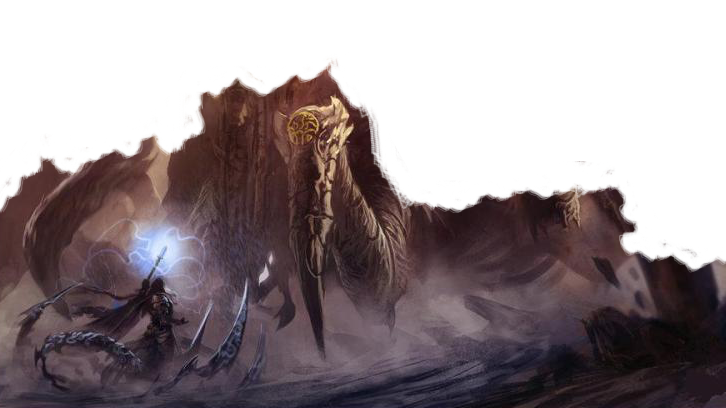
Savant
Prerequisite: Spell School
The gold and time you must spend to copy a spell of your chosen school into your spellbook is halved.
Adept Casting
Prerquisite: Spell School
When casting a spell from your chosen school, if the spell requires a DC save for its target, or a damage roll, you may add your corresponding casting modifier to the DC or the damage roll.
Arcane Ward
Prerequisite: School of Alteration
You can weave magic around yourself for protection. When you cast an alteration spell of 1st level or higher, you can simultaneously use a strand of the spell's magic to create a magical ward on yourself that lasts until you finish a long rest. The ward is described under the Arcane Ward class feature as described in the Player's Handbook on page 115.
You may take this feat multiple times, adding +5 hit points to your ward each time you take this feat.
Improved Minor Illusion
Prerequisite: School of Illusion
This feat is identical to the class feature Improved Minor Illusion as described in the Player's Handbook on page 118.
Portent
Prerequisite: School of Mysticism
This feat is identical to the class feature Portent as described in the Player's Handbook on page 116.
You may take this feat one additional time in order to add an additional d20 to your Portent roll.
Flash-Freeze
Prerequisite: Elemental Excellence: Frost Mage
When a creature's speed is brought down to 0 by your ice-based spell, it is frozen solid. At the start of each of its turns until it's thawed, the creature takes 1d4 cold damage. It must make a strength check to thaw itself. It may be thawed by external means as well.
You may take this feat one additional time in order to give the frozen creature disadvantage on its strength check.
High Heat
Prerequisite: Elemental Excellence: Fire Mage
When you deal fire damage to a creature, they catch fire. At the start of their turn, it takes 1d4 fire damage and roll a constitution check. If they succeed, the creature is no longer on fire. Otherwise, they must try again on their next turn.
Chained Lightning
Prerequisite: Elemental Excellence: Shock Mage
When you successfully paralyze a creature using your ability from Elemental Excellence: Shock Mage, each creature within 10 feet of the target must make a dexterity check. If they fail, they take 1d4 lightning damage. They will not be paralyzed.
You may that this feat up to 2 additional times to increase the range by 5 feet/time taken.
Potent Cantrip
Prerequisite: 6th-level
This feat is identical to the class feature Potent Cantrip as described in the Player's Handbook on page 117.
Journeyman Casting
Prerequisite: 6th-level
Casting spells comes so easily to you that it expends only a fraction of your spellcasting efforts. When you cast a spell of your chosen school of 2nd-level or higher using a spell slot, you regain one expended spell slot. The slot you regain must be of a level lower than the spell you cast and can't be higher than 5th level.
Expert Casting
Prerequisite: 10th-level
When you cast a spell that requires you to make an ability check as part of casting that spell, you add your proficiency bonus to that ability check.
Experimental Casting
Prerequisite: 10th-level
You may learn and attempt to cast spells above 3rd-level of schools besides your chosen spell school. When attempting to cast them, you must make a saving throw with their casting ability(DC20), and you have disadvantage.
Arcane Resistance
Prerequisite: 10th-level
You may choose resistance to one of the following damage types: Fire, Ice, Lightning, Radiant, or Necrotic
You may pick this feat multiple times for additional resistances.
Major Feats
Arcane Intellect
You may add +1 to your Wisdom or Intelligence scores, up to a maximum of 20.
Magicka Armor
At any time, you may expend a spell slot to gain Temp HP equal to the spell slot level + your Intelligence modifier.
Altering Stone
Prerequisite: School of Alteration
You can spend 8 hours creating an Altering Stone that stores Alteration magic. You can benefit from the stone yourself, or give it to another creature. A creature gains a benefit of your choice as long as the stone is in the creature's possession. When you create the stone, choose the benefits from the following options:
- Reduce the total weight you're carrying by 10% of your maximum carry weight.
- Darkvision out to a range of 60 feet
- Emanates a light with a range of 30 feet
- Resistance to acid, cold, fire, lightning, or thunder damage (your choice whenever you choose this benefit)
Each time you cast an Alteration spell of 1st level or higher, you can change the effect of your stone if the stone is on your person.
If you create a new Alteration Stone, the previous one ceases to function.
Projected Ward
Prerequisite: Arcane Ward
This feat is identical to the class feature Projected Ward as described in the Player's Handbook on page 115.
Within the Walls
Prerequisite: School of Alteration
You add the Passwall spell to your spellbook, if it is not there already. You can cast Passwall without expending a spell slot. When you do so, only you can enter the passage you've created.
Once you cast Passwall in this way, you can't do so again until you finish a short or long rest, though you can still cast it normally using an available spell slot.
Sculpt Spells
Prerequisite: School of Destruction
This feat is identical to the class feature Sculpt Spells as described in the Player's Handbook on page 115.
Elemental Excellence
Prerequisite: School of Destruction
As a destruction mage, you may choose an element to specialize in.
Frost Mage. Your strength lies in the unrelenting cold. Whenever you cast an ice-based spell, you may choose to make any creatures affected by it must make a dexterity saving throw. If they fail, their movement speed is reduced by 10 feet until your next turn. A creature can't be affected by this more than once per round.
Fire Mage. Your power comes from the blazing heat. Whenever you cast a fire-based spell, if the spell is not damaging, you may choose to make the target take 1d4 fire damage. Otherwise, you may roll an additional dice for damage and ignore the lowest roll.
Shock Mage. Your abilities focuses on pure energy. Whenever you cast an electic-based spell, it may paralyze its target. The target must make a constitution saving throw. If it fails, the target is paralyzed. If the target is already paralyzed, it takes an additional 1d4 lightning damage.
Precision Destruction
Prerequisite: School of Destruction
You may add your Dexterity modifier to your Spellcasting attack modifier.
Illusory Self
Prerequisite: School of Illusion
This feat is identical to the class feature Illusory Self as described in the Player's Handbook on page 118.
Malleable Illusions
Prerequisite: School of Illusion
This feat is identical to the class feature Malleable Illusions as described in the Player's Handbook on page 118.
The Third Eye
Prerequisite: School of Mysticism
This feat is identical to the class feature The Third Eye as described in the Player's Handbook on pages 116-117, noting that there is an additional option:
Timeless View. You see objects as they were when they were first created, and people as they were five years ago. If you see a magic item, you instinctively know all knowledge an identify spell would give you about it without the need to cast the spell.
You can use your action to increase your powers of perception. When you do so, it activates your chosen ability, which lasts until you are incapacitated or you take a short or long rest. You can't use the feature again until you finish a rest.
You may take this feat again to gain access to another ability.
Spell Mastery
Prerequisite: 18th-level
This feat is identical to the class feature Spell Mastery as described in the Player's Handbook on page 115.
Signature Spells
Prerequisite: 18th-level
This feat is identical to the class feature Signature Spells as described in the Player's Handbook on page 115.
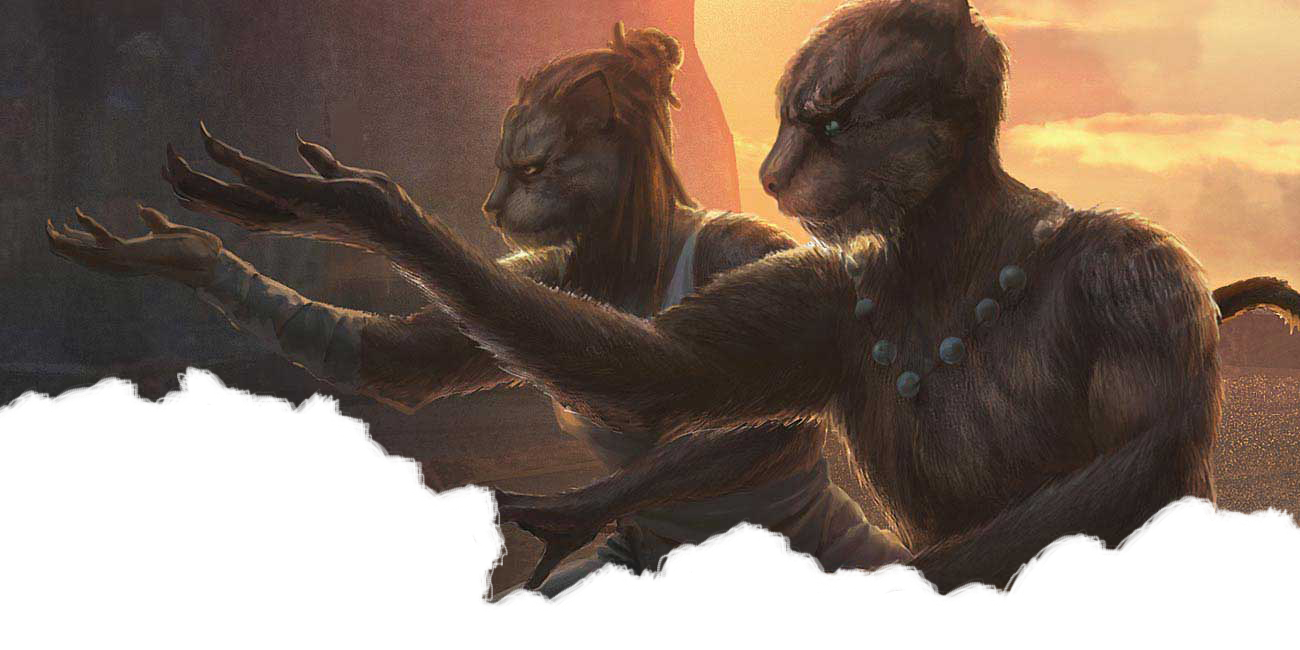
Monk
Much like their counterparts in other D&D
settings, Monks take an approach to combat
combining mystical techniques and physical
prowess, channeling their abilities into an
awe-inspiring display of skill. Whether they
use their skills for combat, defense, or to improve their minds, each Monk makes use of the natural energy flowing within all beings.
Manipulaton of Creatia
Monks make careful study of the innate magical energy flowing within every Man and Mer, gifted since the Aedra created Mundus. Every Monastic order uses a different name for this energy, whether it's the Thu'um of the Greybeards, the Akaviri term Ki, or Focus. For the sake of consistency with other settings, we'll use the term Ki throughout this
setting.
Using this energy, Monks channel uncanny speed and strength into their unarmed strikes. As they gain experience, their martial training and their mastery of Ki gives them more power over their bodies and the bodies of their foes.
A Growing Art
"The unarmed, unarmored martial arts traditions of the Marshmerrow, Salt Rice, and Golden Reed societies of the Dissident Priest, patterned on the 'Rain-of-Sand' fighting styles of Elsweyr, are slow to be adopted in the Empire, associated as they are with the ascetic renunciation of worldly wealth and material goods, and the rigid disciplines and mystical philosophies so alien to the Imperial West."
-- Sendus Sathis
Monastic Orders around Tamriel are relatively uncommon. Among the Mannish kingdoms of Cyrodiil and High Rock, there are a few pockets of religious sects, but they are relatively peaceful. The Greybeards of Skyrim are reclusive, and often refuse to take part in the events of the world. Barbarian followers of Trinimac of sometimes referred to as Wild Monks, but are not organized, and rely solely on their combat ability and the use of Alteration magic. The Kahjiiti of Elseweyr are perhaps the pioneers of Martial Art and Ascetism throughout the continent, training to fight in service to their Mane, and Dunmeri priests have been known to adopt techniques they've seen used by both Kahjiit and Akaviri invaders.
Training and Ascetism
Small walled cloisters dot the landscapes of Tamriel, tiny refuges from the flow of ordinary life, where time seems to stand still. The monks who live there seek personal perfection through contemplation and rigorous training. Many entered the monastery as children, sent to live there when their parents died, when food couldn't be found to support them, or in return for some kindness that the monks had performed for their families.
Some monks live entirely apart from the surrounding population, secluded from anything that might impede their spiritual progress. Others are sworn to isolation, emerging only to serve as spies or assassins at the command of their leader, a noble patron, or some other mortal or divine power.
The majority of monks don't shun their neighbors, making frequent visits to nearby towns or villages and exchanging their service for food and other goods. As versatile warriors, monks often end up protecting their neighbors from monsters of Tyrants.
For a monk, becoming an adventurer means leaving a structured, communal lifestyle to become a wanderer. This can be a harsh transition, and monks don't undertake it lightly. Those who leave their cloisters take their work seriously, approaching their adventures as personal tests of their physical and spiritual growth. As a rule, monks care little for material wealth and are driven by a desire to accomplish a greater mission than merely slaying monsters and plundering their treasure.
Creating a Monk
As you make your monk character, think about your connection to the monastery where you learned your skills and spent your formative years. Were you an orphan or a child left on the monastery's threshold? did your parents promise you to the monastery in gratitude for a service performed by the monks? Did you enter this secluded life to hide from a crime you committed? Or did you choose the monastic life for yourself?
The Monk
| Level | Proficiency Bonus | Martial Arts | Ki Points | Unarmored Movement | Features |
|---|---|---|---|---|---|
| 1st | +2 | 1d4 | — | — | Unarmored Defense, Martial Arts |
| 2nd | +2 | 1d4 | 2 | +10 ft. | Ki, Unarmored Movement |
| 3rd | +2 | 1d4 | 3 | +10 ft. | Monastic Tradition, Deflect Missiles |
| 4th | +2 | 1d4 | 4 | +10 ft. | Ability Score Improvement, Slow Fall |
| 5th | +3 | 1d6 | 5 | +10 ft. | Extra Attack, Stunning Strike |
| 6th | +3 | 1d6 | 6 | +15 ft. | Ki-Empowered Strikes, Monastic Tradition Feature |
| 7th | +3 | 1d6 | 7 | +15 ft. | Evasion, Stillness of Mind |
| 8th | +3 | 1d6 | 8 | +15 ft. | Ability Score Improvement |
| 9th | +4 | 1d6 | 9 | +15 ft. | Unarmored Movement Improvement |
| 10th | +4 | 1d6 | 10 | +20 ft. | Purity of Body |
| 11th | +4 | 1d8 | 11 | +20 ft. | Monastic Tradition Feature |
| 12th | +4 | 1d8 | 12 | +20 ft. | Ability Score Improvement |
| 13th | +5 | 1d8 | 13 | +20 ft. | Tongue of Sun and Moon |
| 14th | +5 | 1d8 | 14 | +25 ft. | Diamond Soul |
| 15th | +5 | 1d8 | 15 | +25 ft. | Timeless Body |
| 16th | +5 | 1d8 | 16 | +25 ft. | Ability Score Improvement |
| 17th | +6 | 1d10 | 17 | +25 ft. | Monastic Tradition Feature |
| 18th | +6 | 1d10 | 18 | +30 ft. | Empty Body |
| 19th | +6 | 1d10 | 19 | +30 ft. | Ability Score Improvement |
| 20th | +6 | 1d10 | 20 | +30 ft. | Perfect Self |
Consider why you left. Did the head of your monastery choose you for a particularly important mission beyond the cloister? Perhaps you were cast out because of some violation of the community's rules. Did you dread leaving, or were you happy to go? Is there something you hope to accomplish outside the monastery? Are you eager to return to your home?
As a result of the structured like of a monastic community and the discipline required to harness Ki, Monks are almost always lawful in alignment.
Quick Build
You can make a Monk quickly by following these suggestions. First, make Dexterity your highest ability score, followed by Wisdom. Second, choose the hermit background.
Class Features
As a Monk, you gain the class features as described by the Monk class in the Player's Handbook, with the exception Monastic Traditions, of which different ones will be available in this setting.
Monastic Traditions
Five traditions of monastic pursuit are common in the monasteries scattered across Nirn. Most monasteries practice one tradition exclusively, but a few honor the five traditions and instruct each monk according to his or her aptitude and interest. All five traditions rely on the same basic techniques, diverging as the student grows more adept. Thus, a monk need choose a tradition only upon reaching 3rd level.
Way of the Exposed Palm
This Way is identical to the Way of the Open First, described in the Player's Handbook page 79.
Way of Shadow
The Way of Shadow is identical to its description in the Player's Handbook page 80.
Way of Marshmerrow
One of the most fastest growing of the Dunmeri martial arts, the Way of Marshmerrow is a relatively new creation, based on the teachings of the Khajiit martial arts. Its teachings weave a practitioner's willpower and spiritual essence with more traditional unarmed combat techniques, flowing as if it were a dance.
Monks of this tradition are capable of utilizing their Ki to cast spells if they already know how to use magic, and can otherwise also create effects similar to traditional Illusion spells using only their actions.
Managing the Breath
When you choose this tradition at 3rd level, you gain the ability to cast Illusion spells using Ki points instead of spell slots, according to the Spells and Ki Points table. Once you reach 5th level in this class, you can spend additional ki points to increase the level of an Illusion spell that you cast, provided that the spell has an enhanced effect at a higher level.
To cast these spells, you use its casting time and other rules, but you don't need to provide material components for it.
Moonlight Strike
Also at 3rd level, when you make an unarmed strike against an opponent, it leaves the effects of the Magelight spell on the target.
Spells and Ki Points
| Monk Levels | Maximum Ki Points for a Spell |
|---|---|
| 5th-8th | 3 |
| 9th-12th | 4 |
| 13th-16th | 5 |
| 17th-20th | 6 |
Severance
At 6th level, when you make an unarmed strike against an opponent, you may spend 3 Ki points to leave the target under the effects of the Hush spell.
Peaceful Eye
Beginning at 11th level, if you do not already know it, you learn the spell Calming Gaze. Rather than using spell slots, you may spend 4 Ki points to cast it. You may only cast it as a 4th level spell.
Roaring Palms
Starting at 17th level, when you use both hands to make an unarmed strike against an opponent, you may spend 6 Ki points to cause the effects of the Deafen spell, centered on your target.
When you use this action, the target must make a Constitution saving throw. If it fails, it is knocked unconscious. If it succeeds, it takes 3d6 Thunder damage.
You may utilize more Ki Points to add an additional 1d6 Thunder damage under the success condition. This must be decided before the saving throw.
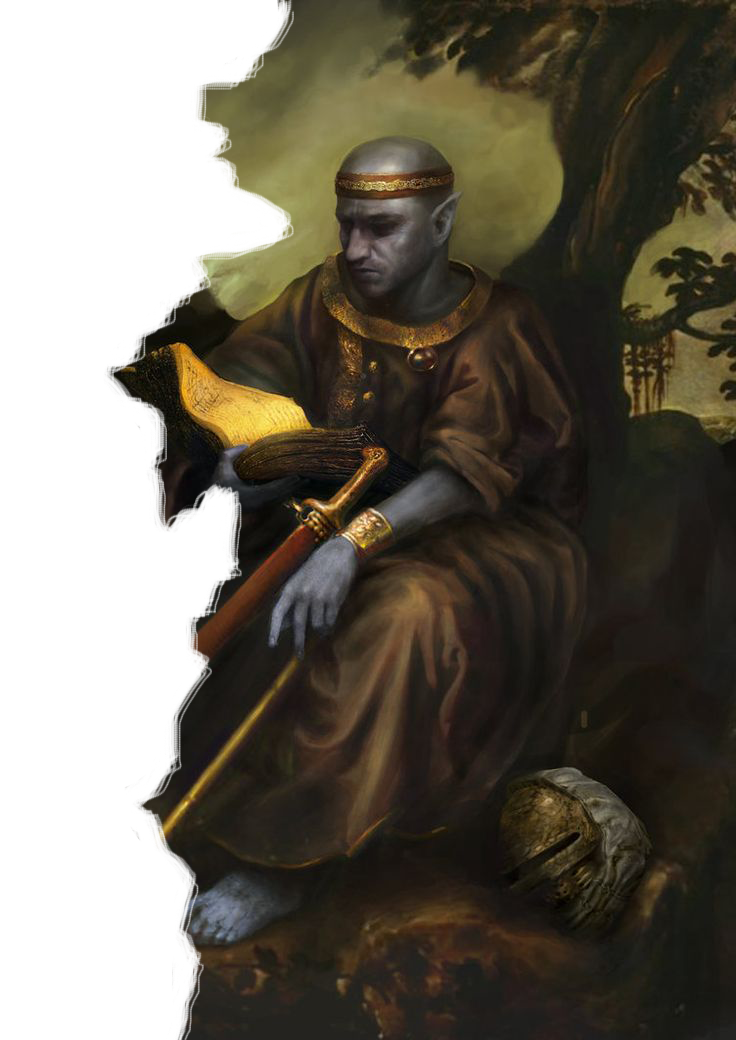
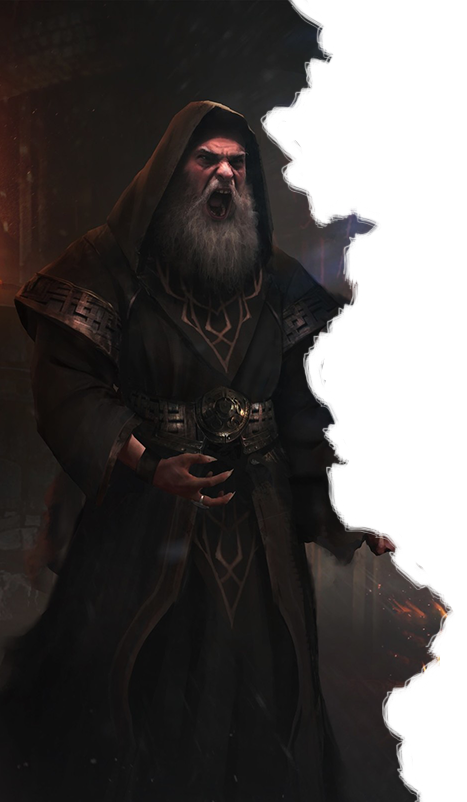
The Voiceless
Those who become proficient in using the Thu'um often must use great restraint while speaking regularly until they can gain better control of their power. A DM may require your character to roll when speaking at certain points, or they may choose to ignore this possible effect.
Way of the Voice
The ancient, venerated order of Greybeards in Skyrim rarely take new members, and it is even rarer to see them travel beyond the confines of their monastery on High Hrothgar. Ardent worshippers of Kyne, those who follow the Way of the Voice seek to harness the ancient Dragon Tongue, a powerful form of Tonal Magic. Decades of practice is required to become adept at even a few simple phrases, and only those born of Dragon's blood are capable of truly mastering it.
The Way of the Voice itself is the peaceful philosophy of the use of the Thu'um, centered around the teachings of Jurgen Windcaller. It teaches that the Thu'um must be used in celebration of the gods, and that true mastery is only achieved when one's spirit is in harmony with one's actions. Unsanctioned use of the voice is frowned upon except in periods of "True Need," and followers of the Way of the Voice rarely interfere in the world's affairs.
The Thu'um
Starting when you choose this tradition at 3rd level, you begin to focus your learning toward up to two of the following phrases in the dragon tongue. As you train further and advance in Monk levels, you will eventually gain the skill to use them practically. You may combine words from the two phrases as you begin to understand them to perform different effects.
Battle Fury
Battle fury is made up of the words "Loyal," "Valor," and "Inspire." When you use it as a whole, all allies within 30 feet that can hear you can make an extra attack.
Mid. Loyal
Vur. Valor
Shaan. Inspire
Clear Skies
Clear Skies is made up of the words "Sky," "Spring," and "Summer." When you use it as a whole, the sky above you clears away any inclement weather.
Lok. Sky
Vah. Spring
Koor. Summer
Disarm
Disarm is made up of the words "Weapon," "Hand," and "Defeat." When you use it as a whole, any target within 30 feet that can hear you of your choice drops their weapon.
Zun. Weapon
Haal. Hand
Viik. Defeat
Dismay
Faas. Fear
Ru. Run
Maar. Terror
Fire Breath
Fire Breath is made up of the words "Fire," "Inferno," and "Sun." When used as a whole, you breath a cone of fire up to 15 feet. Any creatures caught in the cone must make a Constitution saving throw. A creature takes 6d8 fire damage on a failed save, or half that on a succesful save.
Yol. Fire
Toor. Inferno
Shul. Sun
Frost Breath
Frost Breath is made up of the words "Frost," "Cold," and "Freeze." When used as a whole, you breath a cone of cold air up to 15 feet. Any creatures caught in the cone must make a Constitution saving throw. A creature takes 6d8 cold damage on a failed save, or half that on a succesful save.
A creature killed by this becomes a frozen statue until it thaws.
Fo. Frost
Krah. Cold
Diin. Freeze
Phantom Form
Phantom Form is made up of the words "Mirror," "Deceive," and "Phantom." When used as a whole, you create a ghostly apparition in a location within 30 feet of you. This apparition can't move, attack, or even think, and if attacked, it will disappear.
Fiik. Mirror
Lo. Deceive
Sah. Phantom
Storm Call
Storm Call is made up of the words "Storm," "Wrath," and "Lightning." When used as a whole, the skies darken, rain begins to fall, and a lightning storm begins.
Strun. Storm
Bah. Wrath
Qo. Lightning
Transfer Health
Transfer Health is made up of the words "Open," "Life," and "Leech." When used as a whole, you may drain the health from any creature within 30 feet that can hear you of your choice, yourself included, and move it to yourself or another creature within 30 feet that can hear you of your choice.
Bex Open
Laas Life
Lun Leech
Unrelenting Force
Unrelenting Force is made up of the words "Force," "Balance," and "Push." When used as a whole, you exhale a 15-foot cone of strong wind. Any creature caught in the cone takes 4d8 Thunder damage, and is blasted back 20 feet. If they succeed a Dexterity save, they remain on their feet. If they fail, they will be prone.
Fus. Force
Roh. Balance
Dah. Push
Whirlwind Sprint
Whirlwind Sprint is made up of the words "Whirlwind," "Fury," and "Tempest." When used as a whole, the shout pulls you forward up to 30 feet in an instant.
Wuld. Whirlwind
Nah. Fury
Kest. Tempest
Creative Uses
Each word has its own use, and they can be mix and matched, or used on their own. Bex, the word for Open, for example, could be used to open a door for you. Combining the words for Weapon and Fire might cause your weapon to deal Fire damage. Combining words in a non-standard way requires time spent meditating on the meaning: at least 2 hours per word for each word in the combination, after which you may add the combination into the list of phrases you know, marked as nonstandard. If you fail your Charisma roll on a non-standard shout, you must roll on the Wild Thu'um table for your words, found in the appendix. Be very clear of your intentions when using the Thu'um.
Using the Thu'um
Using the Thu'um requires meditation and practice. One must understand the words they have elected to learn before being able to use them effectively. Using the Thu'um requires a DC check of 25 - your Monk level, + 5 for every word after the first, and +10 for every word after the 3rd. If your roll is unsuccessful, nothing happens. On a critical failure, you must roll on the Wild Thu'um table for your words, found in the appendix.
Beginning at 3rd level, you can barely make more than a rumble with your voice. You can spend 1 Ki Point per word to speak with the Thu'um. On a successful check, the ground will shake slightly. The sight is impressive to most commoners, but it is ineffective in combat.
Upon reaching 6th level, you begin to understand the first word of both of your chosen phrases. You can utilize the two words you understand on their own, or attempt to combine them.
At 11th level, you begin to understand the next word of both of your chosen phrases. You are able to utilize the two new words you have begun to understand.
Starting at 17th level, you have become adept at using the Thu'um, and you understand the full meaning of both phrases, and you can unleash the full power of both of them. By this point, your level of control should allow you to speak without unleashing the Thu'um.
Way of Claw and Tail
The Way of Claw and Tail describes a multitude of paths, but the most well known is that of Riddle'Thar. This path teaches Monks to both avoid and embrace danger, to fight and to escape, to simultaneously accept change and stave it off. Khajiit practice it as a means to reach ja-Kha'jay, the Lunar Lattice.
Riddle'Thar is a form of martial combat where both hands hold a weapon -- That may be the natural claws of the Khajiit, or more traditional shortswords. All movements are representative of the moons and their phases, and like the Way of Marshmerrow, the art is equally a dance as well as combat. Many who follow the Way of Claw and Tail become elite guards to the Mane. Some become royal assassins, while others yet become folk heroes.
Restriction: Khajiit
While all races are able to watch and try to understand the Way of Claw and Tail, only Khajiit have the mindset to practice it.
Your DM can waive this restriction.
Waxing Crescent
When joining this tradition at 3rd level, Once per combat, when you are targeted by any attack, the attacker has disadvantage on its attack roll.
Waning Gibbous
Starting at 6th level, when you are struck by a melee attack, you may spend 1 Ki point to attempt to redirect your attacker's strike toward themselves. Your attacker must roll a DC 20 Dexterity saving throw. If successful, you are struck as normal. If they fail their saving throw, they suffer half of their damage roll, while you take no damage.
Your attacker will suffer +1 additional damage up to their damage roll for each additional Ki point you spend.
Full Moon Sets
Beginning at 11th level, you may spend 4 Ki points to project your soul outward, manifesting itself as another you, for up to 1 hour. It will mimic your actions completely, and is capable of engaging in combat. Your total Hit Points are split between it and yourself. While using this, you and your projection may only heal up to half of your total hit points. If it dies, you will be knocked unconscious. When it disappears, its hit points will merge back into yours.
New Moon Rising
At 17th level, you gain the ability to become invisible after striking an opponent. When you hit a creature with an unarmed strike, you may spend 5 Ki points to become invisible. This invisibility lasts for up to 30 seconds, or until you interact with something.
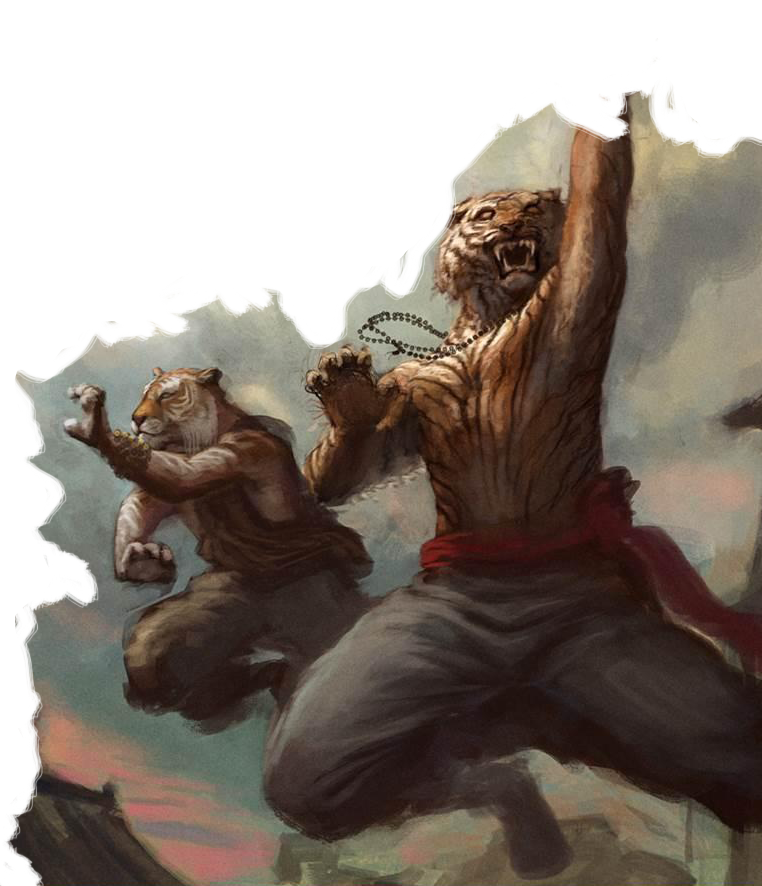
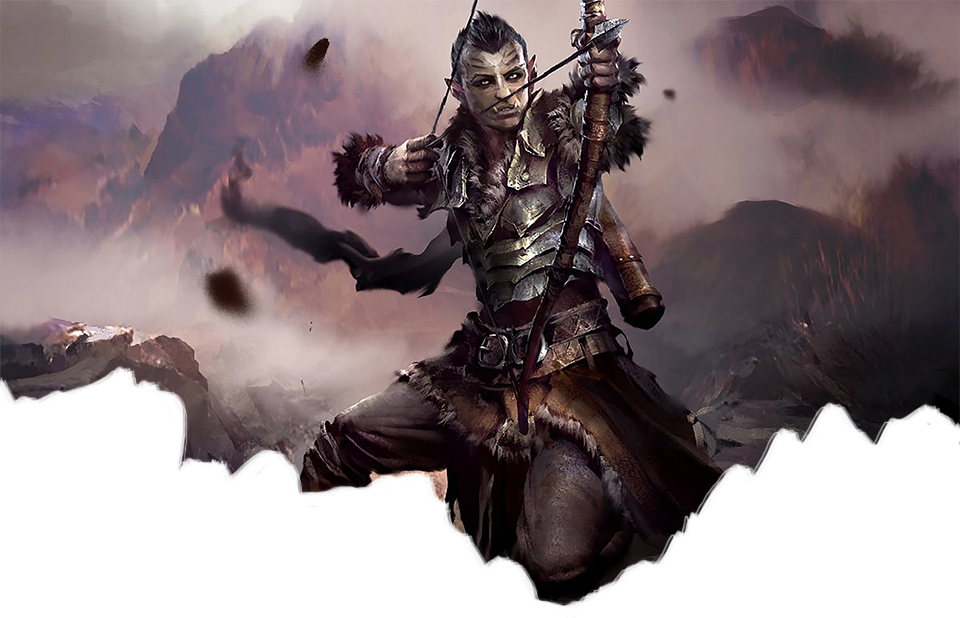
Ranger
Unlike their cousins in other settings, rangers in Tamriel
do not typically use magic, relying instead on their wits and keen sense of place. Whether traversing the ashlands of Morrowind, bow in hand, in search of a good meal or clearing routes in the jungles of southern Cyrodiil, Rangers are found all across the continent, and are relied on for their expansive knowledge of the various points of interest, where to find plants that are poisonous or nutritious, and how to safely travel the wild lands.
Deadly Hunters
Warriors of the wilderness, rangers specialize in hunting the monsters that threaten the edges of civilization -- bandits, rampaging and monstrosities, terrible giants, and the odd troll. They track their quarry as a predator does, moving stealthily through the wilds and hiding themselves in brush and rubble. Rangers focus their combat training on techniques that are particularly useful against their specific favored foes.
Class Features
As a Ranger, your features are the same as in the Player's Handbook, with the following exceptions.
Spellcasting
You do not receive the spellcasting feature.
Forager's Tricks
Replacing the Primeval Awareness feature, beginning at 3rd level, your experience in the wild has given you the ability to use up to two of the following cantrips: Candlelight, Mending, Vero's Knock, Dancing Lights, Detect Magic, Detect Poison & Disease, Lesser Ward.
You may only use each cantrip once per short rest.
Class Name
| Level | Proficiency Bonus | Features |
|---|---|---|
| 1st | +2 | Favored Enemy, Natural Explorer |
| 2nd | +2 | Fighting Style |
| 3rd | +2 | Ranger Archetype, Forager's Tricks |
| 4th | +2 | Ability Score Improvement |
| 5th | +3 | Extra Attack |
| 6th | +3 | Favored Enemy and Natural Explorer Improvements |
| 7th | +3 | Ranger Archetype Feature |
| 8th | +3 | Ability Score Improvement, Land's Stride |
| 9th | +4 | ─ |
| 10th | +4 | Natural Explorer improvement, Hide in Plain Sight |
| 11th | +4 | Ranger Archetype Feature |
| 12th | +4 | Ability Score Improvement |
| 13th | +5 | ─ |
| 14th | +5 | Favored Enemy Improvement, Vanish |
| 15th | +5 | Ranger Archetype Feature |
| 16th | +5 | Ability Score Improvement |
| 17th | +6 | ─ |
| 18th | +6 | Feral Senses |
| 19th | +6 | Ability Score Improvement |
| 20th | +6 | Foe Slayer |
Rogue
Rogues: A multiversal constant. Very little has changed about Rogues as described in the Player's Handbook, and other official 5e material. The only difference is in the archetype of the Arcane Trickster, now referred to as a Nightblade.
Nightblade
Some Rogues enhance their fine-honed skills of stealth and agility with magic, learning tricks of enchantment and illusion. These Rogues include pickpockets and burglers, but also pranksters, mischief-makers, and a significant number of adventurers. Nightblades are the same as Arcane Trickers as described in the Player's Handbook on page 98, with the following changes:
Spellcasting
When you reach 3rd level, you gain the ability to cast spells. See Chapter 7 for the general rules of spellcasting and Chapter 8 for the Illusion list.
Cantrips. You learn three cantrips: Thaumaturgy and two other cantrips of your choice from the Illusion spell lst. You learn another Illusion cantrip of your choice at 10th level.
Spell Slots. The Nightblade Spellcasting table shows how many spell slots you have to cast your spells of 1st level and higher. To cast one of these spells, you must expend a slot of the spell's level or higher. You regain all expended spell slots when you finish a long rest.
Spells Recorded of 1st-Level and Higher. You may record three 1st-level Illusion spells of your choice. The Spells Recorded column of the Nightblade Spellcasting table shows when you may record more Illusion spells of 1st level or higher by levelling up. Each of these spells must be for a level for which you have spell slots.
The spells you record at 8th, 14th, and 20th level can come from any school of magic. If you cast a spell from Conjuration, Charisma will replace your spellcasting ability. All other spells will continue to use Intelligence.
Nightblade Spellcasting Table
| Conjurer Level | Cantrips Known | Spells Recorded | 1st | 2nd | 3rd | 4th |
|---|---|---|---|---|---|---|
| 3rd | 3 | 3 | 2 | ─ | ─ | ─ |
| 4th | 3 | 4 | 3 | ─ | ─ | ─ |
| 5th | 3 | 4 | 3 | ─ | ─ | ─ |
| 6th | 3 | 4 | 3 | ─ | ─ | ─ |
| 7th | 3 | 5 | 4 | 2 | ─ | ─ |
| 8th | 3 | 6 | 4 | 2 | ─ | ─ |
| 9th | 3 | 6 | 4 | 2 | ─ | ─ |
| 10th | 4 | 7 | 4 | 3 | ─ | ─ |
| 11th | 4 | 8 | 4 | 3 | ─ | ─ |
| 12th | 4 | 8 | 4 | 3 | ─ | ─ |
| 13th | 4 | 9 | 4 | 3 | 2 | ─ |
| 14th | 4 | 10 | 4 | 3 | 2 | ─ |
| 15th | 4 | 10 | 4 | 3 | 2 | ─ |
| 16th | 4 | 11 | 4 | 3 | 3 | ─ |
| 17th | 4 | 11 | 4 | 3 | 3 | ─ |
| 18th | 4 | 11 | 4 | 3 | 3 | ─ |
| 19th | 4 | 12 | 4 | 3 | 3 | 1 |
| 20th | 4 | 13 | 4 | 3 | 3 | 1 |
Whenever you gain a level in this class, you can replace one of the Illusion spells you have recorded with another spell of your choice from the Illusion spell list. The new spell must be of a level for which you have the spell slots, and it must be from the Illusion spell school, unless you're replacing the spell you gained at 8th, 14th, or 20th level.
Verisimilitude
Starting at 3rd level, when you cast Minor Illusion, in the form of an object, the illusion is capable of creating sensory effects.
Arcane Fingers
At 13th level, when you successfully cast a spell with the range of Touch on a
non-player target, you may use the bonus action granted by your Cunning Action to attempt to pickpocket the target if you succeed on a Dexterity check contested by the creature's Wisdom check.
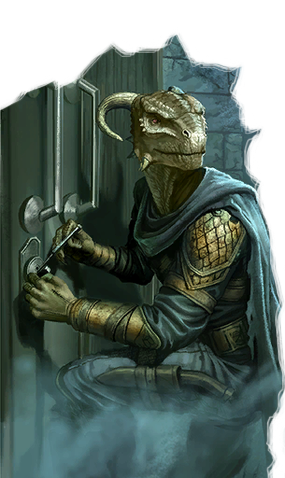
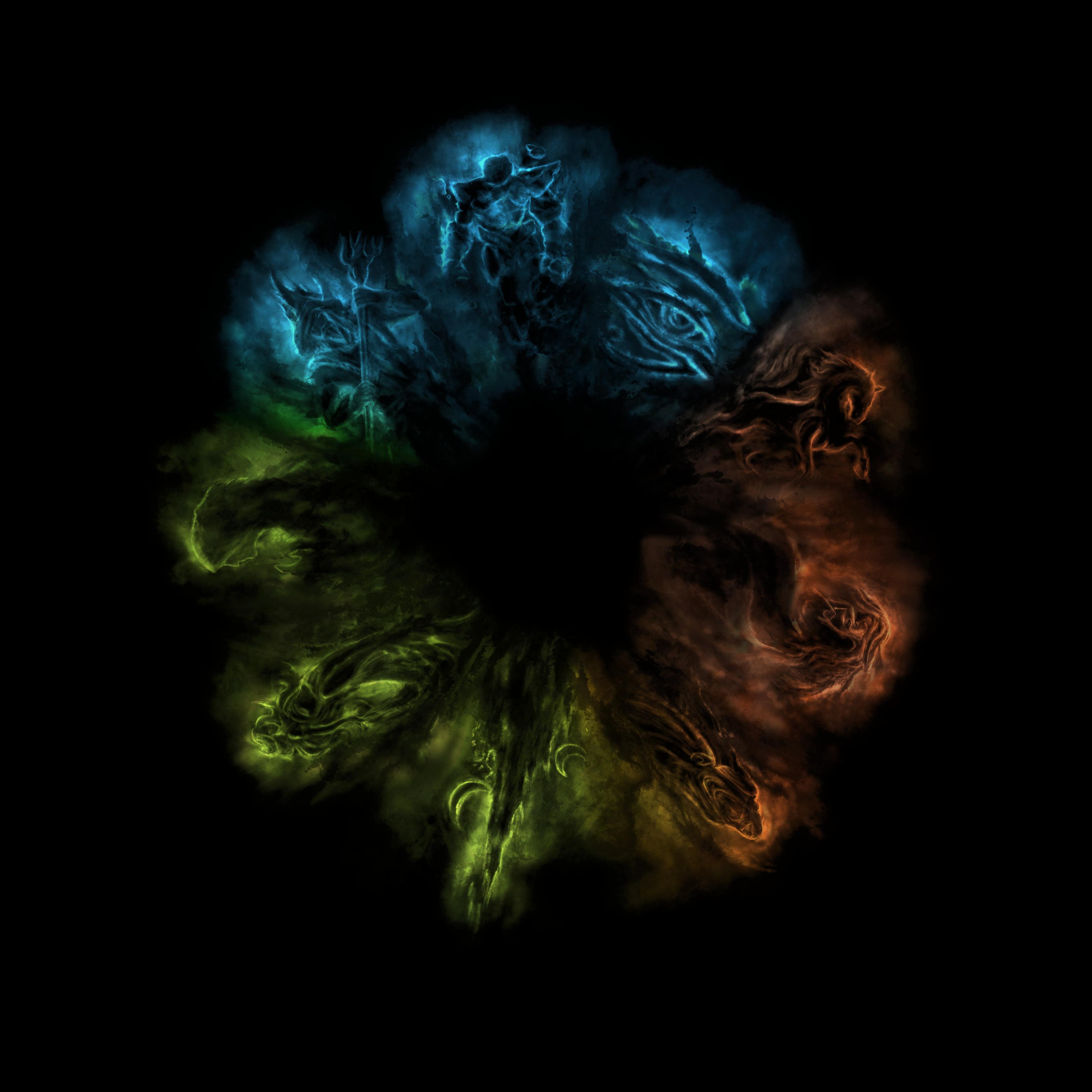
Chapter 3: Birthsigns
The Stars of Tamriel are divided into thirteen constellations. Three of them are the major constellations, known as the Guardians. These are the Warrior, the Mage, and the Thief. Each of the Guardians protects its three Charges from the thirteenth constellation, the Serpent.
When the sun rises near one of the constellations, it is that constellation's season. Each constellation has a Season of approximately one month. The Serpent has no season, for it moves about in the heavens, usually threatening one of the other constellations.
Those destined to make great change are bestowed with gifts depending on their birthsign.
The Guardian Signs of the Firmament
The Warrior
The Warrior is the first Guardian Constellation and he protects his charges during their Seasons. The Warrior's own season is Last Seed when his Strength is needed for the harvest. His Charges are the Lady, the Steed, and the Lord. Those born under the sign of the Warrior are skilled with weapons of all kinds, but prone to short tempers.
Warwyrd
Those born under the sign of the Warrior may add +1 to either their Constitution or Strength ability scores.
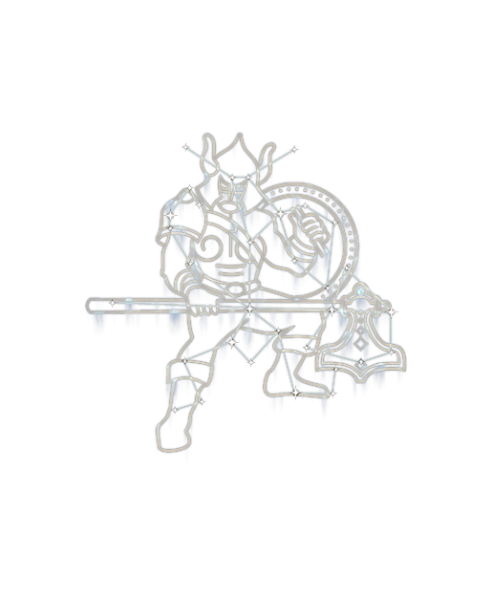
The Mage
The Mage is a Guardian Constellation whose Season is Rain's Hand when magicka was first used by men. His Charges are the Apprentice, the Golem, and the Ritual. Those born under the Mage have more magicka and talent for all kinds of spellcasting, but are often arrogant and absent-minded.
Fay
Those born under the sign of the Mage may add +1 to either Intelligence or Wisdom.
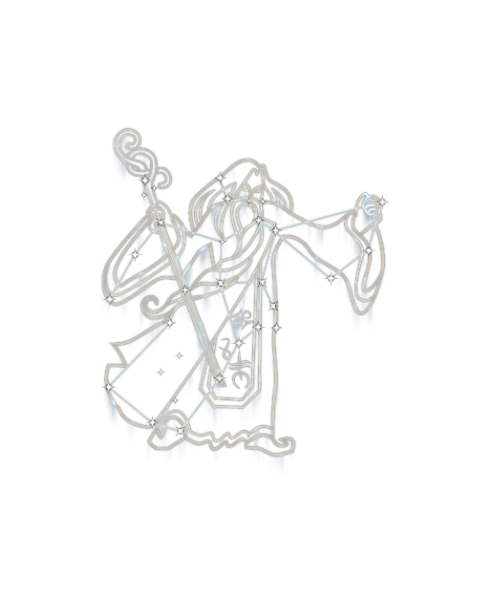
The Thief
The Thief is the last Guardian Constellation, and her Season is the darkest month of Evening Star. Her Charges are the Lover, the Shadow, and the Tower. Those born under the sign of the Thief are not typically thieves, though they take risks more often and only rarely come to harm. They will run out of luck eventually, however, and rarely live as long as those born under other signs.
Hara
Those born under the sign of the Thief may add +1 to either Dexterity or Charisma.
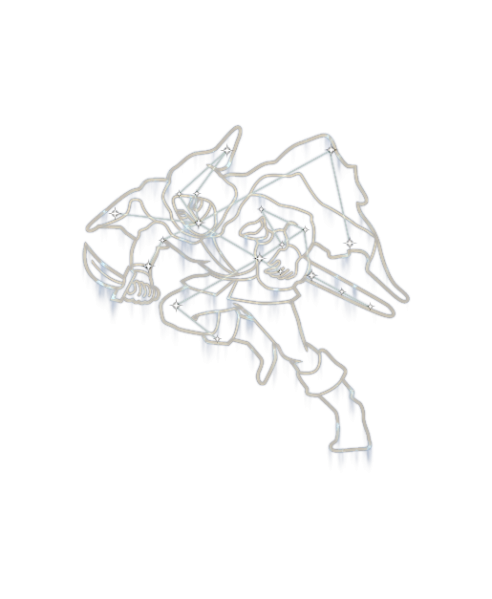
The Warrior's Charges
The Lady
The Lady is one of the Warrior's Charges and her Season is Heartfire. Those born under the sign of the Lady are kind and tolerant.
Lady's Favor
Those born under the sign of the Lady may add their Constitution modifier to their hit points twice when leveling up, instead of once.
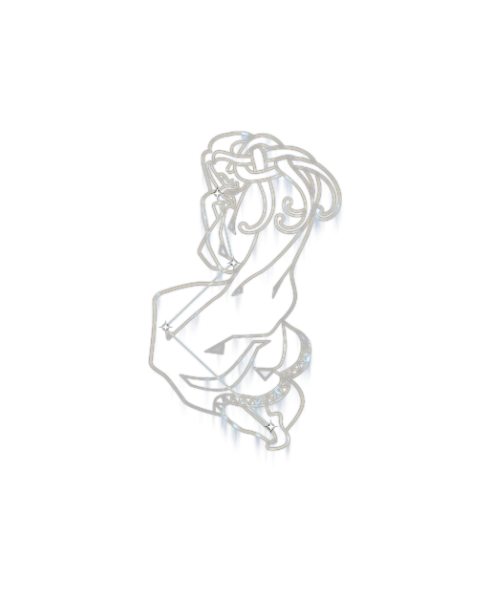
The Steed
The Steed is one of the Warrior's Charges, and her Season is Mid Year. Those born under the sign of the Steed are impatient and always hurrying from one place to another.
Charioteer
Those born under the sign of the Steed gain an additional 5 feet of speed.
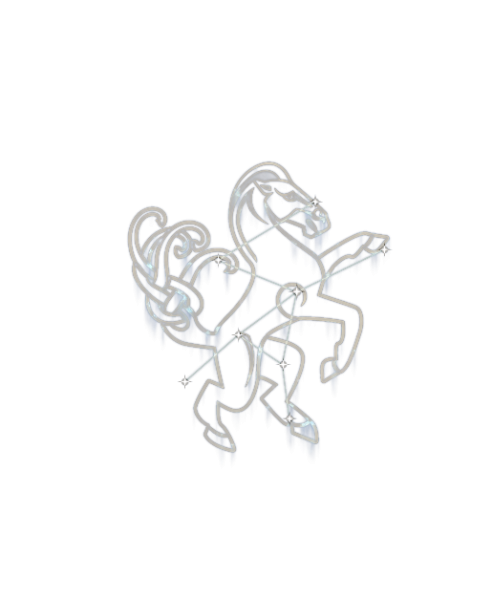
The Lord
The Lord's Season is First Seed and he oversees all of Tamriel during the planting. Those born under the sign of the Lord are stronger and healthier than those born under other signs.
Trollkin
You are naturally vulnerable against Fire damage.
Blood of the North
Power
- Casting Time: 1 action
- Range: Self
- Components: S
- Duration: 3 rounds
Your Lordly blood heals you for 3 points at the beginning of each of your turns for the duration of the power. You may use this power only once per long rest.
At Higher Levels. When using this power at 3rd level or higher, you may add an additional 1 hit point for every three character levels above 1st.
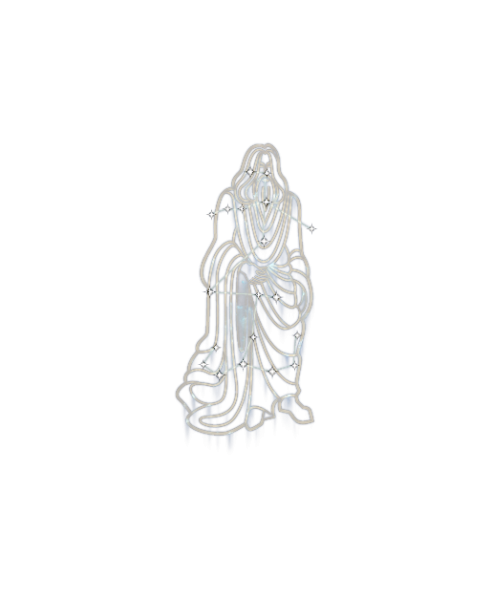
The Mage's Charges
The Apprentice
The Apprentice's Season is Sun's Height. Those born under the sign of the apprentice have a special affinity for magic of all kinds, but are more vulnerable to magic as well.
Elfborn
You have disadvantage on saving throws against magic.
Magical Talent
You have an additional 1st-level spell slot. At level 1, you record a single spell from the schools of Alteration, Destruction, or Illusion to your spellbook, and may record an additional spell of your choice every 3 levels, as long as the spell is of a spell slot you have access to.
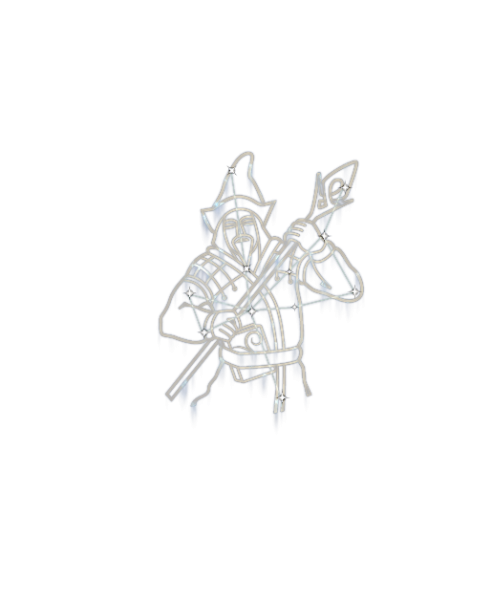
The Atronach
The Atronach's season is Sun's Dusk. Those born under this sign are natural sorcerers with deep reserves of magicka, but they cannot generate magicka of their own.
Stunted Magicka
You cannot regain spell slots above level 3 through a rest. Cantrips require a 1st-level spell slot to cast. To regain these spell slots, you must be the target of a hostile spell. You will gain a spell slot of equal spell level to what was cast on you.
Wombburn
You have an additional two 1st-level spell slots, and may record an additional spell each level, as allowed by your class and available spell slot levels. If your class is not a spellcasting class, you instead choose a 1st-level spell every 3 levels from from Alteration, Destruction, Illusion, or Restoration, and have as number of 1st-level spell slots equal to your intelligence modifier.
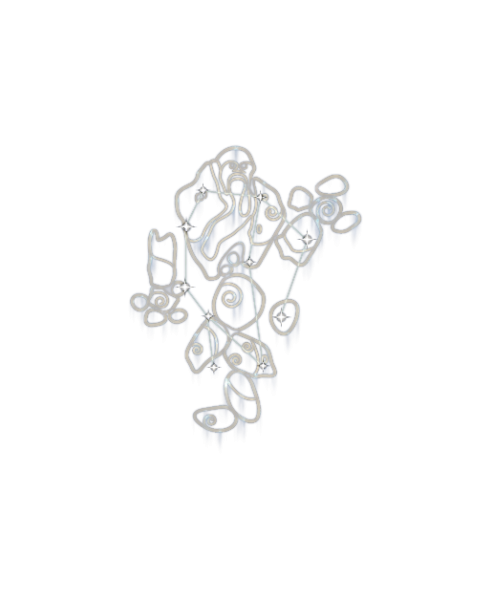
The Ritual
The Ritual is one of the Mage's Charges and its Season is Morning Star. Those born under this sign have a variety of abilities depending on the aspects of the moons and the Divines.
Mara's Gift
Power
- Casting Time: 1 action
- Range: Self
- Components: S
- Duration: Instantaneous
Once per short or long rest, you may restore an amount of hit points equal to 1d6 + your primary attribute modifier.
Blessed Word
Power
- Casting Time: 1 action
- Range: 30 feet
- Components: S
- Duration: Concentration, up to 1 minute
All undead within a 10 foot sphere within range are frightened. You may use this power once per long rest.
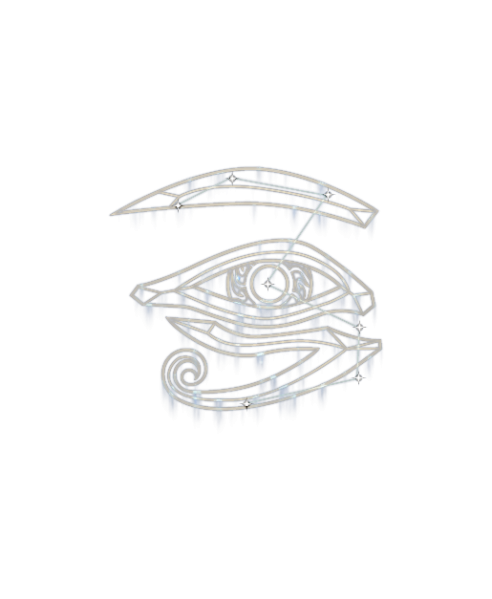
The Thief's Charges
The Lover
The Lover is one of the Thief's Charges and her season is Sun's Dawn. Those born under the sign of the Lover are graceful and passionate.
Mooncalf
Those born under the sign of the lover have proficiency in Performance, Persuasion, and Athletics.
Lover's Embrace
Power
- Casting Time: 1 action
- Range: Touch
- Components: S
- Duration: 2 rounds
You reach out to embrace a creature. The target must make a Willpower saving throw against your Mysticism Spell Save DC. If it fails, your innate aetherial energy paralyzes it for the duration of the power. You may use this power once per long rest.
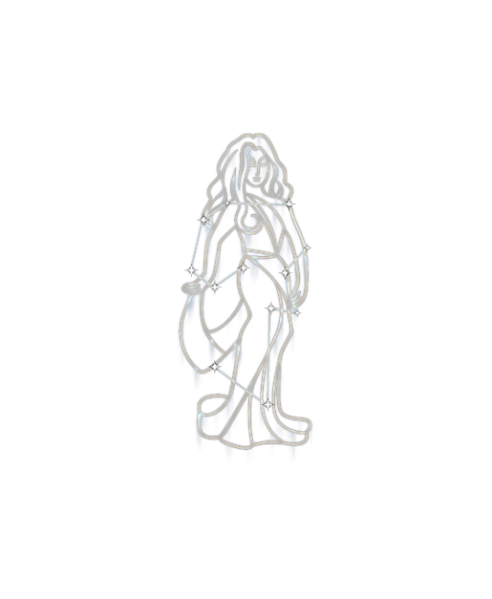
The Shadow
The Shadow's Season is Second Seed. The Shadow grants those born under her sign the ability to hide in shadows. They often go unnoticed even when their presence should be obvious.
Moonshadow
Power
- Casting Time: 1 action
- Range: Self
- Components: S
- Duration: 1 minute
When using this power, you and the items you carry are invisible. This invisibility lasts until either the duration ends, or you declare an action, including picking up an item or opening a door.

The Tower
The Tower is one of the Thief's Charges and its Season is Frostfall. Those born under the sign of the Tower have a knack for finding gold and can open locks of all kinds.
Tower Key
Power
- Casting Time: 1 action
- Range: Touch
- Components: S
- Duration: Instantaneous
Once per long rest, you may unlock any object locked by non-magical means.
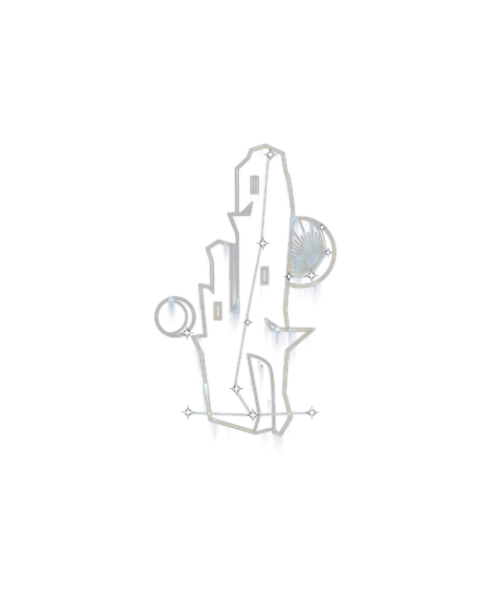
The Serpent
The Serpent wanders about in the sky and has no Season, though its motions are predictable to a degree. No characteristics are common to all who are born under the sign of the Serpent. Those born under this sign are the most blessed and the most cursed.
Star Curse
Power
- Casting Time: 1 action
- Range: Touch
- Components: S
- Duration: 30 seconds
Once per long rest, you can inflict poison on a creature that you touch, causing them to take 1d6 + your Primary attribute modifier's worth of poison damage per turn for the duration of the power. In addition, you take 1 point of psychic damage at the beginning of each turn for the duration of the power. The power ends after either the duration has passed, or the target has died.
Variant Rules
You may find it more rewarding to seek out Birth Stones, large dolmens that dot the landscape of Tamriel, holding the power of the constellations. By interacting with these Dolmens, you may be granted the powers that dwell within the stone, or activate the abilities of the birthsign you were born under. In using these variant rules, players should be allowed an additional +1 to their race's Ability Score Increase, of the player's choice.
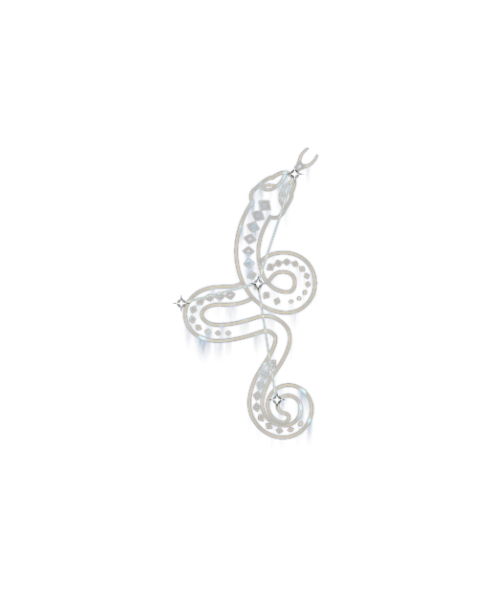
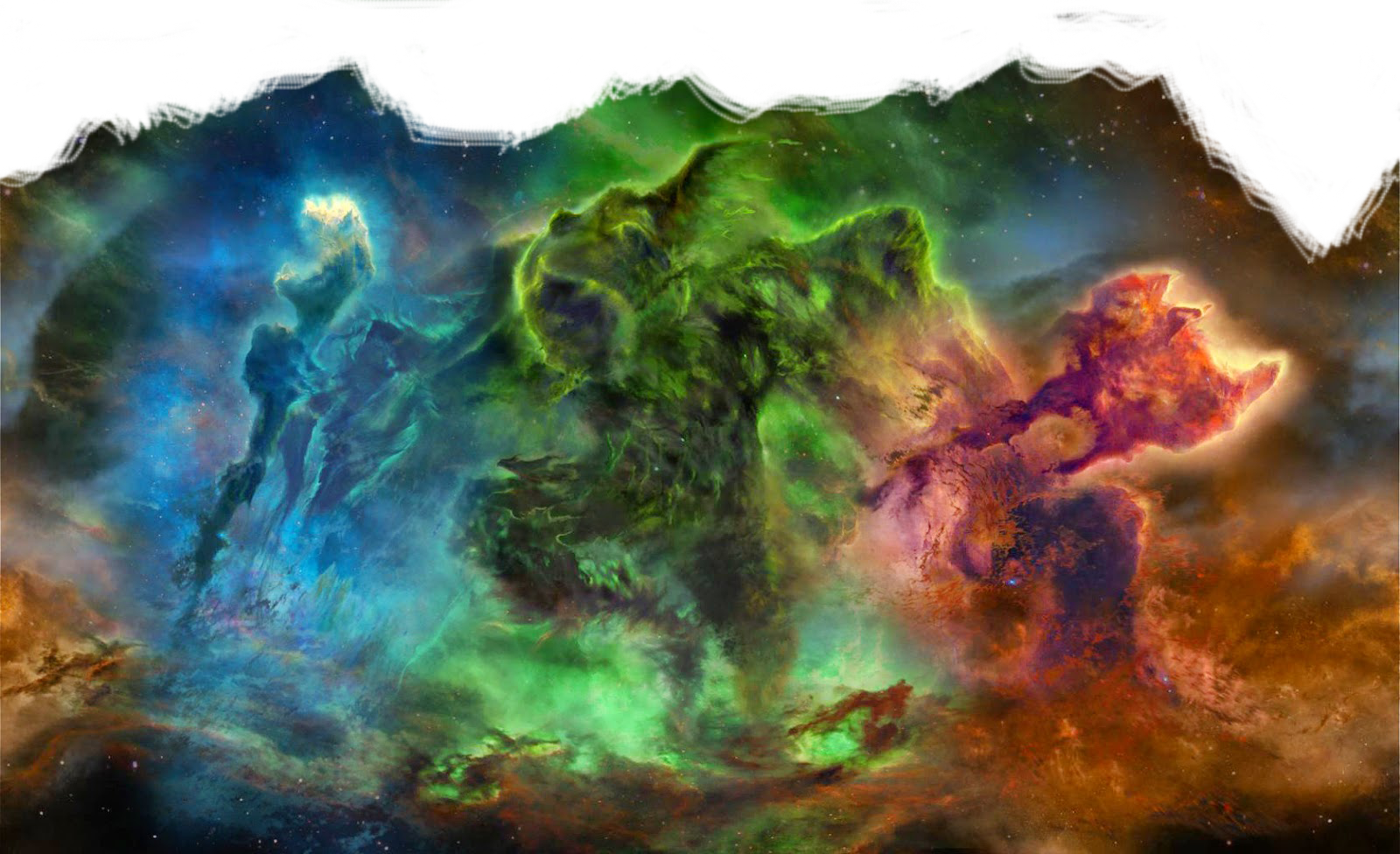
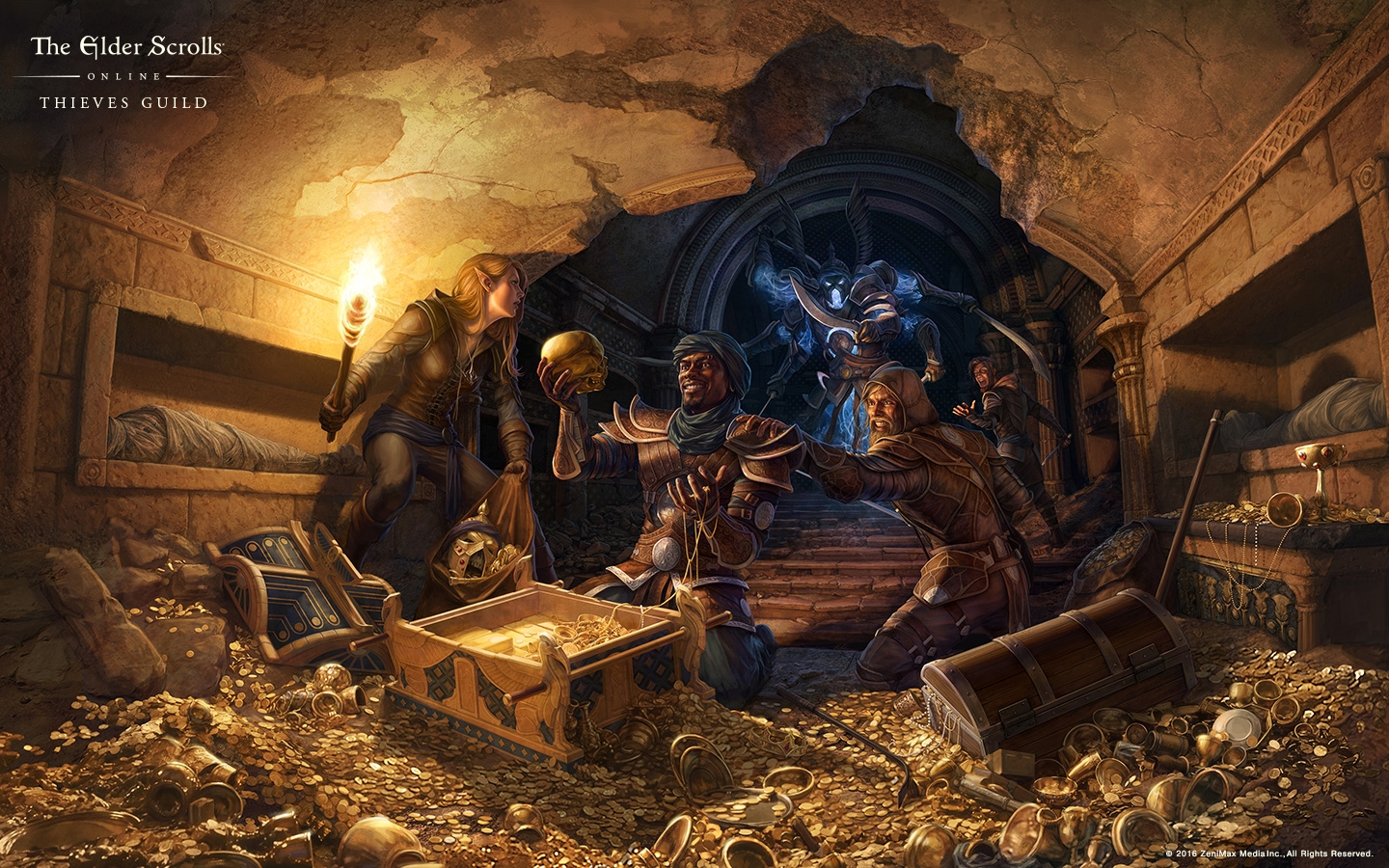
Chapter 4: Personality and Backgrounds
Though not startlingly different from the sections as laid out in the Player's Handbook, there are some notable differences in the Elder Scrolls setting regarding height/weight and language availability, in addition to starting equipment.
Height and Weight
The differences here amount to the changes in what races are available. While you can decide your character's height and weight according to the information provided in the race description you can also roll on the following table.
Random Height and Weight
| Race | Base Height | Height Modifier | Base Weight | Weight Modifier |
|---|---|---|---|---|
| Cyrodiil | 4'8 | +2d10 | 110 lb. | x (2d4) lb. |
| Breton | 4'8 | + 1d10 | 100 lb. | x (2d4) lb. |
| Nord | 5'9 | + 1d10 | 150 lb. | x (2d6) lb. |
| Redguard | 5'8 | 1d10 | 140 lb. | x (2d6) lb. |
| Altmer | 5'8 | +2d6 | 140 lb. | x (2d6) lb. |
| Bosmer | 4'8 | +2d6 | 90 lb. | x (2d4) lb. |
| Dunmer | 5'5 | + 2d6 | 130 lb. | x (2d4) lb. |
| Orsimer | 6' | + 2d6 | 200 lb. | x (2d6) lb. |
| Khajiit, Cathay | 5'10 | +2d6 | 190 lb. | x (2d6) lb. |
| Khajiit, Cathay-Raht | 6'2 | +2d6 | 210 lb. | x (2d6) lb. |
| Khajiit, Suthay | 4'8 | +2d4 | 110 lb. | x (2d4) lb. |
| Khajiit, Suthay-Raht | 5' | +2d4 | 120 lb. | x (2d4) lb. |
| Khajiit, Dagi | 3' | +1d4 | 40 lb. | x (2d4) lb. |
| Khajiit, Dagi-Raht | 3'4 | +1d4 | 50 lb. | x (2d4) lb. |
| Khajiit, Ohmes | 4'8 | +2d6 | 90 lb. | x (2d4) lb. |
| Khajiit, Ohmes-Raht | 4'8 | +2d10 | 110 lb. | x (2d4) lb. |
| Khajiit, Pahmar | 8' | +2d6 | 300 lb. | x (2d10) lb. |
| Khajiit, Pahmar-Raht | 8'4 | +2d6 | 310 lb. | x (2d10) lb. |
| Argonian | 5'10 | +1d4 | 200 lb. | x (2d6) lb. |
| Imga | 7' | +2d10 | 250 lb. | x (2d10) lb. |
Languages
Nirn holds various different languages, ancient and modern. As in standard 5e, your race indicates the languages your character can speak by default, and your background might give you access to one or more additional languages of your choice, which should be noted on your character sheet.
Standard Languages
| Language | Typical Speakers | Script |
|---|---|---|
| Tamrielic | All Races | Common |
| Nordic | Nords | Common |
| Yoku | Redguards | Common |
| Altmeris | Altmer, Bosmer, Bretons, Imga | Aldmeris |
| Bosmeris | Bosmer, Imga, Wood Orcs | Aldmeris |
| Dunmeris | Dunmer | Aldmeris |
| Orcish | Orsimer | Orcish |
| Ta'Agra | Khajiit | Ta'Agra |
Exotic Languages
| Language | Typical Speakers | Script |
|---|---|---|
| Ayleidoon | Ayleiids | Aldmeris |
| Ancient Nordic | — | Runic |
| Draconic | Dragons | Draconic |
| Dwemeris | Dwemer | Dwemeris |
| Falmeris | Falmer | Falmeris |
| Daedric | Daedra | Daedric |
| Kothringi | Kothringi | Tamrielic |
| Sload | Sload | Sloadic |
| Pyandonean | Maomer | Pyandonean |
| Hist | Argonians | None |
| Jel | Argonians | Common |
Starting Equipment
As in standard 5e, each class starts with a certain amount of wealth. Some classes are no longer present, and others have been added in their place. For these additional classes, pay attention to the Starting Wealth by Class table.
Starting Wealth by Class
| Class | Funds |
|---|---|
| Conjurer | 4d4 x 10 gp |
| Healer | 5d4 x 10 gp |
| Knight | 5d4 x 10 gp |
| Mage | 4d4 x 10 gp |
Backgrounds
There are several new backgrounds available in the Elder Scrolls setting, although the official backgrounds are all still available. Some of these backgrounds may relate to a specific race or class, while others are open for all to choose.
Hearthfriend
You have spent your life as a member of the Ashlander Tribes of Morrowind. Perhaps you were born in one of the major tribes, you may be an outcast, or you might be an outlander who performed some good deed for the tribe, and have been named an ally of the clan and adopted into it. Regardless, to an Ashlander, the worship of the Dunmeri Tribunal is heretical, and the lives of Dunmer in established cities is confusing. Ashlanders rely on the land, and prefer to make their own living with honor and Wisdom. You are not necessarily a Ranger or Barbarian -- many Ashlanders make their livings as merchants, healers, and in other professions. Steeped in ancient Velothi tradition, they follow the ways of their ancestors, and praise the Daedric princes Azura, Boethiah, and Mephala. Besides the Tribunal, they despise Malacath, Sheogorath, Mehrunes Dagon, and Molag Bal.
Working with your character's last name, Azura, Boethiah, or Mephala(listed in Appendix B), work with your DM to detail the most important aspects of Ashlander faith on your character's lifestyle. Faith is important among the Ashlander Tribes, and may have a hand in determining what inspires you to act. Additionally, work with your DM to determine how your status as an Ashlander brought your character to where they are now. Ashlanders rarely get involved in the affairs of non-Dunmer. Once per short or long rest, you may cast Commune with Spirits without expending a spell slot, calling upon your ancestors to assist you in a task.
Typically, only a Dunmer born in an Ashlander tribe will take this background. However, your DM may allow you to choose it as a different race.
Feature: Ancestor Guardian
You can call upon your ancestors to help guide you where you need to go. As an Ashlander, communication with the spirits of your ancestors is an important rite. When a tribe is at a loss, they often seek the wisdom of those who came before them.
Suggested Characteristics
Ashlanders are xenophobic, and hold non-ashlanders, even fellow Dunmer, in contempt -- moreso than most Dunmer of Morrowind already do when it comes to outlanders. Despite this, Ashlanders are honor-bound, and value integrity and wisdom. Favors are never forgotten among these tribes. Those of this background are typically of Lawful alignments, though there are outliers.
There are specific Ashlander tribes, and Ashlanders typically have names that are different from most modern Dunmer, picking names that more closely resemble those of their Velothi ancestors.
Ashlander Names: (Male) Abassel, Ainat, Babur, Kaushad, Shabinbael, (Female) Ahanabi, Dissu, Hainab, Kushihi, Yenabi, (Surname) Ashunabi, Assattadaisha, Enturnabealul, Ulirbabi, Zeba-Adad
Ashlander Tribes: (Mainland) Kagesh, Mabrigash, Ulash, Vereansu (Vvardenfel) Ahemmusa, Erabenimsum, Urshilaku, Zainab
| d4 | Personality Trait | |
|---|---|---|
| 1 | I idolize an ancestor in my tribe, and I aspire his or her standards. | |
| 2 | I am slow to trust outsiders. They often wish to exploit our ancestral land. | |
| 3 | I've apprenticed myself to my tribe's wise woman, and want to learn the wisdom of the elders. | |
| 4 | There is nothing better than fresh Mazte. |
| d4 | Ideal | |
|---|---|---|
| 1 | Honor. I repay any debt I owe. (Lawful) | |
| 2 | Independance. Resdayn is for the Dunmer and only the Dunmer. (Chaotic) | |
| 3 | Tradition. The ancient traditions of our ancestors are sacred. (Lawful) | |
| 4 | Isolation. The only way to better ourselves is to remain uncorrupted by other civilizations. (Neutral) |
| d4 | Bond | |
|---|---|---|
| 1 | An important figure in my tribe has sent me on an mission. | |
| 2 | I owe a debt to an outlander, and seek to repay it so that I may return to my tribe with good conscience. | |
| 3 | I wish to emulate an ancestral hero, who traveled the land and slew monsters. | |
| 4 | I dislike tribal living, and seek to enter modern society. |
| d4 | Flaw | |
|---|---|---|
| 1 | My accent is difficult for non-Ashlanders to understand. | |
| 2 | My clothing brings unwanted attention when I am away from my tribe. | |
| 3 | I once desecrated the tomb of my tribe's most revered ancestor. | |
| 4 | I was cast out of my tribe. |
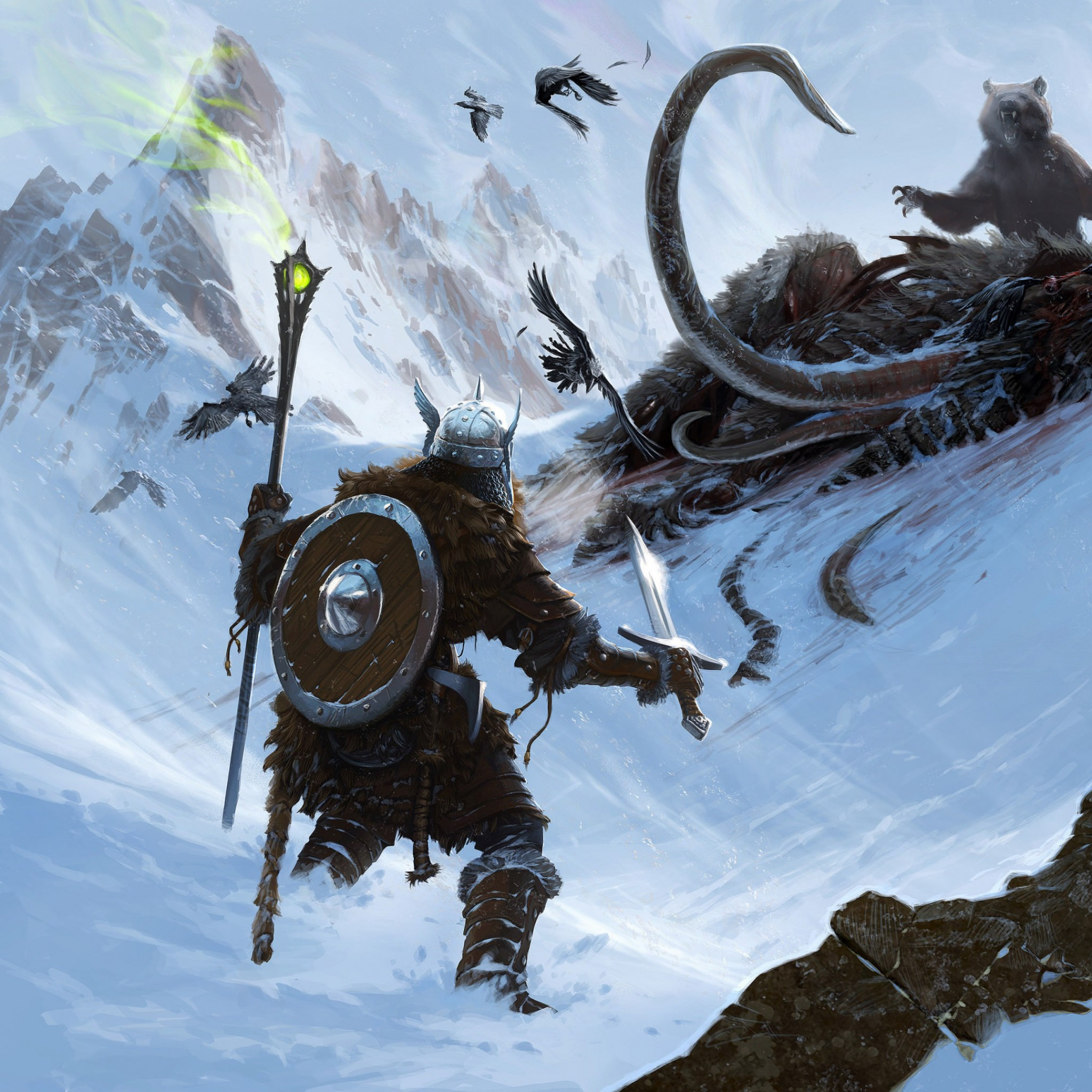

Chapter 5: Customization Options
Much of the information needed in this section can be found in the Player's Handbook, but there are some updates to Multiclassing prerequisites, certain feats, as well as additional feats available.
Multiclassing
Multiclassing, as in standard 5e, allows you to gain levels in multiple classes. Doing so allows you to mix the abilities of those classes in order to realize a character concept not realized in one of the standard class options. This can be particularly useful in the Elder Scrolls universe, as certain spell schools are wholly unavailable to some classes, for example: Perhaps you want a Healer that doubles as a summoner for the group. Leveling into Sorcerer would immediately give you some of the basic spells necessary for such a character.
Prerequisites
The prerequisites stay largely the same as they are in standard 5e. However, certain classes no longer exist, and others have been added. The Multiclassing Prerequisites table contains the information necessary for these classes.
Multiclassing Prerequisites
| Class | Ability Score Minimum |
|---|---|
| Conjurer | Charisma 13 |
| Healer | Wisdom 13 |
| Knight | Strength 13 and Charisma 13 |
| Mage | Intelligence 13 |
Proficiencies
When you gain your first level in a class other than your initial class, you gain only some of the new class's starting proficiencies, as shown in the Multiclassing Proficiencies table.
Multiclassing Proficiencies
| Class | Funds |
|---|---|
| Conjurer | Light armor, simple weapons |
| Healer | Light armor, medium armor, shields |
| Knight | Light armor, medium armor, shields, simple weapons, martial weapons |
| Mage | — |
Class Proficiencies
When you gain a new level in a class, you get its features for that level. You don't, however, receive the class's starting equipment, and Channel Aura has additional rules when you're multiclassing.
Channel Aura
If you already have the Channel Aura feature and gain a level in a class that also grants the feature, you gain the Channel Aura effects granted by that class, but getting the feature again doesn't give you an additional use of it. You gain additional uses only when you reach a class level that explicitly grants them to you. Whenever you use this feature, you can choose any of the Channel Aura effects available to you from your two classes.
Feats
In this section, feats that have been added or changed will be shown. All feats from standard 5e are still available.
Enchanter
Prerequisites: An unenchanted item and the ability to cast at least one spell
Choose an unenchanted item and a spell that you know. You may enchant the item with your chosen spell, consuming a single spell slot for as long as the item remains enchanted, and an additional spell slot for the act of enchanting. The enchanted item has charges equal to you spellcasting modifier for the chosen spell at the time of enchanting. You may keep the item, or give it to someone else. If the item breaks, or the enchantment is somehow removed, you will regain the expended spell slot after a long rest.
Enchanting requires any materials needed for casting the spell, and uninterrupted concentration for 2 hours plus an additional hour for each spell level.
Magic Initiate
Choose a spell school: Alteration, Destruction, Illusion, Mysticism, or Restoration. You learn two cantrips of your choice from that school's spell list.
In addition, choose one 1st-level spell to learn from that same list. Using this feat, you can cast the spell once at its lowest level, and you must finish a long rest before you can cast it in this way again.
Ritual Caster
This feature has been removed.
Spell Sniper
Prerequisite: The ability to cast at least one spell
You have learned techniques to enhance your attacks with certain kinds of spells, gaining the following benefits:
- When you cast a spell that requires you to make an attack roll, the spell's range is doubled.
- Your ranged spell attacks ignore half cover and three-quarters cover
- You learn one cantrip that requires an attack roll. Choose the cantrip from the Alteration, Destruction, Illusion, Mysticism, or Restoration spell list.
PART 2
The Rules of Magic
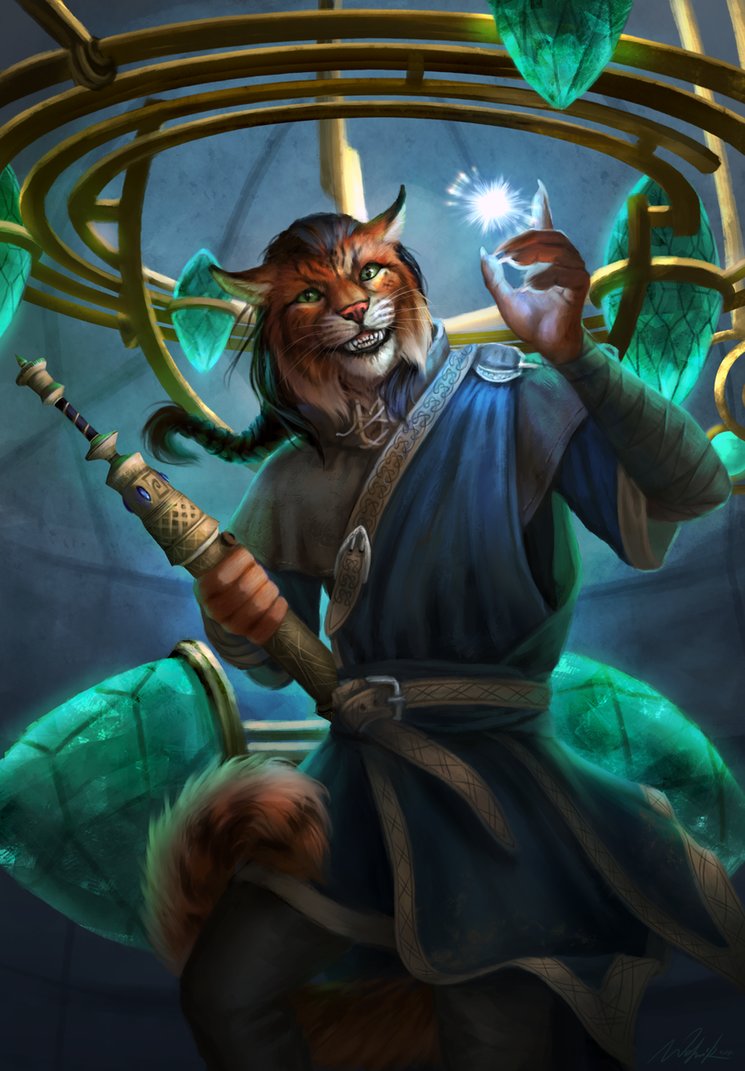
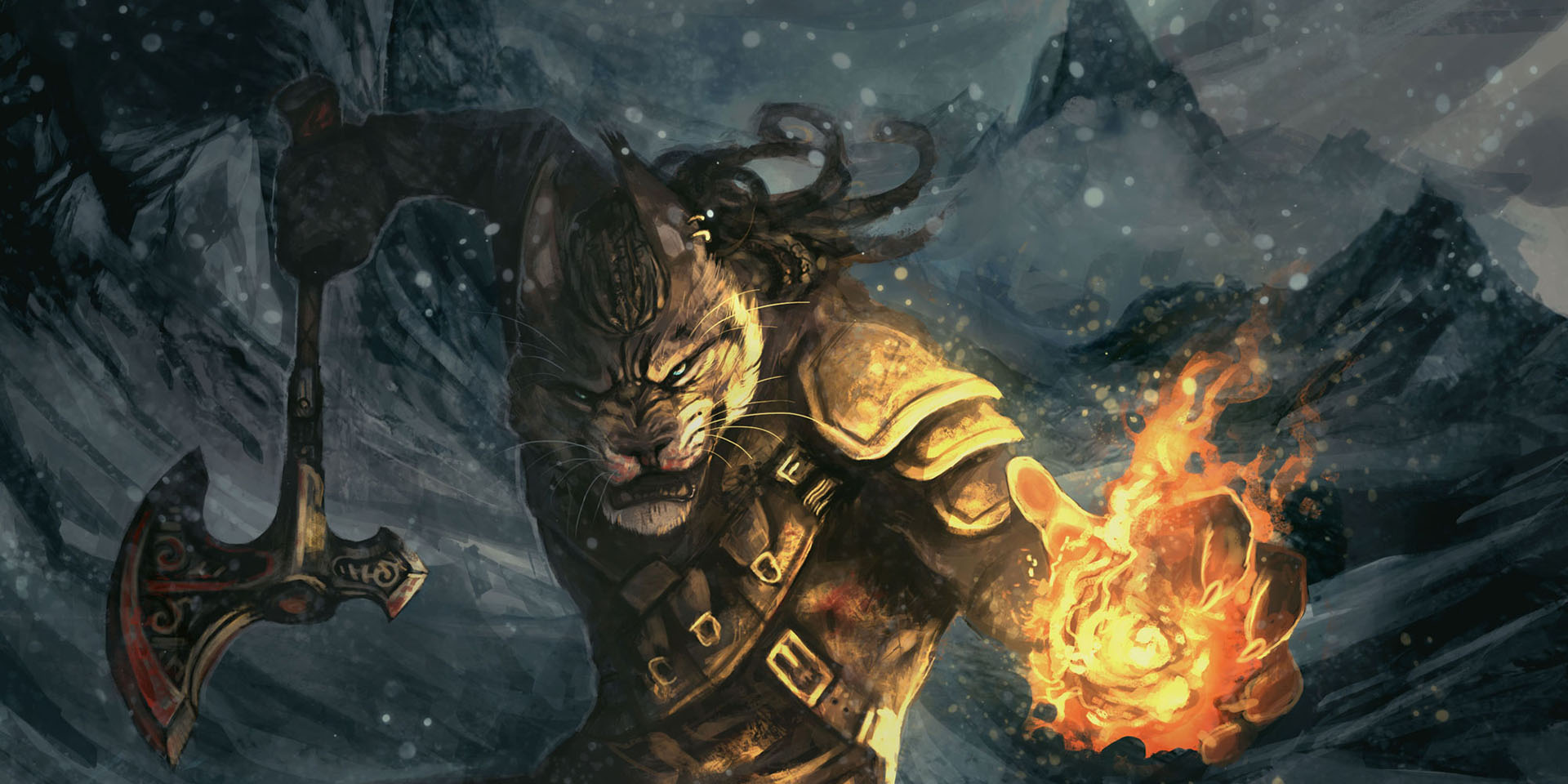

Chapter 6: Spellcasting
Magic permeats Tamriel, and most often appears in the form of a spell. This chapter provides the rules for casting spells. Different character classes have distinct ways of learning and preparing their spells, and monsters use spells in unique ways. Regardless of its source, a spell follows the rules as told in the Player's Handbook and here.
The Schools of Magic
In the Elder Scrolls universe, it is said that htere is no limit to what magic can or cannot do. Most magic comes from the Magickal forces of Aetherius, leaking down upon creation from the sun and stars and permeating everything it encounters. Theoretically, anyone can this magic, with the proper training. Without training, the most one can do is utilize an enchanted item or, with some knowledge, cast a spell from a scroll.
Yet other magic comes from an individual's soul, as shown by the power of the Thu'um--the language of the dragons-- and the ancient Yokudan Shehai, or spirit sword. The Dwemer found a way to tap into and manipulate the laws of Mundus itself, with use of their Tonal Architecture, an art lost to time. Out of concern for your mental well-being, we will only cover Magicka-based Magic here.
There are 7 schools of Magic in Tamriel: Mysticism, Restoration, Destruction, Alteration, Illusion, Conjuration, and Necromancy.
Spellcasting Ability
Each spell school has its own spellcasting modifier. This is usually Intelligence or Wisdom, however it can vary.
Spell save DC = 8 + your proficiency bonus + school spellcasting Modifier
Spell Attack Modifier = your proficiency bonus + school spellcasting Modifier
Alteration (Wisdom)
Spells in this school change the world around the caster so normal physical truths no longer hold. It is sometimes confused with Illusion magic, as both schools seek to change normal truths. Illusion magic, however, is not bound by the laws of nature but Alteration magic is. The power of Alteration comes from the fact that the nature of its changes applies to all, whereas Illusion magic affects only the caster and the target.
The spells of the school seem to have originated with the Ayleids of southern Cyrodiil no later than the second century of the First Era, when they used them to resist the armies of Alessia as they swept across the continent. Their mastery of such spells extended the siege of the area around what would later be Bravil by some time. The usefulness of the school in the art of war was illustrated again at the end of the first era, when the Imperial forces used it to outwit Vivec by sending an entire army underneath Lake Coronati to take the city of Ald Marak.
Typically, the spells boil down into the following types: shielding(including Paralysis), changing weights, water effects, actions on locks and movement through the air.
Conjuration (Charisma)
Conjuration magic is the art of summoning creatures or items from another plane. It has been practiced for centuries by witch covens and wizards throughout Tamriel. Clan Direnni's sorcerers were some of the first to formalize the rituals, chants, and incantations used to open a connection with the plane of Oblivion, many of which are still standard centuries later.
This school can be used to summon a wide range of daedric creatures, weapons and armor.
Summoned creatures fall into three groups. There are spells that call a daedra, from weak creatures such as scamps to more powerful ones like dremora. Others summon undead servants such as skeletons or wraiths. Lastly, some spells summon natural creatures - especially bears.
Summoned weapons and armor are daedric in nature, although often not as strong as normal daedric items. Unlike other magic, the ability to cast Conjuration spells is not diminished by heavy armor.
Destruction (Intelligence)
The school of Destruction is concerned with dealing damage to all forms of matter, both living and non-living, and with making matter more vulnerable to such damage. Mastery of Destruction magic may bring a certain amount of danger.
Destruction magic boils down to five basic types: elemental damage, value-draining, value-damaging, vulnerability, and disintegration.
Although these are the basic types of effect, other effects such as the damage inflicted by the sun upon vampires are often studied by mages skilled in Destruction magic. Many diseases can be viewed as a form of Destruction magic.
Illusion (Charisma)
Illusion is similar to Alteration magic in that it seeks to change the world around the caster so normal physical truths no longer hold, but while Alteration magic is bound by the laws of nature, Illusion magic is not. Its weakness comes from the fact that while Alteration affects the entire world, Illusion magic affects only the caster and the target. Illusion spells can change a target's visibility, produce or remove light, produce or remove noise, charm a creature, induce hatred in it or calm it down, enhance or remove a creature's courage,
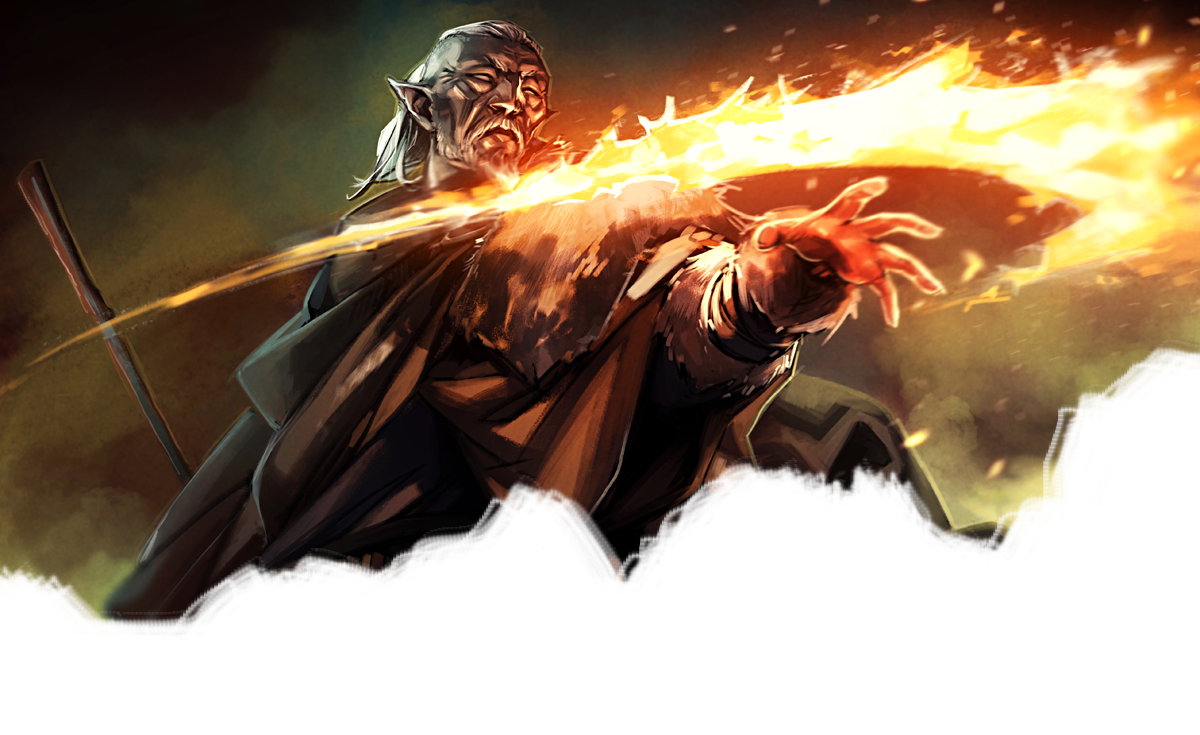
Casting a Spell
While casting spells work mostly the same as detailed in the Player's Handbook, it needs to be noted that most spells do not require a verbal component, but it may be useful for apprentice magic users, or those attempting to use a powerful spell, in order to increase concentration.
prevent a creature from seeing or moving, or allow the target to see even in total darkness.
Mysticism (Wisdom)
Mysticism is the school of magic least understood by the magical community. The art has been described as allowing a mage "to alter the nature of magic itself" and as involving "the manipulation of magical forces and boundaries to bypass the structures and limitations of the physical world." The spells in the school have their origins with the Psijic Order of Artaeum, who call their study the "Old Way", and the school has occasionally been referred to as the Way of the Psijic. The practice of Mysticism seems to require dealing with "conundrums and paradoxes" and abandoning logic to "embrace a temporary sort of insanity," which may lead the student to long-term harm if practiced without proper instruction. Its usage is common among the mystic Reachman shamans.
Transportation Spells
Transportation spells such as Mark, Recall, or an Intervention are used mainly in locations where a poorly-developed road network makes fast travel by horse impossible. They allow the caster to return to a previously-marked location, or to appear instantly at a location associated with power, such as a shrine.
Restoration (Constitution)
Restoration spells heal, restore, and fortify the body's attributes and abilities, cure disease, and protect it from other malign influences. The primary spells of this college heal wounds, cure disease, and restore lost vitality, but can also augment strength, endurance, intelligence, agility, and other bodily attributes. Absorption skills are also sometimes
considered part of this college, although they may also be classed as Mysticism magic.
Despite the incredible utility of Restoration spells, knowledge of them seems to have formed more recently those of other schools. Even now, spells to cure disease are rare. Because of the benevolent nature of this school, Restoration magic is very popular among religious workers.
Necromancy
Necromancy, also called the Necromantic Arts, Dark Arts, or Dark Practice, is the manipulation of the souls or corpses of the dead.
Necromancy has generally been considered immoral and illegal in most cultures, as it is believed to contravene the natural process of life and death and violate the sanctity of spirits. However, there have been significant exceptions, and various disreputable groups have employed necromancy as a tool of war throughout history. Much of the knowledge of it is often attributed to Daedric influences, specifically Molag Bal. Molag Bal is also the father of vampires, undead creatures who often practice and have a heightened affinity for necromancy, or work alongside necromancers. Vampirism is often understood to be a form of necromancy.
Necromancy will not be covered in the Adventurer's Guide to Tamriel.
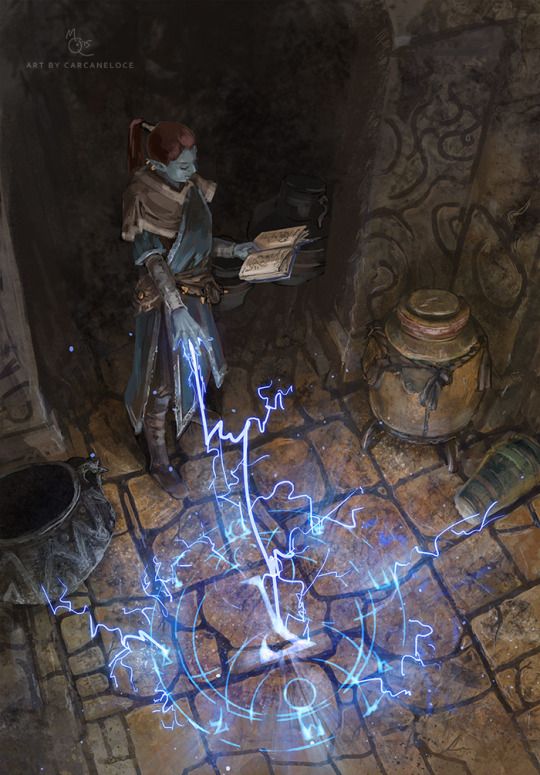

Chapter 7: Spells
This Chapter describes the most common spells in the Elder Scrolls universe. The chapter begins with the spell lists of the 7 Schools of magic. The remainder contains spell descriptions presented in alphabetical order by the name of the spell. Brand-new spells will be listed with details under their lists, however spells taken from the Player's Handbook or other supplements will not have their information listed. For spell sources, the author highly recommends Elminster's Guide to Magic and Divination, Ebonclad, the Player's Companion, and Balasar's Guide to Exploration, in addition to the official sourcebooks. If a spell is listed on the list, but not in the following detail section, it can be assumed that it is taken from one of these sources. Where possible, entries have been placed leading you to the source of spells provided by these books.
Alteration Spells
Cantrips
- Alter Flames
- Buoyancy
- Candlelight
- Chop(Ritual)
- Copy Text
- Fortify
- Mending
- Beast Finder
- Vero's Knock
1st Level
- Alarm(Ritual)
- Barrier(Ritual)
- Burdening Touch
- Dictate
- Doorjam
- Feather
- Gust Form
- Leaf
- Magesoap
- Oakflesh
- Piercing Strike
- Sanction
- Shieldbearer
- Stonefist
- Take Initiative
2nd Level
- Alter Weapon
- Lifelink(Ritual)
- Batvision
- Bouyancy
- Bravery
- Fire Shield(Ritual)
- Frost Barrier(Ritual)
- Handhold
- Hearing
- Hypothermia
- Lightning Shield(Ritual)
- Lucksap
- Elemental Shield
- Razorskin
- Shatter
- Spellstrike
- Spellstance
- Spike Growth
- Sustain Rage
3rd Level
- Animate Objects
- Awaken
- Banish Darkness
- Burden
- Clarity
- Cloudburst(Ritual)
- Control Temperature(Ritual)
- Grace
- Heat Metal
- Hold Breath
- Hunting Weapon
- Longstrider
- Magnetism
- Quicken Blade
- Seeksword
- Sleep
- Tinur's Hoptoad
4th Level
- Anyspell
- Calm Wind
- Corrode
- Lightning Arrow
- Ondusi's Unhinging
- Radiant Crown
- Restful
- Rope Trick
- Slowfall
- Spider Climb
- Stone Shape
- Water Walking
5th Level
- Control Water
- Conduit
- Lend Strength
- Levitate
- Meld into Stone(Ritual)
- Mighty Touch
- Passwall
- Water Breathing
6th Level
- Alteration Mantle
- Harden
- Imbue
- Swift Quiver
- Tremor(Ritual)
- Wind Walk
7th Level
- Grow
- Shrink
8th Level
- Awaken, Mass
- Drain Heat
- Equilibrium
- Transmute
9th Level
- Reverse Gravity
- Wish
Alarm
1st-level Alteration
See Player's Handbook, page 211.
Alter Flames
Alteration Cantrip
- Casting Time: 1 action
- Range: 30 feet
- Components: S
- Duration: 1 minute
You motion your hands toward a flame, choosing one of the following effects:
- The flame changes color.
- The flame flickers, brightens, or dims.
- The flame grows or shrinks by a small amount, increasing or reducing its light radius by 5 feet.
- The flame becomes silent.
- The flame causes a sound like a wildfire.
- A harmless puff of embers flies out of the fire.
If you cast this spell multiple times, you can have up to three of its 1-minute effects active at a time, and you can dismiss such an effect as an action.
Alter Weapon
2nd-level Alteation
- Casting Time: 1 action
- Range: Touch
- Components: S, M(an equipped unenchanted weapon, which is transformed by the spell)
- Duration: 10 minutes
While holding a weapon, you channel magicka into it, causing one of the following effects of your choice:
Enflame. In addition to its regular attack, your weapon now deals 1d6 fire damage.
Healing Strike. Your weapon now heals its target for its regular damage as hit points, instead of dealing damage. Undead targets instead take the regular damage as radiant damage.
Static Bite. Your weapon now deals an additional 1d6 electric damage.
Swift Strike. You have advantage on attack rolls with this weapon.
Screaming Cleave. Your weapon now deals an additional 1d6 thunder damage.
Viscious Tear. Regardless of the weapon's damage type, it now deals an additional 1d8 slashing damage.
The weapon has 3 charges of this effect imbued into it. The spell ends when all are expended, or the duration ends.
At Higher Levels. When you cast this spell using a spell slot of 3rd or higher, you gain an additional charge for each spell slot level above 2nd.
Alteration Mantle
6th-level Alteration
See Azuth's Alteration Mantle in Elminster's Guide to Magic, page 31.
Animate Objects
3rd-level Alteration
See Player's Handbook, page 213.
Anyspell
4th-level Alteration
See Elminster's Guide to Magic, page 30.
Awaken
3rd-level Alteration
See Player's Handbook, page 216.
Awaken, Mass
8th-level Alteration
See Elminster's Guide to Magic, page 31.
Banish Darkness
3rd-level Alteration
See Abolish Darkness in Elminster's Guide to Magic, page 24.
Barrier
1st-level Alteration(ritual)
- Casting Time: 1 action
- Range: Touch
- Components: S
- Duration: 1 minute
An invisible barrier of magical force appears and protects whatever creature you choose to touch, including yourself. For 1 minute, the target of this spell has resistance to bludgeoning, slashing, and piercing damage from nonmagical sources, and they take no damage from Magic Missile.
Batvision
2nd-level Alteration
- Casting Time: 1 action
- Range: Touch
- Components: S, M(a pinch of guano)
- Duration: Concentration, up to 10 minutes**
You touch a creature and grant it blindsight to 60-feet for the duration.
At Higher Levels. When you cast this spell using a spell slot of 3rd level or higher, the spell’s duration increases by 10 minutes for each slot level above 2nd.
Beast Finder
Alteration Cantrip
- Casting Time: 1 action
- Range: Self
- Components: S
- Duration: Concentration, up to 10 minutes
For the duration, you know if there is an animal within 30 feet of you, as well as where they are located.
This spell can penetrate most barriers, but is blocked by 1 foot of stone, 1 inch of common metal, a thin sheet of lead, or 3 feet of wood or dirt.
Bravery
2nd-level Alteration
See Cloak of Bravery in Elminster's Guide to Magic, page 45.
Buoyancy
2nd-level Alteration
- Casting Time: 1 action
- Range: Self
- Components: S
- Duration: 10 minutes
For 10 minutes, you will float to the top of any body of liquid, unable to sink. During this time you may not dive. You will take no damage when falling into water from a great height. You also gain swim speed equal to your walking speed + 10 feet.
Burden
3rd-level Alteration
- Casting Time: 1 action
- Range: 30 feet
- Components: S
- Duration: 30 seconds
For 30 seconds, any creature within 30 feet of you will have their movement reduced to 3 feet, and may not dash.
Burdening Touch
1st-level Alteration
- Casting Time: 1 action
- Range: Touch
- Components: S
- Duration: 1 minute
One creature you touch will have their movement reduced to 3 feet, and may not dash for the duration of the spell.
Calm Winds
4th-level Alteration
See Elminster's Guide to Magic, page 40.
Candlelight
Alteration Cantrip
- Casting Time: 1 action
- Range: 10 feet
- Components: S, M(an unlit candle)
- Duration: 1 hour
You cause an unlit candle to float within range, lighting itself with a magical blue flame. The light provides a 15-foot radius of bright light, followed by a 5-foot radius of dim light.
Chop
Alteration Cantrip
- Casting Time: 1 action
- Range: Touch
- Components: S
- Duration: Instantaneous
You touch a nearby simple object, such as a pile of wood, a tree, a brick, or a loaf of bread. The object is instantly split in two.
Clarity
3rd-level Alteration
See Clarity of Mind in Elminster's Guide to Magic, page 44.
Cloudburst
3rd-level Alteration
See Elminster's Guide to Magic, page 45.
Conduit
5th-level Alteration
See Elminster's Guide to Magic, page 46.
Control Temperature
rd-level Alteration
See Elminster's Guide to Magic, page 46.
Control Water
5th-level Alteration
See Player's Handbook, page 227.
Copy Text
Alteration Cantrip
See Amanuensis in Elminster's Guide to Magic, page 27.
Corrode
4th-level Alteration
- Casting Time: 1 action
- Range: 20 feet
- Components: S, M(a flake of rust)
- Duration: Concentration, up to 1 minute ___**** You may target any mechanical creature or metallic item. The target object begins to rust, weakening each turn, and becoming more liable to break. A Constitution saving throw with disadvantage must be made for the creature or object(In the case of an object, assume a base score of 8) whenever it takes an action or is used. If it fails, it breaks immediately.
If the corrode spell is continued for the full minute, it is permanently corroded, and must be repaired to avoid breakage.
Dictate
1st-level Alteration
See Dictation in Elminster's Guide to Magic, page 53.
Doorjam
1st-level Alteration
- Casting Time: 1 action
- Range: Touch
- Components: S
- Duration: Instantaneous
Magical energy sprouts from your fingers and locks and lockable object you touch. To unlock the object, an unlocking spell must be used, or a creature can attempt to pick the lock. The lockpicking DC is 10.
At Higher Levels. When you cast this spell using a spell slot of 2nd or higher, the lockpicking DC increases by 2 for each slot level above 1st.
Drain Heat
8th-level Alteration
See Heat Drain in Elminster's Guide to Magic, page 72.
Elemental Shield
2nd-level Alteration
See Energized Shield in Elminster's Guide to Magic, page 61.
Equilibrium
8th-level Alteration
- Casting Time: 1 Bonus Action
- Range: Self
- Components: S
- Duration: Instantaneous
Some of your blood becomes Magicka. You gain 1 level of exhaustion, and you take psychic damage equal to half of your maximum health. In exchange, you gain 5 temporary spell slots for each spell level you have available.
Feather
1st-level Alteration
- Casting Time: 1 action
- Range: Self
- Components: S, M(a bird's feather)
- Duration: 1 hour
You feel light as a feather. You get +1 to your athletics and acrobatics checks, and +5 to your movement for the duration of the spell.
At Higher Levels. When you cast this spell with a spell slot level of 2nd or higher,you gain an additional +1 to your athletics and acrobatics checks, and an additional +1 to your movement for each spell slot level above 1st. When you cast this spell with a spell slot of 5th level, you may cast this spell on other creatures that you can see within 30 feet.
Fire Shield
2nd-level Alteration
See Player's Handbook, page 242.
Fortify
Alteration Cantrip
- Casting Time: 1 action
- Range: Self
- Components: S
- Duration: 1 round
For the duration of the spell, you gain temporary hit points equal to 1d4, and you add that same number as a bonus to your next saving throw against exhaustion or becoming frightened before the end of your next turn.
At Higher Levels. When you cast this cantrip with a spell slot of 1st spell level or higher, the spell lasts an additional round for each spell slot level of 1st or higher. In addition, if cast with a 3rd-level spell slot, you gain 2d4 temporary hit points instead of 1d4, and may add an additional 1d4 at spell slot levels 5, 7, and 9.
Frost Barrier
2nd-level Alteration
- Casting Time: 1 action
- Range: Self
- Components: S, M(a bit of snow or ice)
- Duration: 10 minutes
Tendrils of icy air wreathe your body for the duration, reflecting light in a 10 foot radius. You can end the spell early by using an action to dismiss it.
The Ice provides you with a protective shield or a chill shield, as you choose. The protective shield raises your AC by +2. The chill shield grants you resistance to fire damage.
In addition, whenever a creature within 5 feet of you hits you with a melee attack, the ice shards fling themsleves from the shield to the attacker. The attacker takes 2d8 cold damage.
Grace
3rd-level Alteration
See Elminster's Guide to Magic, page 69.
Grow/Shrink
7th-level Alteration
See Enlarge/Reduce in Player's Handbook, page 237.
Gust Form
1st-level Alteration
- Casting Time: 1 bonus action
- Range: 30 feet
- Components: S, M(a small fan)
- Duration: 1 round
You choose one friendly creature within range as the spell's target. Until the end of the creature's next turn, any melee attack it makes with an unarmed strike or a natural weapon (such as a claw, bite, or tail) carries the force of the wind, giving that attack a reach of 20 feet.
Handhold
2nd-level Alteration
See Easy Climb in Elminster's Guide to Magic, page 57.
Harden
6th-level Alteration
See Hardening in Elminster's Guide to Magic, page 71.
Hearing
2nd-level Alteration
See Far Hearing in Elminster's Guide to Divination, page 16.
Heat Metal
3rd-level Alteration
See Player's Handbook, page 250.
Hold Breath
3rd-level Alteration
- Casting Time: 1 action
- Range: Touch
- Components: S, M(a drop of water)
- Duration: 1 hour
The target may hold its breath for up to 1 hour.
Hunting Weapon
3rd-level Alteration
- Casting Time: 1 action
- Range: Touch
- Components: S, M(an equipped unenchanted weapon, which is transformed by the spell)
- Duration: Concentration, up to 1 minute
You infuse an equipped weapon with an alignment.
Good. Aberrations, Dragons, elementals, or undead.
Evil. Beasts, celestials, humanoids, or plants.
Chaotic. Constructs, angels, fey, or giants.
Lawful. Aberrations, Daedra, monstrosities, or oozes.
Until the spell ends, the weapon inflicts an additional die of force damage against the types of creatures listed for the chosen alignment. You can not infuse the weapon with an alignment you do not hold.
Hypothermia
2nd-level Alteration
See Creeping Cold in Elminster's Guide to Magic, page 48.
Imbue
6th-level Alteration
- Casting Time: 1 action
- Range: 30 feet
- Components: S, M(a filled soul gem)
- Duration: Instantaneous
You attempt to imbue an object with the powers of a spell that you know. Roll a Wisdom saving throw. If successful, the item is imbued with the spell's power, permanently. The item has an amount of charges equal to your Wisdom modifier, and must be recharged with a filled soul gem in order to use the spell's power again.
This spell consumes the filled soul gem.
Leaf
1st-level Alteration
See Elminster's Guide to Magic, page 82.
Lend Strength
5th-level Alteration
See Champion's Strength in Elminster's Guide to Magic, page 42.
Levitate
5th-level Alteration
- Casting Time: 1 action
- Range: Self
- Components: S, M(either a small leather loop or a piece of gold wire bent into a cup shape with a long shank on one end)
- Duration: Concentration, up to 1 hour
You lift yourself off the ground, floating into the sky. For the duration of the spell, you have a flying speed equal to your walking speed. If you are airborne when the spell ends, you immediately fall, taking 1d8 bludgeoning damage for every 10 feet you fall.
Lifelink
2nd-level Alteration
See Blood Bond in Elminster's Guide to Magic, page 36.
Lightning Arrow
4th-level Alteration
See Player's Handbook, page 255.
Lightning Shield
2nd-level Alteration(ritual)
- Casting Time: 1 action
- Range: Self
- Components: S, M(a bit of snow or ice)
- Duration: 10 minutes
Snapping sparks surround your body for the duration, giving off dim light in a 30 foot radius. You can end the spell early by using an action to dismiss it.
The Electricity provides you with a light-emiting shield or a sparking shield, as you choose. The light-emiting shield provides 30 feet of bright light around you, pushing the natural dim lighting 30 feet beyond that. The sparking shield grants you resistance to lightning damage.
In addition, whenever a creature within 5 feet of you hits you with a melee attack, the tendrils of electricity arc from the shield to the attacker. The attacker takes 6d4 lightning damage.
Longstrider
3rd-level Alteration
See Player's Handbook, page 256.
Lucksap
3rd-level Alteration
- Casting Time: 1 action
- Range: 60 feet
- Components: S, M(a rabbit's foot)
- Duration: Concentration, up to 1 minute
When you cast this spell, you bestow a minor curse on a creature you can see within range. That creature must make a successful Wisdom saving throw, or suffer your choice of one of the following effects for the duration:
Foil. The target has disadvantage on ability checks and saving throws with an ability of your choice.
Fumble. The target has disadvantage on attack rolls against you for the spell’s duration.
Foul. Your attacks and spells deal an extra 1d8 necrotic damage to the target until the spell ends.
Magesoap
1st-level Alteration
See Elminster's Guide to Magic, page 44.
Magnetism
3rd-level Alteration
See Elminster's Guide to Magic, page 85.
Meld Into Stone
5th-level Alteration
See Player's Handbook, page 259.
Mending
Alteration Cantrip
See Player's Handbook, page 259.
Mighty Touch
5th-level Alteration
- Casting Time: 1 action
- Range: Touch
- Components: S
- Duration: Concentration, up to 1 minute
You touch a willing creature, and the target is imbued with the strength, resilience, and bearing of a dragon. For the duration, the target gains advantage on Strength, Constitution, and Charisma saving throws as well as on Strength checks, Constitution checks, Charisma checks, and attack rolls which include its Strength modifier. In addition, until the spell ends, it gains a +2 bonus to AC, and magic cannot cause it to fall asleep or become paralyzed.
Oakflesh
1st-level Alteration
See Barkskin in Player's Handbook page 217.
Ondusi's Unhinging
4th-level Alteration
- Casting Time: 1 action
- Range: Touch
- Components: S, M(a thin twig)
- Duration: Instantaneous
Circling your hands around a lock, you make an attempt to magicaly open it. Roll a wisdom saving throw against the lock's DC. If succesful, the lock breaks, and you may open the
previously-locked object.
At Higher Levels. When using this spell with a slot level of 5th or higher, you may lower the DC of the lock by 1 for each slot level above 4th.
Passwall
5th-level Alteration
See Player's Handbook, page 264.
Piercing Strike
1st-level Alteration
See Piercing Smite in Elminster's Guide to Magic, page 94.
Quicken Blade
2rd-level Alteration
See Blade Storm in Elminster's Guide to Magic, page 34.
Radiant Crown
4th-level Alteration
See Crown of Light in Elminster's Guide to Magic, page 49.
Razorskin
2nd-level Alteration
- Casting Time: 1 action
- Range: Touch
- Components: S, M(a dagger, which is consumed by the spell)
- Duration: Concentration, up to 1 minute
Your target's skin transforms into razor sharp scales. Its Armor Class cannot be lower than 15, no matter what armor it wears. In addition, any creature that grapples it or hits it with a melee attack during the duration must roll a Dexterity saving throw. On a failed save, the creature takes 2d4 slashing damage, or half as much on a successful one.
At Higher Levels. When you cast this spell using a spell slot of 3rd level or higher, the damage increases by 1d4 for each slot level above 2nd.
Restful
4th-level Alteration
- Casting Time: 1 action
- Components: S, M(a comfy pillow)
- Range: Touch
- Duration Up to 24 hours
For the next 24 hours, or until the target completes a long rest(whichever comes first), the target only requires 1 hour to complete a long rest.
Reverse Gravity
9th-level Alteration
See Player's Handbook, page 272.
Rope Trick
4th-level Alteration
See Player's Handbook, page 272.
Sanction
1st-level Alteration
See Divine Sanction in Elminster's Guide to Magic, page 53.
Seeksword
3rd-level Alteration
- Casting Time: 1 action
- Range: Self(60-foot radius)
- Components: S
- Duration: Concentration, up to 1 minute
When you cast this spell, all weapons within 60 feet glow with aetherial energy for the duration of the spell. Glowing weapons give off dim light in a 10-foot radius.
Shatter
2nd-level Alteration
See Player's Handbook, page 275.
Shieldbearer
1st-level Alteration
See Elminster's Guide to Magic, page 108.
Sleep
3rd-level Alteration
See Player's Handbook, page 276.
Slowfall
4th-level Alteration
See Feather Fall in Player's Handbook, page 239.
Spellstrike
2nd-level Alteration
- Casting Time: 1 bonus action
- Range: Self
- Components: S
- Duration: Concentration, up to 1 minute
You may use your Wisdom modifier instead of your Strength or Dexterity Modifier for melee weapon attack and damage rolls. Your melee weapon attacks also deal an additional 1d4 force damage.
Spellstance
2nd-level Alteration
- Casting Time: 1 bonus action
- Range: Self
- Components: S
- Duration: Concentration, up to 1 minute
For the duration of the spell, you cannot be forced to drop a one-handed weapon you are currently holding. You may also add your Wisdom modifier to your AC while wielding a light or simple melee wepaon.
Spider Climb
4th-level Alteration
See Player's Handbook, page 277.
Spike Growth
2nd-level Alteration
See Player's Handbook, page 277.
Stonefist
1st-level Alteration
- Casting Time: 1 action
- Range: Self
- Components: S, M(a rock the size of your palm)
- Duration: 1 minute
When you cast this spell, one of your fists becomes stone for the duration. You have advantage on grapple checks and any ability checks to break objects using the stone fist.
In addition, your unarmed strikes with the fist deal an amount of bludgeoning damage equal to 1d8 + your Strength modifier.
At Higher Levels. When you cast this spell using a spell slot of 3rd level or higher, the amount of bludgeoning damage increases by 1d8 for every two slot levels above 1st.
Stone Shape
4th-level Alteration
See Player's Handbook, page 278.
Swift Quiver
6th-level Alteration
See Player's Handbook, page 279.
Sustain Rage
2nd-level Alteration
- Casting Time: 1 bonus action
- Range: Touch
- Components: S
- Duration: Special
You touch a creature that has the Rage class feature (such as a barbarian). The next time it uses this feature to Rage, that use does not count against any limit that feature imposes on how often it can be used.
Take Initiative
1st-level Alteration
See Nerveskitter in Elminster's Guide to Magic, page 91.
Tinur's Hoptoad
3rd-level Alteration
- Casting Time: 1 action
- Range: Touch
- Components: S, M(a grasshopper's hind leg)
- Duration: 1 minute
You touch a creature, the creature’s jump distance is tripled until the spell ends.
Transmute
8th-level Alteration(ritual)
- Casting Time: 1 hour
- Range: 10 feet
- Components: S, M(a piece of iron)
- Duration: Instantaneous
This spell may only be cast as a ritual, its stats above have been adjusted as such.
You magically inscribe Daedric runes spelling out "I AM WORTHY" onto a slab of iron. At the end of the ritual, the slab of iron turns into a slab of silver.
Tremor
6th-level Alteration
- Casting Time: 1 action
- Range: 10 feet
- Components: S
- Duration: Instantaneous
You cause a tremor in the ground within range. Each creature other than you in that area must make a Dexterity saving throw. On a failed save, a creature takes 6d6 bludgeoning damage and is knocked prone. If the ground in that area is loose earth or stone, it becomes difficult terrain until cleared, with each 5-foot diameter portion requiring at least 1 minute to clear by hand.
At Higher Levels. When you cast this spell using a spell slot of 7th level or higher, the damage increases by 1d6 for each slot level above 6th.
Vero's Knock
Alteration Cantrip
- Casting Time: 1 action
- Range: 30 feet
- Components: S
- Duration: Instantaneous
You use magic to knock on an object you can see within range, gathering the attention of any creatures nearby.
Water Breathing
5th-level Alteration
See Player's Handbook, page 287.
Water Walking
4th-level Alteration
See Water Walk, in Player's Handbook, page 287.
Wind Walk
6th-level Alteration
See Player's Handbook, page 288.
Wish
9th-level Alteration
See Player's Handbook, page 288.
Conjuration
Cantrip
- Azura's Rain
- Conjure Wisp
- Create Item
- Create or Destroy Water
- Bind Familiar
- Mehrunes' Smoke
- Meridia's Grasp
1st Level
- Analyze Portal
- Bound Weapon
- Clannfear's Nose
- Coldharbor's Rain
- Conjure Horse
- Conjure Lesser Daedra
- Empathy
- Ensnaring Strike
- Watcher
2nd Level
- Bound Armor
- Conjure Animals
- Conjure Herbs
- Daedraspit
- Goodberry
- Hunger's Nose
- Lava Shot
- Nocturnal's Hand
- Vaermina's Shroud
3rd Level
- Atronach's Spear
- Bound Shield
- Hermaeus' Tooth
- Herne's Claws
- Mephala's Web
- Secret Chest
4th Level
- Hall of Oblivion
- Hermaeus Mora's Grasp
- Peryite's Blood
5th Level
- Expel Daedra
- Teleportation Circle
6th Level
- Dimension Door
- Void Form
7th Level
- Hero's Feast
8th Level
- Demiplane
- Plane Shift
9th Level
- Daedric Mansion
- Soul Curse
Atronach's Spear
3rd-level Conjuration
- Casting Time: 1 action
- Range: 30 feet
- Components: V, S, M(a clear crystal worht at least 50GP)
- Duration: Instantaneous
A large spear-like shard of ice appears in the air next to you. Choose a target within range, and make a ranged spell attack. If the attack hits, the target takes 3d6 piercing damage, and 3d6 cold damage. In addition, the target must make a Constitution saving throw, or be stunned until the end of its next turn.
At Higher Levels. When you cast this spell using a spell slot of 4th level or higher, the amount of cold and piercing damage both increase by 1d6 for each slot level above 3rd.
Azura's Rain
Conjuration Cantrip
- Casting Time: 1 action
- Range: 60 feet
- Components: V, S
- Duration: Concentration, up to 1 minute
A shower of radiance falls upon your enemies and then bursts out, creating a cage of burning embers that are painful to pass through. Choose a 10-foot cube within range. Each creature in the cube must make a Dexterity saving throw, taking 1d4 radiant damage if it fails. Until the start of your next turn, the area of the cube is lightly obscured, and the next time a creature leaves the area, it takes 1d4 fire damage and the spell ends.
At Higher Levels. When you reach 5th level, the radiant damage and fire damage both increase to 2d4. Both damage rolls increase to 3d4 at 11th level, and 4d4 at 17th level.
Bind Familiar
Conjuration Cantrip
- Casting Time: 1 Bonus Action
- Range: Touch
- Components: S, M(an item agreeable to the creature being bound)
- Duration: Instantaneous
You attempt to bind a creature as your familiar. The creature must be from a plane of Oblivion, whether you are currently in a plane, or you have summoned it. The creature must make a Charisma save, if successful it resists your attempts to bind it and may become hostile. Otherwise it submits to you. If you attempt to bind it while in its home plane of Oblivion, it gets +3 to its Charisma saving roll.
If succesful, you gain the service of it as a permanent familiar. Your familiar acts independently of you, but it always obeys your commands. In combat, it rolls its own initiative and acts on its own turn.
When the familiar drops to 0 hit points, it disappears, leaving behind no physical form, and the pact is broken.
When your familiar is within 100 feet of you, you can communicate with it telepathically. Additionally, as an action, you can see through your familiar's eyes and hear what it hears until the start of your next turn, gaining the benefits of any special senses that the familiar has. During this time, you are deaf and blind with regard to your own senses.
As an action, you can temporarily dismiss your familiar. It disappears into a pocket dimension where it awaits your summons. Alternatively, you can dismiss it forever. As an action while it is temporarily dismissed, you can cause it to reappear in any unoccupied space within 30 feet of you.
You can't have more than one familiar at a time. If you cast this spell while you already have a familiar, the pact with your previous familiar will be broken. It may leave, banish itself back to Oblivion, or become hostile to you, depending on how it was treated in your service.
Finally, when you case a spell with a range of touch, your familiar can deliver the spell as if it had cast the spell. Your familiar must be within 100 feet of you, and it must use its reaction to deliver the spell when you cast it. If the spell requires an attack roll, you use your attack modifier for the roll.
Bound Armor
2nd-level Conjuration
- Casting Time: 1 bonus action
- Range: Self
- Comonents: S
- Duration: 10 minutes
You conjure a Lesser Daedra in the shape of armor, perfectly fitted to your body, with an AC of 15. This armor is treated as Heavy Armor. The bound armor displaces your regular armor, which is placed into your bag.
If you unequip the armor, it disappears, and must be summoned again. It can also be Banished using the Banish or Expel Daedra spells.
At Higher Levels. When you cast this spell using a spell slot of 3rd level or higher, the AC increases by 1 for each level past 2nd.
Bound Shield
3rd-level Conjuration
- Casting Time: 1 bonus action
- Range: Self
- Comonents: S
- Duration: 10 minutes
You conjure a Lesser Daedra in the shape of a shield with an AC of 2. If you currently have a shield equipped, the bound shield displaces your regular shield, which is dropped to the ground.
If you unequip or otherwise drop the shield, it disappears, and must be summoned again. It can also be Banished using the Banish or Expel Daedra spells.
At Higher Levels. When you cast this spell using a spell slot of 4th level or higher, the AC is increased by 1 for every 3 levels past 3rd.
Bound Weapon
1st-level Conjuration
- Casting Time: 1 bonus action
- Range: Self
- Comonents: S
- Duration: 10 minutes
You conjure a Lesser Daedra in the shape of a weapon of your choosing. If you currently have a weapon equipped, the weapon displaces your regular weapon, which is dropped to the ground.
If you unequip or otherwise drop the weapon, it disappears, and must be summoned again. It can also be Banished using the Banish or Expel Daedra spells.
At Higher Levels. When you cast this spell using a spell slot of 2nd level or higher, the final damage from your attacks increases by 1 for each level past 1st.
Clannfear's Nose
1st-level Conjuration
- Casting Time: 1 action
- Range: Self
- Components: V, S, M(a clannfear's beak)
- Duration: 24 hours
When this spell is cast, your nose becomes a Clannfear's beak. For the duration of the spell, you have advantage on Wisdom (Survival) checks to track other creatures, and on all Wisdom (Perception) checks related to smell.
Additionally, if you lose a scent due to changing weather, you can make another check with advantage to pick up the trail.
Coldharbor's Rain
1st-level Conjuration
- Casting Time: 1 action
- Range: 100 feet
- Components: S, M(a drop of water)
- Duration: Concentration, up to 1 minute
You conjure up a cloud of acid rain from Coldharbor in a 10-foot radius, 40-foot cylinder. Anything caught within the cylinder must make a Dexterity saving throw. On a failed save, it must take 1d4 acid damage, while on a successful save it takes 1 damage.
At Higher Levels. When you cast this spell using a spell slot of 2nd level or higher, the radius increases by 5 feet for every level past 1st.
Conjure Animals
2nd-level Conjuration(Ritual)
- Casting Time: 1 action
- Range: 60 feet
- Components: V, S, M(a piece of the type of animal you wish to summon, ex. a patch of fur)
- Duration: Concentration, up to 1 hour
You summon Lesser Daedric Spirits that take the form of beasts with a challenge rating of 1 or less, and appear in unoccupied spaces that you can see within range. Each beast is considered a Daedra, and it disappears when it drops to 0 hit points or when the spell ends.
The summoned animal is friendly to you and your companions. Roll initiative for the creature, which has its own turns. It obeys any verbal commands that you issue to them (no action required by you). If you don't issue any commands to them, they run away from hostile creatures, but otherwise take no actions.
The DM has the creature's statistics.
You may only conjure a single animal at a time. Additionally, there is a 10% chance you will summon an angry, unruly bear instead. This bear will attack. The DM makes this roll in secret. If cast as a ritual, you will not summon an angry, unruly bear.
Conjure Herbs
2nd-level Conjuration
- Casting Time: 1 action
- Range: Self
- Components: S, M(soil, a gem worth 100GP)
- Duration: Instantaneous
You summon 5 herb seeds from the planes of Oblivion. You can grow them in a pot, and use them in alchemy or for profit. The herbs take one week to grow.
Conjure Horse
1st-level Conjuration(Ritual)
- Casting Time: 1 action
- Range: 30 feet
- Components: S, M(Daedra Heart)
- Duration: 1 hour
You summon a Daedric being in the shape of a horse, appearing in an unoccupied space that you can see within range. The Horse disappears when it drops to 0 hit points or until the spell ends.
The Caster must roll a Charisma saving throw with a DC of 10. If it succeeds, the horse is friendly to you and your companions for the duration. Roll initiative for the horse, which has its own turns.
It obeys any verbal commands that you issue to it(no action required by you). If you don't issue any commands to the Horse, it defends itself from hostile creatures but otherwise takes no actions.
If the caster fails their Charisma saving throw, the horse immediately runs off into the distance.
If cast as a ritual, you have advantage on your Charisma saving throw.
The horse has the stats of a Clannfear.
Conjure Lesser Daedra
1st-level Conjuration(Ritual)
- Casting Time: 1 action
- Range: 60 feet
- Components: V, S, M(an alchemical ingredient related to the daedra you're trying to summon, a filled soul gem worth 5GP, which is consumed by the spell)
- Duration: 1 hour
You summon a Lesser Daedra of your choice with a CR of 1 or lower, appearing in an unoccupied space that you can see within range. The Daedra disappears when it drops to 0 hit points or the spell ends.
The Caster must roll a Charisma saving throw with a DC equal to 15 + the Daedric creature's CR + the Daedric creature's Wisdom modifier. If it succeeds, the Lesser Daedra is friendly to you and your companions for the duration. Roll initiative for the Lesser Daedra, which has its own turns. It obeys any verbal commands that you issue to it(no action required by you). If you don't issue any commands to the Lesser Daedra, it defends itself from hostile creatures but otherwise takes no actions.
If the caster fails their Charisma saving throw, the Lesser Daedra immediately becomes hostile to you, and gets an opportunity attack against you in combat.
If cast as a ritual, you have advantage on your Charisma saving throw.
If the Lesser Daedra has an Intelligence modifier of +1 or higher, if you accept an item from it, even if it is bound as a familiar, the pact is broken, and it will become hostile to you.
The Lesser Daedra's statistics may be found in Appendix D: Creature Statistics. You may have an amount of summoned creatures equal to 1/4 your Conjurer level, rounded up (minimum of 1).
At Higher Levels. When you cast this spell using a spell slot of 2nd level or higher, the base DC(15) for your Charisma saving throw is reduced by 1 for each level above 1st. Additionally, the CR of Daedra you can cast is increased by 2 for each spell slot level above 1st.
Conjure Wisp
Conjuration Cantrip(Ritual)
- Casting Time: 1 action
- Range: 60 feet
- Components: S
- Duration: 1 hour
You summon a Wisp, appearing in an unoccupied space that you can see within range. The Wisp disappears when it drops to 0 hit points or the spell ends.
The Wisp obeys any verbal commands that you issue to it(no action required by you). If you don't issue any commands to the Wisp, it defends itself from hostile creatures but otherwise takes no actions.
The Wisp fights with its Illusion cantrips, and have a magical beam attack capable of 1d4 radiant damage. If cast as a ritual, the Wisp's attack will deal 1d6 radiant damage instead.
The Wisp's statistics may be found in Appendix D: Creature Statistics.
Daedric Spit
2nd-level Conjuration
- Casting Time: 1 action
- Range: 30 feet
- Components: V, S
- Duration: Instantaneous
You spit a bubble of liquid daedrons at your opponent. Make a ranged spell attack. If you hit, the target is blinded.
Expel Daedra
5th-level Conjuration
- Casting Time: 1 action
- Range: 60 feet
- Components: S
- Duration: Instantaneous
You target a single Daedra that you can see within range. This can include Bound Weapons, Armor, or Shields, Conjurered Daedra, or Daedra otherwise not native to the plane you are currently on. They must make a Wisdom save with disadvantage. If they fail, they are expelled back to their home plane.
Soul Curse
9th-level Conjuration(ritual)
- Casting Time: 1 hour
- Range: 600 feet
- Components: S, M(an effigy of your target made from materials worth at least 5000GP, a filled black soulgem)
- Duration: Instantaneous
You call on the Daedra with an offering of a soul, and a request for a curse. Be very specific as to your curse's effects and its target. Roll a Wisdom saving throw followed by a Charisma saving throw. If both are succesful, your target will suffer your curse. If your Wisdom roll succeeds, but your Charisma roll does not, the Daedric Prince that appears will scold you for wasting its time, and afflict you with the curse. If both throws fail, nothing happens. If the creature is not in range and both rolls are succesful, it will be trated as if your charisma roll had failed unless you pledge your soul to the Daedric prince. If you do so, you cannot be resurrected.
The curse cannot be lifted except by requesting the Daedric Prince that cast it to lift the curse.
The Soulgem and effigy are both consumed when casting this spell.
Destruction
Cantrip
- Fleabite
- Frostwind Blade
- Ignite
- Melt
- Chill
- Grease
- Gust
1st Level
- Burning Hands
- Frostbite
- Pinprick
- Flash
- Guiding Bolt
- Hex
- Kill Switch
- Magic Missile
- Piercing Smite
- Sparks
- Thundering Armor
- Torpor
- Wound
2nd Level
- Earth Bolt
- Elemental Blade
- Fireball
- Freeze
- Gust of Wind
- Lightning Arrow
- Moonbeam
- Radiant Fist
- Thunderwave
- Weakness to Fire
- Weakness to Frost
- Weakness to Shock
- Whip of Flame
3rd Level
- Blinding Smite
- Call Lightning
- Clumsy Touch
- Distracting Touch
- Fire Rune
- Flame Cloak
- Frost Rune
- Hailstone
- Hearthfire
- Ice Axe
- Searing Light
- Thunderclap
4th Level
- Burning Blade
- Harm
- Ice Spike
- Ice Cloak
- Lightning Rune
- Shockbloom
- Thunderlance
- Weakness to Magicka
5th Level
- Ball Lightning
- Chilling Frost
- Cone of Cold
- Gash Spirit
- Lesser Chainfire
- Lightning Cloak
- Spite
- Wall of Flames
- Winter's Grasp
6th Level
- Aedric Blast
- Burning Tempest
- Ennervate
- Sunbeam
- Whirlwind Cloak
7th Level
- Blizzard
- Delayed Blast Fireball
- Fire Storm
- Ice Wall
- Polar Ray
- Sever
8th Level
- Landslide
- Soulpinch
- Wall of Stone
- Wind Wall
9th Level
- Maelstrom
Blizzard
7th-level Destruction
- Casting Time: 1 action
- Range: 300 feet
- Components: S, M(a pinch of dust and a few drops of water)
- Duration: 5 rounds
You cast dust and water into the wind, summoning a hailstorm that quickly transitions into a snowstorm in a 50-foot radius, 40-foot high cylinder centered on a point in range. Until the storm subsides, each turn, each creature in the cylinder must make a Dexterity saving throw. A creature takes 3d8 cold damage on a failed save, or half as much on a successful save.
The snow causes bright light to become dim light, and dim light to become darkness, and the terrain becomes difficult terrain until the end of the storm.
At Higher Levels. When you cast this spell using a spell slot of 8th level or higher, the cold damage increases by 1d8 for each slot level above 7th.
Burning Blade
4th-level Destruction
- Casting Time: 1 action
- Range: Self
- Components: S, M(a drip of oil)
- Duration: 10 minutes
Your weapon glows with a mystical fire, providing bright light in a 20-foot radius, and dim light for an additional 20 feet. Melee attacks with your weapon will deal an additional 3d6 fire damage.
At Higher Levels. When you cast this spell using a spell slot of 5th level or higher, the extra damage increases by 1d6 for each slot above 4th.
Burning Tempest
6th-level Destruction
- Casting Time: 1 action
- Range: 300 feet
- Components: S, M(a cup filled with oil)
- Duration: 3 rounds.
You throw the oil from the cup into the wind, summoning a small tornado that quickly grows into a raging tempest of fire in a 50-foot radius, 40-foot high cylinder centered on a point in range. Until the storm subsides, each turn, each creature in the cylinder must make a Constitution saving throw. A creature takes 8d10 fire damage on a failed save, or half as much on a successful save.
The flames causes dim light within 60 feet to become bright light, and darkness within 60 feet to become dim light.
At Higher Levels. When you cast this spell using a spell slot of 7th level or higher, the cold damage increases by 1d10 for each slot level above 6th.
Chill
Destruction Cantrip
- Casting Time: 1 action
- Range: 30 feet
- Components: S
- Duration: Instantaneous
A creature that you can see within range begins to feel unnaturally cold. Unless they are resistant to cold damage, they will seek out warmth, and have -1 to passive perception.
At Higher Levels. As you grow in ability, you deal damage with this cantrip. At level 5, you deal 1d6 cold damage. At 10th level, you deal 2d6, at 15th, you deal 3d6, and at 20th, you deal 4d6 cold damage
Clumsy Touch
3rd-level Destruction
- Casting Time: 1 action
- Range: Touch
- Components: S
- Duration: 10 minutes
You touch a creature, in an effort to damage its Dexterity. The creature must roll a Dexterity saving throw. If the saving throw fails, the target creature loses 1d4 Dexterity for the duration of the spell, affecting their modifier as needed.
At Higher Levels. When you cast this spell using a spell slot of 4th level or higher, the creature loses 1d4 more Dexterity for each level above 4th. At 7th level, they have disadvantage on their Dexterity saving throw.
Distracting Touch
3rd-level Destruction
- Casting Time: 1 action
- Range: Touch
- Components: S
- Duration: 1 minute
The caster causes magical tendrils to touch a target creature an arms-length away at various points around its body. The creature temporarily loses 1d4 Intelligence for the duration of the spell.
Enervate
6th-level Destruction
- Casting Time: 1 action
- Range: 30 feet
- Components: S
- Duration: 1 hour
A target creature that you can see in range begins to feel exhausted. For the duration, they temporarily lose 1d4 points of Constitution, and their exhaustion increases by one level.
Fire Rune
3rd-level Destruction
- Casting Time: 1 Minute
- Range: 30 feet
- Components: S, M(three pebbles)
- Duration: 8 hours
You cast three pebbles to the ground in a triangular pattern, each pebble up to 10 feet apart. You then magically inscribe the words "TO ALL FOES, BURN" in the center of the triangle. Any creatures that enter the boundaries of the pebbles must make a Dexterity saving throw. A target takes 8d6 fire damage on a failed saving throw, or half as much damage on a successful one.
The rune disappears after 8 hours.
Fleabite
Destruction Cantrip
- Casting Time: 1 action
- Range: 10 feet
- Components: S
- Duration: Instantaneous
A creature that you can see within range takes 1 piercing damage. This does not initiate combat.
Frost Rune
3rd-level Destruction
- Casting Time: 1 Minute
- Range: 30 feet
- Components: S, M(three pebbles)
- Duration: 8 hours
You cast three pebbles to the ground in a triangular pattern, each pebble up to 10 feet apart. You then magically inscribe the words "CHILL TIDINGS UPON YOU" in the center of the triangle. Any creatures that enter the boundaries of the pebbles must make a Dexterity saving throw. A target takes 8d6 cold damage on a failed saving throw, or half as much damage on a successful one.
The rune disappears after 8 hours.
Gash Spirit
5th-level Destruction
- Casting Time: 1 action
- Range: 30 feet
- Components: S
- Duration: Instantaneous
You target any creature you can see within range, and weaken their ability to cast spells. The target creature loses a spell slot in their highest spell level. If they are already out of spell slots in their heighest spell level, they lose a spell slot in their next highest spell level.
At Higher Levels. When you cast this spell with a spell slot of 5th level or higher, the target loses an additional 1 spell slot for each spell slot level above 6th.
Grease
Destruction Cantrip
- Casting Time: 1 action
- Range: 60 feet
- Components: S, M(a pork ring and some butter)
- 1 minute
Slick grease covers the ground in a 10-foot square centered on a point within range and turns it into difficult terrain for the duration.
When the grease appears, each creature standing in its area must succeed on a Dexterity saving throw or fall prone. A creature that enters the area or ends its turn there must also succeed on a Dexterity saving throw or fall prone.
Creatures and objects covered in grease take an additional 1d when taking fire damage.
Gust
Destruction Cantrip
- Casting Time: 1 action
- Range: 10 feet
- Components: S, M(a feather)
- Duration: Instantaneous
You cause a noticeable momentary slight breeze, capable of putting out candles, or distracting creatures.
At Higher Levels. As you grow in ability, you deal damage with this cantrip. At level 5, you deal 1d4 force damage. At 10th level, you deal 2d4 and the target becomes prone, at 15th, you deal 4d4, and at 20th, you deal 5d4 force damage
Ice Spike
4th-level Destruction
- Casting Time: 1 action
- Range: 60 feet
- Components: S, M(a shard of ice)
- Duration: Instantaneous
A spear of ice forms in the air in front of your casting hand. You choose a creature that you can see within range. The ice spike flings itself at that creature. Make a ranged spell attack against the target. On hit, the target takes 4d8 cold damage. Any water that is hit by the ice spike is instantly frozen.
At Higher Levels. When casting this spell with a 5th level slot or higher, the damage increases by 1d8 for each slot level above 4th.
Ice Wall
7th-level Destruction(ritual)
- Casting Time: 1 minute
- Range: 300 feet
- Components: S, M(a cube of ice)
- Duration: 8 hours
You raise a wall of ice in a rectangular area, up to 14 feet tall, up to 20 feet long, and wide enough for a party to walk on in a single-file line. The wall has 100 hit points, and is weak to fire damage, but resistant to cold damage.
Ignite
Destruction Cantrip
- Casting Time: 1 action
- Range: 30 feet
- Components: S, M(a piece of flint)
- Duration: Instantaneous
An object of your choice that you can see within range catches fire. If any creature is making direct contact with the object, it takes 1d4 fire damage.
At Higher Levels. As you grow in ability, you deal more damage with this cantrip. At level 5, you deal 2d4 fire damage. At 10th level, you deal 3d4, at 15th, you deal 4d4, and at 20th, you deal 5d4 fire damage
Landslide
8th-level Destruction
- Casting Time: 1 minute
- Range: 300 feet
- Components: S
- Duration: Instantaneous
The ground just under the surface of a nearby mountain or hill of your choice within range liquefies, detaching the earth above it and sliding downhill. All creatures in its path must make a dexterity save. If they succeed, they escape the the slide itself, but take damage from debris, taking 1d4 force damage and becoming prone. Otherwise, they take 12d10 bludgeoning damage.
Lightning Cloak
5th-level Destruction
- Casting Time: 1 action
- Range: Self
- Components: S
- Duration: Concentration, up to 10 minutes
Sparks fly around your body, shedding dim light in a 30 foot radius for the spells duration. The sparks don't harm you. Until the spell ends, you gain the following benefits:
- You are immune to lightning damage and have resistance to force damage.
- Any creature that moves within 5 feet of you for the first time on a turn or ends its turn there takes 1d12 lightning damage.
- You can use your action to create a line of electricity 15 feet long and 5 feet wide extending from you in a direction you choose. Each creature in the line must make a Dexterity saving throw. A creature takes 4d10 lightning damage on a failed save, or half as much on a successful one.
Lightning Rune
4th-level Destruction
- Casting Time: 1 Minute
- Range: 30 feet
- Components: S, M(three pebbles)
- Duration: 8 hours
You cast three pebbles to the ground in a triangular pattern, each pebble up to 10 feet apart. You then magically inscribe the words "WHAT A SHOCKER" in the center of the triangle. Any creatures that enter the boundaries of the pebbles must make a Dexterity saving throw. A target takes 8d6 lightning damage on a failed saving throw, or half as much damage on a succesful one.
The rune disappears after 8 hours.
Melt
Destruction Cantrip
- Casting Time: 1 action
- Range: Touch
- Components: S
- Duration: Instantaneous
Your hands become unnaturally warm. You may touch an object, and it will melt. You may also touch a creature, and it will take 1d4 fire damage.
At Higher Levels. As you grow in ability, you deal more damage with this cantrip. At level 5, you deal 2d4 fire damage. At 10th level, you deal 3d4, at 15th, you deal 4d4, and at 20th, you deal 5d4 fire damage.
Pinprick
1st-level Destruction
- Casting Time: 1 action
- Range: 10 feet
- Components: S
- Duration: Instantaneous
You reach your hands out toward a creature you can see within range. A sharp pain strikes them in a location on their body of your choice, causing them 3 piercing damage.
An affected creature additionally takes 3 piercing damage at the start of its next turn.
At Higher Levels. When you cast this spell using a slot level of 2nd or higher, the target creature takes an additional 3 damage for each slot level above 1st.
Sever
7th-level Destruction
- Casting Time: 1 minute
- Range: Touch
- Components: S
- Duration: 1 minute
You sever a target creature's connection to magicka. They will be unable to cast spells for the duration of the spell.
Soulpinch
8th-level Destruction
- Casting Time: 1 action
- Range: Touch
- Components: S
- Duration: 24 hours
You reach out to a creature and temporarily sever their connection to Magicka. For an entire day, they cannot utilize spell slots of a level higher than 4th level.
Sparks
1st-level Destruction
- Casting Time: 1 action
- Range: Self(15-foot cone)
- Components: S
- Duration: Concentration, up to 1 minute
Sparks of electricity shoot from your fingertips in a 15-foot cone. Each creature within the cone must take a Dexterity saving throw. A creature that makes a failed throw will take lightning damage equal to 2d6 + your Wisdom modifier, or half as much on a successful one.
At Higher Levels. When you cast this spell using a spell slot of 2nd or higher, the damage increases by 1d6 for each slot level above 1st. When you cast this spell using a spell slot of 6th or higher, the cone widens by 10 feet for each slot level above 5th.
Spite
5th-level Destruction
- Casting Time: 1 action
- Range: Touch
- Components: S
- Duration: 10 minutes
You touch a creature, in an effort to damage its Charisma. The creature must roll a Charisma saving throw. If the saving throw fails, the target creature loses 2d4 Charisma for the duration of the spell, affecting their modifier as needed.
At Higher Levels. When you cast this spell using a spell slot of 7th level or higher, the creature loses 1d4 more Charisma for every two levels above 5th. At 7th level, they have disadvantage on their Charisma saving throw.
Torpor
1st-level Destruction
- Casting Time: 1 action
- Range: Touch
- Components: S
- Duration: 10 minutes
You touch a creature, in an effort to damage its speed. The creature must roll a Dexterity saving throw. If the saving throw fails, the target creature loses 2d4 feet of walking speed for the duration of the spell.
At Higher Levels. When you cast this spell using a spell slot of 3rd level or higher, the creature loses 1d4 more feet of speed for every two levels above 1st. At 5th level, they have disadvantage on their Dexterity saving throw.
Weakness to Fire
2nd-level Destruction
- Casting Time: 1 action
- Range: 60 feet
- Components: S
- Duration: 10 minutes
A creature that you can see within range shimmers with a red light. For the duration of the spell, they are vulnerable to fire damage.
Weakness to Frost
2nd-level Destruction
- Casting Time: 1 action
- Range: 60 feet
- Components: S
- Duration: 10 minutes
A creature that you can see within range shimmers with a blue light. For the duration of the spell, they are vulnerable to cold damage.
Weakness to Magicka
2nd-level Destruction
- Casting Time: 1 action
- Range: 60 feet
- Components: S
- Duration: 10 minutes
A creature that you can see within range shimmers with a purple light. For the duration of the spell, they have disadvantage on all saving throws related to a magical effect.
Weakness to Shock
2nd-level Destruction
- Casting Time: 1 action
- Range: 60 feet
- Components: S
- Duration: 10 minutes
A creature that you can see within range shimmers with a yellow light. For the duration of the spell, they are vulnerable to lightning damage.
Winter's Grasp
5th-level Destruction
- Casting Time: 1 action
- Range: Touch
- Components: S
- Duration: Instantaneous
A sharp chill strikes a creature within 5 feet. They must make a Constitution save. They take 4d8 cold damage if successful, and twice that if it fails.
At Higher Levels. When casting this spell with a spell slot of 6th level or higher, the target creature takes an additional 1d8 cold damage for each slot level above 5th.
Wound
1st-level Destruction
- Casting Time: 1 action
- Range: 30 feet
- Components: S
- Duration: 1 hour
Deep gashes appear on a target creature you can see in range. Their maximum hit points decrease by 1d4 + your Wisdom modifier for the duration of the spell. The target creature's maximum hit points cannot be lower than 1. The target creature's maximum hit points return to normal after the spell ends, though they retain any damage caused without healing.
At Higher Levels. When casting this spell with a spell slot of 2nd level or higher, the target creature's hit points temporarily decrease by an additional 1d4 for each slot level above 1st.
Illusion
Cantrip
- Dancing Lights
- Earwig
- Friends
- Magelight
- Minor Disguise
- Minor Illusion
- Prestidigitation
- Psychic Shock
- Silent Portal
- Thaumaturgy
1st Level
- Blur
- Calming Touch
- Chameleon
- Color Spray
- Dead End
- Disguise Self
- Eye-Maze
- Faerie Fire
- Instatiable Hunger and Thirst
- Misdirected Mark
- Muffle
- Sheogorath's Cackle
- Voices
2nd Level
- Charming Touch
- Demoralizing Touch
- Darkness
- Fake Trap
- Frenzying Touch
- Glamour
- Heroic Touch
- Hush
- Magic Aura
- Magic Mouth
- Phantasmal Force
- See Invisibility
- Silence(Ritual)
- Suggestion
- Zone of Truth
3rd Level
- Blind(Ritual)
- Cruel Noise
- Fear
- Hypnotic Pattern
- Major Image
- Nightscar(Ritual)
- Paralysizing Touch
- Phantom Arrows
- Phantom Steed
4th Level
- Ethereal Form
- Ghostwalk
- Hallucinatory Terrain
- Night Eye
- Raging Stampede
- Sanctuary
- Stinking Cloud
5th Level
- Demoralize
- Demoralizing Rune
- Dream
- Frenzy Rune
- Geas
- Mislead
- Rally
- Seeming
6th Level
- Calming Gaze
- Mass Suggection
- Medusa's Gaze
- Programmed Illusion
- Silence Rune
- True Seeing
- Vertigo
7th Level
- Deafen
- Prismatic Spray
- Project Image
- Sending
- Sequester
- Simulacrum
8th Level
- Blind Rune
- Glibness
9th Level
- Foresight
- Weird
Blind
3rd-level Illusion(Ritual)
- Casting Time: 1 Action
- Range: 30 feet
- Components: S
- Duration: Up to 10 minutes
You cast an illusion into the eyes of a creature within 30 feet. The creature can make a Wisdom save, if succesful, nothing happens. Otherwise, for the next 10 minutes, they are blinded.
Blind Rune
8th-level Illusion
- Casting Time: 1 Minute
- Range: 30 feet
- Components: S, M(three pebbles)
- Duration: 8 hours
You cast three pebbles to the ground in a triangular pattern, each pebble up to 10 feet apart. You then magically inscribe the words "WOE UPON YOU" in the center of the triangle. Any creatures that enter the boundaries of the pebbles are blinded for the next 24 hours.
The Rune disappears after 8 hours.
Calming Gaze
6th-level Illusion
- Casting Time: 1 bonus action
- Range: 30 feet
- Components: S
- Duration: 8 hours
Your gaze catches the eye of a creature within range of your choosing. They can make a Charisma saving throw. They may choose to fail it if they wish. If succesful, the spell fails and the creature remains in its emotional state. Otherwise, they will enter a calm state of mind for 8 hours, and refuse to fight. They will also no longer be frightened or charmed.
When the spell ends, the creature remains unhostile, unfrightened, and uncharmed.
At Higher Levels. When you cast this spell using a spell slot of 7th level or higher, you can target one additional creature for each slot level above 7th. The creatures must be within 30 feet of each other when you target them.
Calming Touch
1st-level Illusion
- Casting Time: 1 action
- Range: Touch
- Components: S
- Duration: 1 minute
You touch a nearby creature in an effort to calm it down. It may make a Charisma saving throw, or choose to fail it. If it succeeds, it remains in its current emotional state. Otherwise, it is calmed for the duration of the spell, and ceases hostility, and is no longer frightened or charmed by any other effects.
When the spell wears off, the creature may become hostile again, at the DM's discretion.
At Higher Levels. When you cast this spell using a spell slot of 3rd level or higher, the target is calmed for 10 more minutes for each slot above 2nd, and the DC for their saving throw increases by one for each slot above 2nd.
Chameleon
1st-level Illusion
- Casting Time: 1 action
- Range: Touch
- Components: S, M(a lizard scale or tail)
- Duration: Concentration, up to 1 hour.
You touch a willing target and alter the coloration and texture of its armor, clothing, and skin to continuously match its surroundings. The target gains advantage on Dexterity (stealth) checks and can hide even when not obscured, as long as it stands next to a surface of at least the same height as the creature.
At higher levels. When you cast this spell using a spell slot of 4th level or higher, you can affect one additional creature for each spell level above 3rd.
Charming Touch
2nd-level Illusion
- Casting Time: 1 action
- Range: Touch
- Components: S
- Duration: 1 minute
You touch a nearby creature in an effort to charm it. It must make a Wisdom saving throw, and has advantage if you or your companions are fighting it. If it fails the saving throw, it is charmed by you for the duration of the spell or until you or your companions do anything harmful to it. When the spell ends, it knows you charmed it.
At Higher Levels. When you cast this spell using a spell slot of 3rd level or higher, the target is charmed for 10 more minutes for each slot above 2nd.
Cruel Noise
3rd-level Illusion
- Casting Time: 1 action
- Range: 60 feet
- Components: S
- Duration: 1 minute
A shrieking noise permeates either the ears of a creature of your choice that you can see within range, or a 20-foot radius around a specific location that you can see within range.
Targeting a Single Creature. If you target a single creature with this spell, they are deafened for 3 turns and must take 1d6 psychic damage. In addition, they are also stunned for their next turn.
Targeting an Area. If you target an area with this spell, all creatures within the area are deafened for 3 turns. Other creatures in the area are alerted to the noise, and may come to investigate.
At Higher Levels. When casting this spell using a spell slot of 4th level or higher, a single creature wil take an additional 1d6 psychic damage per level above 3rd; in a targeted area, all creatures in the defined area will be deafened for an additional 1 turn per level above 3rd.
Deafen
7th-level Illusion
- Casting Time: 1 action
- Range: 60 feet
- Components: S
- Duration: 1 hour
A 30-foot radius of pure silence spreads out from a point you choose in range. In this area, sound will not travel, and any creature within the range will be deafened.
Demoralize
5th-level Illusion
- Casting Time: 1 action
- Range: 60 feet
- Components: S
- Duration: 10 minutes
All creatures in a 30-foot radius spread out from a point you choose within range must make a Wisdom saving throw. All creatures that fail their throw are frightened for the duration of the spell.
At Higher Levels. When you cast this spell using a spell slot of 6th level or higher, the radius widens by 10 feet for each level above 5th.
Demoralizing Rune
5th-level Illusion
- Casting Time: 1 Minute
- Range: 30 feet
- Components: S, M(three pebbles)
- Duration: 8 hours
You cast three pebbles to the ground in a triangular pattern, each pebble up to 10 feet apart. You then magically inscribe the words "MAY YOUR FEET BE SWIFT AND SURE" in the center of the triangle. Any creatures that enters the boundaries of the pebbles must make a Wisdom saving throw. On a failed saving throw, the creature is frightened for the next 24 hours.
The rune disappears after 8 hours.
Demoralizing Touch
2nd-level Illusion
- Casting Time: 1 action
- Range: Touch
- Components: S
- Duration: 1 minute
Whichever creature you touch will must make a Willpower saving throw for DC 15. If they fail, they will be frightened for 1 minute.
At Higher Levels. When you cast this spell using a spell slot of 3rd level or higher, the DC for their saving throw increases by 1 for each level above 2nd.
Earwig
Illusion Cantrip
- Casting Time: Bonus Action
- Range: 60 feet
- Components: S
- Duration: 10 minutes
You cause a song, thought, or story to get stuck in a single creature within range's head. For the duration of the spell, the creature gets -1 to its Passive Perception.
At Higher Levels. When you cast this spell using a spell slot of 1st or higher, the target creature gets an additional -1 to its Passive Perception for every two spell slot levels.
Eye-Maze
1st-level Illusion
- Casting TIme: 1 action
- Range: Self
- Components: S
- Duration: 30 seconds
Your body becomes partially transparent, making it easier to hide. You have an additional +1 to Stealth checks.
At Higher Levels. When you cast this spell with a spell slot level of 2nd or higher, you become slightly more transparent, and gain an additional +1 to Stealth checks for each spell slot level above 1st.
Frenzy Rune
5th-level Illusion
- Casting Time: 1 Minute
- Range: 30 feet
- Components: S, M(three pebbles)
- Duration: 8 hours
You cast three pebbles to the ground in a triangular pattern, each pebble up to 10 feet apart. You then magically inscribe the words "ONE OF YOUR NUMBER BETRAYS YOU" in the center of the triangle. Any creatures that enter the boundaries of the pebbles must make a Wisdom saving throw. On failing the saving throw, an enemy will become frenzied for 24 hours.
The rune disappears after 8 hours.
Frenzying Touch
2nd-level Illusion
- Casting Time: 1 action
- Range: Touch
- Components: S
- Duration: 1 minute
Whichever creature you touch will must make a Willpower saving throw for DC 15. If they fail, they will be frenzied for 1 minute.
At Higher Levels. When you cast this spell using a spell slot of 3rd level or higher, the DC for their saving throw increases by 1 for each level above 2nd.
Ghostwalk
4th-level Illusion
- Casting Time: 1 action
- Range: Self
- Components: S
- Duration: Concentration, up to 10 minutes
You and any items on your person instantly become invisible to the naked eye until the spell ends. If you attack a target, cast a spell, open a door, or pick up an object, the spell ends.
At Higher Levels. When you cast this spell with a spell slot of 5th level or higher, you can remain invisible for up to 10 minutes longer for each spell slot level above 4th.
Hush
2nd-level Illusion
- Casting Time: 1 Action
- Range: 30 feet
- Components: S
- Duration: Up to 10 minutes
You cast an illusion into the mouth of a creature within 30 feet. The creature can make a Wisdom save, if succesful, nothing happens. Otherwise, for the next 10 minutes, no words can come out of their mouth, and their connection to Magicka is temporarily severed.
Magelight
Illusion Cantrip
- Casting Time: 1 action
- Range: 10 feet
- Components: S, M(an unlit candle)
- Duration: 1 hour
A light visible only to those within its radius appears above you. The light provides a 15-foot radius of bright light, followed by a 5-foot radius of dim light.
Magic Aura
2nd-level Illusion
- Casting Time: 1 action
- Range: Self
- Components: M
- Duration: 1 minute
A magical aura shimmers along your body. The next time you case a spell, if you must make a roll, you have advantage. If you are damaging a target, or restoring health and need to roll a die, you may add 1d of the specified type to the final result.
Medusa's Gaze
6th-level Illusion
- Casting Time: 1 action
- Range: 60 feet
- Components: S
- Duration: 1 hour
You gaze into the eyes of a creature that you can see within range. That creature must roll a Wisdom check. If it succeeds, it averts its eyes before your spell takes hold. Otherwise, it is instantly petrified for the duration of the spell.
Muffle
1st-level Illusion
- Casting Time: 1 action
- Range: 30 feet
- Components: S
- Duration: 10 minutes
For the duration, all sound created by a target creature or object that you can see within range is muffled. Creatures affected have advantage on any stealth roll, and unaffected creatures must roll(and have disadvantage) when to determine if they hear the noises made by affected objects and creatures.
At Higher Levels. When casting this spell with a slot level of 2nd or higher, you may target an additional creature or object that you can see within range for each slot level above 1st.
Night Eye
4th-level Illusion
- Casting Time: 1 bonus action
- Range: Self
- Components: S
- Duration: 1 hour
Your eyes turn yellow, almost cat-like. For the duration of the spell, dim light becomes bright light, and darkness becomes dim light, regardless of distance.
Paralyzing Touch
3rd-level Illusion
- Casting Time: 1 action
- Range: Touch
- Components: S
- Duration: 1 minute
Whichever creature you touch will must make a Constitution saving throw for DC 15. If they fail, they will be paralyzed for 1 minute.
At Higher Levels. When you cast this spell using a spell slot of 4th level or higher, the DC for their saving throw increases by 1 for each level above 3rd.
Phantom Arrows
3rd-level Illusion
- Casting Time: 1 action
- Range: Self
- Components: S
- Duration: 1 minute
For the duration of the spell, a phantasmal quiver appears on your back or hip, supplying you with a limitless amount of arrows. If you hit an enemy with them, they take psychic damage instead of any other type of damage they would take.
Raging Stampede
4th-level Illusion
- Casting Time: 1 action
- Range: 60 feet
- Components: S
- Duration: 1 minute
All creatures in a 30-foot radius of your choice within range become frenzied, and gain +1 to their strength score, for the duration of the spell.
At Higher Levels. When you cast this spell using a spell slot of 5th level or higher, the affected creatures strength increases by an additional +1 for every slot level above 4th.
Rally
5th-level Illusion
- Casting Time: 1 action
- Range: 60 feet
- Components: S
- Duration: 1 minute
All creatures in a 30-foot radius of your choice within range become immune to being frightened for the duration of the spell. Any creatures within the radius that are already frightened are no longer frightened.
Silence Rune
6th-level Illusion
- Casting Time: 1 Minute
- Range: 30 feet
- Components: S, M(three pebbles)
- Duration: 8 hours
You cast three pebbles to the ground in a triangular pattern, each pebble up to 10 feet apart. You then magically inscribe the words "SCREAM IF YOU DARE" in the center of the triangle. The area within the pebbles is treated as if you had cast Silence within the area.
The Rune disappears after 8 hours
Vertigo
6th-level Illusion
- Casting Time: 1 action
- Range: Touch
- Components: S
- Duration: 1 minute
An illusion issues forth from your palms to the mind of the creature you target. They must make a Willpower saving throw. If they fail their saving throw, a sense of vertigo overflows them, stunning them for the duration of the spell, and frightening them afterward.
Mysticism
Cantrip
- Clairvoyance
- Detect Magic
- Detect Poison and Disease
- Mental Interference
- Project Object
- Psychic Howl
- Spectral Shield
1st Level
- Appraising Touch
- Brand
- Command
- Create Air
- Detect Life
- Dispel
- Identify
- Mage Armor
- Nightshield
- Pester
- Prophesized Strike
- See Hidden Doors
- Smoke Ladder
- Wieldskill
2nd Level
- Animal Conduit(Ritual)
- Augury
- Beast Sense
- Detect Trap
- Gentle Repose
- Knight's Move
- Locate Animals or Plants
- Locate Object
- Skywrite
- Spelldrinker
- Transposition
3rd Level
- Blink
- Commune
- Commune with Spirit(Ritual)
- Detect Key
- Magic Circle
- Moment Reading
- Nondetection
- Shalidor's Mirror
- Soul Trap
- Spell Storage(Ritual)
4th Level
- Arcane Eye
- Circle of Privacy(Ritual)
- Detect Evil and Good
- Divination
- Exhaust Magicka
- Greater Mage Armor
- Locate Creature
- Righteousness
5th Level
- Bewilder
- Bigby's Hand
- Creation
- Indomitability
- Mark
- Modify Memory
- Recall
- Scrying
- Vow of Secrecy
6th Level
- Comprehend Languages
- Detect Thoughts
- Eyebite
- Find the Path
- Forbiddance
- Irresistible Dance
- Magic Jar
- Magic Window
- Telekinesis
7th Level
- Forcecage
- Hiss of Sleep
- Llivam's Reversal
8th Level
- Antimagic Field
- Clone
- Feeblemind
- Mind Blank
9th Level
- Absorb Attribute
- Astral Projection
- Foresight
- Time Stop
- True Resurrection
Absorb Attribute
9th-level Mysticism
- Casting Time: 1 action
- Range: Touch
- Components: V, S
- Duration: Up to 10 minutes
You touch a creature and magically absorb one of its attributes. Choose one attribute. The target creature you touch will have disadvantage and -1 to all rolls relating to that attribute, and if the target's attribute is greater than yours, your attribute will become equal to theirs until the spell ends.
Clairvoyance
Mysticism Cantrip
- Casting Time: 1 action
- Range: Self
- Components: S, M(the name of a person)
- Duration: 1 hour.
Concentrating on a person's name, you see brief glimpses of their location, followed by a strong pull toward their location that fades over time. The glimpse may come in the form of visions, voices, or an ethereal trail leading you in the vague direction of your target, within 100 feet of them. There may be other methods that the DM can employ here.
The person must be within a day's travel at a slow pace, at most 18 miles. If you have a strong connection with the person, or an item of theirs, then the range is extended to 30 miles.
At Higher Levels. When you cast this spell using a spell slot of 1st level or higher, the pull becomes more accurate, reducing the final distance to the target by 5 feet for each level above 0th.
Clone
8th-level Mysticism
Note: Instead of being an empty, inert shell awaiting the original creature's soul, it has a certain degree of sentience. Upon the death of the original creature, the original creature's soul displaces the cloned creature's soul.
Detect Key
3rd-level Mysticism(ritual)
- Casting Time: 1 action
- Range: Self
- Components: S, M(a lockpick)
- Duration: Concentration, up to 10 minutes
For the duration, you know if there is a key within 30 feet of you, as well as where it is located.
The spell can penetrate most barriers, but it is blocked by 1 foot of stone, 1 inch of common metal, a thin sheet of lead, or 3 feet of wood or dirt.
Detect Life
1st-level Mysticism(ritual)
- Casting Time: 1 action
- Range: Self
- Components: S, M(a drop of blood)
- Duration: Concentration, up to 10 minutes
For the duration, you know if there is a living creature within 30 feet of you, as well as where the creature is located.
The spell can penetrate most barriers, but it is blocked by 1 foot of stone, 1 inch of common metal, a thin sheet of lead, or 3 feet of wood or dirt.
Detect Magic
Mysticism Cantrip(ritual)
- Casting Time: 1 action
- Range: Self
- Components: S
- Duration: Concentration, up to 10 minutes
For the duration, you can see the inherent Magicka in all living things, which appears to you as a bright blue-ish light. If you pass a DC 15 Arcana check, you may hone your search to show only particularly strong magicka. At this time, you know if spells are being cast, where they are being cast, and if any objects are magical in nature. The range for this spell is within 30 feet of you.
The spell can penetrate most barriers, but it is blocked by 1 foot of stone, 1 inch of common metal, a thin sheet of lead, or 3 feet of wood or dirt.
Detect Trap
2nd-level Mysticism(ritual)
- Casting Time: 1 action
- Range: Self
- Components: S, M(a lockpicking probe)
- Duration: Concentration, up to 10 minutes
For the duration, you know if there is a non-magical trap within 30 feet of you, as well as where it is located.
The spell can penetrate most barriers, but it is blocked by 1 foot of stone, 1 inch of common metal, a thin sheet of lead, or 3 feet of wood or dirt.
Exhaust Magicka
4th-level Mysticism
- Casting Time: 1 action
- Range: 60 feet
- Components: S
- Duration: Instantaneous
You target any creature you can see within range, attempting to weaken their ability to cast spells. The target must roll a Wisdom Saving Throw. If they succeed, they are aware of your actions. If they fail, they are not aware of your actions, but lose a spell slot in their highest spell level. If they are already out of spell slots in their highest spell level, they lose a spell slot in their next highest spell level.
At Higher Levels. When you cast this spell with a spell slot level 5 or higher, the target loses and additional 1 spell slot for each spell slot level above 4th.
Llivam's Reversal
7th-level Mysticism
- Casting Time: Reaction
- Range: Self
- Components: S
- Duration: Instantaneous
As a reaction, when a spell is cast toward you, you may fling it back at the attacker.
Mark/Recall
5th-level Mysticism
- Casting Time: 1 action
- Range: Self
- Components: S
- Duration: Instantaneous
Mark. You magically memorize your current location. Casting this a second time overwrites the previous mark.
Recall. You and up to 6 willing creatures instantly teleport to the location you had previously marked.
Righteousness
4th-level Mysticism
- Casting Time: 1 action
- Range: Touch
- Components: S
- Duration: Instantaneous
You attempt to absorb the health from a creature you can touch. The creature must roll a constitution saving throw. If they fail the saving throw, they must take 3d6 damage, and you restore an equal amount of health.
Shalidor's Mirror
3rd-level Mysticism
- Casting Time: Reaction
- Range: Self
- Components: S
- Duration: Instantaneous
As a reaction, when a spell is cast toward you, you may make a Wisdom saving throw. If successful, you fling the attacker's spell back at the attacker.
Soul Trap
3rd-level Mysticism
- Casting Time: 1 action
- Range: Touch
- Components: S, M(an unfilled soulgem)
- Duration: 1 minute
You create a link between an unfilled soulgem and the soul of a creature you touch. If the creature's soul can fit in the gem, if it dies before the spell's duration ends it will enter your soulgem, and your unfilled soulgem will become a filled soulgem.
Certain creatures have "Black Souls," as they are considered intelligent life distinct from animals. These require special soul gems, and are considered a taboo. Trapping a black soul is also considered a crime in most civilizations.
Spelldrinker
2nd-level Mysticism
- Casting Time: 1 action
- Range: Self
- Components: S
- Duration: 1 minute
For a moment, a phantasmal image of the sign of the Atronach appears around you. For the duration of the spell, whenever a spell is cast against you, restore a spell slot of that spell's level.
Restoration
Cantrip
- Lesser Ward
- Purify Food and Drink(ritual)
- Sacred Flame
1st Level
- Bless
- Hearth Heal
- Healing Hands
- Resist Common Disease
- Resist Poison
2nd Level
- Aid
- Convalescense
- Flameguard
- Frostguard
- Poisonguard
- Shield
- Shockguard
- Turn Undead
3rd Level
- Beacon of Hope
- Fortitude
- Free Action
- Enhance Ability
- Healing Word
- Rilm's Cure
- Seryn's Gift
- Steadfast Ward
- Vigor
4th Level
- Aura of Life
- Aura of Vitality
- Bane of the Undead
- Crusader's Mantle
- Healing Rune
- Stendarr's Aura
- Remove Curse
5th Level
- Aura of Purity
- Greater Restoration
- Magickguard
- Heal Undead
6th Level
- Enrichment
- Guardian Circle
7th Level
- Holy Aura
- Regenerate
8th Level
- Divine Word
- Reincarnate
- Sunburst
9th Level
- Mass Heal
Bane of the Undead
4th-level Restoration
- Casting Time: 1 action
- Range: Self(80 foot cube)
- Components: M
- Duration: Up to 1 minute
A wave of divine energy emanates from you, outward in all directions. All undead creatures, friendly or not, must succeed on a Wisdom saving throw or drop whatever it is holding and become frightened for the duration.
The divine energy also deals 1d6 radiant damage and 1d6 fire damage, and only half as much damage if it succeeds its Wisdom saving throw.
While frightened by this spell, a creature must take the Dash action and move away from you by the safest available route on each of its turns, unless there is nowhere to move. If the creature ends its turn in a location where it doesn't have line of sight to you, the creature can make a Wisdom saving throw. On a successful save, the spell ends for that creature. Bane of the Undead is a master level Restoration spell, which will cause all affected Undead enemies up to level 30 within 80 feet of the caster to flee from combat for 30 seconds.
At Higher Levels. When casting this spell with a spell slot of 5th level or higher, the target creature takes an additional 1d6 radiant damage.
Convalescense
2nd-level Restoration
- Casting Time: 1 action
- Range: 15 feet
- Components: S
- Duration: Concentration, up to 1 minute
A creature of your choice that you can see within range regains hit points equal to 1d4 + your spellcasting ability modifier for each turn that you continue concentrating on this spell. This spell has no effect on undead or constructs.
At Higher Levels. When you cast this spell using a spell slot of 3rd or higher, the healing increases by 1d4 for each level above 1st.
Enrichment
6th-level Restoration
- Casting Time: 1 action
- Range: 30 feet
- Components: S
- Duration: 1 hour
A target creature that you can see in range feels invigorated. For the duration, they lose a level of exhaustion if they are exhausted. Additionally, their speed increases by 5 feet.
When the spell ends, if the creature was exhausted, their exhaustion returns to what it would be had the spell not been cast on them.
Flameguard
2nd-level Restoration
- Casting Time: 1 action
- Range: Self
- Components: S
- Duration: 10 minutes
For the duration of the spell, you are granted resistance to fire damage.
Fortitude
3rd-level Restoration
- Casting Time: 1 Action
- Range: Touch
- Components: S
- Duration: 1 hour
Radiant light momentarily covers the body of a creature you can touch. For the duration of the spell, their Constitution raises by 1d4.
At Higher Levels. When casting this spell with a spell slot of 5th level or higher, the target creature's Constitution increases by an additional +1 for every two levels above 4th.
Free Action
3rd-level Restoration
- Casting Time: 1 action
- Range: Touch
- Components: S
- Duration: Instantaneous
The caster reaches out to a creature suffering from Paralysis. The target creature is instantly cured of their condition.
Frostguard
2nd-level Restoration
- Casting Time: 1 action
- Range: Self
- Components: S
- Duration: 10 minutes
For the duration of the spell, you are granted resistance to cold damage.
Guardian Circle
6th-level Restoration
- Casting Time: 1 action
- Range: Self
- Components: S, M(four pebbles)
- Duration: Concentration, up to 1 minute
You cast a pebble in each direction, magically inscribing the words "LIFE ABOVE DEATH" into the ground beneath you. An ethereal, blue circle appears, connecting each of the pebbles in a radius of 60 feet.
All living creatures restore 3d4 health for each turn they stand inside the circle. Undead cannot enter the circle, and will become frightened if they are inside the circle or adjacent to it. Undead that are not adjacent or inside the circle will refuse to go near the circle.
The spell will end if the caster moves or attempts any action while casting this spell. Otherwise, until the spell ends, you continue to cast Guardian Circle.
At Higher Levels. When casting this spell with a spell slot of 7th level or above, living creatures standing inside the circle gain restore an additional 1d4 of health for each spell slot level above 6th.
Healing Hands
1st-level Restoration
- Casting Time: 1 action
- Range: Touch
- Components: S
- Duration: Up to 1 minute
You reach your arms out to another creature, golden energy flowing out of your hands and into their wounds. The target creature restores health equal to 1d4 + your spellcasting modifier.
The spell ends when you lose physical contact with the target, or when you attack. At Higher Levels. When casting this with a spell slot level of 2nd or higher, target creatures restore an additional 1d8 health for each level above 1st.
Heal Undead
5th-level Restoration
- Casting Time: 1 action
- Range: 30 feet
- Components: S, M(a strip of boar flesh)
- Duration: Instantaneous
Any undead creature that you can see in range restores 40 hit points.
At Higher Levels. When casting this spell with a spell slot level of 6th or higher, target undead creatures restore an additional 10 hit points for each level above 5th.
Healing Rune
4th-level Restoration
- Casting Time: 1 Minute
- Range: 30 feet
- Components: S, M(three pebbles)
- Duration: 8 hours
You cast three pebbles to the ground in a triangular pattern, each pebble up to 10 feet apart. You then magically inscribe the words "A GIFT FOR THE WORTHY" in the center of the triangle. Any creatures that enter the boundaries of the pebbles restore 3d6 health as long as they stand within the pebbles.
The rune disappears after 8 hours.
Healing Word
3rd-level Restoration
- Casting Time: 1 action
- Range: 60 feet
- Components: V, S
- Duration: Instantaneous
Healing energy surrounds a creature that you can see in range, restoring 30 hit points to the creature.
At Higher Levels. When casting this spell with a spell slot level of 4th or higher, target creatures restore an additional 10 hit points for each level above 3rd.
Hearth Heal
1st-level Restoration
- Casting Time: 1 action
- Range: Self
- Components: S
- Duration: Instantaneous
Healing energy surrounds you, restoring hit points equal to 1d8 + your Wisdom modifier.
At Higher Levels. When casting this spell with a spell slot level of 2nd or higher, you restore an additional 1d8 for each slot level above 1st.
Lesser Ward
Restoration Cantrip
- Casting Time: 1 action
- Range: Touch
- Components: S
- Duration: 10 minutes
You reach out to a creature, Daedric runes reading "WOE KNOWS ME" swirl from your hands onto the left arm of the target creature. This brand will stay for the duration, and cannot be removed except through a dispell spell. As long as the brand is on the creature, they resist Bludgeoning damage.
Magickguard
4th-level Restoration
- Casting Time: 1 action
- Range: Self
- Components: S
- Duration: 10 minutes
For the duration of the spell, you are granted resistance to radiant, force, psychic, and necrotic damage.
Mara's Grace
7th-level Restoration
- Casting Time: 1 action
- Range: Self
- Components: S
- Duration: 1 minute
A 15-foot radius forms around you, turning dim light into bright light and darkness into dim light within that radius. Undead cannot willingly enter the radius of the spell, and those that are within it by the end of your turn are frightened, and take 3d8 Radiant damage.
Poisonguard
2nd-level Restoration
- Casting Time: 1 action
- Range: Self
- Components: S
- Duration: 10 minutes
For the duration of the spell, you are granted resistance to acid and necrotic damage, and are immune to being poisoned.
Reincarnate
8th-level Restoration
- Casting Time: 1 hour
- Range: Touch
- Components: V, S, M (rare oils and unguents worth at least 1,000 GP which the spell consumes.)
- Duration: Instantaneous
You touch a dead humanoid or a piece of a dead humanoid, Provided that the creature has been dead no longer than 10 days, the spell forms a new adult body for it and then calls the soul to enter that body. if the target's soul isn't free or willing to do so, the spell fails.
The magic fashions a new body for the creature to inhabit, which likely causes the new creature's race to change. The DM rolls a D100 an consults the following table to determine what form the creature takes when restored to life, or the DM chooses a form.
| d100 | Race |
|---|---|
| 01-04 | Imga |
| 05-13 | Orsimer |
| 14-17 | Khajiit |
| 18-26 | Dunmer |
| 27-34 | Bosmer |
| 35-42 | Altmer |
| 43-53 | Cyrodiil, colovian |
| 54-64 | Cyrodiil, nibenese |
| 65-71 | Nord |
| 72-79 | Breton |
| 80-86 | Redguard, crown |
| 87-94 | Redguard, forebear |
| 95-00 | Argonian |
The reincarnated creature recalls its former life and experiences. it retains the capabilities it had in its original form, except it exchanges its original race for the new one and changes its racial traits accordingly.
Resist Common Disease
1st-level Restoration
- Casting Time: 1 minute
- Range: Self
- Components: S
- Duration: 1 hour
For the duration of the spell, you are resistant to all minor diseases.
Resist Poison
1st-level Restoration
- Casting Time: 1 minute
- Range: Self
- Components: S
- Duration: 1 hour
For the duration of the spell, you are resistant to poisons.
Rilm's Cure
3rd-level Restoration
- Casting Time: 1 action
- Range: Touch
- Components: S
- Duration: Instantaneous
You heal a creature that you can touch, curing all non-magical diseases that they are suffering from.
Seryn's Gift
3rd-level Restoration
- Casting Time: 1 action
- Range: Touch
- Components: S
- Duration: Instantaneous
You heal a creature that you can touch, curing all poison that they are suffering from.
Shockguard
2nd-level Restoration
- Casting Time: 1 action
- Range: Self
- Components: S
- Duration: 10 minutes
For the duration of the spell, you are granted resistance to lightning damage.
Steadfast Ward
3rd-level Restoration
- Casting Time: 1 action
- Range: Touch
- Components: S
- Duration: 10 minutes
You reach out to a creature, Daedric runes reading "WOE FEARS ME" swirl frim your hands onto the left arm of the target creature. This brand will stay for the duration, and cannot be removed except through a dispell spell. As long as the brand is on the creature, they resist Bludgeoning, Piercing, and Slashing damage.
Stendarr's Aura
4th-level Restoration
- Casting Time: 1 action
- Range: Self
- Components: S
- Duration: 10 minutes
Radiant light surrounds you, turning dim light within 10 feet into bright light, and darkness within 20 feet into dim light. Any undead within 5 feet of you will take 5d4 radiant damage at the start of their turn each turn until either the spell ends or they move away.
Turn Undead
2nd-level Restoration
- Casting Time: 1 action
- Range: Self(15-feet cone)
- Components: S
- Duration: Concentration, up to 1 minute
A divine aura radiates out from your palm, forming a 15-foot cone. All undead within the cone are frightened, and flee the area.
If both hands are free, you may double the width of the cone at the expense of a second spell slot, as a bonus action.
At Higher Levels. When you cast this spell using a spell slot of 2nd or higher, the cone widens by 5 feet for each slot level above 1st.
Vigor
3rd-level Restoration
- Casting Time: 1 action
- Range: Touch
- Components: S
- Duration: 1 minute
Radiant light momentarily covers the body of a creature you can touch. For the duration of the spell, their Strength raises by 1d4.
At Higher Levels. When casting this spell with a spell slot of 5th level or higher, the target creature's Strength increases by an additional +1 for every two levels above 4th.
Bard Spells
Burning Blade
1rst-level Spirit
- Casting Time: 1 action
- Range: Self
- Components: V, M(a drip of oil)
- Duration: 10 minutes
Your weapon glows with a mystical fire, providing bright light in a 20-foot radius, and dim light for an additional 20 feet. Melee attacks with your weapon will deal an additional 3d6 fire damage.
At Higher Levels. When you cast this spell using a spell slot of 5th level or higher, the extra damage increases by 1d6 for each slot above 4th.
Dancing Scimitars
3rd-level Spirit
- Casting Time: 1 bonus action
- Range: Self
- Components: V
- Duration: 1 minute
You summon a spectral scimitar, which dances around you, to aid you in battle. The Scimitar disappears when it drops to 0 hit points or when the spell ends.
When a hostile creature moves adjacent to you, the spectral scimitar immediately get to take an opportunity attack for you, as if you were attacking with it.
The scimitar has the stats of a regular scimitar, including Finesse.
Ethereal Knives
2nd-level Spirit Magic
- Casting Time: 1 action
- Range: 30 feet
- Components: V, S
- Duration: 1 minute
1d4 phantasmal knives fly out at a single target of your choice. These knives have the stats of a regular dagger.
At Higher Levels. When you cast this spell with a spell slot level 3 or higher, an additional 1d4 knives fly out for each spell slot level above 2nd.
Grow Claws
Druidcraft Cantrip
- Casting Time: 1 action
- Range: Self
- Components: S, M(the claws of an animal or Daedra)
- Duration: 1 minute
For the duration of the cantrip, your fingers form themselves into vicious claws. Your unarmed strikes now deal an additional 1d6 piercing damage.
Pankratosword
4th-level Spirit
- Casting Time: 1 action
- Range: Self
- Components: V, M(an equipped shehai)
- Duration: 1 minute
You prepare yourself to unleash a desperation strike upon your enemy. For the next minute, if you make an attack with your Shehai, everything in a radius of 10 miles must roll 10d100, regardless of whether or not the strike hits. Everything within 1 mile is destroyed, including you, leaving a crater with you at its epicenter. Bards across Tamriel will sing tales of your power for decades to come, should there be any left. Only a Wish spell can undo the damage.
You may do this once per long rest.
Shehai
Spirit Cantrip
- Casting Time: 1 bonus action
- Range: Self
- Components: V, S
- Duration: Instantaneous
You may summon a sword as an extension of your spirit. This sword cannot be dispelled, and will disappear if you lose consciousness or die. The sword will take the form of any sword-like simple or martial weapon of your choice, including the stats of said weapon. It will appear in your main hand. You must have both hands free to cast this spell.
PART 3
The Appendices
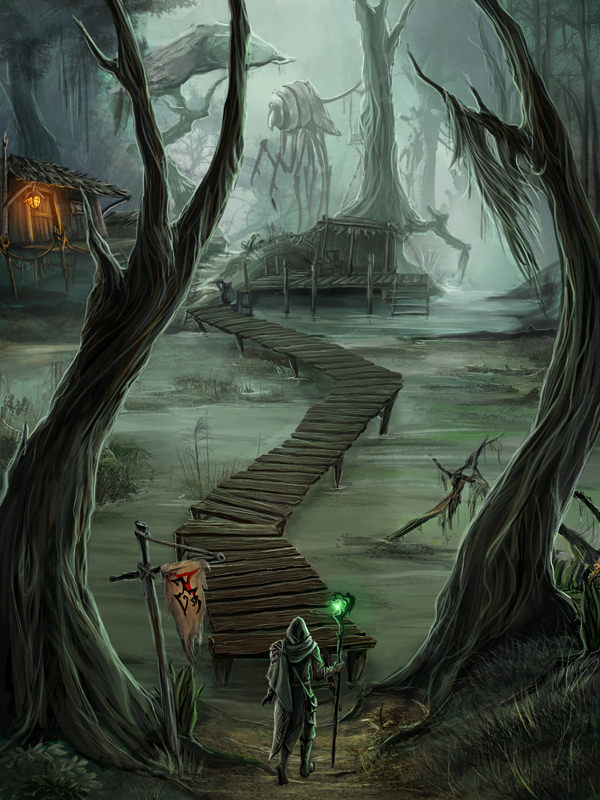
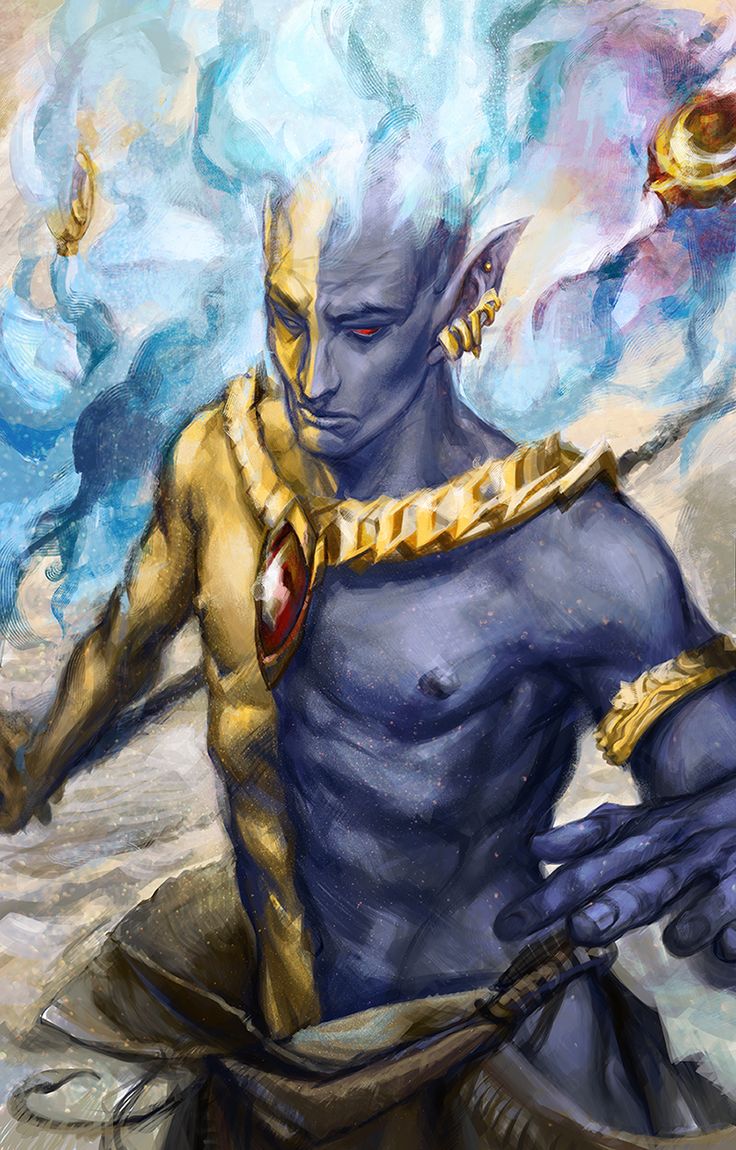
Appendix A: Conditions
Conditions alter a creature's capabilities in a variety of ways and can arise as a result of a spell, a class feature, a monster's attack, or other effect. All standard 5e conditions as described in the Player's Handbook are valid in the Elder Scrolls universe, and an additional condition has been added.
Frenzied
- A frenzied creature automatically fails any Intelligence and Wisdom checks, and has disadvantage on any attack rolls requiring those attributes.
- The creature cannot differentiate between friend and foe. It will attack any creature in its path.
- The creature must move toward the nearest creature, ready to strike.
Appendix B: Gods and Spirits
Nirn is host to a wide variety of faiths, and many of the gods worshiped are variations of the same being. These variations may have entirely separate motives, however, as they are variations on ideas in much the same way two songs can be a variation on the same tune. The power of Aedra and Daedra alike can be felt in every shrine to their existence. In this world, even mortals can become a part of the divine pantheon, mantling an aspect of higher beings.
People may worship multiple deities, or focus their faith on a single entity. However, the vast majority of life on Nirn understands the existence of the Divines, or Aedra, and the Daedra. The celestial bodies in the night sky, and even the sun itself, are in fact the realms and remains of these beings.
From among the gods available, you may choose a single deity for your character to serve, worship, or pay lip service to. Or you can pick a few that your character prays to most often. Or just make a mental note of the gods who are revered in the areas local to your adventure so you can invoke their names when appropriate. If you're playing a particularly religious character, usually a Healer or a Knight, decide which god your character serves or has served, and consider their suggested domains when you choose your own characters' domains.
Gods and Worship
The Imperial Cult
| Deity | Alignment | Symbol | Nature |
|---|---|---|---|
| Akatosh, god of time | LN | A winged hourglass | Aedra |
| Arkay, god of life | LN | Two overlapping squares surrounding a sphere | Aedra |
| Dibella, goddess of beauty and art | LG | A lily flower | Aedra |
| Julianos, god of wisdom | LN | A pyramid | Aedra |
| Kynareth, goddess of the elements | LG | A dove | Aedra |
| Mara, goddess of agriculture and compassion | LG | A knot | Aedra |
| Stendarr, god of luck and justice | LN | A drinking cup | Aedra |
| Zenithar, god of commerce | LN | An anvil | Aedra |
| Shezarr, god of freedom and creation | LG | A moth | et'Ada |
| Morihaus, first breath of man | LN | A bull's face | Demigod |
| Reman, founder of the 2nd Empire | LN | The Imperial banner | Mortal |
The Nord Pantheon
| Deity | Alignment | Symbol | Nature |
|---|---|---|---|
| Akatosh, god of time | LN | A winged hourglass | Aedra |
| Alduin, god of destruction | LE | A black dragon | Dragon |
| Dibella, goddess of love | LG | A lily flower | Aedra |
| Herma-Mora, god of knowledge | CN | A book bound in flesh | Daedra |
| Jhunal, god of hermetic orders | LN | A pyramid | Aedra |
| Kyne, goddess of the storm | LG | A hawk | Aedra |
The Nord Pantheon(continued)
| Deity | Alignment | Symbol | Nature |
|---|---|---|---|
| Mara, goddess of agriculture and compassion | LG | A knot | Aedra |
| Orkey, god of trickery | LE | A fist, knocking | Daedra |
| Mauloch, god of orcs | LN | A mountain | Daedra |
| Shor, god of freedom and creation | LG | A moth | et'Ada |
| Stuhn, god of ransom | LN | A mead cup | Aedra |
| Tsun, god of trials against adversity | LN | An anvil | Aedra |
Altmeri Pantheon
| Deity | Alignment | Symbol | Nature |
|---|---|---|---|
| Auri-El, god of time | LG | A blazing sun | Aedra |
| Anu, the everything | N | A serpent | Primordial Force |
| Lorkhan, god of mortals | CE | A void | et'Ada |
| Magnus, god of magic | CG | A starry night sky | et'Ada |
| Trinimac, god of warriors | LG | A horned helmet | Daedra |
| Mara, goddess of agriculture and compassion | LG | A knot | Aedra |
| Phynaster, god of heroes | LG | A leg mid-stride | Ehlnofey |
| Stendarr, god of luck and justice | LN | A drinking cup | Aedra |
| Syrabane, god of warlocks | NG | A red ring | Ehlnofey |
| Xarxes, god of ancestry and secret knowledge | LE | A quill | Aedra |
| Jephre, god of song and forest | N | A great tree | et'Ada |
| Z'en, god of trials against adversity | LN | An anvil | Aedra |
Bosmeri Pantheon
| Deity | Alignment | Symbol | Nature |
|---|---|---|---|
| Auri-El, god of time | LG | A blazing sun | Aedra |
| Arkay, god of life | LG | Two overlapping squares | Aedra |
| Baan Dar, god of archery | LE | A flying arrow | Ehlnofey |
| Herma-Mora, god of knowledge | CN | A book bound in flesh | Daedra |
| Jode, god of the big moon | N | Masser | Ehlnofey |
| Jone, god of the small moon | N | Secunda | Ehlnofey |
| Mara, goddess of agriculture and compassion | LG | A knot | Aedra |
| Stendarr, god of luck and justice | LN | A drinking cup | Aedra |
| Xarxes, god of ancestry and secret knowledge | LE | A quill | Aedra |
| Y'ffre, god of song and forest | N | A great tree | et'Ada |
| Xen, god of trials against adversity | LN | An anvil | Aedra |
Dunmeri Pantheon
| Deity | Alignment | Symbol | Nature |
|---|---|---|---|
| Almalexia, goddess of protection and compassion | LG | The symbol of AYEM | Chimer |
| Azura, goddess of dawn and dusk | LN | A moon and star | Daedra |
| Boethiah, goddess of destruction | CE | A snake wrapped around a fist | Daedra |
| Dagoth Ur, the sharmat | LE | Red Mountain | Chimer |
| Lorkhan, god of mortals | CE | A void | et'Ada |
| Malacath, god of the spurned | LN | A Daedric mace | Daedra |
Dunmeri Pantheon(continued)
| Deity | Alignment | Symbol | Nature |
|---|---|---|---|
| Mehrunes Dagon, god of destruction | CE | A rising sun | Daedra |
| Mephala, goddes of the secret arts | LE | A spider | Daedra |
| Molag Bal, god of domination | CE | A demon's face | Daedra |
| Nerevar, god-killer | LG | A ring adorned with a moon and star | Chimer |
| Sheogorath, god of madness | CN | Three faces looking in separate directions | Daedra |
| Sotha Sil, god of knowledge | N | The symbol of SEHT | Chimer |
| Vivec, god of poetry | NG | The symbol of VEHK | Chimer |
| Veloth, saint of outcasts and seekers of knowledge | NG | A hand | Chimer |
Redguard Pantheon
| Deity | Alignment | Symbol | Nature |
|---|---|---|---|
| Ruptga, god of the stars | LG | A tall man | Aedra |
| Satakal, the hunger at the end | CE | A snake eating it's tail | Primordial Force |
| Tu'whacca, god of souls | LN | A ferryman | Aedra |
| Diagna, god of the sideways blade | CG | An orichalc dagger | Mortal |
| HoonDing, god of make way | NG | A sword and crown | Idea |
| Tava, spirit of air | LG | A seagull | Aedra |
| Leki, goddess of aberrant swordsmanship | LG | A sword mid-slash | Ehlnofey |
| Sep, god of trickery | CE | A snake | et'Ada |
| Malooc, god of goblins | NE | A goblin army | Daedra |
| Morwha, goddess of love & fertility | LG | A beehive | Aedra |
| Onsi, god of warriors | NG | A forge | Aedra |
| Zeht, god of farms | LN | An anvil | Aedra |
Breton pantheon
| Deity | Alignment | Symbol | Nature |
|---|---|---|---|
| Akatosh, god of time | LN | A winged hourglass | Aedra |
| Arkay, god of life | LN | Two overlapping squares surrounding a sphere | Aedra |
| Dibella, goddess of beauty and art | LG | A lily flower | Aedra |
| Julianos, god of wisdom | LN | A pyramid | Aedra |
| Sheor, god of freedom and creation | LG | A moth | et'Ada |
| Magnus, god of magic | CG | A starry night sky | et'Ada |
| Kynareth, goddess of the elements | LG | A dove | Aedra |
| Mara, goddess of agriculture and compassion | LG | A knot | Aedra |
| Meridia, goddess of greed | NE | An equal-armed cross | Daedra/Mange Ge |
| Phynaster, god of heroes | LG | A leg mid-stride | Ehlnofey |
| Stendarr, god of luck and justice | LN | A drinking cup | Aedra |
| Y'ffre, god of song and forest | N | A great tree | et'Ada |
| Zenithar, god of commerce | LN | An anvil | Aedra |
Khajiiti Pantheon
| Deity | Alignment | Symbol | Nature |
|---|---|---|---|
| Alkosh, god of time | LG | A blazing sun | Aedra |
| Azurah, goddess of dawn and dusk | LN | A moon and star | Daedra |
Khajiiti Pantheon(continued)
| Deity | Alignment | Symbol | Nature |
|---|---|---|---|
| Baan Dar, god of archery | LE | A flying arrow | Ehlnofey |
| Hermorah, god of knowledge | CN | A book bound in fur | Daedra |
| Hircine, god of the hunt | NE | An elk head | Daedra |
| Jode, god of the big moon | N | Masser | Ehlnofey |
| Jone, god of the small moon | N | Secunda | Ehlnofey |
| Khenarthi, goddess of the elements | LG | A flying cat | Aedra |
| Lorkhaj, god of the dark moon | CE | A shadow moon | et'Ada |
| Magrus, god of the sun and magic | CG | A starry night sky | et'Ada |
| Mara, goddess of agriculture and compassion | LG | A knot | Aedra |
| Merrunz, god of destruction | CE | A rising sun | Daedra |
| Mafala, goddess of the secret arts | LE | A spider | Daedra |
| Namiira, goddess of decay and darkness | NE | A bat | Daedra |
| Rahjhn, god of thieves | LE | The silhouette of a khajiit | Mortal |
| Sanginne, god of debauchery | CN | A rose | Daedra |
| Sheggorath, god of madness | CN | Three faces looking in separate directions | Daedra |
| S'rendarr,god of luck and justice | LN | A drinking cup | Aedra |
| Y'ffer, god of song and forest | N | A great tree | et'Ada |
Varying Cults across Tamriel
| Deity | Alignment | Symbol | Nature |
|---|---|---|---|
| Azura, goddess of dawn and dusk | LN | A moon and star | Daedra |
| Boethiah, goddess of destruction | CE | A snake wrapped around a fist | Daedra |
| Clavicus Vile, god of power and wishes | LE | A bearded face with a horned helmet | Daedra |
| Hermaeus Mora, god of knowledge | CN | A book bound in skin | Daedra |
| Hircine, god of the hunt | NE | An elk head | Daedra |
| Malacath, god of the spurned | LN | A Daedric mace | Daedra |
| Mehrunes Dagon, god of destruction | CE | A rising sun | Daedra |
| Mephala, goddes of the secret arts | LE | A spider | Daedra |
| Meridia, goddess of colors and life | NG | An equal-armed cross | Daedra/Mange Ge |
| Molag Bal, god of domination | CE | A demon's face | Daedra |
| Namira, goddess of decay | NE | A bat | Daedra |
| Nerevarine, god-killer | NG | A ring adorned with a moon and star | Mortal |
| Nocturnal, goddess of night and darkness | CN | A raven carrying a crescent moon | Daedra |
| Peryite, god of natural order and pestilence | CN | A four-legged dragon | Daedra |
| Sanguine, god of debauchery | CN | A rose | Daedra |
| Sheogorath, god of madness | CN | Three faces looking in separate directions | Daedra |
| Sithis, the void | CN | A void | Primordial Force |
| Vaermina, god of dreams and nightmares | CN | A snake behind a bird | Daedra |
| Mannimarco, god of worms | NE | Mortal skulls | Lich |
Divine Similarities
Many of the deities listed above have similar roles, functions, and names. While they are separate entities, the Aedric and Daedric gods and goddesses are shards of those listed below.
Scholarly Names of the Aedra & Daedra
| Deity | Alignment | Symbol | Nature |
|---|---|---|---|
| Akatosh, god of time | LN | A winged hourglass | Aedra |
| Arkay, god of life | LN | Two overlapping squares surrounding a sphere | Aedra |
| Azura, goddess of dawn and dusk | CN | A moon and star | Daedra |
| Boethiah, goddess of destruction | CE | A snake wrapped around a fist | Daedra |
| Clavicus Vile, god of power and wishes | LE | A bearded face with a horned helmet | Daedra |
| Dibella, goddess of beauty and art | LG | A lily flower | Aedra |
| Hermaeus Mora, god of knowledge | CN | A book bound in skin | Daedra |
| Hircine, god of the hunt | NE | An elk head | Daedra |
| Julianos, god of wisdom | LN | A pyramid | Aedra |
| Kynareth, goddess of the elements | LG | A dove | Aedra |
| Lorkhan, god of mortals | CN | A void | et'Ada |
| Malacath, god of the spurned | LN | A Daedric mace | Daedra |
| Mara, goddess of agriculture and compassion | LG | A knot | Aedra |
| Mehrunes Dagon, god of destruction | CE | A rising sun | Daedra |
| Mephala, goddes of the secret arts | LE | A spider | Daedra |
| Meridia, goddess of colors and life | NG | An equal-armed cross | Daedra/Mange Ge |
| Molag Bal, god of domination | CE | A demon's face | Daedra |
| Namira, goddess of decay | NE | A bat | Daedra |
| Nocturnal, goddess of night and darkness | CN | A raven carrying a crescent moon | Daedra |
| Peryite, god of natural order and pestilence | CN | A four-legged dragon | Daedra |
| Sanginne, god of debauchery | CN | A rose | Daedra |
| Sheogorath, god of madness | CN | Three faces looking in separate directions | Daedra |
| Stendarr, god of luck and justice | LN | A drinking cup | Aedra |
| Vaermina, god of dreams and nightmares | CN | A snake behind a bird | Daedra |
| Zenithar, god of commerce | LN | An anvil | Aedra |
The Distributed Soul
There are key differences between the many types of deities, whether they are divine Aedra, scheming Daedra, ancient Ehlnofey who became mythological forces, mortals who have proven their worth to to their people or eschewed their mortality for a higher purpose, or even an idea that resonates with people on a spiritual level. Sithis, for whom the legendary assassins guild, the Dark Brotherhood, is devoted to, for example. Sithis is the void -- the emptiness between what is and what may be. Not all deities hold a presence, though they all have power incomprehensible.
Layers of Divinity
In the Elder Scrolls universe, existence is heavily layered. The dichotomy of Anu and Padomay are at the tip of a gradient, leading down from Concept to Soul, and then to the greater
expanse of beings, gods and mortals alike.
Stasis and Change
Anu and Padomay, the precursors from which all that exists can be attributed to, represent two primordial forces: Stasis and Change. Anu seeks to remain constant, while Padomay is a force of pure chaos. All beings can be categorized as Anuic or Padomaic -- Static Creators or Chaotic Influencers. In this case, chaos is not necessarily in regards to a being's alignment, but more an abstract term to represent the essence of their beings. In these names, they are concepts. In the next gradient down, we reach their souls: Anui-el and Sithis. When they were first formed, time was not conceived yet. This era is known as the Dawn era. During this period, Anu and Padomay were in constant conflict. Anu's Stasis was empty black void, in which nothing could happen, while Padomay's Chaos was a white space within which everything happened at once.
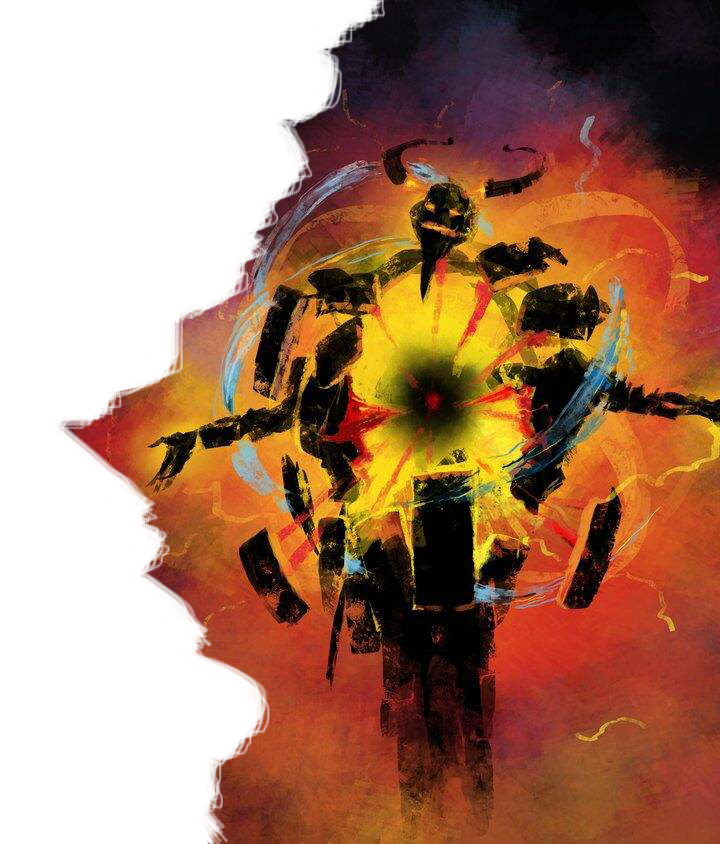
The Light and the Dark
The conflict between Anu and Padomay wove itself into a new space where they would intersect, commonly referred to as the Grey Maybe, or the Aurbis. The original spirits, or et'Ada were born of this place, some closer to Anu and some closer to Padomay, others in the middle of everything. The first two of these spirits wandered, one to the center of the grey maybe, and one to the edge. At what they say, one cried out "I AM," while the other cried out "I AM NOT." These et'Ada were known as LORK and AKA, spirits of Space and Time.
LORK saw an existence that was dull, greyscale, and boring. It hatched a plan: to convince the other et'Ada to aid him in bringing vibrant color to the Aurbis. Those who disagreed would become the Daedra, the Ehlnofex term for "Not our ancestors," while those who chose to assist LORK became the Aedra, "Ancestors." This colorful realm would be known as the Mundus.
The Daedra chose to create their own worlds, becoming the Daedric Princes and other major beings who exist beyond the Mundus.
Convention
Magnus became the architect for what would become Mundus, the mortal planes of existence. As it devised creation, it realized the cost: The spirits that worked tirelessly on it would have to sacrifice themselves. Unwilling to deny its own existence, Magnus, along with several other et'Ada, fled to Aetherius, the outer portions of the Aurbis made up of pure magicka, punching through the celestial walls and inadvertently creating the stars and the sun. Magnus henceforth solidified his status among many cultures as
the god of magic, as his escape allowed mortals to
eventually make use of magicka.
The eight major Aedra who remained sought vengeance on LORK, now Lorkhan, and ripped him apart, letting his
heart remain on the planet he had created, Nirn, while his body became the moons. Then they went into a deep sleep,
as the 8 planets surrounding Nirn, bringing the Dawn era to a complete close, and ushering in the Merethic era.
End of the Journey
The Merethic era saw the splitting of the mortal beings present on Nirn during the period of its creation, the Ehlnofey, into Mer, Man, and Beast. From this point on, mortals knew Time. The Mer despised it, missing their immortal existence as spirits, while Man embraced its limits. During this period, and the 1st Era which would soon follow, several mortals would achieve their own form of lasting immortality: Becoming mythical figures, such as Ebonarm, Phynaster, Leki, and the Tribunal.
The Aedra
The spirits who aided creation, the Aedra, are mainly worshiped by the Mannish people. In the Imperial Pantheon, their aspects are known as Akatosh, Arkay, Dibella, Julianos, Kynareth, Mara, Stendarr, and Zenithar. These aspects are part of the same being as several other deities worshiped across Nirn, but for simplicities sake, we will use the names from the Scholarly Names of the Aedra & Daedra table.
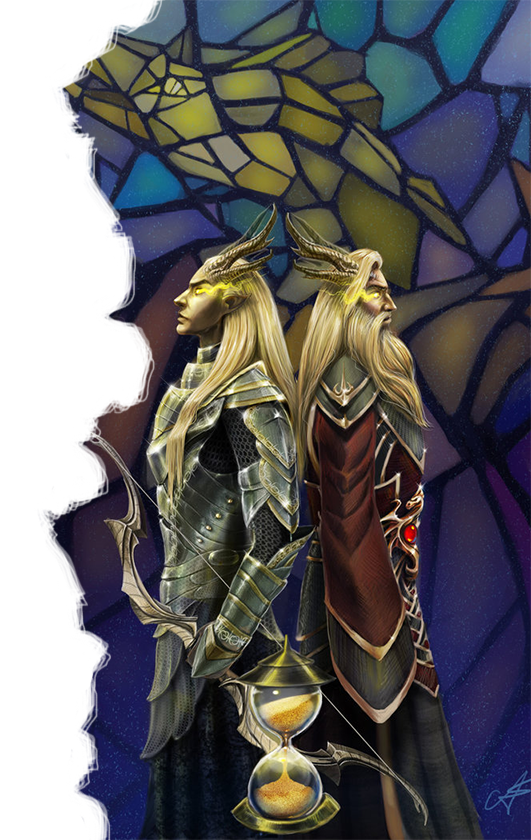
Akatosh
AKA, Akatosh, Aka-Tusk, Auri-El, Alkosh, Bormah, all names of the Dragon god of time. Akatosh was the first of the et'Ada to emerge. He is present in most Tamriellic faiths, and
exists at the chief deity among them. He embodies the qualities of endurance, invincibility, and legitimacy. His sign is the hourglass.
Known Artifacts
Akatosh has created three artifacts -- One that is held by those leading or seeking to lead the Cyrodiilic empire, and two pieces of equipment many adventurer's would fall over themselves to hold.
The Amulet of Kings
The Amulet of Kings is generally held by the emperors of Cyrodiil. It signifies their legitimacy as emperor, and may only be worn by those of Dragon's blood.
Auriel's Bow
Auriel's Bow is a longbow made of moonstone, and channels the power of Aetherius itself. Arrows fired from this bow are transformed into deadly missiles, capable of dealing an additional 1d10 radiant damage, and another 1d10 radiant damage if fired at a Vampire or Daedra.
Auriel's Shield
Auriel's Shield is a round moonstone shield that confers its wielder resistance to fire damage from all sources. Additionally, if you have blocked 5 hits or more with this shield, an improvised attack using the shield will knock down any enemies in a 10-foot cone.
Knightly Tenets
Though the exact words and strictures of an Oath to Akatosh vary, Knights of Akatosh share these tenets.
Duty. Be responsible for your actions and their consequences.
Service. Protect those entrusted to your care.
Obedience. Heed the commands of the saints and
priests.
Divine Blessings
Over the course of your adventures, Akatosh may choose to bless you with one of the following feats.
Dragon's Hide
You gain +1 to your AC
Perceive Time
For up to 1 minute, while concentrating, you may see any events that have transpired in your current location in the past day. You may do this once per long rest.
Divine Favor: Dragontongue
You can understand and speak Draconic. Additionally, you may choose one Thu'um phrase from the Way of the Voice Monk subclass. You may use this phrase once per long rest.
You make a Charisma saving throw with DC 15. If you fail, nothing happens. Otherwise, you successfully shout.
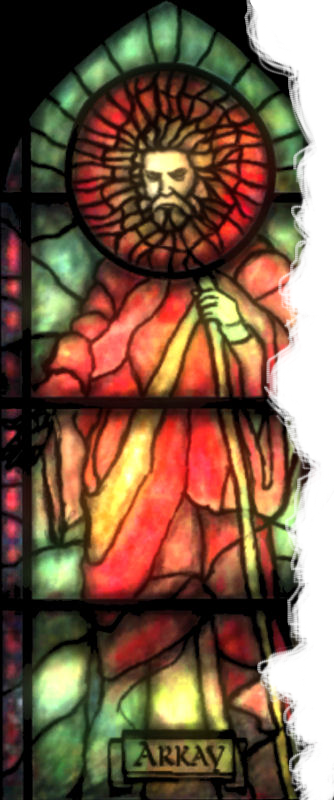
Arkay
Arkey, Tu'whacca, and Xarxes are all separate names for the god of life and death. He's associated with funeral rites, the seasons, and all things cyclical. His followers despise necromancy and the undead. As such, any bodies buried under the rites of Arkay are blessed, and cannot be raised by necromancy. His symbol is two overlapping squares surrounding a sphere.
Known Artifacts
Arkay has one known artifact, an ancient blade once wielded by Pelinal Whitestrake.
Sword of the Crusader
The Sword of the Crusader is a Steel Longsword that, upon striking a creature, deals an additional 1d6 radiant damage, and causes the target to expend a single spell slot of the highest available level.
If the target is undead, it takes an additional 1d6 radiant damage.
Knightly Tenets
Though the exact words and strictures of an Oath to Arkay vary, Knights of Arkay share these tenets.
Display Honor. Treat others with fairness, and let your honorable deeds be an example to them.
Keep the Balance. Give no blessing or curse to the living, for the cycle of Life and Death must be uninterrupted.
Suffer No Profane. Guard and tend the bounties of the mortal world, and do not profane the spirits of the dead.
Divine Blessings
Over the course of your adventures, Arkay may choose to bless you with one of the following feats.
The Rites of Arkay
You are able to perform a burial for any dead creature, properly following the rites of Arkay. This takes a full hour. Any creature you perform the burial rites for will be protected by the law of Arkay, and cannot be raised as undead by any means.
Reclaim
Once per long rest, you may call for Arkay to shelter the soul of any werebeast or vampire after they are killed. The creature's soul will not go to Hircine or Molag Bal, but instead to Aetherious.
Redeem
Once per long rest, you may cure a willing Vampire of vampirism. The target will suffer the effects of age, if significant time has passed since they turned.
Wisdom of Balance
You have an additional +1 to Wisdom.
Divine Favor: Cleansing Strike
When you attack an undead creature, you may add an additional 2d6 radiant damage to your attack.
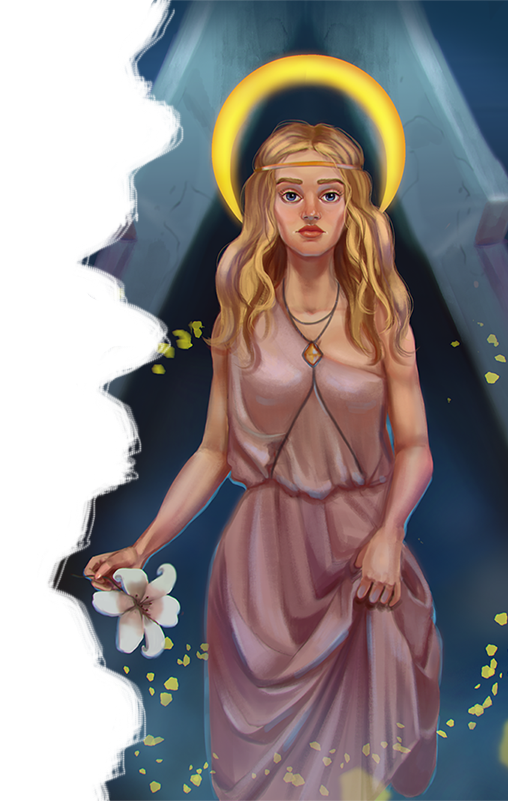
Dibella
Dibella is the goddess of beauty, art, and music. Often compared to Mara, the goddess of love, Dibella is more focused on the physical. Her orders are often denounced as filled with prostitutes, but it is filled with many great artists, poets, writers, and musicians. Her symbol is the lily.
Known Artifacts
Dibella has two artifacts.
Helm of the Crusader
The Helm of the Crusader is a Steel Helmet covering your entire face. Upon striking a creature, they are calmed for up to 5 minutes, ceasing hostility and no longer affected by the frightened, charmed, or frenzied conditions.
Brush of Truepaint
The Brush of Truepaint is a paintbrush which, when used, can bring your paintings to life after the paint settles.
If you created a landscape, a creature may enter the canvas into a painted pocket realm based off of your painting. The brush is needed to create an exit. Any creatures within the painting will have stats and hit points equal to the amount a normal version of the creature would have.
If you created an item or a creature, the painting will collapse, and the item or creature will exit the canvas, brought into the real world as a painted construct. Creatures will have the same stats, but only a single hit point, while items will look pretty, but not be of any use.
Knightly Tenats
Though the exact words and strictures of an Oath to Dibella vary, Knights of Dibells share these tenets.
Beauty. Open your heart to the noble secrets of art and love. Seek joy and inspiration in the mysteries of love.
Grace. Hold yourself to the highest standard. Never
let yourself be caught stumbling.
Purity. Never fall to the whims of evil thoughts.
Beauty can be found in goodness, but never in evil.
Divine Blessings
Over the course of your adventures, Dibella
may choose to bless you with one of the
following feats.
Eloquence
You have a newfound eloquence, gaining
proficiency in Persuasion.
Dibella's Dance
You have proficiency in Performance.
Divine Favor: Purify
You may purify the bodies and minds of other creatures. Once per long rest, you may conduct a ritual to cleanse up to 3 creatures of your choice within 30 feet of poison and disease, and restore them to their original alignment if it has been changed, or change their alignment to Neutral if their base alignment is evil. To do so, you must pass a Charisma saving throw(DC25).
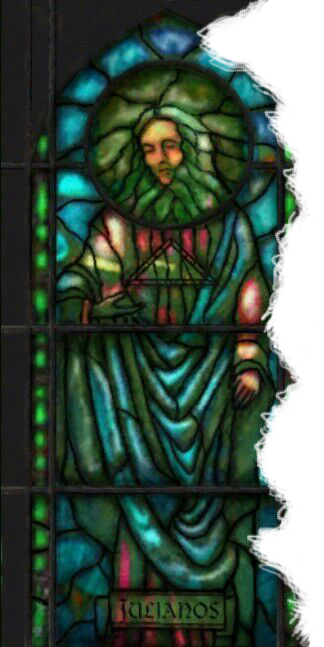
Julianos
Julianos, also known as Jhunal, is the god of Knowledge and Wisdom. Widely accepted by mages across Tamriel, he is associated with magic, though he is also the one who gave language and mathematics to the kingdoms of Man. He espouses virtues of knowledge, scholarship, and justice. the His symbol is a triangle.
Known Artifacts
There is only one known artifact associated with Julianos: The Shield of the Crusader.
Shield of the Crusader
The Shield of the Crusader is a shield in the image of the crown jewel of the Amulet of Kings: A Large, red diamond shape. It is capable of reflecting magic back at a hostile caster. Once per long rest, when you are the target of a spell you may choose to try and deflect it back at the caster. Roll a Wisdom saving throw. If successful, the spell flies back at its attacker, otherwise you are affected as normal.
Knightly Tenets
Though the exact words and strictures of an Oath to Julianos vary, Knights of Julianos share these tenets.
Combat Ignorance. Preserve knowledge -- educate the masses and protect libraries and other repositories of knowledge.
Uphold the Law Understand the rule of the land and work within it. Punish those that do not.
Seek Counsel. Know the truth. Observe the law. When in doubt, seek wisdom from the wise.
Divine Blessings
Over the course of your adventures, Julianos may choose to bless you with one of the following feats.
Aspect of the Owl
You have an additional +1 to Wisdom and Intelligence
Divine Understanding
You can understand all languages you come across.
The Gift of Knowing
Choose a school of magic that you have limited or no access to. You are now able to keep a spellbook and learn spells up to 4th spell level in that school. You have the same amount of spell slots up to 4th spell level as a Mage of your primary class level, unless you already receive an equal number or more of spell slots due to your class.
Divine Favor: Education by Force
When you attack a creature with less Intelligence than you, you may choose one of the following effects for your attack:
- You have advantage on all attack rolls against your target.
- Your attack deals an additional 1d6 Psychic damage.
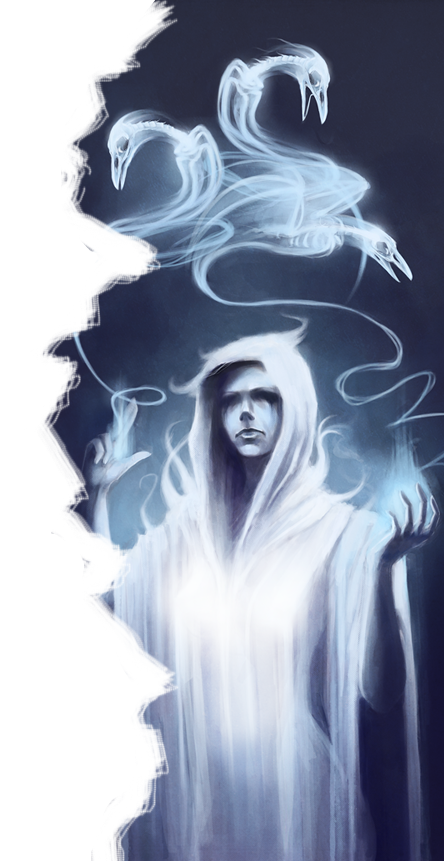
Kynareth
Kynareth, who is also known as Kyne, Khenarthi, and Tava, is the goddess of nature, and the lady of storms. A fearsome Aedra, she is equal parts mercy and fury. She was the first to accept Lorkhan's plan, and the rain is her tears after he was torn apart. Her symbol is the dove in some cultures, and in others, the hawk.
Known Artifacts
Kynareth is associated with two artifacts - the fabled Lord's Mail and an amulet bearing her mark.
Lord's Mail
The Lord's Mail is a set of heavy mithril chain mail. Those who wear it are immune to all poisons, and recover 2 health every time they are targeted by an attack, regardless of whether it hits or not. If the attack hits, they regain hit points before taking damage.
Kyne's Token
While wearing Kyne's token, you have pull over the native beasts of Tamriel. Once per long rest, you may charm a beast for up to 3 hours, after which point it will leave your side peacefully.
Knightly Tenets
Though the exact words and strictures of an Oath to Kynareth vary, Knights of Kynareth share these tenets.
Protect Creation. The natural world requires protection from outside influence -- the Daedra and other outside forces, and any other beings who seek to unmake the world.
Respect Nature. Take care among the beasts and the wilds, as the world itself is a temple to Kynareth.
Glory in Travel. As the world is her temple, one listen to the winds throughout Nirn to hear her every lesson.
Divine Blessings
Over the course of your adventures, Kynareth may choose to bless you with one of the following feats.
Move like the Wind
Your base movement speed increases by 5 feet.
Weatherproof
You suffer no adverse effects when caught in inclement weather.
Stormfury
When you attack a creature, you may deal an additional 1d6 lightning damage.
Nature's Recognition
Beasts will not attack you unless magically compelled to, under the effects of frenzy, or if you've attacked them first.
Divine Favor: Nature's Guardian
Once per long rest, you may call upon one of nature's guardians to assist you. Make a Wisdom saving throw(DC20). If successful, a Spriggan appears to grant you aid in one task. Once the task is complete, the Spriggan will leave.
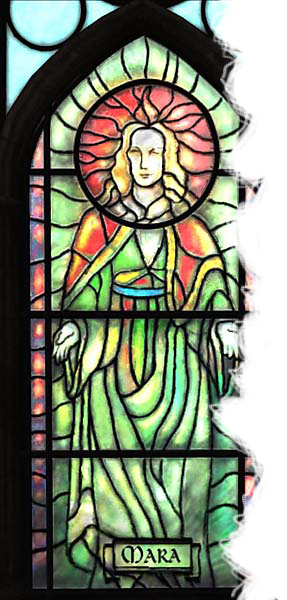
Mara
Mara, or in the Yokudan pantheon Morwha, is the goddess of fertility and agriculture. Associated with weddings, healers, and bountiful harvests, Mara is one of the more popular Aedra among the common people. Her symbol is a knot.
Known Artifacts
There is one known artifact linked to Mara - the Everflow Chalice.
The Everflow Chalice
The Everflow Chalice is an ancient artifact, said to be able to pour an endless amount of water once filled. If any liquid is poured into the chalice, it is transformed into purified water.
Knightly Tenets
Though the exact words and strictures of an Oath to Mara vary, Knights of Mara share these tenets.
Abstinence. Live soberly. Drinking or using drugs harm the soul, and must be avoided at all cost.
Peace. Live peacefully. Do no harm unless it is the only option.
Obedience. Honor your parents, and preserve the peace and security of home and family.
Divine Blessings
Over the course of your adventures, Mara may choose to bless you with one of the following feats.
Mara's Mercy
Once per long rest, you may restore the health of a wounded creature. Choose any creature that you can see within 30 feet. That creature regains hit points equal to 3d4 + your primary class level.
Nirn's Bounty
You may manifest a miracle. Crops that you pray over will grow into a bountiful harvest within days, even if it seems there is no hope for them to grow. Additionally, when foraging for ingredients, you find double the amount that you would normally find.
Mara's Grace
You now know the Healer's spell Mara's Grace. You may cast it once per long rest, without consuming any spell slots.
Divine Favor: Aura of Radiance
All non-hostile creatures within 30 feet of you, including yourself, regenerate 1d4 hit points at the start of their turn. Hostile creatures instead take 1d4 radiant damage.
Divine Favor: Aura of Peace
All creatures within 30 feet of you in combat receive 1d6 radiant damage for each turn of combat until they end combat.
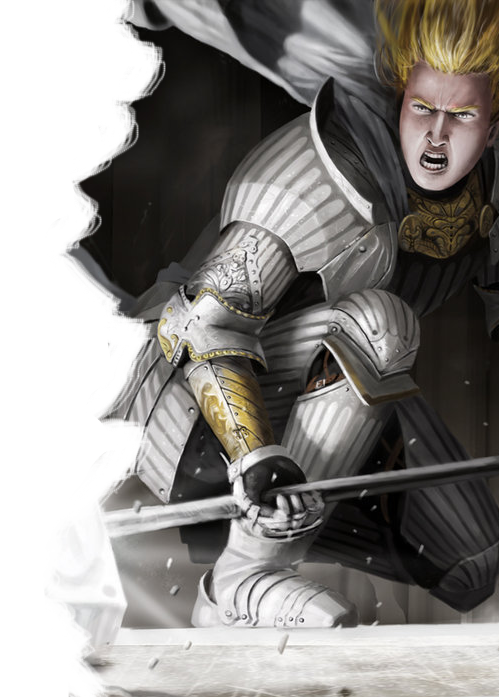
Stendarr
Stendarr, S'rendarr, Onsi, or Stuhn, is the god of compassion, mercy, and rule by might. As Stuhn, he was the god of ransom as well. He commands his followers to heal the wounded, give to the needy, give kindness to all mortals. They are also commanded to root out and destroy the undead, lycanthropes, vampires, and lesser Daedra, for this he is known as the patron god to witchhunters. His symbol is a Chalice, except to the Nords, where it is a drinking horn.
Known Artifacts
Stendarr has a single known artifact linked to his name - the Hammer of Stendarr
Stendarr's Hammer
Stendarr's Hammer is a 1000lb. Warhammer. Without a blessing from Stendarr himself, it is incredibly difficult to carry. If you can use it to deal damage to a target, you recover hit points equal to half your damage.
Knightly Tenets
Though the exact words and strictures of an Oath to Stendarr vary, Knights of Stendarr share these tenets.
Generosity. Do not hoard wealth or indulge physically. Never refuse aid you are capable of providing.
Duty. Offer prayer to Stendarr every day.
Mercy. Go among the infirm and the wounded wherever you find them.
Divine Blessings
Over the course of your adventures, Stendarr may choose to bless you with one of the following feats.
Stendarr's Light
You know the cantrip Candlelight. This does not count against your number of known cantrips.
Divine Favor: Invocation of Stendarr
Once per long rest, you may use Invocation of Stendarr. Using this bathes you in a divine light, which you can shape into one of the following:
Spear of Light. You shape the light into the form of a spear that deals an additional 1d6 radiant damage. The spear gives off 10 feet of bright light, and 10 feet of dim light beyond that. Undead caught in the light take 1d4 radiant damage at the end of their turn.
Radiant shield. You shape the light into the form of a shield, giving off 10 feet of bright light, and 10 feet of dim light beyond that. Undead caught in the light take 1d4 radiant damage at the end of their turn.
If you choose to make an improvised attack using the shield, it deals 1d4 radiant damage.
Healing Flow. You shape the light into a ball of energy. While concentrating for up to 1 minute, you can aim it at a creature within 30 feet that you can see. The energy flows from you to the target creature, healing 1d4 hit points at the end of each of it's turns while the Invocation is active. If a creature obstructs the energy, it is healed. If an object obstructs the energy, the Invocation ends. Undead targets instead take 1d4 radiant damage.
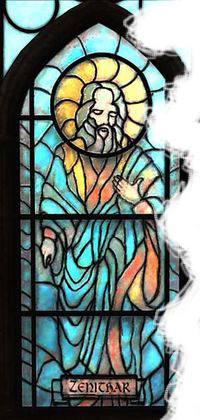
Zenithar
Zenithar, or Zeht, Xen, Z'en, or Tsun, is typically the twin of Stendarr, and the god of trade, commerce, and communication. He looks after the worker class, and is the patron god of smiths and traders in particular. His symbol is the Anvil.
Known Artifacts
There are three artifacts linked to Zenithar -- the Mace of the Crusader, and a pair of gloves, Zenithar's Warning and Zenithar's Wiles.
Mace of the Crusader
The Mace of the Crusader is a silver mace which deals an additional 1d6 radiant damage and turns any Undead struck.
Zenithar's Warning & Zenithar's Wiles
Zenithar's Warning & Zenithar's Wiles are a pair of gloves with the following effects:
Warning. When you touch a creature with this glove, they must make a Wisdom saving throw. If they fail, they are blinded, silenced, and frightened.
Wiles. When you touch a creature with this glove, they must make a Wisdom saving throw. If they fail, they are charmed.
Knightly Tenets
Though the exact words and strictures of an Oath to Zenithar vary, Knights of Zenithar share these tenets.
Honest Work. Taking shortcuts and finishing your work half-baked is not the way to success.
The Act of Making. The reward of living is in the act of production. To create is to know Zenithar.
Restraint. Not all great acts are grand in nature. The mundane is equally important as the noteworthy.
Divine Blessings
Over the course of your adventures, Zenithar may choose to bless you with one of the following feats.
Worker's Skills
You gain proficiency in two sets of artisan's tools of your choice.
Zenithar's Savvy
When trying to sell items, you have advantage on any Charisma saving throws when trying to haggle.
Work Ethic
If you work as a downtime activity, you gain 1gp/day outside of upkeep.
Divine Favor: Zenithar's Reward
You may add +1 to either your Charisma or your Strength.
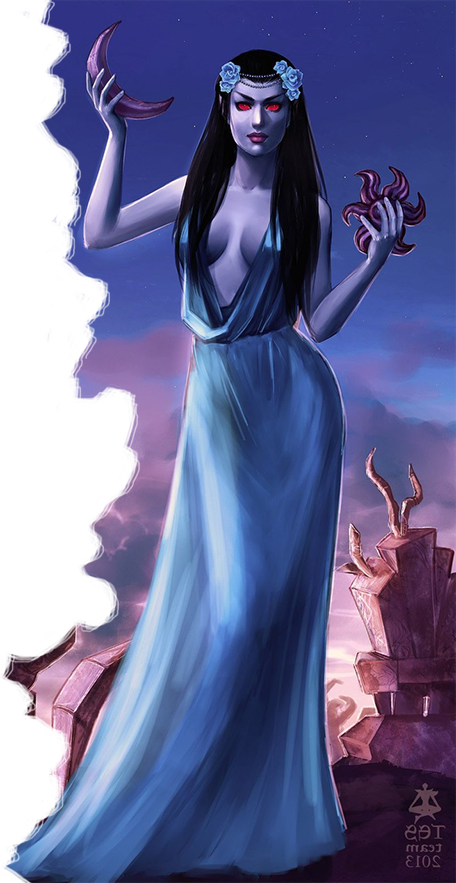
Daedra
The spirits who refused to aid Lorkhan are primarily worshipped by the Merrish people. There are many of them, but 16 are chief among all the Daedra.
Azura
Presiding over the realm of Moonshadow, Azura's sphere is Dawn and Dusk, Vanity, and Egotism. She is one of the few Daedric Princes seen by mortals as consistently "good," and is primarily associated with the Dunmer and the Khajiit. Her servants are the Winged Twilights.
Known Artifacts
There are two artifacts associated with Azura: Azura's Star and Moon-and-Star.
Azura's Star
Azura's Star is a large, reusable soul gem, in the shape of a throwing star.
Moon-and-Star
Moon-and-Star is a ring that, when worn, proves the wearer's identity as Nerevar Reborn. Those allowed to wear it are given +2 to their Charisma and advantage on all Persuasion checks as long as they wear it,
Knightly Tenets
Though the exact words and strictures of an Oath to Azura vary, Knights of Azura share these tenets.
Adhere to Fate. Azura leads us by to our destiny via the stars and the moons. Heed all prophecy as her own teachings.
Be Wise. Keep your senses aware for new lessons, and always be equipped for the future.
Empower the Self. Continue to improve in all things. Your stagnation is the stagnation of Azura.
Divine Blessings
Over the course of your adventures, Azura may choose to bless you with one of the following feats.
Twilight Flare
If you do not already, you know the cantrip Magelight. This does not count against your known Cantrips.
Grace of the Moons
If you do not already, you have proficiency in Performance and Persuasion.
Fury of the Stars
Once per short or long rest, you may choose to roll an additional damage die when in combat, and choose to replace the value of another die with its value.
Divine Favor: Twilight Indwelling
You know the spells a Winged Twilight is capable of casting: Detect Thoughts, Vicious Mockery, and Fear. You may cast each spell once per short or long rest, or if applicable, by using a spell slot.
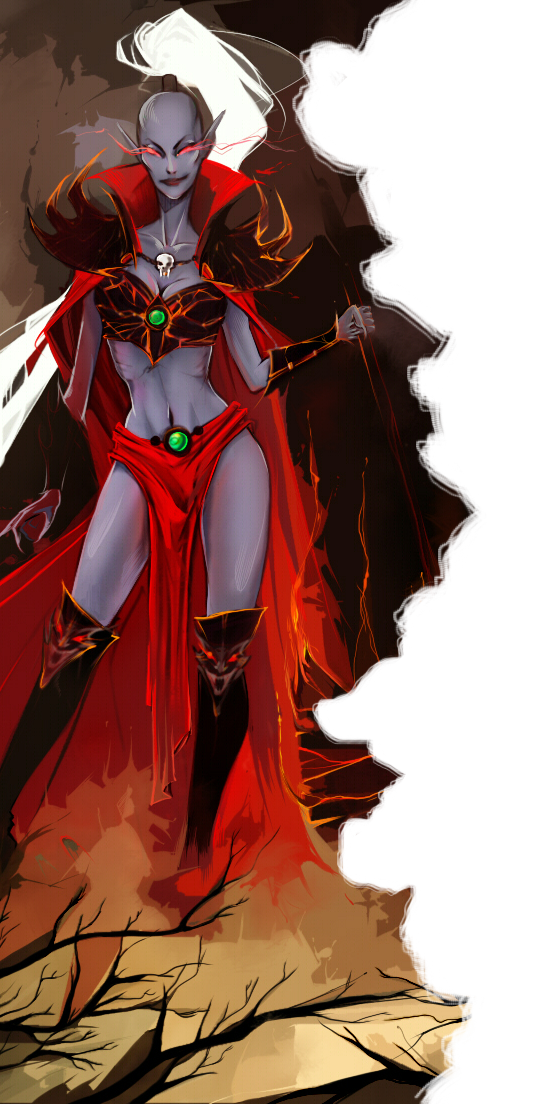
Boethiah
Known as the prince of plots, Boethiah's sphere is revolution, deceit, and conspiracy. Despite these spheres, she is often considered on of the "good" Daedric princes, occasionally aligning herself with Stendarr. She loves competition and battle. Her realm is Attribution's Share, and her most prized servants are the Hunger.
Known Artifacts
Boethiah is associated with three distinct artifacts: The Ebony Mail, Fearstruck, and Goldbrand.
Ebony Mail
The Ebony Mail is a suit of heavy armor, made of pure Ebony. When wearing it, you resist fire damage, and hostile creatures within 5 feet of you take 1d4 acid damage, and must make a constitution save. If they fail, they are poisoned.
Fearstruck
Fearstruck is a heavy Daedric shield. When wielding it, you have advanatage on all rolls for deception and persuasion. Hostile creatures within 5 feet of you must make a Wisdom saving throw contested by your Charisma saving throw. If they fail, they become frightened.
Goldbrand
Goldbrand is a silver Katana that appears to mortals as pure gold. Those who wield it have an additional 5ft of movement speed, and have an additional 1d6 fire damage when they strike with it.
Knightly Tenets
Though the exact words and strictures of an Oath to Boethiah vary, Knights of Boethiah share these tenets.
Glory. Your fabricated leaders are weak in the presence of he who covets these lessons. Lead your own way, and be not a follower.
The End before the Means. Your goal is what matters, not how you complete it.
Competition. Your existence holds meaning only if you seek to become the best.
Divine Blessings
Over the course of your adventures, Boethiah may choose to bless you with one of the following feats.
Boethiah's Glory
Once per long rest, for three rounds you have advantage on all attack and damage rolls.
Cunning Plotter
You have proficiency in Deception.
Divine Favor: Project Power
Once per long rest, for an amount of rounds equal to your Strength modifier, you may add an additional 1d6 psychic damage to all damage rolls you make.
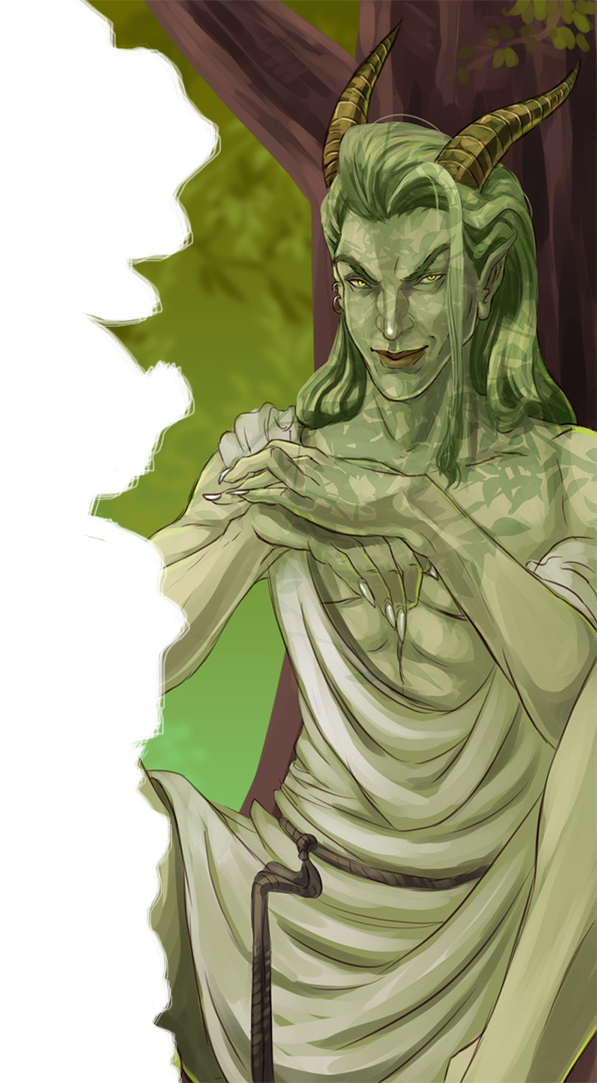
Clavicus Vile
Known as the Prince of Pacts, Clavicus Vile's sphere covers pacts and wishes, trickery and serenity. He is often accompanied by a daedric being in the form of a dog, Barbas. His realm is Desideratum, an idyllic countryside, and his servants are the Skaafin and Djinn.
Known Artifacts
There are five artifacts associated with Clavicus Vile: the Bittercup, the Masque of Clavicus Vile, Umbra, the Rueful Axe, and Feyfolken.
Bittercup
The Bittercup is a goblet sacred to Clavicus Vile, and thus, highly prized among his followers. The holder's highest attribute in increased by +1, their weakest one loses -1. It tastes sweet and honeyed, but leaves a bad aftertaste.
Masque of Clavicus Vile
The Masque of Clavicus Vile is a mask resembling the face of Vile and his Skaafins, though when worn, mortals see only the wearer's face. The wearer has +1 to Charisma, and advantage on all Charisma-related rolls.
Umbra
Umbra is a sentient, hungering ebony claymore, imbued with a portion of Clavicus Vile's own animus. Those struck by its blade's souls will be trapped if you have the right kind of
soul gem, and for every five kills you make with the blade,
you are able to add an additional die of damage to your next strike.
The Rueful Axe
The Rueful Axe is an ebony battleaxe engraved with images of werewolves. The axe deals an additional 1d6 radiant damage, and those struck by it are given a level of exhaustion.
Feyfolken
Feyfolken is a quill that enhances the artistic abilities of the user. However, the user must never part from the quill for longer than 7 days, or their soul will be claimed by Clavicus Vile. While you have Feyfolken in your possession, you may write in any language, even those that you do not know. Maps you draw are also perfect representations of reality.
Knightly Tenets
Though the exact words and strictures of an Oath to Calvicus Vile vary, Knights of Clavicus Vile share these tenets.
Lie. Use the fools. Wit is sharper than steel. Truth is a
tool to be bent and abused to advance yourself.
Bargain. Do not merely accept a situation you do not
want. Find a way around it.
Never Give Up. You think you lose, you die, and that's the end. It's not.
Divine Blessings
Describe to your DM what boon you want when prompted or when your Knight reaches 20th level, and the DM will create a cursed boon, or grant you one of Vile's artifacts.
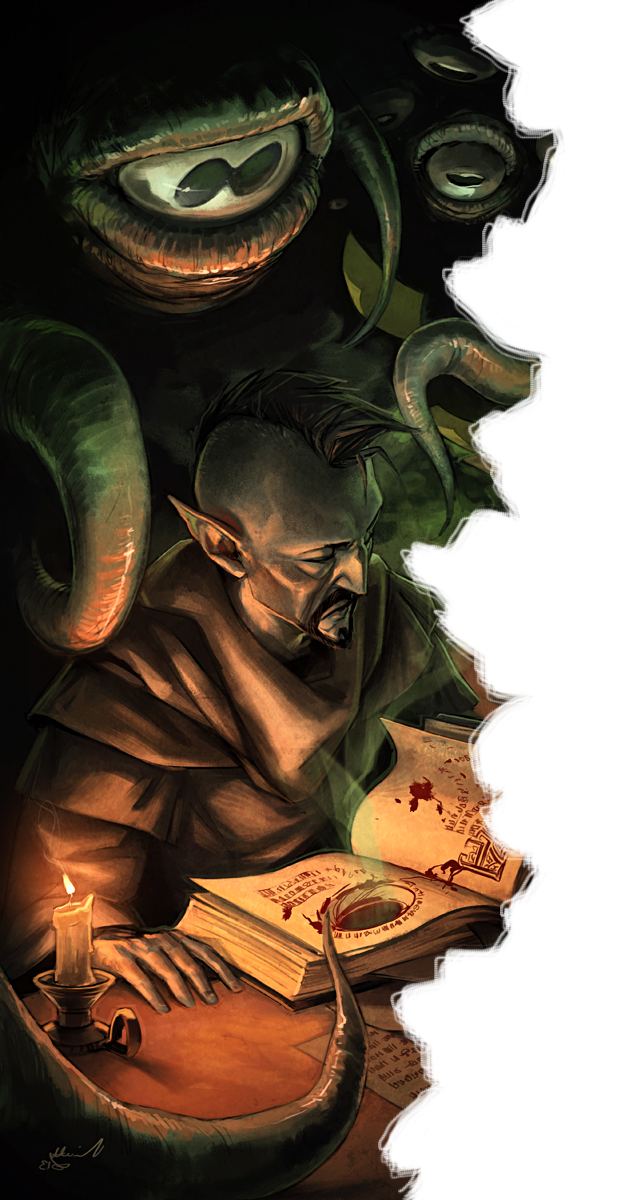
Hermaeus Mora
Hermaeus Mora's sphere is knowledge and understanding. Usually taking the shape of an amorphous, tentacled, many-eyed being, his realm is Apocrypha, an endless library with books of every era. His servants are the Seekers and Lurkers.
Known Artifacts
Hermaeus Mora is linked to a multitude of artifacts: The Oghma Infinium, and the many Black Books of his library.
Oghma Infinium
Oghma Infinium is a book of unknowable knowledge, stitched together from the remains of Oghma. A reader may only read through a single section, which takes roughly 8 hours. After reading the section, certain skills and abilities are improved, and the book disappears. There are three sections:
The Path of Steel. You have +1 to your Constitution and Strength scores. You gain proficiency in martial weapons and heavy armor, if you do not already have proficiency.
The Path of Shadow. You have +1 to your Dexterity score, +10 feet of movement speed, and proficiency in stealth, sleight of hand, performance, and deception.
The Path of Spirit. You have +1 to your Intelligence and Wisdom scores, and proficiency in arcana and history.
The Black Books
There are many Black Books, all of them incredibly rare and sought-after. Like with the Oghma Infinium, upon reading them, they will disappear, but they will confer great knowledge upon the reader. This may come in the form of future knowledge, information pertinent to your adventure, or in additional proficiencies. They have been rumored by some to act as portals, bringing a reader to Apocrypha itself.
Knightly Tenets
Though the exact words and strictures of an Oath to Hermaeus Mora vary, Knights of Hermaeus Mora share these tenets.
Learn. Knowledge lies at every step, have eyes in every corner to rake in the lessons of friends and enemies alike.
Understand. Knowing and understanding are two separate acts. When you find knowledge, seek to understand its meaning.
Divine Blessings
Over the course of your adventures, Hermaeus Mora may choose to bless you with one of the following feats.
Boundless Mind
You have an additional +1 to your Intelligence.
Endless Understanding
You have an additional +1 to your Wisdom
Divine Favor: Greater Portent
You have access to the Mage Major Feat Portent, and may treat it as if you have taken the feat twice.
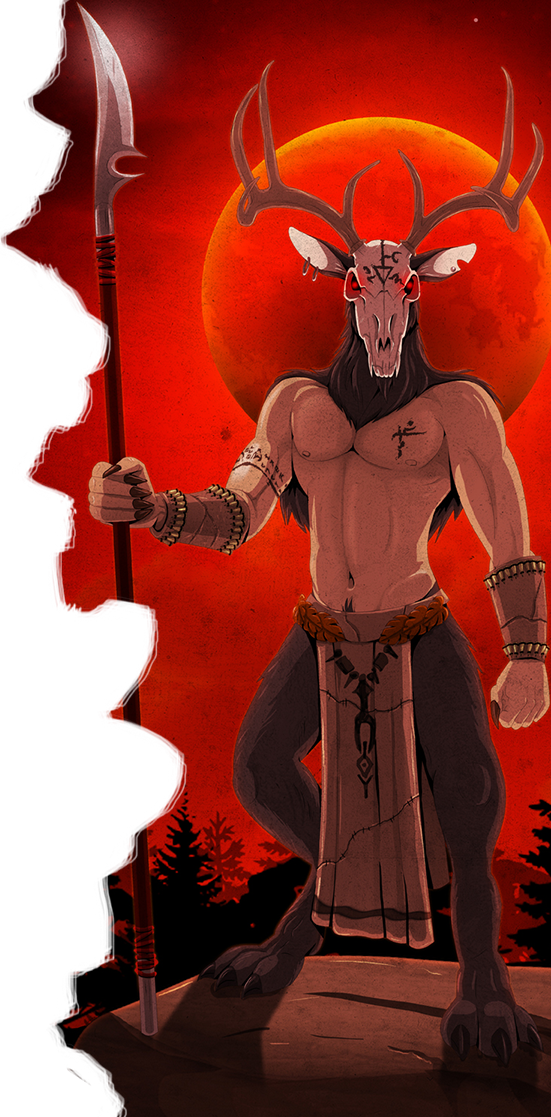
Hircine
Hircine is the God of the Hunt, the Prince of Sport, father of Therianthropy, and he presides over the realm of the Hunting Grounds. His servants are the Huntsmen, humanoid hunters with the appearance of wild men, and werebeasts.
Known Artifacts
There are three artifacts associated with Hircine: Hircine's Ring, the Spear of Bitter Mercy, and the Savior's Hide.
Hircine's Ring
When worn by a non-therianthrope, Hircine's Ring allows a temporary state of therianthropy. The wearer may temporarily become one of the following: Werewolf, Werebear, Wereboar, Werecroc. The condition is not permanent, and the wearer may change form and back once per short or long rest. When worn by someone suffering from Therianthropy, they no longer change form by the phases of the moons, but instead by choice.
Spear of Bitter Mercy
The Spear of Bitter Mercy is, on its own, a simple spear. When wielded by the wearer of the Savior's Hide, however, its power becomes clear. When it strikes a creature, they are Paralyzed and Poisoned. Additionally, their movement speed is reduced to 3 feet/turn for 3 rounds.
Savior's Hide
The Savior's Hide is a light hide armor that provides the wearer with resistance to all damage derived from spells.
Knightly Tenets
Though the exact words and strictures of an Oath to Hircine vary, Knights of Hircine share these tenets.
Success from Stealth. Skulk and stalk swiftly and silently, for the most dangerous strike comes from that which is unseen. Never let your prey escape.
Fair Hunting. There is no sport in an undeserved victory. Do not lie, cheat, or steal your way forward.
Divine Blessings
Over the course of your adventures, Hircine may choose to bless you with one of the following feats.
Hunter's Aim
When wielding a bow, you have an additional +1 to hit.
Hunter's Strike
When wielding a melee weapon, you may add an additional +1 to your damage roll.
Hunter's Stride
You have an additional 5 feet of movement speed.
Divine Favor: Hircine's Gift
Hircine bestows upon you the ability of his own ring. You choose what form of Therianthrope you wish to be from the following: Werewolf, Werebear, Wereboar, Werecroc, Werebat, Werelion, or a wereshark. Once per long rest you may transform into your wereform and back, and you do not transform based on the patterns of the moons.
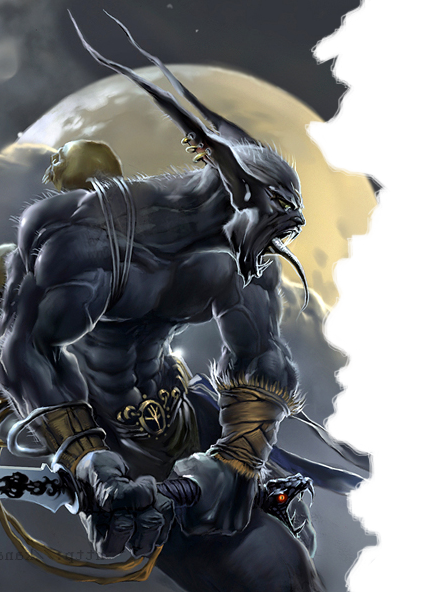
Malacath
Malacath, known by some as Mauloch, Orkey, and the Orc-father, is intrinsically related to Trinimac, and is the Daedric Prince of the spurned and ostracized, and the keeper of Oaths and Curses. His realm is the Ashpit, and his servants are the Ogrim.
Known Artifacts
Malacath is linked to three artifacts: Scourge, Volendrung, and the Helm of Oreyn Bearclaw.
Scourge
Scourge is a daedric mace dedicated to mortals. On the mortal plane, when it strikes any Daedric being, that being will be banished to its native plane of Oblivion. On mortals, it deals an additional 1d4 necrotic damage.
Volendrung
Volendrung is a large ebony warhammer. When it strikes a creature, it saps the life force from them, healing the wielder for hit points equal to half of their damage rounded up(minimum of 1), and leaving the target creature paralyzed until the end of its next turn.
Helm of Oreyn Bearclaw
The Helm of Oreyn Bearclaw is a heavy helmet made out of a Bear's skull. It provides the wearer +1 to both their Constitution and their Dexterity.
Knightly Tenets
Though the exact words and strictures of an Oath to Malacath vary, Knights of Malacath share these tenets.
Work Alone. The man with no friendships is the man with nothing to lose.
Covet Nothing. Have no valuables for your enemies to target, and you will be indestructible.
Protect those who follow. You may work alone, but others may follow. Protect them as long as they remain true.
Divine Blessings
Over the course of your adventures, Malacath may choose to bless you with one of the following feats.
Visage of the Scorned
You have proficiency in Intimidation.
Last Stand
Once per long rest, when your health drops below half of your maximum hit points, you may add the damage you deal with your next attack to your temporary hit points until the end of combat.
Divine Favor: Avenging Blow
When a creature harms a party member, follower, or other character whom your character would have an emotional attachment to, you may mark them for vengeance. Once per short of long rest, you may add an additional 1d6 to your next attack against the offending creature.
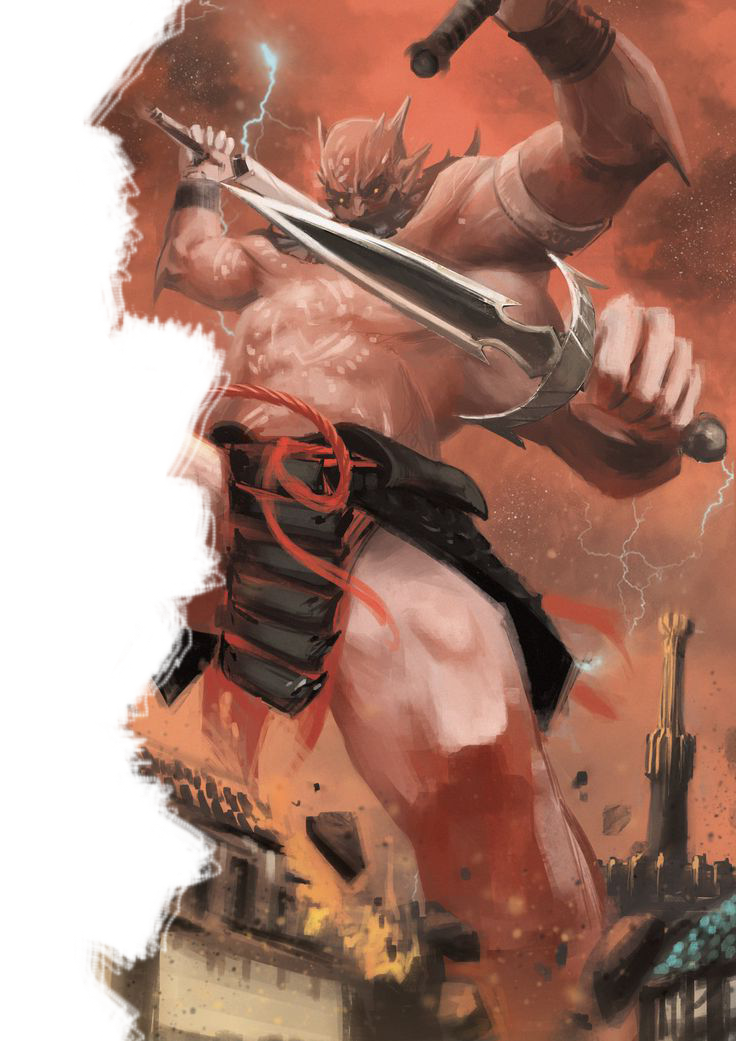
Mehrunes Dagon
Mehrunes Dagon is the prince of destruction. His sphere is change, energy, and ambition, and is generally considered one of the "evil" Daedric Princes. His realm is the Deadlands, and his servants are most commonly Scamps, Daedroths, Dremorae, and Xivilai.
Known Artifacts
Two artifacts are known to be linked to Mehrunes Dagon: the Daedric Crescent and Mehrune's Razor.
Daedric Crescent
A double-sided sword in the shape of a crescent, holding the stats of a greatsword. These Crescents are widespread among Dagon's most faithful servants. When you strike a creature with a Daedric Crescent, they are paralyzed for 3 rounds. During that time, their AC is also reduced by 3.
Mehrune's Razor
Mehrune's Razor is a dagger made of Ebony, and is said to be able to kill a creature instantly, though this is incredibly rare. It holds the power to cut anything into anything. When you hit a target with this weapon, you deal an additional 1d6 acid damage. their AC is decreased by a quarter of your total damage, rounded up(minimum of 1). The target must make a Constitution saving throw. If they fail, they are poisoned.
Knightly Tenets
Though the exact words and strictures of an Oath to Mehrunes Dagon vary, Knights of Mehrunes Dagon share these tenets.
Destruction. Rend the useless and show no mercy. Destroy your enemies, and scar the landscape.
Self-Refinement. Cut away that of you that is useless, and sever your weaknesses without reservation.
Divine Blessings
Over the course of your adventures, Mehrunes Dagon may choose to bless you with one of the following feats.
Scampskin
You have resistance to psychic damage.
Xivilai's Strength
You have an additional +1 to Strength.
Blazing Walk
While walking, flames from Oblivion follow your footsteps.
Aura of Conquest
See Xanathar's Guide to Everything page 33.
Divine Favor: Daedric Conquerer
Once per long rest, as an action you can channel energy from the Deadlands through your actions for 1 minute. You have resistance to all damage. You have the Multiattack action, and any attack rolls of a natural 19 count as a critical hit.
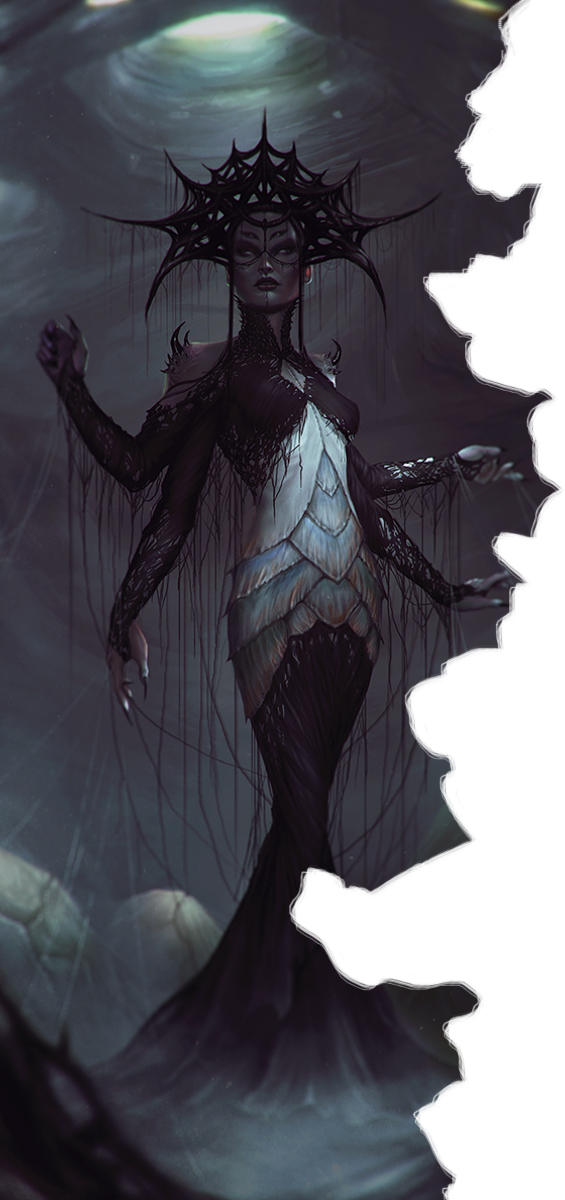
Mephala
Mephala is the Webspinner, the Daedric Prince of shadows and murder. Despite this, she is considered one of the more benign Daedric Princes. Her realm is the Spiral Skein, and the Spider Daedra are her servants.
Known Artifacts
There are three artifacts associated with Mephala: The Ebony Blade, the Ring of Khajiit, and the Obsidian Husk.
Ebony Blade
The Ebony Blade is an Ebony Katana. The Wielder gains proficiency in Katanas as long as they wield the blade, and when the Ebony Blade strikes a creature, the wielder regains hit points equal to half of their damage.
Those who wield the blade consign their souls to Mephala, and will slowly be driven insane.
Ring of Khajiit
While wearing the Ring of Khajiit, a creature is invisible, and has proficiency in stealth. They also have an additional 5ft of movement speed.
Obsidian Husk
The Obsidian Husk has the power to control shadows, capable of creating up to three shadelings from any shadows within 30 feet. These shadelings will assist in combat(See their entry in the Creature Statistic).
Knightly Tenets
Though the exact words and strictures of an Oath to Mephala vary, Knights of Mephala share these tenets.
Act Unseen. Subtlety is mastery. The invisible hand is that which guides fate.
Don't be Reckless. Do not kill blindly or without reason. Only those that need die should.
Impermanence. There can be no official art, only fixations that will erase from the awe of the people given enough time.
Divine Blessings
Over the course of your adventures, Mephala may choose to bless you with one of the following feats.
Walk of the Webspinner
You have proficiency in stealth.
Spider Climb
You are always under the effects of the Spider Climb spell.
Aberrant Silk
Once per long rest, you may utilize the 5e spell Web as detailed in the Player's Handbook page 287 without using spell slots.
Divine Favor: Move Unseen
Once per long rest, as an action you may become invisible for up to 20 minutes. This invisibility ends if you interact with an object.
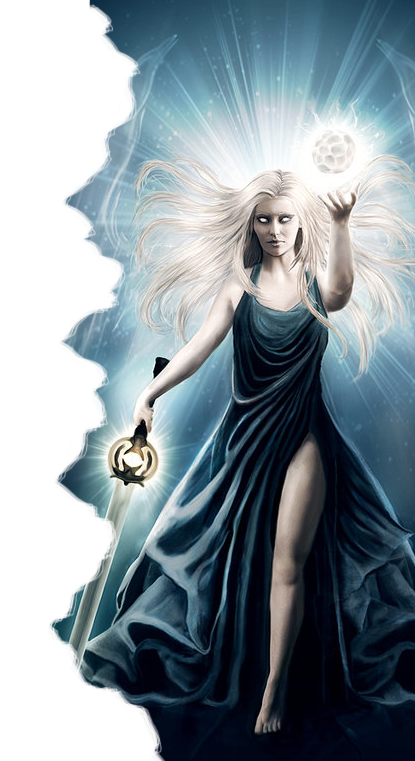
Meridia
Meridia, knwon by some as the Glister Witch or the Lady of Infinite Energies, is the Daedric Prince of the energies of all living things. Associated with both the Magna-Ge and the Daedric Princes, she presides over The Colored Rooms. Her servants are the Aurorans.
Known Artifacts
Meridia is associated with two artifacts: Dawnbreaker and the Ring of Khajiit.
Dawnbreaker
Dawnbreaker is a unique Ebony Longsword. When striking a creature, it deals an additional 1d4 fire damage. If the creature is undead, it deals an additional 2d4 radiant
damage, and sets the target on fire.
Once per long rest, when you kill an undead creature with it, Dawnbreaker may emit an explosion of 3d6 radiant damage to all undead within 15 feet of you. All Undead affected are frightened for three turns. If you are a Vampire, this will affect you as well.
Dawnbreaker puts out bright light within 10 feet, and dim light within another 10 feet after that.
Ring of Khajiit
While wearing the Ring of Khajiit, a creature is invisible,
and has proficiency in stealth. They also have an
additional 5ft of movement speed.
Knightly Tenets
Though the exact words and strictures of an Oath to Meridia vary, Knights of Meridia share these tenets.
Light the Darkness. The stars can only do so much. Bring light to the darkest corners of Nirn.
Cherish your life. You are the greatest beauty you will ever know. Bask in the light of the glory you create.
Spurn the Undead. End the Undead wherever you find it. Unlife demeans the living.
Divine Blessings
The Light Within
If you do not already, you have Darkvision up to 60ft.
Divine Smite
See Player's Handbook page 85.
Aura of Light
Once per short or long rest, as an action, you may emanate
an aura of light. The light levels within 30 feet of you
become bright light, and the next 15 feet become dim
light.
Divine Favor: Aetherial Bastion
You may expend a spell slot to increase your AC by half the spell slot's level, rounded up(minimum of 1).
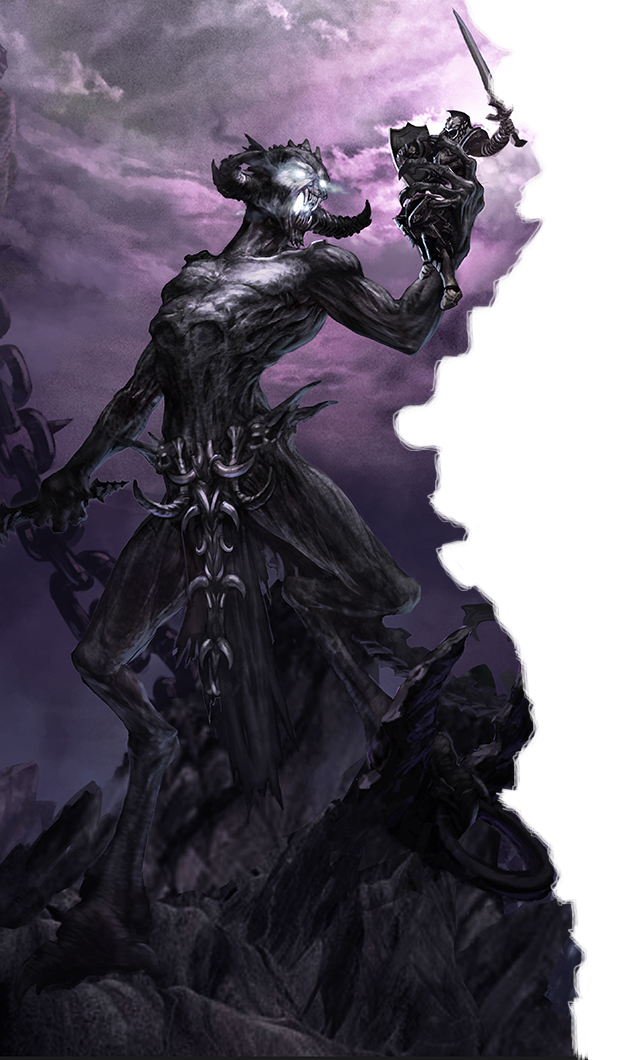
Molag Bal
Molag Bal is the Daedric Prince who's sphere is the enslavement of mortals. Ostensibly one of the truly evil Daedric Princes, he is the father of Vampirism. He presides over Coldharbor, and employs Dremorae, Daedroths, and Daedric Titans.
Known Artifacts
Molag Bal is associated with a single artifact: The Mace of Molag Bal.
Mace of Molag Bal
The Mace of Molag Bal is an Ebony Mace. When it strikes its target, it deals an additional 2d4 necrotic damage, and traps the creature's soul if the wielder has any empty soul gems. The Mace's victims also lose their ability to cast spells until the end of their next turn.
Knightly Tenets
Though the exact words and strictures of an Oath to Molag Bal vary, Knights of Molag Bal share these tenets.
Exert Your Will. Dominate the weak, break their bones between your teeth, leash them with chains, and turn them into your tools.
Strength Above All. Be not weak yourself, or forfeit your life.
Douse the Flame of Hope. It is not enough to defeat an enemy in battle. Your victory must be so overwhelming that your enemy's will to fight is shattered forever.
Lay on Hands
When Knights of Molag Bal use Lay on Hands on other creatures, the effect transforms. Instead, it deals Necrotic damage up to your remaining points in your Lay On Hands pool. Using Lay on Hands on yourself retains the original effect.
Divine Blessings
Over the course of your adventures, Molag Bal may choose to bless you with one of the following feats.
Scornful Rebuke
See Xanathar's Guide to Everything page 38, ignoring the level requirement.
Aura of Conquest
See Xanathar's Guide to Everything page 38, ignoring the level requirement.
Divine Favor: Soul Harvest
When you kill a creature, as a bonus action you may choose to trap its soul, regardless of whether or not is is under the effects of Soul Trap.
This feature has no effect on undead and constructs.
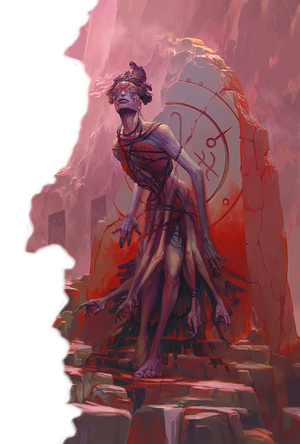
Namira
Namira, the Lady of Decay, is the Daedric Prince of ancient darkness. One of the "evil" Daedric Princes, she presides over the Scuttling Void and her favored servants are the dro-M'athra.
Known Artifacts
Namira is associated with one artifact: The Ring of Namira.
Ring of Namira
When injured from an attack while wearing the Ring of Namira, your attacker will also take damage up to half of the damage dealt, rounded up.
Knightly Tenets
Though the exact words and strictures of an Oath to Namira vary, Knights of Namira share these tenets.
Strike from Within. You need not destroy something physically to defeat it. Work from the inside to destroy the outside.
Fear is a Tool. Strike horror into your enemies.
Only Namira's Work Lasts. All work fades, only decay will linger.
Divine Blessings
Over the course of your adventures, Namira may choose to bless you with one of the following feats.
Devour
Upon eating the flesh of a sentient foe, after receiving this feat, Namira will bless you by restoring your health by up to 2d6 hit points.
Terrorize Foe
Once per short or long rest, you may use an action to terrorize your enemies. Targeting a creature, they must succeed a Wisdom saving throw or become frightened, and on the start of each of their consecutive turns, must succeed a Wisdom saving throw to snap out of it.
Baleful Touch
You can use your action to deal 2d6 necrotic damage to a creature within 5 feet. In addition, the target must make a Constitution saving throw. If they fail, they are poisoned.
Decaying Strike
All of your attacks now deal an additional 1d4 necrotic damage. The target creature must make a Constitution saving throw. If they fail, they are poisoned.
Divine Favor: Aura of Decay
Hostile creatures within 30 feet of you must roll a Constitution saving throw at the start of their turn. If they fail, they are poisoned. This feat does not work while you are unconscious.
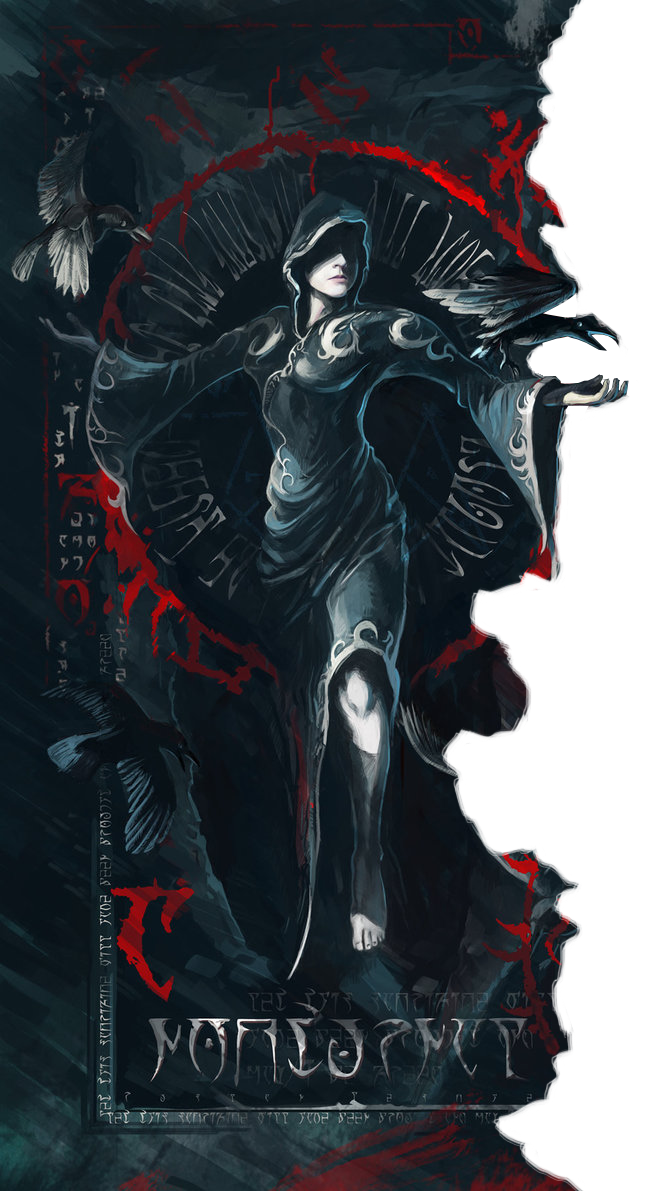
Nocturnal
Nocturnal, known to some as the Night Mistress, or by other titles, is the Daedric Prince of night and darkness. She presides over The Evergloam, Shade Perilous, and other planes, and her servants are the lesser and greater Nocturnals.
Known Artifacts
There are three artifacts associated with Nocturnal: The Skeleton Key, the Grey Cowl of Nocturnal, and the Bow of Shadows.
Skeleton Key
The Skeleton key is a key that can unlock any door, both
literally and metaphysically. The key may only be
used once per long rest.
Grey Cowl of Nocturnal
The Grey Cowl takes the form of a grey leather cowl, obscuring the wearer's face. The wearer of the cowl's true identity remains concealed as long as they wear it, regardless of the presence of any identifying marks.
Bow of Shadows
The Bow of Shadows is a Longbow that provides its user increased speed and invisibility. While the bow is equipped, the user is completely invisible, and gains an additional 5ft of movement speed.
Knightly Tenets
Though the exact words and strictures of an Oath to Nocturnal vary, Knights of Nocturnal share these tenets.
Versatility. Use whatever lies before you. Everything can be turned to your advantage.
Mystery. Nothing may be known for certain. In all things, only your own truth can be known.
Theft. Steal from the weak and strong. Be true only to yourself.
Divine Blessings
Over the course of your adventures, Nocturnal may choose to bless you with one of the following feats.
Dark Sight
If you do not already, you have 30 feet of Darkvision.
Nightwalk
When walking in Dim light or darker, you have an additional +2 to all stealth checks.
Raventongue
You may converse with Ravens.
Divine Favor: Channel Aura: Aura of Darkness
Concentrating, you request the aid of Nocturnal for up to 1 minute, using your Channel Aura. All bright light sources within 30 feet are diminished to dim light, and all dim light sources within the same radius are diminished to darkness.
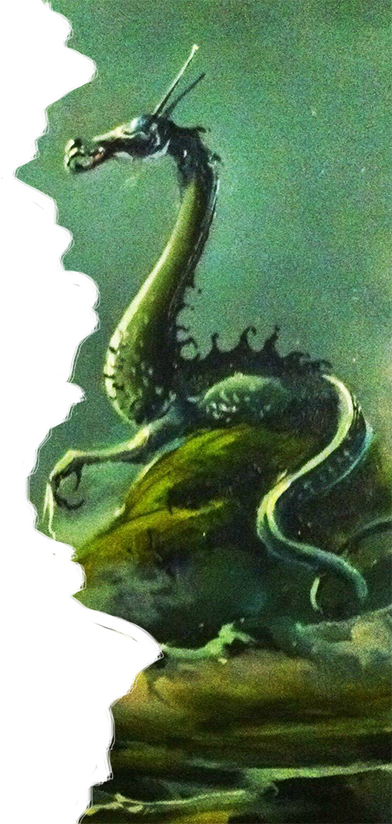
Peryite
Peryite is the Daedric Prince of Tasks, Pestilence, and Natural Order. He generally takes the form of a green, snakelike dragon. He presides over the realm of the Infernal Pits, and his servants are often Daedrats, Plague Atronacht, and Pestilent Dremorae.
Known Artifacts
Peryite is associated with three artifacts: Sepllbreaker, Denstagmer's Ring, and the Mirror of Hard Truths.
Spellbreaker
Spellbreaker is a heavy Dwemer shield, capable of ended the effects of spells. When the wielder is the target of or affected by a spell, they may roll a Constitution save. If successful, the caster's spell slot is expended, but the spell remains uncast.
Denstagmer's Ring
Denstagmer's Ring confers the wearer immunity to all diseases and poisons, and resistance to all forms of damage. The wearer's maximum hit points is reduced to 1.
Mirror of Hard Truths
The Mirror of Hard Truths displays whatever truth the viewer is seeking, knowingly or unknowingly, no matter how terrible or painful it is.
Knightly Tenets
Though the exact words and strictures of an Oath to Peryite vary, Knights of Peryite share these tenets.
Be Prepared. Be meticulous and organized. Only the fool acts without meditation.
Balance in Pain. All things are created, and all things are destroyed. Each has its time. Sickness is not a curse, but a boon.
Duty. All tasks hold meaning, and to shirk responsibility is profane.
Divine Blessings
Over the course of your adventures, Peryite may choose to bless you with one of the following feats.
Affliction
You will not be harmed or killed by poisons or disease, though symptoms will continue to show themselves, and disease you carry will be contagious.
Natural Reversal
Poisons will heal you, and healing energy will harm you.
Divine Favor: Channel Aura: Aura of Pestilence
Concentrating, you request the aid of Peryite for up to 1 minute, using your Channel Aura. All creatures within 30 feet, including yourself, take 1d4 acid damage, and must make a Constitution saving throw. If you fail, you will be poisoned.
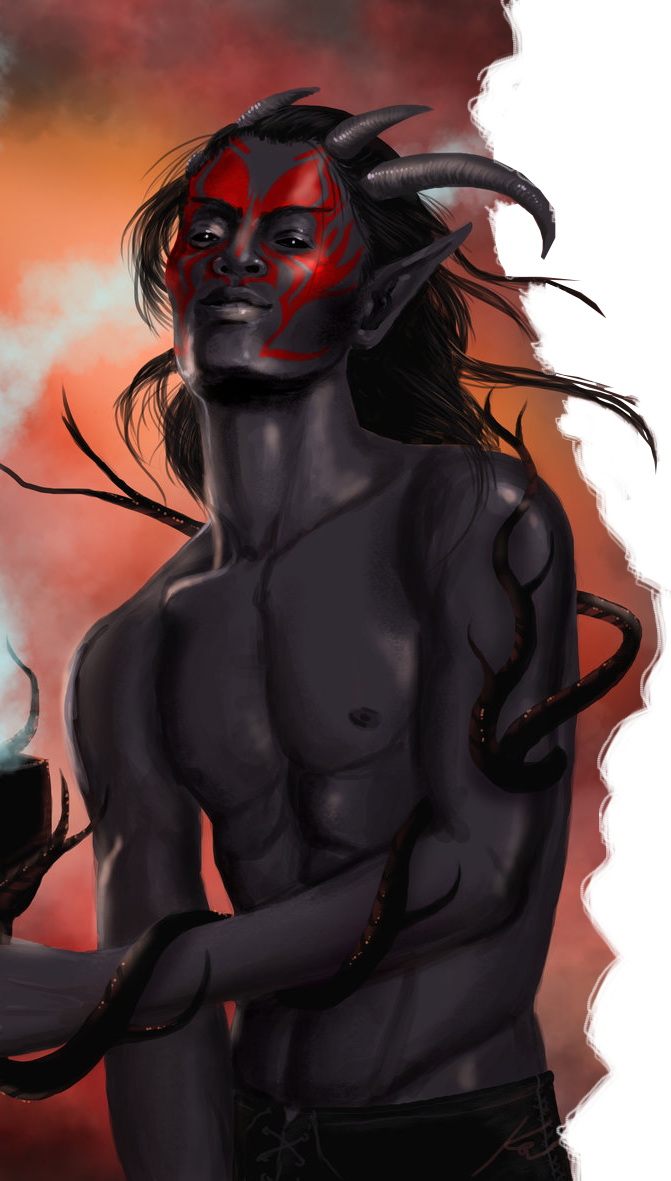
Sanguine
Sanguine is the Daedric Prince of debauchery, hedonism, and indulgence. He presides over the Myriad Realms of Revelry, a conglomeration of daedric planes, and his servants are unknown.
Known Artifacts
Sanguine is associated with one artifact: Sanguine's Rose
Sanguine's Rose
Sanguine's Rose can take many forms, though it is most often seen as a large rose, to be held like a staff. Each time it is used, a petal is lost. When all petals are lost, the Rose disappears.
You may use the Rose to summon lesser Daedra as if you were casting a conjuration spell. You do not need to make a saving throw, as the Daedra you summon will be uncontrollable, though they will not attack you. They will return to their planes after 30 seconds pass.
Knightly Tenet
Though the exact words and strictures of an Oath to Sanguine vary, Knights of Sanguine share this tenet.
Always Enjoy Life. There is no greater reason to live than pleasure. Find what brings you the most joy, and never waver from that cause.
Divine Blessings
Over the course of your adventures, Sanguine may choose to bless you with one of the following feats.
Persuasive Drinker
You have proficiency in Performance and Persuasion while drinking.
Prolific Gambler
You have proficiency in a gaming set of your choice.
Revelry
Once per long rest, you may summon a keg of ale.
Divine Favor: Party Animal
By living true to Sanguine's ideals, he invites you on a cosmic pub-crawl. In the span of a couple hours, you go on a month-long party across Tamriel, partying it up and causing trouble. Afterward, you don't remember what transpired, but your lifestyle of debauchery has led you to no longer need sleep. All actions that require a long rest can be recharged by taking a short rest and a good drink at any tavern.
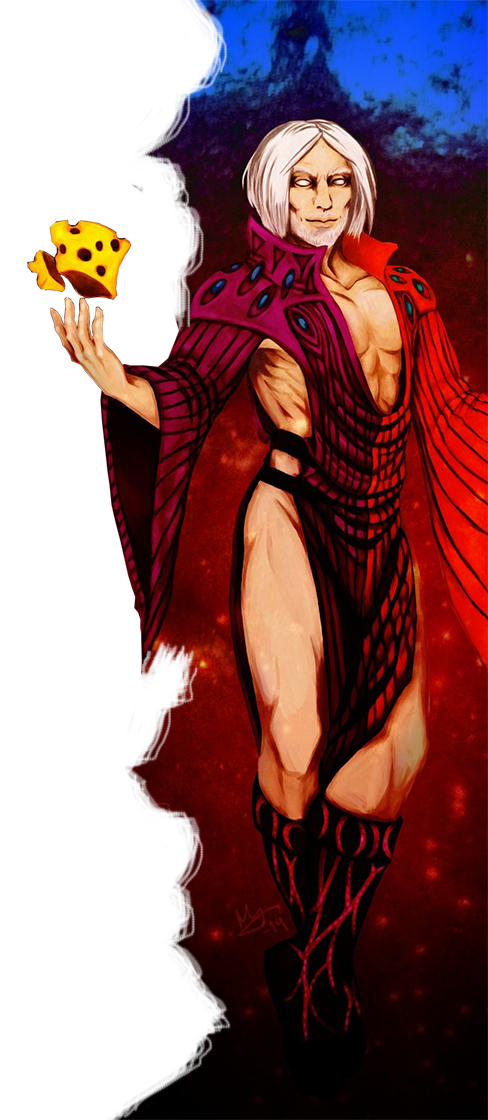
Sheogorath
Sheogorath, the fourth corner of the house of troubles, the king of the Never-There, and the prince of madness. He rules over the Shivering Isles, and his favored followers are the Golden Saints and the Dark Seducers.
Known Artifacts
There are four artifacts associated with Sheogorath: The Wabbajack, Gambolpuddy, the Staff of the Everscamp, and the Fork of Horripilation.
Wabbajack
The Wabbajack holds multiple potential effects. When targeting a creature with it, you make a ranged spell attack. When you hit, roll for one of the effects on the Wabbajack table.
Gambolpuddy
While wearing Gambolpuddy, you have -2 to your Strength, Constitution, and Wisdom, and have -5 feet of movement speed. You gain +2 to your Dexterity, Intelligence, and Charisma scores, and advantage on all skill checks and saving throws.
Staff of the Everscamp
When you equip the staff of the Everscamp, you may not unequip it without Sheogorath's permission. While it is equipped, you have four scamp familiars at once. You may not take on more familiars. If you already have a familiar, it is banished back to Oblivion.
Fork of Horripilation
While wielding the Fork of Horripilation, you temporarily have the Stunted magicka and spell slot absorbtion effects of the Atronach birthsign, regardless of whether you hold that sign or not.
Knightly Tenets
Though the exact words and strictures of an Oath to Sheogorath vary, Knights of Sheogorath share these tenets.
Be Unpredictable. Let not your enemies see your intentions, lest you become a pawn.
Take Nothing for Granted. Admire the beauty around you. And the cheese.
Divine Blessings
Over the course of your adventures, Sheogorath may choose to bless you his divine madness. When you would gain a blessing from Sheogorath besides an artifact, make a roll on the Long-Term madness table.
Divine Favor: Channel Aura: Aura of Madness
Concentrating, you request the aid of Sheogorath for up to 1 minute, using your Channel Aura. All creatures within 30 feet, including yourself, must roll on the short-term madness table at the beginning of their turns as long as this is active.
Wabbajack
| d12 | Effect |
|---|---|
| 1 | The target creature transforms into a random other creature. |
| 2 | The target creature doubles in size. |
| 3 | The target creature shrinks to half its size. |
| 4 | The target creature gains +5 in any ability score, and may surpass 20. |
| 5 | The target creature breaks out into dance. |
| 6 | The target creature knows all of your spells, and does not need spell slots to cast them. |
| 7 | The target creature becomes a random piece of food. |
| 8 | The target creature becomes a sentient weapon, attuned to you. |
| 9 | The target is restored to full health. |
| 10 | The target is reduced to half its health. |
| 11 | The target gains its maximum health as temporary HP. |
| 12 | The target is permanently transformed into a perfect statue of itself. |
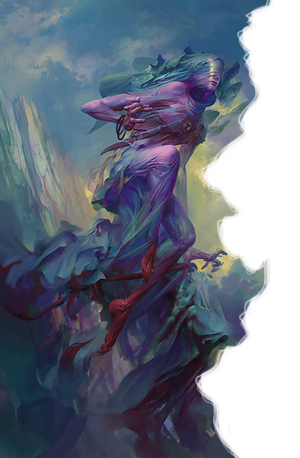
Vaermina
Vaermina is the patron Daedra of Mysticism. Her sphere is dreams, nightmares, and visions. She presides over Quagmire, also known as the Dreamstride, and her servants are the Dreamwalkers.
Known Artifacts
Vaermina has one signature artiface: The Skull of Corruption.
Skull of Corruption
The skull of corruption creates a clone of whomever it is used on. The clone will engage in combat with their original.
Knightly Tenets
Though the exact words and strictures of an Oath to Vaermina vary, Knights of Vaermina share these tenets.
Be without fear. An impenetrable mind lends to an impenetrable body.
Dream. Fill your mind only with ambition, leave no room for weakness.
Divine Blessings
Over the course of your adventures, Vaermina may choose to bless you with one of the following feats.
Portent
If you do not already, you now have the Mage feat Portent.
Dreamsleeve Traveller
Vaermina facilitates your travel through the Dreamsleeve after you die. When you die, after 24 hours you will return to life, as if someone had cast Reincarnate upon you.
Dreamwalk
You may enter the dream of another creature. While in its dream, you may attempt to manipulate their thought, seed or quell ideas, or leave them feeling restless.
Restful Slumber
When you take a short rest, you gain all the benefits of a long rest.
Learn from the Dream
You have an additional +1 Wisdom.
Divine Favor: Channel Aura: Aura of Sleep
Concentrating, you request the aid of Vaermina for up to 1 minute, using your Channel Aura. All creatures within 30 feet must succeed a Wisdom saving throw or immediately fall asleep. Creatures who fall asleep because of this ability suffer terrible nightmares, and take 4d8 Psychic damage at the beginning of their turns until they wake.
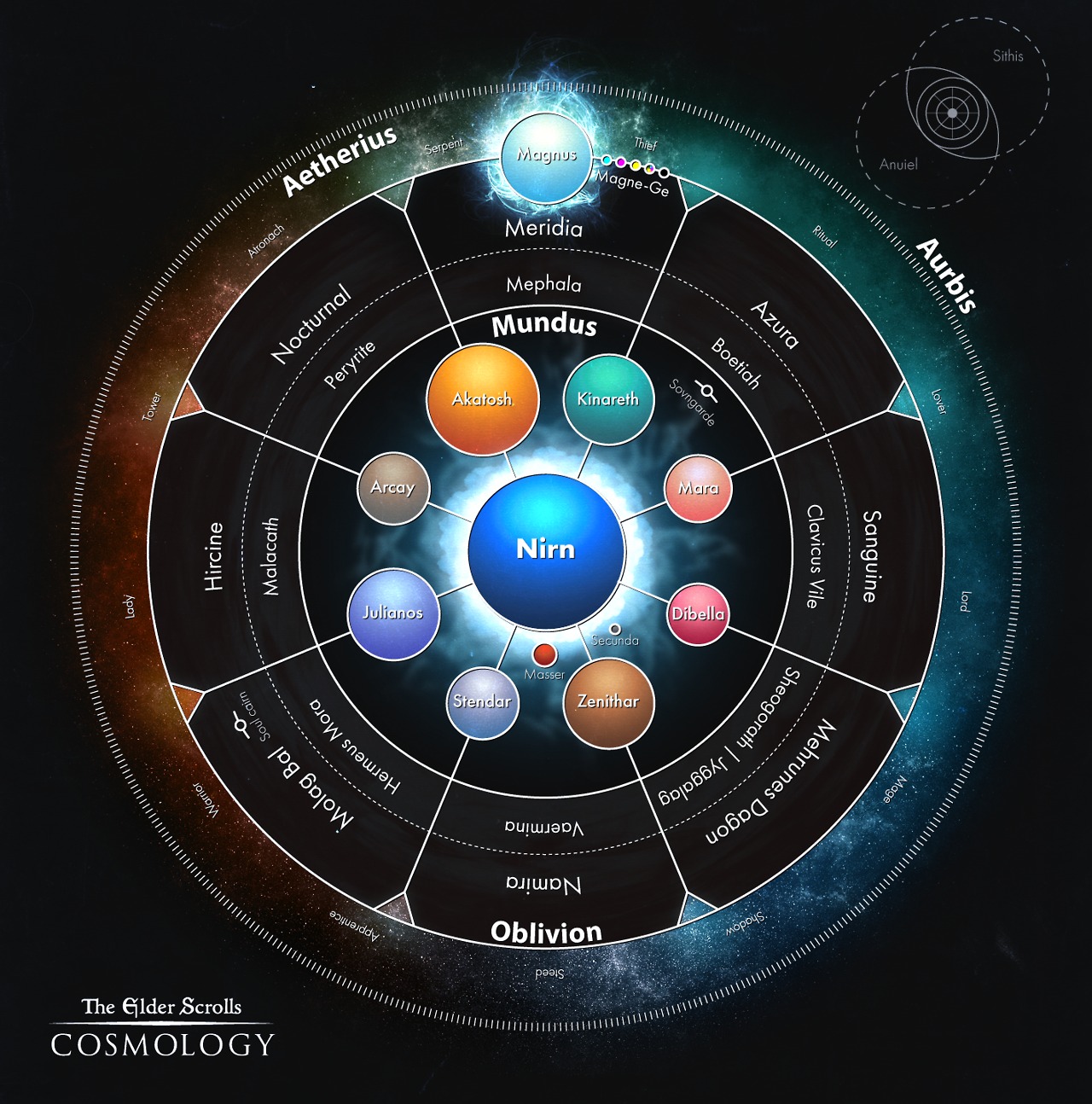

Appendix C: The Planes of Existence
The greater Cosmos in uncharted in the Elder Scrolls universe, with most of the action taking place in the mortal plane of the Mundus, and the outer planes of Oblivion. There are countless planes, many completely unseen by mortal eyes, some known only in song and tale. Every location a Dungeon Master runs his or her adventures takes place in one plane of existence of another. Beyond Mundus, there are planes of pure magicka, realms held together only by thought, and the planes run by the Daedric princes. Aedra, too, have their own planes, though they are reachable only through constant faith.
Magicka is drawn from these planes, as are the Lesser Daedra. As your character achieves greater power and higher levels, they may be tasked or drawn to enter these outer planes, be it to protect the Mundus from invading forces from the Deadlands or Coldharbor, to increase your understanding of the world and its mechanisms, or to raise a mug with fallen heroes in Sovngarde. You may walk on ground that shifts between solid and unsolid states, or find gigantic libraries containing every word that has been spoken.
The Aurbis
The Aurbis is the place within, where all life, mortal and immortal, exists. It is the general term for the combined realms of the Mundus, Oblivion, and Aetherious, and is surrounded by the void.
Mundus
The Mundus is the mortal plane, where Man, Mer, and Beastfolk alike call home. It encompasses Nirn, the moons, the Planets of the Aedra, Sovngarde, and a great deal of void
in between them. Most adventures will begin in The Mundus.
The worlds of the Mundus are diverse, from clockwork underbellies of the moons Masser and Secunda, to rocky worlds of pure ebony, or the breath giant Kynareth. There are also rogue planets, unmappoed and unknown, lurking out at the edges of the Mundus. Some may harbor life, while others are barren.
The best known world in the multiverse is Nirn - the center of life itself, portrayed in all but one of the Elder Scrolls games. Regardless of what world your campaign takes place on, it belongs to your DM - you might imagine it as one of thousands of parallel versions of the world, which might diverge wildly from the published version.
Oblivion
If the planets in the Mundus are diverse and varied, the planes of Oblivion are infinitely more so. They exist just outside the Mundus, and onward until the metaphysical limits of Aetherius. These planes are accessible from Mundus, and beings can pass through portals or other means to get to a particular plane. Mundus contains metaphyscal barriers preventing invasions from the self-serving Daedric Princes controlling the many planes of Oblivion, however. Bound weapons, Armor, and creatures are shaped from the souls of Lesser Daedra, pulled from oblivion into the realm of the caster.
Apocrypha
Apocrypha is the realm of Hermaeus Mora. A library of infinite hallways, it is said to contain every work that has been and will be written, and every word that has been or will be said. Souls drift through the shelves, trapped forever in their search for some piece of knowledge that was once of
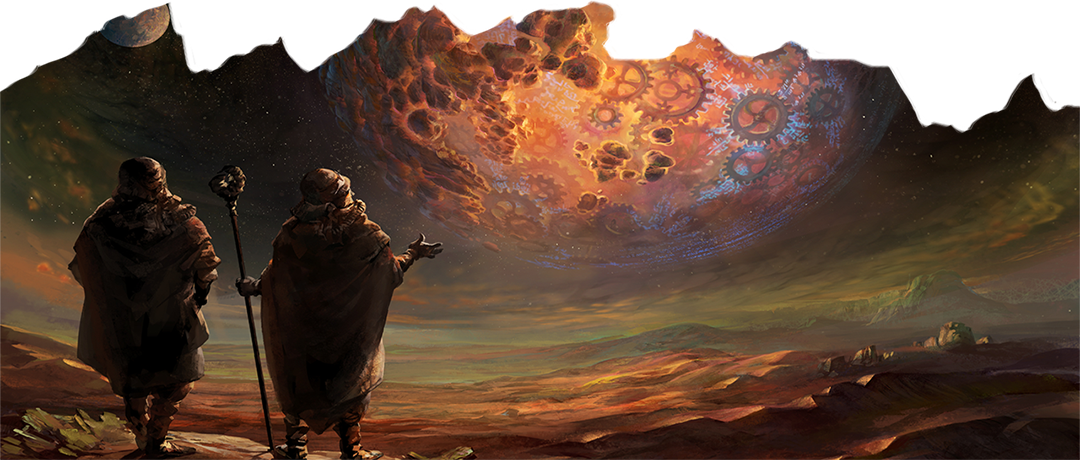
import to them. The corridors are narrow and winding, often passing back in improbable or impossible ways. There are bridges over chasms, lined the whole way down with shelves of books, accessible only by the coils of snaking rope that lick over the edges of the boarding with murderous intent.
The longer one spends in Apocrypha, the more tenebrous depths one can reach, though this should never be desirable, for to become a Seeker is to end up like Herma Mora himself, powerless to his lust for knowledge, unable to use the information he has already gleaned because a new quest has then begun for yet more knowledge. Hermaeus Mora's tentacles can be seen snaking throughout his vast library, if they are looked for, in the dark corners and in the ropes, his twitching presence always watching.
Ashpit
The Ashpit is a realm of dust, ash, and disappointment. In the majority of the realm, mortals cannot breath the air here without special apparatuses or proper breathing magic. Its denizens are vaporous, and there is no "Surface" that mortals would know. Instead, to travel, one would have to levitate.
At the center is the vast spine of some long-dead beast, once the last of its kind, now gone, and at the head of this column is a Death's Head, a smoking pyre in the shape of a skull, ancient and fatherless, formless but formidable. Pass through the balin about its maw, the savage and gore-spattered visage, and here is the Ashpit that every Orc wishes to find himself in after death. Still smoky and ashen, but here and there in the smog is a longhouse, the glow of a victory fire penetrating the dark and casting gleeful shadows on the distant clouds as the Orc Chieftains celebrate, for every Orc here is a Chieftain.
It is said that far enough through these disparate parties, on the very outskirts of the Ashpit, a much smaller fire can be found. Malacath sits alone here, sword cleft in twain, naked, and scarred. The hollers of orcs echo numbly through the choking mist and Malacath takes his head from his hands, prods his fire, and smiles.
Coldharbor
Coldharbor is lorded over by Molag Bal. It is a twisted inversion of Tamriel, where it rains acid andthe sky is a deep purple. Those few mortals that live in Coldharbor are emaciated, and live lives of torment. Reptilian daedra stalk the land, from the Clannfear to the Daedroth, preying on the vestiges of mortal life, or how Molag Bal imagines it.
Bal rules from the Imperial Palace in Cyrodiil, beneath the smouldering ruin of the White-Gold Tower. He sits in a throne some two miles high, and his feet crush twenty men every day. Every building in Coldharbour can sprout horns at Bal's wish and force their inhabitants to succumb to whatever the Prince demands of them at that time. He exists to dominate, and every part of his realm is stratified to place him at the top of the cosmic food chain. The blasted and blackened heath is inhospitable and dastardly hot during the day, and fearsomely cold at night, when the lizards sleep. Bal has no imagination, and can only replicate what hee sees from Mundus, and then seek to dominate it.
The Colored Rooms
The Coloured Rooms are a rotating Wheel, a mournful imitation of Nirn, which Meridia so longs to be a true part of. Her wheel has no temperance, though; it is impatient and whirls this way and that, changing faster than a mortal can comprehend, if indeed it has ever changed at all. The Dragon's arrow is weak here, and the Coloured Rooms threaten to eliminate the visitor by old age as much as by the denial of their birth. They never quite do though.
The seven spokes of Her Wheel are the Gilded Dawn, the Azurite Rift, the Fawn Thicket, the Scarlet Sand, the Mauve Wood, the Hoary Mountain and the Silent Pool. There are many wanderers in the Coloured Rooms; they become Strangers to each other and to themselves. They are watched by the Aurorans, inscrutable beings in armour, who are nigh invisible because of their armour, which blends in with their surroundings.
The Deadlands
Mehrunes Dagon's Deadlands are devoid of any life or hope. No Daedra live there but those who are pressed into service from other realms, it is a blasted and desolate wasteland. Obsidian outcrops jut from oceans of lava and evilly organic claws rise from the ground. This is the product of neglect and destruction; there is no rule of any sort, no thought given to the lands. Dagon's only constructive pursuits have been in aid of destruction, and for that he needs lesser daedra that are not of his own being.
The Dremora clans that swear fealty to Dagon constructed citadel Towers across the realm in their own style, to house the Stones that would anchor Gates in Nirn for an unknown purpose.
Desideratum
Desideratum is the Flower that Bites, the Beautiful Snake, a glittering world of alluring smell and hubric brimstone. Curtains of incense cloud the doorways, and vistas of success open up before sudden plunges. Clavicus Vile floats in a caravan pulled by a Breton who was once an Orc, bound in silk and encircled by a gold band of seven leagues.
Banners and standards float from Vile's body, trailing throughout the crimson night. There are three windows; through each of them a moon can be seen, and before them all is a dog, who was once a scamp, who sits on a tasseled pillow. The pillars and arches of ornate stone give way below to a vast drop, and then a tangled briar of not-quite-trees and almost-flowers. There are beings down there, though it is not clear who or what they are, or once were.
Evergloam
Nocturnal's realm is as unknowable to mortals as she is, though some have journeyed there. It is a dark place, subject to squalls of ravens' feathers and wrought smoke. There are conduits of ebony, great shovel-shaped tongues of shadow that whip across the plane. Tentrils of leather and birds' beaks make shapes that seem familiar from a distance, but become alien at the approach. There is a distant glittering, like the lights of squid-fishers on a bay at night, and it permeates all the mood of the place.
Coiling around the Cradle of Shadow, Nocturnal's castle and the seat of her power, are two intertwined hands, forming a diamond of infinite blackness. Their weapon, a club, is said to be nearby, in the hollows of darkness that are the castle's foundations. The heart of Nocturnal's realm is her throne, and though it has never been seen, it is thought to wear a cloak and call itself Ota-be, or Taste-Note. On each arm of the Ota-be sits a raven, who are called Rorin and Orin, and they bring Ota-be souls, food and information, though Ota-be does not care. Mortals do not understand Nocturnal or her sphere, but she also does not care about that.
The Hunting Grounds
Hircine's Hunting grounds are a fertile island of labyrinthine woods, where Hircine and his Wild Hunt sweep across the land in pursuit of the Twelve Trophies. When Hircine rests at the Hunting Lodge, a low building of elk-antler and cobblestone, then the dawn will herald a Great Hunt. The Trophies are the Great Bear, the Long Wolf, the Uderfrykte, the Wereshark, the Star Eagle, the White Stag, the Eye Fox, the Carven Crab, the Undying Crow, the Unicorn, the Man-Bull and the Hare.
Hircine never speaks a word to his Hunt, but he blasts upon his great Horn at at that the Grounds grow silent and Hircine's quiver grows into a tree. Then the hunt begins and there is no more need for speech. All of the mortal werefolk end up in Hircine's Hunt, so he has no need for Daedra. It is unclear if his Trophies are Daedra, because he has little control of them. His whole realm is ungoverned, in fact, the power is located in three tribes of primitive men and one of mer, who have persisted living there since the beginning times. They are often slain for their fingers when the Hunt rushes past them, for in that land of green and crimson the Hunt is a force of nature, it is what the world is built on. The Hunting Grounds are trapped in a cycle that Hircine will never tire of, but his mortal charges may.
Moonshadow
Moonshadow, the Twilight Eclipse, is an ellipsis in shape, composed of two orbits that intersect at two points. Moonshadow perpetually exists in both Dawn and Dusk, as the Eye of Azura, the sun of that world (a Daedra's interpretation of Magnus) is continually setting and rising.
One half of the ellipsis is Starlight, a garden of such beauty that it drives mortal minds mad. Moonbeams gently pour from ivory spouts, singing with the voice of stars. Sun-mist is festooned on the paths' edges, but it is growing old, a burnished orange as it trickles across the realm in impossible, well-seeming forms. At the garden's center is the Blaze Blue, the isthmus that links to Eclipse, the darkened side of Moonshadow. Here is a land of crystal wreaths and valleys of pondering light. This is the home of the Winged Twilights, daedra who serve Azura as guardians and envoys. From Eclipse they look down (or up, or across) at the mortal souls who roam the Starlight gardens, for they have been charged with protecting them, from danger as well as from finding out about Azura's true nature.
Myriad Realms of Revelry
Sanguine's realm is a simple affair - a sprawling, lively, Nibenese town engaged in eternal celebration. The occasional drunk has been known to find himself in an unfamilar town square, between a tall inn, a brothel, a brewery and a fountain that runs with mead. This is Rockton, Sanguine's debauched capital, where hedonism and lust run rampant and the sky blushes gold from jubilation. There are stone baths rimmed with amethysts and more than five hundred rooftop statues. Sanguine himself can be found at every place - he is in the inn, dancing on the tables, while Sanguine is drinking in the square, while Sanguine watches drowsily from a grassy patch by a tree. It is no surprise that mortals end up coming here, but they do grow bored as their Prince and his daedra do not. They eventually flee into the groves and dells of the surrounding forest, where fouler creatures than drunks dwell, kept infinitely alive on a diet of ale and sex, and driven mad by lust or gluttony or stagnation. There is no fulfillment to be found with Sanguine.
The Pits
Peryite's Pits are cold and uninviting, but with occasional great belches of sulfurous heat. The Pits are infinite rolling hillocks of dirt pounded solid by workers' feet, broken there and here by grey-leafed pine trees. All the mortals here wear masks, and all the Daedra are in human form, and go without. They are a busy and determined lot, trooping to and fro listening intently to the commands that come from the crevices that open up in a geyser of bronze fog and a booming, nasal voice. With haste, the masked mortals set about sealing the fissure first with tools, then with the bodies of their fellows, until the wound is healed. The Men wear masks of wood, monstrous faces upon them. The mer wear cloth, and they have babies' faces. The beast-folk wear metal, and they are smooth and featureless. They traipse back into their towns at the end of each working day, afflicted with contentment, and then devour one of their number. Peryite sits at the center of all of this, in the deepest Pit, in a pool of ink and oil, which fills steadily before igniting at a regular interval. When it does, Peryite orders an audience with every mortal soul in his possession, but what they speak of is unknown.
The Scuttling Void
The Scuttling Void is a vast field of mud under a cold, white sky. There is no landmark, but a single tall, wooden post, upon which sits a ragged figure with the skull of a vulture for a head. If one dares listen, it whispers the way to Namira's throne room, deep under the mud, where no light reaches.
Inummerable sharp arms pass one down through the suffocating earth, and they take an entrance tax. No mortal finds audience with Namira without losing something, perhaps an eye, skewered by a chitinous leg, perhaps the juicy flesh from beneath their fingernails, drilled out by quick mandibles. Namira herself is unassuming after this ordeal, a diminutive crone, but her world breathes with her, as her hands and legs and intestine, and her garb is made from the remains of past visitors.
The Shivering Isles
Sheogorath's Shivering Isles are a kingdom of tyrannous unrule and frivolous laws. Here there is to be found the Isle of Mania and the Isle of Dementia, which are both filled with exotic and toxic creatures, both lesser daedra and the Madgod's collection of bizarre creatures.
His personal daedra are the Golden Saints and Dark Seducers, who have been known to be seen in Tamriel, luring many off the precipice of madness to join Sheogorath in the Isles. For that is the principle trait of the Shivering Isles - its form is more familiar to the mortal eye than most planes, but its populace are the most alien. They are mortals, sure, but given over entirely to madness, a consuming disease beyond any of Peryite, a corruption of the mind beyond Vaermina. It is an affliction on the soul that can not be lifted, but by the Madgod himself, and, when he insanely decides to lift his curse from some madman, the loss of Sheogorath's comfort can be just as damning to the mortal mind. The Shivering Isles should not be approached without an offering of cheese.
Spiral Skein
Mephala sits at the center of her web, twitching her lines and pulling the souls in her grasp ever closer to her maw. Her Spiral Skein is a twisted tower of lies and deceit, with eight strands of silk reaching from the roof of Mephala's Tower Palace to the edge of her realm and a sin in each void.
The first is lies, a cavern full of pillars pretending to hold up the sky. The second is made up of cramped chambers representing envy, while the third is maggot-filled grottoes filled with seductive light. The fourth contains eternally dark tunnels of fear; the fifth, a place of betrayal; the sixth, an arena of murder. The seventh space is home to arcades of avarice and appetite, containing all things mortals would kill or die for, while the eighth is a flaming skein of fury, representing the death that comes to all mortals.
Quagmire
Perhaps of all the major Planes of Oblivion, Quagmire defies exploration the most. It is the most visited plane by mortals (for we visit there every time we suffer a nightmare) but also the most changing. Vaermina changes her plane to a fresh horror every few moments, with a tremendous flash of lightning.
A mortal might find himself falling from the top of the White-Gold Tower one moment, the next, trapped in a corner as a mountain lion approaches. Another flash, and he is face to face with Vaermina herself, who is an unassailable mass of bone and horn, suspended from above by sinew like a macabre marrionette. Her eye sockets are hollow but alive with malice, and her jaw swings open to consume her victim a split second before he awakes, sweating, frightened, but alive and in Mundus again. It is interesting to note that Quagmire sits on the border of Aetherius, and it is assumed that at least part of it lies on the Dreamsleeve itself, to harvest memories for further use in dreams.
Minor Realms
Beyond those realms of the 16 Daedric Princes, there exist a multitude of smaller pocket realms. These realms sometimes have no lord, or they have several. Some are simply an extra realm created by one of the 16, while others are the product of a mortal mage's experimentation.
The Circling
The Circling is the realm of lesser Daedric Prince of obsession and attachment, Maresha. It is a whirling mandala of colourful impressions and visions. Nothing is solid or permanent. It is strikingly beautiful, yet this beauty is ever swept away. None of it may last. Who glimpses the Circling will want to look upon it again until the day he dies, but the second look will never equal the original beauty. It is torment.
The Courts of Sred Toc
The Courts of Sred Toc(sometimes called just "The Courts"), is a pocket realm of Oblivion, owned by the a lesser Daedric Prince known as Sred Toc. It is a massive Courthouse containing billions of courtrooms. The Courts are always in session, as the Spirits his Daedra hunt down are constantly being put on trial for trumped-up charges that Sred felt they deserved for their “wrongdoings”. Beneath his Courthouse is a massive prison complex designed to contain virtually any Spirit trapped inside.
The Fourth Sinus of Takubar
The Fourth Sinus of Takubar (called Takubar for short) is a pocket realm of Oblivion, and the home of the Cold-Flame Atronachs. It is a realm of extreme cold, where the material bonds of the bedrock slide apart to flow like lava. It is the inversion of Infernace, a realm of extreme heat. Takubar was discovered by the denizens of Coldharbour after Molag Bal banished common Flame Atronachs from his realm. Frost Mares are theorized to originate from this plane.
Despite being considered a highly-organized and physical realm, the reality of Takubar is not a projection of the mind of any particular Daedra. Instead, it was created as an extension of its Flame Atronach inhabitants. Realms such as Takubar are termed 'collective realms', and are considered relatively exceptional. However, collective realms are also rather mundane and uniform.
The Drowning Seas
Presided over by Ignir, the lesser Daedric Prince of Penance, is is a realm realm of seemingly infinite sea dotted by tiny atolls and sandy banks. The sun beats down on the shores and water relentlessly. There is no night on the Drowning Seas, shade is all but absent, relief is rare. Though the water of the Drowning Seas has no salt, there is a very real danger in drinking it. Mortals who find themselves adrift in the Drowning Seas may be tempted by the relief the water might offer, but seeking this relief will dull the senses and induce terrifying dreams that cause the drinker to be overcome with feelings of guilt and self-loathing.
The Elderlands.
This realm most closely resembles a badly replicated ancient Tamriel, to the point that it wouldn't be a stretch of logic to conclude someone tried to explain how Tamriel looked to him and he ended up making a group of large island surrounded by smaller islands leading out into Plane’s End, a massive circumnavigating water fall that makes up the “borders” of the Elderlands. If one sails over the edge the fall for a while and then, curiously, land some distance back from where they sailed over the edge near an island that wasn’t there before. The island that appears sometimes stays there permanently and sometimes disappears when no one is watching.
The Elderlands was created by Ira Vanshi, lesser Prince of Curiosity, Secrets, and Light. It reflects his curiosity regarding an unfamiliar existence so as to experiment with it and his drive to discover its secrets. There are many creatures that he created to see what could be done within the bounds of this new form of existence. There have been sightings of something resembling an ancient Bone Colossus mixed with some kind Daedric Titan who seems to act like the guardian of the plane. The few who have seen this eldritch monstrosity have taken to simply calling it “the Behemoth.”
The Eversail
The Eversail is a great ship, helmed by Varasieth, the Spirit of Discovery, Exploration, and Piracy. It is, itself, a mobile plane of Oblivion, constantly vailing across Oblivion in search of new discoveries. It is one of the far-outer planes of Oblivion.
The Gates of Night
The Gates of Night were constructed by Nocturnal, in an effort to prevent an excess of magicka raining down upon Oblivion from the sun, destroying what the Daedra worked so hard to create. It acts as a gate between Oblivion and Aetherious. The gates are made of concentrated shadow, and on Mundus, we experience the opening and closing of the gates as the day/night cycle.
Hatlastad
Hatlastad is also known as the Gallery of Maps, it is a museum containing images of nearly anything or anywhere you desire to see in this particular Branch of the World River. Its ruler, Nagrom Meferan, manifests his presence as a loud disembodied voice. Rumor has it that the lesser creatures who enter his realm are haunted by his voice for all eternity, as he narrates their daily lives. He frequently invites disputing parties to his Gallery in an attempt to solve their conflict.
Infernace
Infernace is a pocket realm of Oblivion. It is a realm of extreme heat and molten rock, and is the home of the Flame Atronachs. It is well known to all conjurers due to the ability to summon subservient atronachs from the realm. The Fourth Sinus of Takubar, a realm of extreme cold, is an inversion of Infernace.
It can be assumed that Infernace, like Takubar, is a 'collective realm', a highly organized realm of Oblivion created not by a single Daedra, but as a collective extension of its numerous, less-powerful inhabitants. This type of realm is considered relatively exceptional, although they're also rather mundane and uniform.
The clan structure of Infernace is unknown, and no hierarchy has been observed due to the difficulties involved in distinguishing individual Flame Atronachs. The realm was once visited by the Demiprince Fa-Nuit-Hen.
Maelstrom
Maelstrom is the realm of Demiprince Fa-Nuit-Hen, the Multiplier of Motions Known. It appears in the style of an arena where mortal challengers can battle the demiprince's Barons of Move Like This in rounds reminiscent of other Daedric or Tamrielic locales.
Opal Spiral
The Opal Spiral is a winding marble staircase of enormous height, surrounded by the darkness of Oblivion. Pilgrims ascend the stair in search of the throne of Ulmesh, lesser Daerdic Prince of hope, which they believe to be at the summit. If any have ever reached the top, none have reported back, but few can ever abandon the climb once they have begun. It is protected by the Yidama, four-armed daedric servants with alabaster skin and sapphire eyes who foretell bright futures, but are incapable of anticipating bad things.
Realm of the Hist
The realm of the Hist is said to be a mysterious realm of Oblivion. It is a lush world, filled with sentient trees. Relatives of these trees include the Hist of Mundus and Clavicus Vile's realm. The Hist supposedly came to Tamriel from this realm in the Dawn Era. The realm is inhabited by Wisperills, colorful luminescent films that dance in the air.
Tamrielic mythology states that, despite the Hists' neutrality, the realm of the Hist was mostly destroyed as the Ehlnofey war passed over it. A small corner of the realm survived and became Black Marsh, but the rest was sunk beneath the sea. This may imply that Black Marsh is a fragment of the realm, which was somehow sundered by the creation of Mundus.
The Soul Cairn
The Soul Cairn is a realm of Oblivion filled with the trapped souls of mortal dead. Rather than being ruled over by any Daedric Prince, it is controlled by mysterious beings that call themselves the Ideal Masters. When a soul is captured by a Black Soul Gem, it is transported to the Soul Cairn to roam for eternity. The Ideal Masters believe that, by freeing mortals from life and dooming them to eternal undeath, they are being saved from meaningless hardship and gifted with peace.
The Soul Cairn is filled with all manner of undead. Some forms are unique to the realm, such as Bonemen, Mistmen, and Wrathmen. Powerful mages once summoned undead minions from the realm using conjuration magic, but these spells were forgotten over time. In their hunger for souls, the Ideal Masters often strike deals with necromancers. In return for souls, the necromancers are given the ability to summon armies of undead from the realm, although they often fall prey to the Masters and end up trapped in the realm themselves.
In order to enter the Soul Cairn, a mortal usually must be dead. This can be achieved by partial soul trapping, or by becoming undead.
Aetherius
Aetherius is a plane made up of pure magicka. Holes in Oblivion and Mundus tear through Aetherius, giving us starlight and the sun itself, the avenue in which magicka pours down and allows life at we know it to take hold. Aetherius holds a few of its own planes, of which very rarely do mortals and even Daedric Princes get the chance to travel to and from.
The Dreamsleeve
The Dreamsleeve is the afterlife for most souls. Picture a river of vibrant blue-green, circling the border of Oblivion. This is the Dreamsleeve. When mortals and spirits who'se souls that haven't been claimed by a particular plane perish, their souls are sent to the dreamsleeve, becoming waves in the river of souls. All memory is stripped and saved, all personality sheds itself here, and the souls are eventually reborn on a particular plane of Oblivion or Mundus. It is an endless cycle.
The Far Shores
The Far Shores is the afterlife sought by the Redguards. According to Yokudan myth, Satakal, the serpentine God of Everything, eats itself over and over, periodically consuming all of creation. By "moving at strange angles" to stride between "worldskins", a process known as the Walkabout, the strongest of the spirits learned to bypass this cycle of destruction. Thanks to Ruptga's guidance, many weaker spirits were able to find their way as well, and the practice became so easy that it became a place—the Far Shores. Here, the spirits can safely wait until Satakal has passed and a new
skin has emerged. There is no hunger or thirst in the Far Shores, but there are ample martial challenges to keep Redguard warrior-spirits engaged for eternity.
Sands Behind Stars
The Sands Behind the Stars, also known as Llesw'er, is the realm to which the souls of Khajiit travel at the end of their days. Described as a paradise promised to the Khajiit by the Riddle'Thar, souls are carried there by Khenarthi's embrace, as long as they have followed the true path of the moons. It is said that the realm is filled with dunes formed of sugar, and a "warmth without end". Legends state that the name "Llesw'er" may have been the inspiration for name of the Khajiiti homeland, Elsweyr.
Sovngarde
Sovngarde is the part of Aetherius where Nords go to after death. It is ruled by Shor and contains the Hall of Valor, a supposedly gigantic feasting hall where the mead "flows like a waterfall". Except in rare cases where one forces a way into Sovngarde, it can supposedly only be reached by true Nords who die valiantly or in battle, regardless of personality. This excludes those afflicted with Lycanthropy, as Hircine takes them to his Hunting Grounds instead.
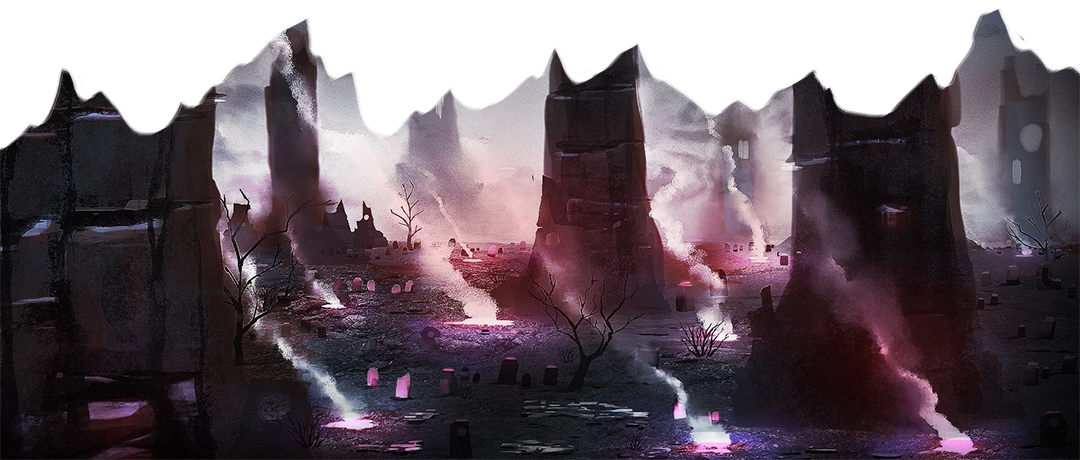
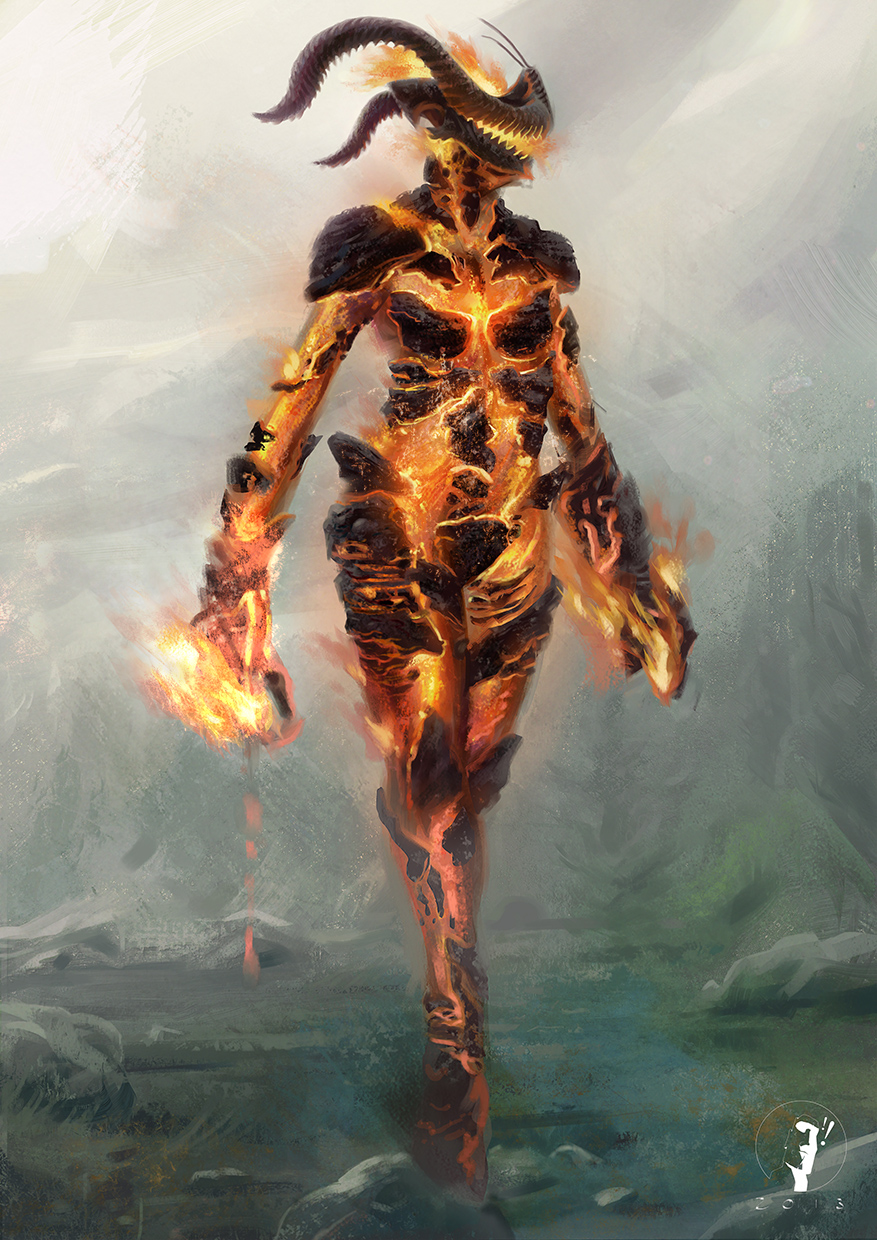

Appendix D: Creature Statistics
Spells and Class Features allow characters to summon creatures to serve as familiars, and transform into animals. While much of the information within the Player's Handbook covers creatures, there are some unique to the Elder Scrolls setting, and Lesser Daedra are entirely new.
Atronachs
Atronachs are elemental Daedra, and come in many forms. Referred to by some as Golems, Atronachs have no specific loyalty to any of the Daedric Princes, but they have been known to serve several, including Mehrunes Dagon and Molag Bal. Although they appear unintelligent, the Atronachs are a very wise foe to face.
A Wide Variety. These elemental Daedra come in many forms. The most commonly seen are Flame, Frost, and Storm Atronachs.
Elemental Rivalry. Fire and Frost Atronachs are no friends of each other, and Storm Atronachs prefer to stick to themselves. It is unknown where or why these rivalries exist, but this relationship can be manipulated in the unlucky event that a character is surrounded by different types of Atronach.
Monarchal Society. Atronachs of their own respective types often defer to larger variants of their kind, referred to as Monarchs. It is unknown if this accurately describes the relationship between these lesser and greater Atronachs, as no mortal has ever had enough time to study and live to tell what they learned.
Flame Atronach
Medium Lesser Daedra, unaligned
- Armor Class 14 (natural armor)
- Hit Points 45 (6d8 + 18)
- Speed 30 ft.
STR DEX CON INT WIS CHA 12 (+1) 18 (+4) 10 (+0) 3 (-4) 12 (+1) 7 (-2)
- Saving Throws Dex +6
- Skills Acrobatics +6, Perception +3
- Damage Immunities fire
- Damage Resistances physical
- Senses darkvision 60 ft., Passive Perception 12
- Languages Daedric
- Challenge 4 (1,100 XP)
Being of Fire. The Flame Atronach is a light source of its own. There is Bright Light in a 20 feet radius around the atronach, and dim light for the next 10 feet. Creatures who attack it in melee combat take 2 (1d4) fire damage. Any fire damage it takes instead heals the atronach.
Burning Footprints. The Flame Atronach leaves behind fire wherever it goes. Its trail can be seen in darkness, putting out dim light for 5 feet, and going out after 6 seconds pass.
Innate Spellcasting. The Flame Atronach's innate spellcasting ability is Dexterity (Spell save DC 13). It can innately cast the following spells, requiring no material components:
At Will: Burning Hands, Weakness to Fire. Once per short or long rest: Fire Rune.
Combustion. When defeated, the Flame Atronach explodes, dealing (3d10) fire damage to all creatures within a 30-foot radius of the atronach.
Actions
Fire Blast. Ranged Attack: +5 to hit, reach 30ft., area of effect 5ft.
Hit: 19 (2d8 + 10) fire damage.Lava Geyser. A geyser of flames erupt from the ground underneath one target. Ranged Attack: +5 to hit, reach 60ft., one target.
Hit: 28 (4d8 + 10) fire damage.
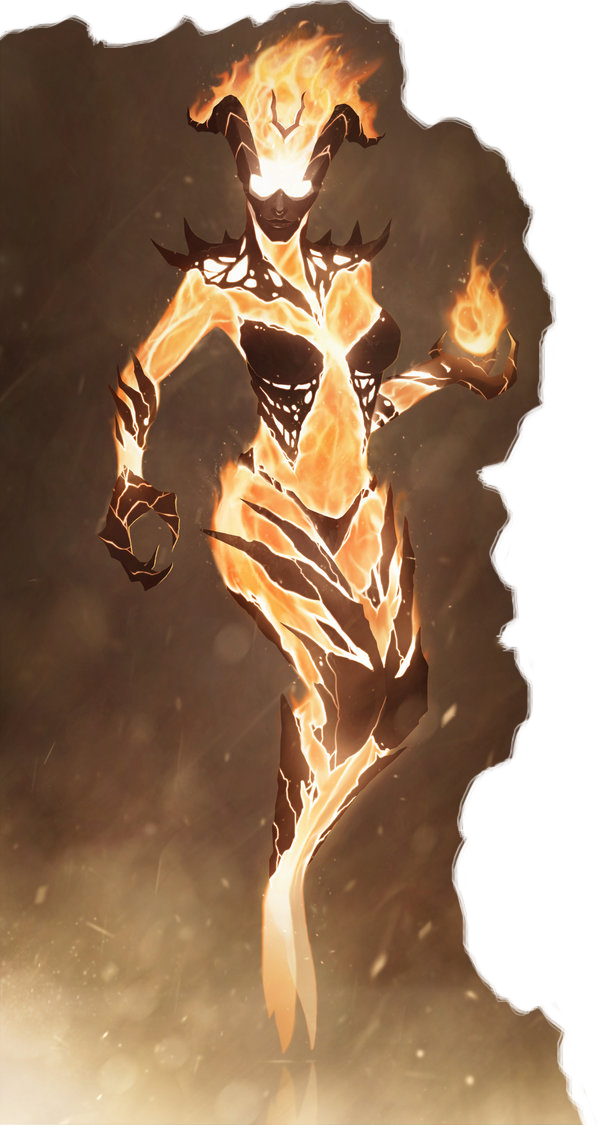
Frost Atronach
Large Lesser Daedra, unaligned
- Armor Class 16 (natural armor)
- Hit Points 67 (9d10 + 18)
- Speed 20 ft.
STR DEX CON INT WIS CHA 18 (+4) 7 (-2) 18 (+4) 3 (-4) 12 (+1) 7 (-2)
- Saving Throws Con +6
- Skills Perception +3
- Damage Immunities cold
- Damage Resistances physical
- Damage Weaknesses fire
- Senses darkvision 60 ft., Passive Perception 12
- Languages Daedric
- Challenge 4 (1,100 XP)
Living Ice. The Frost Atronach can move across difficult terrain created by ice or snow without spending extra movement. In cold climates, the Frost Atronach will regain 1d4 hit points at the start of each of its turns. The Frost Atronach does not need to breath while submerged.
Freezing Gait. The ground around it in a 10-foot radius is icy and is difficult terrain for creatures other than it. The radius moves with the atronach. Creatures within 10 feet of the atronach take 2 (1d4) cold damage.
Innate Spellcasting. The Frost Atronach's innate spellcasting ability is Strength (Spell save DC 14). It can innately cast the following spells, requiring no material components:
At Will: Frostbite, Weakness to Frost. Once per short or long rest: Frost Rune.
Actions
Ice Spear. Melee Attack: +5 to hit, reach 10ft., one target.
Hit: 14 (1d8 + 10) piercing damage and 5 (1d8) cold damage.Ice Breaker. Melee Attack: -2 to hit, reach 5ft., within range(5ft).
Hit: 19 (2d8 + 10) bludgeoning damage and 9 (2d8) cold damage.
Storm Atronach
Large Lesser Daedra, unaligned
- Armor Class 16 (natural armor)
- Hit Points 52 (5d10 + 25)
- Speed 30 ft.
STR DEX CON INT WIS CHA 18 (+4) 10 (+0) 14 (+2) 14 (+2) 12 (+1) 7 (-2)
- Saving Throws Str +6
- Skills Perception +3
- Damage Immunities electric
- Damage Resistances physical
- Senses darkvision 60 ft., Passive Perception 12
- Languages Daedric
- Challenge 4 (1,100 XP)
Being of Electricity. The Storm Atronach is a light source of its own. There is Bright Light in a 20 feet radius around the atronach, and dim light for the next 10 feet. Creatures who attack it in melee combat take 2 (1d4) electric damage.
Chain Lightning. When the Storm Atronach attacks with its Lightning Strike, each creature within 10 feet of the target must make a dexterity check(DC 15). If they fail, they take half of the total damage dealt to the target as electric damage.
Innate Spellcasting. The Storm Atronach's innate spellcasting ability is Intelligence (Spell save DC 12). It can innately cast the following spells, requiring no material components:
At Will: Sparks, Weakness to Shock. Once per short or long rest: Thunderwave.
Actions
Lightning Strike. Ranged Attack: +5 to hit, reach 30ft., one target.
Hit: 28 (4d8 + 10) electric damage.
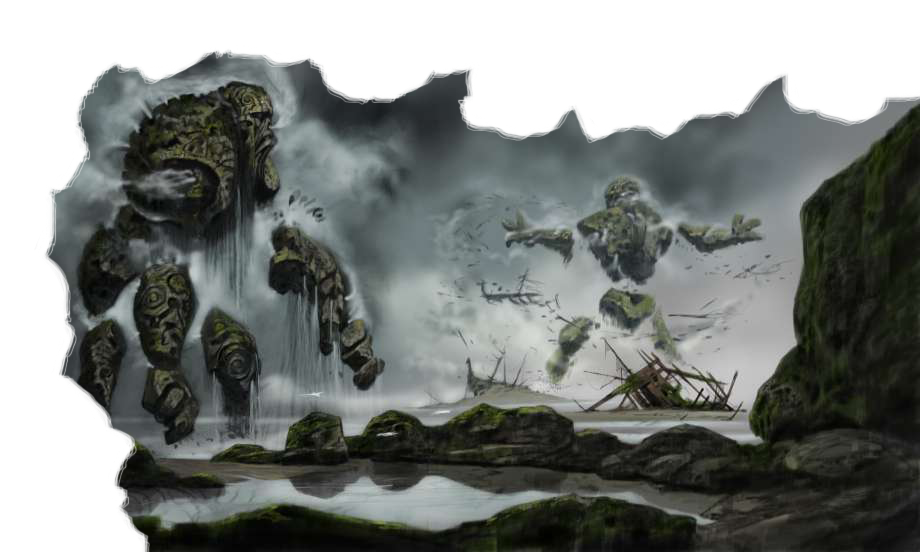
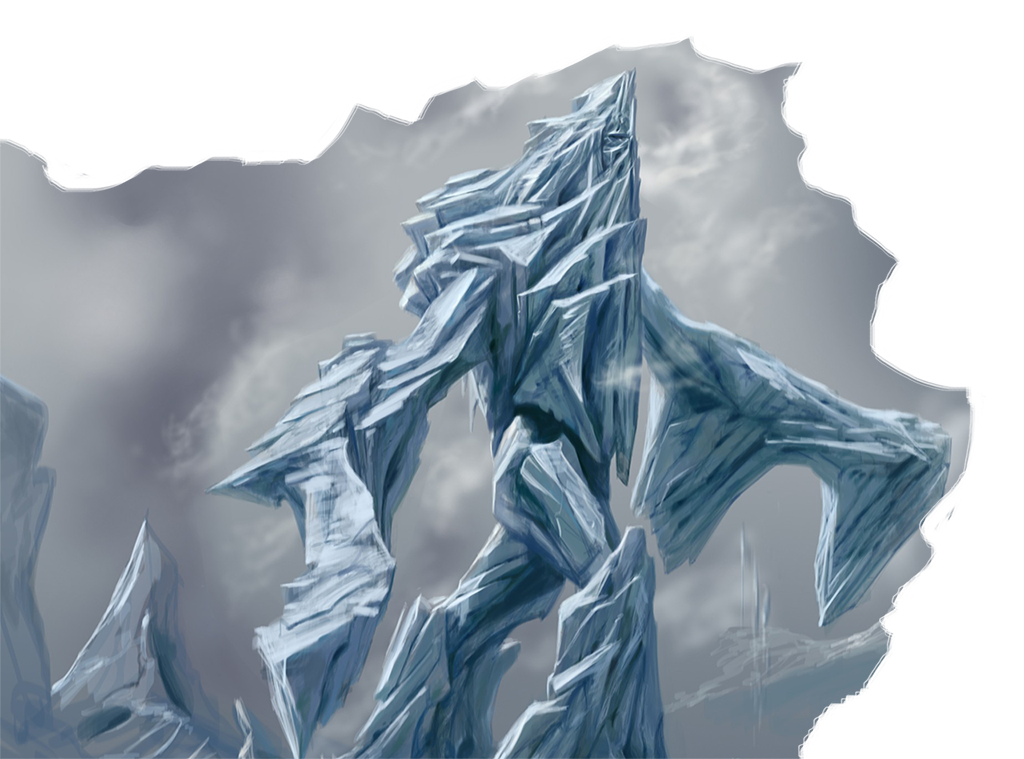
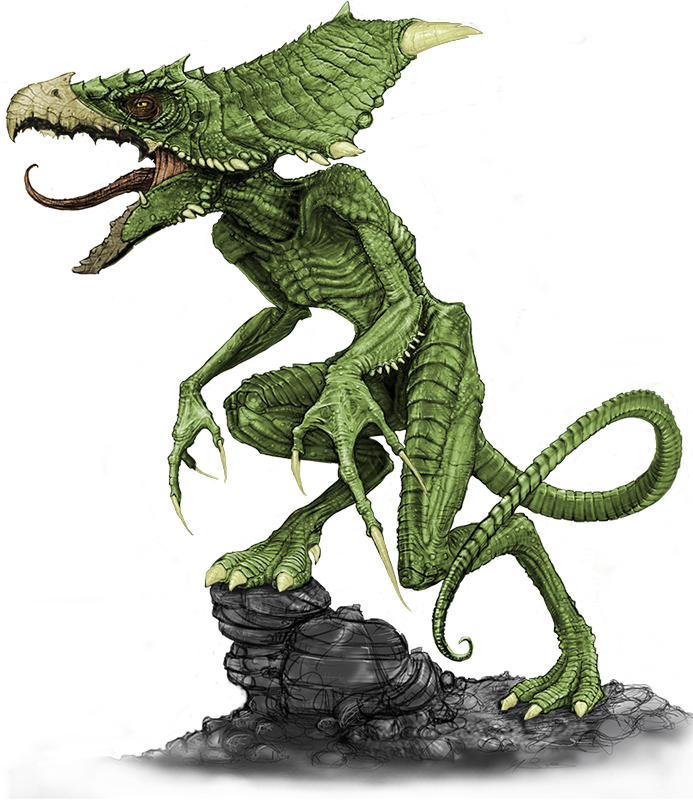
Clannfear
Medium Lesser Daedra, unaligned
- Armor Class 14 (natural armor)
- Hit Points 45 (7d8 + 14)
- Speed 40 ft.
STR DEX CON INT WIS CHA 16 (+3) 14 (+2) 12 (+1) 7 (-2) 12 (+1) 7 (-2)
- Skills Stealth +4, Perception +3
- Damage Vulnerabilities Electric
- Damage Resistances Fire
- Senses darkvision 60 ft., Passive Perception 12
- Languages Daedric
- Challenge 2 (450 XP)
Pack Tactics. The Clannfear has advantage on an attack roll against a creature if at least one of the clannfear's allies is within 5 feet of the creature and the ally isn't incapacitated.
Actions
Multiattack. The Clannfear makes two attacks: one with its bite and one with its claws.
Bite. Melee Weapon Attack: +5 to hit, reach 5ft., one target.
Hit: 7 (1d8 + 3) piercing damageClaw. Melee Weapon Attack: +5 to hit, reach 5ft., one target.
Hit: 6 (1d6 + 3) slashing damage
Clannfear
Clannfear are vicious, beaked, reptillian Daedra. They don't hold a particular allegiance with any of the Daedric Princes, as they are known to follow several. Their sharp talons and pointed beaks make them dangerous enemies. They are though to be of animal intelligence, though some believe they may be smart enough to communicate.
Pack Creatures. Clannfear are rarely encountered alone. Whether it's a group of them, or a single Clannfear and other Daedric handlers such as Dremora, they work at their best with support.
Under the Matriarch. A larger variation of the Clannfear, a Clannfear Matriarch, is known to exist. Clannfear will do their best to protect and support a matriarch, and it issues orders to its lessers through a bird-like screeching.
Clannfear Matriarch
Large Lesser Daedra, unaligned
- Armor Class 18 (natural armor)
- Hit Points 87 (10d10 + 32)
- Speed 60 ft.
STR DEX CON INT WIS CHA 20 (+5) 16 (+3) 20 (+5) 10 (+0) 14 (+2) 9 (-1)
- Skills Stealth +7, Perception +6
- Damage Immunities Fire
- Damage Vulnerabilities Electric
- Senses darkvision 60 ft., Passive Perception 15
- Languages Daedric
- Challenge 10 (5,900 XP)
Pack Tactics. The Clannfear has advantage on an attack roll against a creature if at least one of the clannfear's allies is within 5 feet of the creature and the ally isn't incapacitated.
Matriarch's Aura. All Clannfear within 30 feet are immune to being Frightened. Any summoned Clannfear immediately defect, and join the Clannfear Matriarch.
Actions
Multiattack. The Clannfear Matriarch makes three attacks: one with its bite and two with its claws.
Bite. Melee Weapon Attack: +8 to hit, reach 5ft., one target.
Hit: 14 (3d8 + 3) piercing damageClaw. Melee Weapon Attack: +8 to hit, reach 10ft., one target.
Hit: 11 (3d6 + 3) slashing damageMother's Scream. The Matriarch screams at a creature within 20 feet of it. All creatures within 20 feet of the Matriarch must succeed a DC12 Dexterity saving throw, taking 13 (3d8) thunder damage on a failed save, or half as much damage on a successful one.
Daedroth
Daedroth are large bipedal, crocodile-headed Daedra. Like Clannfear, they take a reptilian appearance, and rely on their claws and teeth in combat. Their size renders them slower than other Daedra, but they make up for it in their raw strength. Associated with Molag Bal and Mehrunes Dagon, they are no strangers to combat. Daedroth are very intelligent and adaptable.
Intelligent Fiends. Though they may appear to be nothing more than brawny, slower cousins to Clannfear, the Daedroth are actually highly intelligent. Some accomplished conjurers have been able to teach Common to bound Daedroth familiars. A select few have even managed to teach the arts of Magic. For this very reason, scholars and mages often make it a point to acquaint themselves with any Daedroths bound to the Mortal plane, in an attempt to improve their own knowledge of the Daedric realms as well as to have an interesting conversation partner.
Clannfear are capable of learning Destruction magic, as well as most non-extinct languages, if they see it in their interests.
Subtle Familiars. Daedroth have a strong sense of self worth, and to be conjured by a human or used by a Daedric Prince for a cause they don't care about is seen as an insult. Daedroth always honor their pacts, but they will actively seek out loopholes to get out of one if it suits them.
Draconic Visage. Daedroth are visually similar to the Dragons of old, with their scaly skin and their ability to breath fire. They are wholly unrelated, though a craft few have been able to convince Dragon Cultists into following the Daedroth's orders.
Alchemist's Favored. As powerful as Daedroth are, they are often considered one of the easier ways to obtain Daedra Hearts firsthand. A rare ingredient, Daedra Hearts are useful in the creation of certain potions and poisons, such as Restore Health potions, or Damage Magicka and Fear poisons.
Daedroth
Large Lesser Daedra, unaligned
- Armor Class 16 (natural armor)
- Hit Points 68 (12d8 + 14)
- Speed 20 ft.
STR DEX CON INT WIS CHA 18 (+4) 8 (-1) 16 (+3) 12 (+1) 14 (+2) 7 (-2)
- Skills Intimidation +4, Perception +2
- Damage Vulnerabilities Electric
- Damage Resistances Fire
- Senses darkvision 60 ft., Passive Perception 12
- Languages Daedric
- Challenge 2 (450 XP)
Aggressive. As a bonus action, the Daedroth can move up to its speed toward a hostile creature it can see.
Actions
Multiattack. The Daedroth makes two attacks: one with its bite and one with its claws.
Bite. Melee Weapon Attack: +5 to hit, reach 5ft., one target.
Hit: 12 (2d8 + 4) piercing damage and 2 (1d4) fire damage.Claw. Melee Weapon Attack: +5 to hit, reach 5ft., one target.
Hit: 6 (1d6 + 4) slashing damageFire Breath (Recharges after a Short or Long Rest). The Daedroth spits fire at a creature within 10 feet of it. The creature must make a DC11 Dexterity saving throw, taking 9 (2d8) fire damage on a failed save, or half as much damage on a successful one.
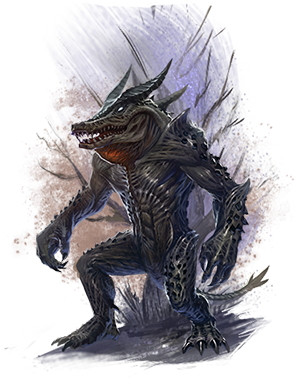
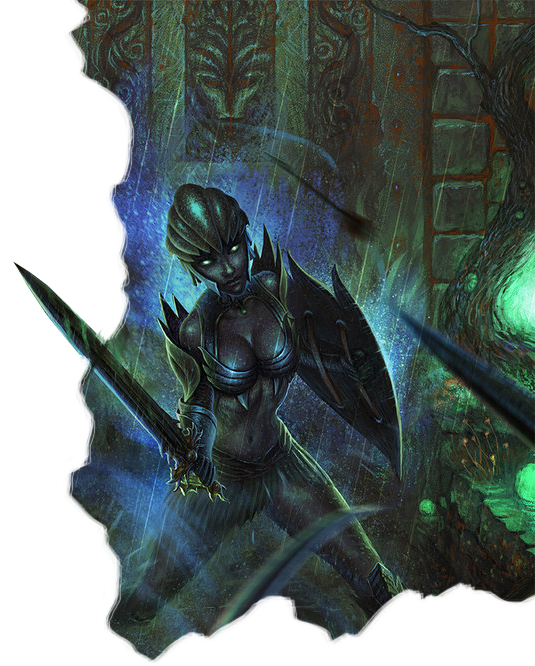
Dark Seducer
Medium Lesser Daedra, Chaotic neutral
- Armor Class 18 (chain shirt, shield)
- Hit Points 75 (10d10 + 20)
- Speed 30 ft., Flying 30 ft.
STR DEX CON INT WIS CHA 10 (+0) 16 (+3) 12 (+1) 14 (+2) 16 (+3) 16 (+3)
- Saving Throws Cha +5
- Skills Persuasion +4, Perception +2
- Damage Vulnerabilities Frost
- Senses darkvision 60 ft., Passive Perception 15
- Languages Daedric, Common
- Challenge 4 (1,100 XP)
Magic Resistance. The Dark Seducer has advantage on saving throws against spells and other magical effects.
Innate Spellcasting. The Dark Seducer's innate spellcasting ability is Charisma(spell save DC 13). The Dark Seducer can innately cast the following spells, requiring no material components:
At Will: Voices, Glamor
Spellcasting. The Dark Seducer is a 3rd-level spellcaster. It regains its expended spell slots when it finishes a short or long rest. It knows the following spells:
1st-3rd-level(2 2nd-level spell slots): Hearth Heal 3rd-level(2 3rd-level spell slot): Burden, Flame Cloak
Actions
Multiattack. The Dark Seducer makes two attacks with its mace.
Mace. Melee Weapon Attack: +2 to hit, reach 5ft., one target.
Hit: 9 (1d6 + 8) bludgeoning damageLongbow. Ranged Weapon Attack: +5 to hit, range 150/600ft., one target. Hit: 15 (1d8 + 10) piercing damage.
Dark Seducer
The Dark Seducers, also known as Mazken, are blueish-purple skinned humanoid Daedra, and their primary home is in Sheogorath's Shivering Isles. Most belong to treacherous clans, and will lie and cheat as suits them. Few hold allegiance to any particular prince, generally focusing only on what power they feel they deserve. Mazken are highly intelligent, and are as competent in spellcasting as they are at combat. They have hidden, bat-like wings, which allow them to fly as fast as they can walk.
Silver Tongued. Dark Seducers are quick-witted, and capable of speaking both Daedric and Common. In Mundus, they are shrewd hagglers and charismatic negotiators.
Sibling Rivalry. Cousins to the Golden Saints, the Dark Seducers have been in a long feud over the course of their entire existence. Both embody different principles: Layalty versus Cunning, Honor versus Trickery. Mazken, while holding a deep distaste for mortals, treat them politely and kindly, while their cousins are impatient and harsh.
Mazken Society. Dark seducers are a matriarchal society. Male Mazken are viewed as inferior, and are typically physically much weaker than female Mazken. Mazken Society is made up of several ranks. In order, Kiskengo; Kiskella; Kiskedrig; Grakendo; Grakella; Grakedrig; Autkendo.
Mazken Names. Mazken are often referred to by name: (First) Wonshala, Adeo, Jansa, Ulfri, Venissa, Viki; (Last) Keriayn, Dylora, Nelrene, Shayaifa, Trilvath
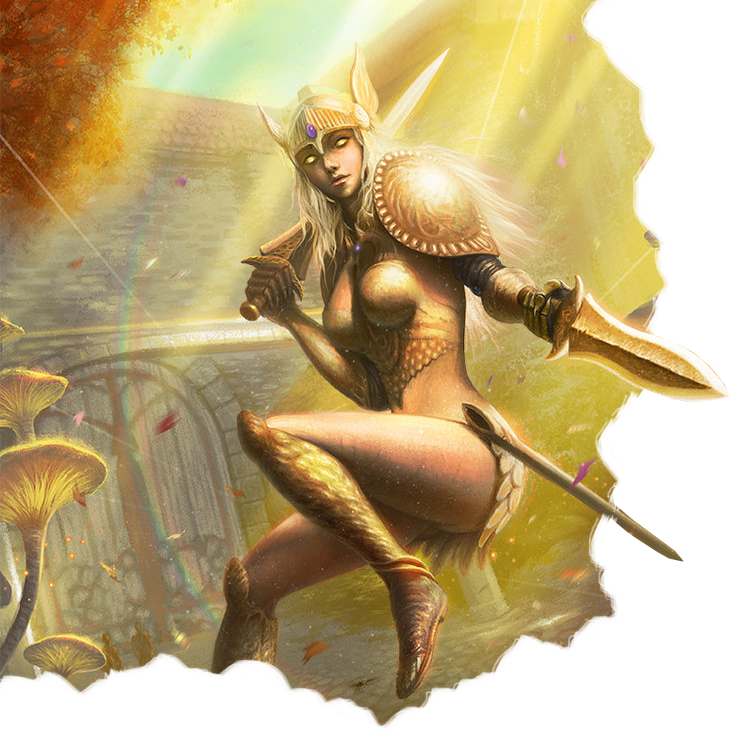
Golden Saint
Golden Saints, also referred to as Aureals, are the Golden-skinned humanoid cousins of the Dark Seducers. Also primarily servants of Sheogorath, they are loyal to him, and will rarely be found working for other Daedric Princes. Aureals are arrogant, prone to anger, and cruel when it comes to punishment. They focus on non-magical combat, though they are also highly intelligent, and competent spellcasters.
Frontline Defenders. Golden Saints prefer the battlefield over times of peace. As in some Mortal societies, they relish the opportunity to prove their skill in honorable combat, and are some of the Aurbis' best warriors. Clad in Golden armor, and wielding weapons made of a Daedric gold-like material, they are dangerous foes, and excellent allies.
Golden Saint
Medium Lesser Daedra, lawful neutral
- Armor Class 16 (chain shirt, shield)
- Hit Points 95 (10d10 + 40)
- Speed 30 ft.
STR DEX CON INT WIS CHA 16 (+3) 12 (+1) 18 (+4) 14 (+2) 16 (+3) 8 (-1)
- Saving Throws Str +5
- Skills Athletics +5, Perception +4
- Damage Vulnerabilities Poison, Acid
- Senses darkvision 60 ft., Passive Perception 15
- Languages Daedric, Common
- Challenge 4 (1,100 XP)
Magic Resistance. The Golden Saint has advantage on saving throws against spells and other magical effects.
Spellcasting. The Golden Saint is a 3rd-level spellcaster. It regains its expended spell slots when it finishes a short or long rest. It knows the following spells:
1st-3rd-level(2 2nd-level spell slots): Guiding Bolt, Hush, Rilm's Cure
Actions
Multiattack. The Golden Saint makes two attacks with its longsword.
Longsword. Melee Weapon Attack: +2 to hit, reach 5ft., one target.
Hit: 11 (1d8 + 6) bludgeoning damage
Sibling Rivalry. Cousins to the Dark Seducers, the Golden Saints have been in a long feud over the course of their entire existence. Both embody different principles: Loyalty versus Cunning, Honor versus Trickery. Aureals hold a deep distaste for mortals, and will only respect them if they prove their worth, while their cousins are dishonest, if kind, and feign patience with them.
Aureal Society. Golden Saints are a matriarchal society. Male Aureals are viewed as inferior, and are typically physically much weaker than female Aureals. Aureal Society is made up of several ranks. In order, Auren, Auredel, Aurmok, Aurmokel, Aurig, Malaurig, Pelaurig and Aurmazl.
Aureal Names. Aureals are often referred to by name: (First) Staada, Desha, Mireh, Issmi, Chunah, Mirel.
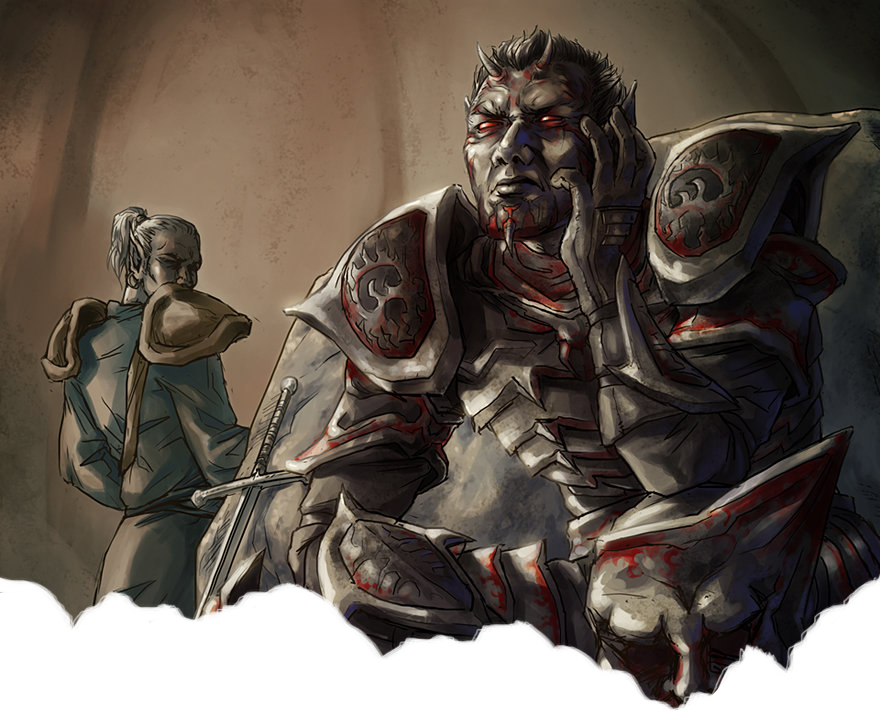
Dremora
Medium Lesser Daedra, Chaotic Neutral
- Armor Class 20 (plate, shield)
- Hit Points 118 (13d8 + 60)
- Speed 30 ft.
STR DEX CON INT WIS CHA 20 (+5) 16 (+3) 14 (+2) 16 (+3) 14 (+2) 12 (+1)
- Saving Throws Con +4
- Skills Survival +4, Perception +4
- Damage Vulnerabilities Frost
- Damage Immunities fire
- Senses darkvision 60 ft., Passive Perception 15
- Languages Daedric, Common
- Challenge 6 (2,300 XP)
Magic Resistance. The Dremora has advantage on saving throws against spells and other magical effects.
Spellcasting. The Dremora is a 5th-level spellcaster. It regains its expended spell slots when it finishes a short or long rest. It knows the following spells:
1st-3rd-level(3 3rd-level spell slots): Hex 4th-5th-level(2 5th-level spell slots): Corrode, Levitate
Actions
Multiattack. The Dremora makes two attacks with its longsword.
Longsword. Melee Weapon Attack: +7 to hit, reach 5ft., one target.
Hit: 13 (1d8 + 9) slashing damage, or 14 (1d10 + 9) slashing damage if used with two hands.Dreadful Aspect. The Dremora exudes magical menace. Each enemy within 30 feet of the dremora must succeed on a DC 13 Wisdom saving throw or be frightened for 1 minute. If a frightened target ends its turn more than 30 feet away from the dremora, the target can repeat the saving throw, ending the effect on itself on a success.
Dremora
Dremora are among the most common of the intelligent Lesser Daedra. Often found in the service of Mehrunes Dagon and Molag Bal, the various dremora clans are scattered among the service of other Daedric Princes as well, often taking on traits relating to their lord. Peryite's Dremora, for instance, strike with acid-tipped weapons, and have an aura of poison surrounding them, while Azura's Dremora would make heavier use of Illusion magic instead of Destruction.
Like the Aureals and Mazken, they appear mostly humanoid, with skin that looks perpetually tattooed, with a base of black, and additional colors based on their clan and the Daedric Prince they serve. Dremora also have horns, adding to their demonic appearance.
A Collective. Like with most Daedra, independence is a learned concept. Often Dremora will make decisions as a clan, rather than on the individual level. They often refer to themselves as The Kyn, and consider themselves above all other Daedra, with the exception of the Daedric Princes, who they venerate as gods.
Structured Society. Dremora follow a rigid hierarchal system, with two distinct castes: Warrior and Politician. The ranks are as follows: Churl, Caitiff, Kynval, Kynreeve, Kynmarcher, Markynaz, and Valkynaz. Churls, Caitliffs, and Kynvals are typically warriors, while Kynreeve, Kynmarcher, Markynaz, and Valkynaz correspond to higher political callings: clann officers, grand dukes, lords, and lesser princes.
Hunger
Medium Lesser Daedra, Chaotic Neutral
- Armor Class 14 (natural armor)
- Hit Points 110 (13d10 + 39)
- Speed 40 ft.
STR DEX CON INT WIS CHA 20 (+5) 18 (+4) 16 (+3) 4 (-3) 16 (+3) 7 (-2)
- Saving Throws Str + 7, Con + 5, Dex + 6
- Skills Stealth +6, Perception +5,
- Damage Vulnerabilities Radiant
- Damage Immunities Fire, Cold, Electric, Poison
- Senses blindsight 60 ft., Passive Perception 15
- Challenge 8 (3,900 XP)
Rampage. When it reduces a creature to 0 hit points with a melee attack on its turn, the Hunger can take a bonus action to move up to half its speed and make a bite attack.
Poisontongue. Any creatures struck by the Hunger's tongue must succeed a Constitution saving throw, or become poisoned.
Sunlight Hypersensitivity. The Hunger takes 5 radiant damage when it starts its turn in sunlight. While in sunlight, it has disadvantage on all attack rolls and ability checks.
Light Sensitivity. While in bright light, the Hunger has disadvantage on attack rolls.
Keen Smell. The Hunger has advantage on Wisdom (Perception) checks that rely on smell.
Innate Spellcasting. The Hunger's innate spellcasting ability is Dexterity (spell save DC 14). The Hunger can innately cast the following spells, requiring no material components:
At Will: Corrode, Demoralize
Actions
Multiattack. The Hunger makes three attacks, one with its tongue and two with its claws
Tongue. Melee Weapon Attack: +5 to hit, reach 5ft., one target.
Hit: 14 (2d8 + 5) piercing damageClaw. Melee Weapon Attack: +5 to hit, reach 5ft., one target.
Hit: 15 (3d6 + 5) slashing damage
Hunger
Vicious, terrifying Daedra, the Hunger can be found in several realms of Oblivion. They are only intelligent enough to hunt, but they are powerful and fast creatures. Some believe they harken from Quagmire, as they look like beasts taken from the collective nightmares of man and mer, however Boethiah claims them as her creations.
Hard to Kill. They are known for their resilient hides, unworkable for use in armor, though that doesn't stop ambitious craftsmen from trying. Fire, frost, electricity, and poison bounces off of their skin like water.
Worthy Prey. Alchemists prize the Hunger's tongue, an incredibly hard to harvest ingredient, as it is a main ingredient in the more effective cure disease and cure poison potions, and have a slight magicka increasing effect.
Silent Hunters. Hungers are typically only active at night, which combined with their speed and silence turns them into some of the most dangerous beings to exist on the Mundus and Oblivion. Their tongues are poisonous, barbed spears, and they can smell out creatures from miles away, adding to their danger.
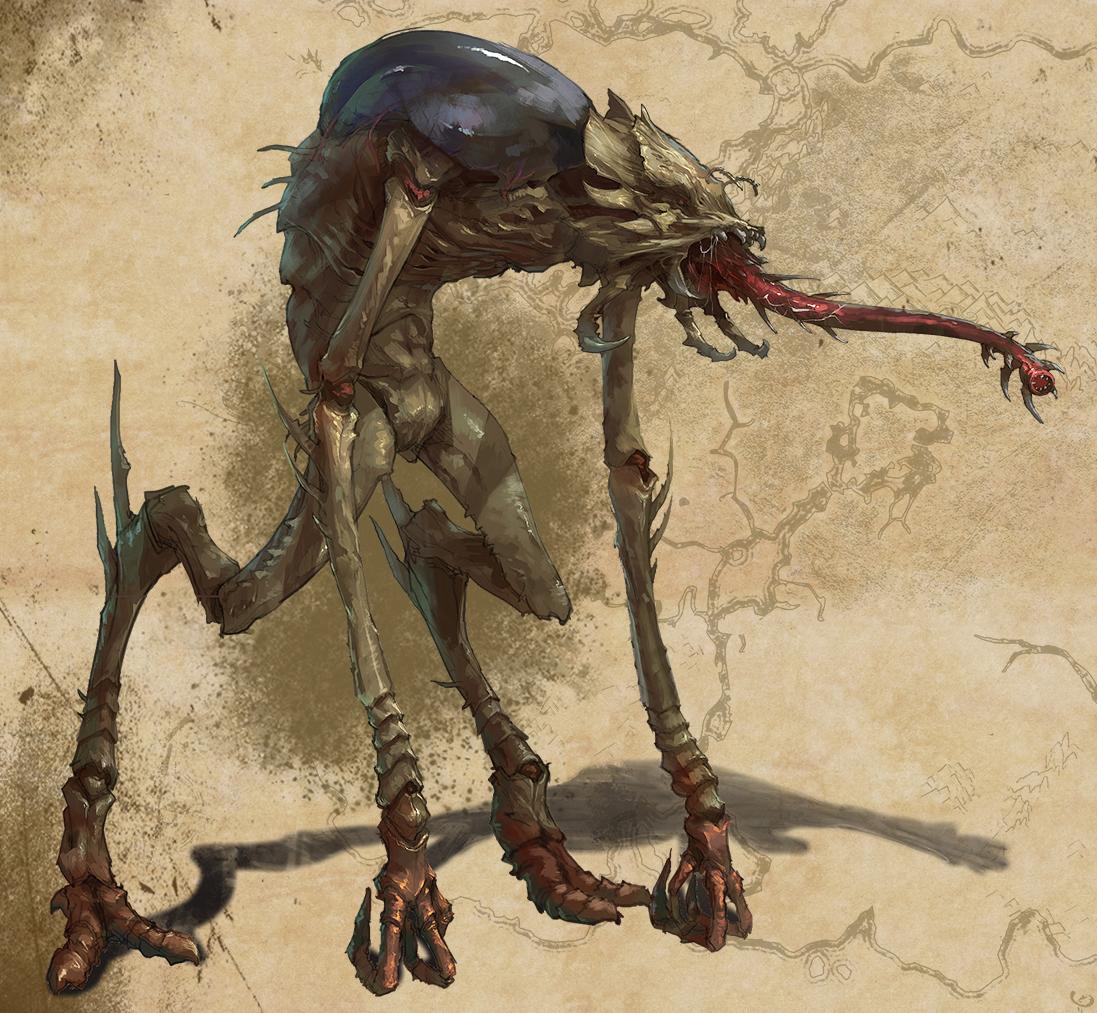







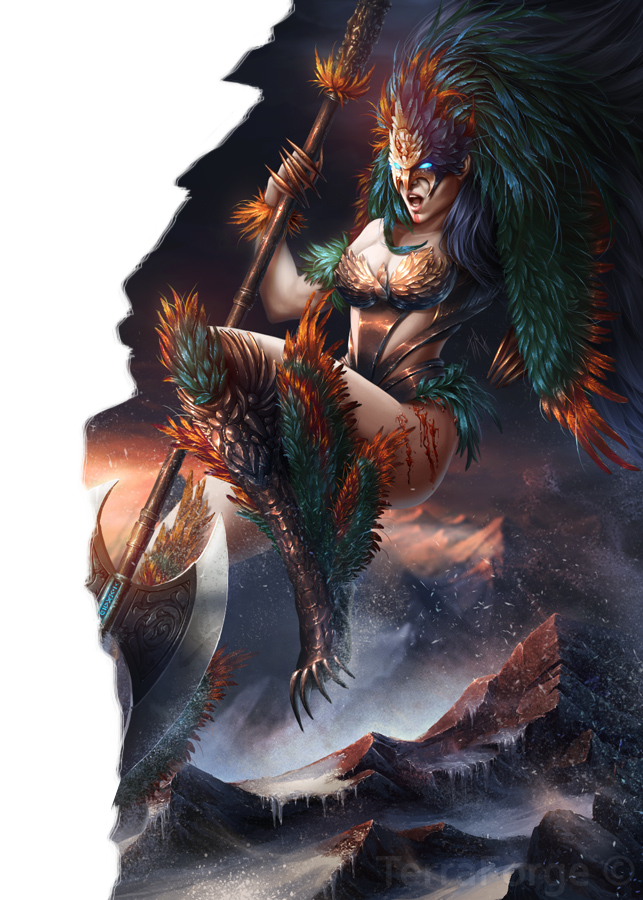
Huntsmen
Huntsmen are servants of Hircine. Specializing in polearms and archery, the Huntsman are dangerous foes. They appear as humanoids wearing what appears to be an owl mask, and armor made from feathers, scales, and hide, though the mask and armor is actually part of their flesh. They often hunt in groups of three, tracking large and dangerous game. Their skin is resistant to most conventional attacks, but in the name of fairness, Hircine made them vulnerable to the piercing damage of their spears and arrows.
Huntsman
Medium Lesser Daedra, Chaotic Neutral
- Armor Class 16 (natural armor)
- Hit Points 118 (13d8 + 60)
- Speed 30 ft.
STR DEX CON INT WIS CHA 14 (+2) 20 (+5) 14 (+2) 16 (+3) 16 (+3) 12 (+1)
- Saving Throws Con +4
- Skills Stealth +7, Nature +5, Perception +5
- Damage Vulnerabilities piercing
- Damage Resistances slashing, bludgeoning
- Senses darkvision 60 ft., Passive Perception 15
- Languages Daedric, Common
- Challenge 6 (2,300 XP)
Magic Resistance. The Huntsman has advantage on saving throws against spells and other magical effects.
Spellcasting. The Huntsman is a 5th-level spellcaster. It regains its expended spell slots when it finishes a short or long rest. It knows the following spells:
1st-3rd-level(3 3rd-level spell slots): See Invisibility 4th-5th-level(2 5th-level spell slots): Sanctuary, Mislead
Actions
Multiattack. The Huntman makes three attacks with its spear.
Spear. Melee Weapon Attack: +5 to hit/Thrown: +7 to hit, reach 5ft./range 20/60 , one target.
Hit: 13 (1d8 + 9) piercing damage, or 14 (1d10 + 9) slashing damage if used with two hands.Longbow. Ranged Weapon Attack: +5 to hit, range 150/600ft., one target. Hit: 15 (1d8 + 10) piercing damage.
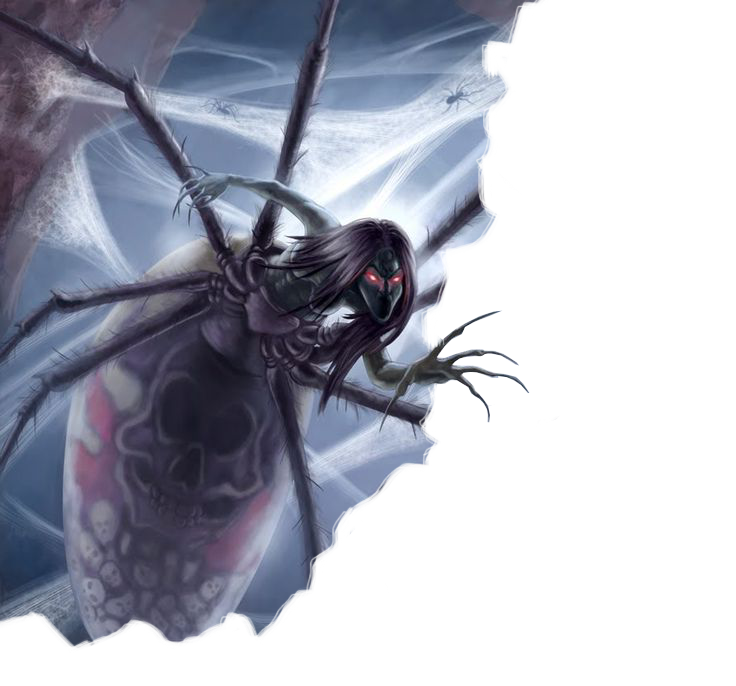
Mephaloids
Mephaloids, named for Mephala, their creator, are also called Spider Daedra. They are visually large half-humanoid, half spider fiends. They are capable of secreting strong webs, which some armorsmiths prize when creating light armor. They are quick, and like spiders, capable of climbing wherever they wish.
Mephaloids are often solitary, preferring to prey on weaker Daedra. It is not uncommon when travelling through the Spiral Skein, to see a Spider Daedra's web with the dried husks of Scamps or Banekin.
Some humans in Tamriel have claimed that Mephaloids are capable of shapeshifting into a human form, though these have not been corroborated, and are usually written off as an attempt to deflect unfaithfulness.
Mephaloid
lage lesser daedra, neutral evil
- Armor Class 16 (natural armor)
- Hit Points 59 (7d10 + 21)
- Speed 30ft., climb 30ft.
STR DEX CON INT WIS CHA 14 (+2) 18 (+4) 14 (+2) 12 (+1) 14 (+2) 10 (+0)
- Skills Stealth +8
- Senses blindsight 10ft., darkvision 60ft., passive Perception 10
- Languages Tamriellic, Daedric
- Challenge 2 (450 XP)
Spider Climb. The Spider Daedra can climb difficult surfaces, including upside down on ceilings, without needing to make an ability check.
Web Sense. While in contact with a web, the Spider Daedra knows the exact location of any other creature in contact with the same web.
Web Walker. The Spider Daedra ignores movement restrictions caused by webbing of any sort.
Innate Spellcasting. The Spider Daedra can innately cast the following spells, requiring no material components:
- At Will: Darkness, Torpor
- 1/day each: Exhaust Magicka
Actions
Multiattack. The Spide Daedra makes two attacks with its front legs.
Legs. Melee Weapon Attack: +5 to hit, reach 5ft., one target. Hit: 7 (1d8 + 3) piercing damage.
Spit. Ranged Weapon Attack: +5 to hit, range 30ft./60 ft., one creature. Hit: 5 (1d4 + 2) acid damage, and the target must succeed a Constitution saving throw or become poisoned for 1 minute, taking 1d4 poison damage at the start of its turns. The target can repeat the saving throw at the end of each of its turns, ending the effect early on a success.
Spit Webbing (Recharge 5-6). Ranged Weapon Attack: +5 to hit, range 30 ft./60 ft., one creature. Hit: The target is restrained by webbing. As an action, the target can make a DC 12 Strength check, bursting the webbing on a success. The webbing can also be attacked and destroyed (AC 10; hp 5; vulnerable to fire damage; immune to bludgeoning, poison, and psychic damage).
Scampkin
Scampkin are prolific among the lesser Daedra. Scamps are what most are familiar with, though this term covers Scamps, Hernes, and Morphoid Daedra. Typically mischevious, they are a cowardly species of Daedra as a whole. They are most commonly associated with Mehrunes Dagon, Sanguine, and Hircine.
Scamps. Not incredibly smart or strong, Scamps are somewhat competent spellcasters, and excel in menial tasks, often conjured or tasked by a more important Daedra to as messengers. Scamps look like taller imps, with pointed ears, pale goblin-like faces, fur-covered lower-halves, and three claws in place of feet.
Herne. Herne look much like Scamps, though they have a pointed tail, and deer-like antlers. They have hooves for feet. They don't have the ability to cast spells, but they are decent fighters.
Banekin. Banekin look like smaller, blue-tinged, hairless Herne. They are more magically inclined than scamps, and rely primarily on the school of Illusion..
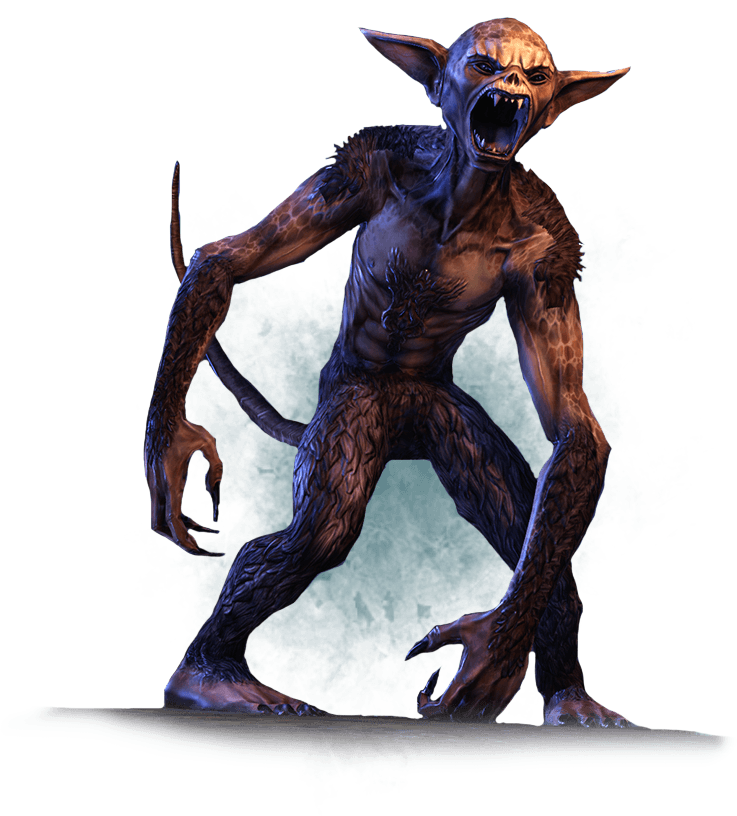
Scamp
Small Lesser Daedra, Chaotic Neutral
- Armor Class 12
- Hit Points 22 (4d8 + 4)
- Speed 20 ft.
STR DEX CON INT WIS CHA 12 (+1) 10 (+0) 10 (+0) 12 (+1) 10 (+0) 7 (-2)
- Skills Perception +2
- Damage Vulnerabilities Electric
- Damage Resistances Fire
- Senses darkvision 60 ft., Passive Perception 12
- Languages Daedric, Common
- Challenge 1/2 (100)
Spellcasting. The Scamp is a 1st-level spellcaster. It regains its expended spell slots when it finishes a short or long rest. It knows the following spells:
Cantrips: Ignite, Grease
1st-level(2 1st-level spell slots): Burning Hands
Magic Resistance. The Scamp has advantage on saving throws against spells and other magical effects.
Keen Smell. The Scamp has advantage on Wisdom (Perception) checks that rely on smell.
Actions
Claw. Melee Weapon Attack: +3 to hit, reach 5ft., one target.
Hit: 6 (1d6 + 4) slashing damage
Scamps
Scamps are the most common of Scampkin, and the most cowardly. They aren't of much use in combat without great numbers, but they should not be underestimated. They are weak spellcasters, and rely primarily on fire-based Destruction magic. Like most Lesser Daedra, they are somewhat resistant to magical effects. Their slaws are dangerous, and though their fangs are sharp, they rarely bite, preferring instead to fight from as far away as possible.
Usually found in the employ of Mehrunes Dagon, Scamps are easily dominated. Conjurers often use them as familiars, as they are reliable when it comes to simple tasks. Scamps resemble furry, pale-skinned Goblinoids.
Hernes
Often seen in the employ of Hircine, Hernes are a much more vicious variation of Scamp. Though still cowardly, Herne are much more willing to fight up close when necessary. With their antlers and hooves at their disposal, it's recommended to stay as far away from an angry Herne as possible. They often work in pairs, and prefer to use unexpected tactics in combat.
Banekin
Banekin are similarly in size to Scamps, and like Hernes, have pointed hooves, antlers, and a tail. They are very willful, and rely on Illusion magic to trick their enemies. They are more often employed by Mehrunes Dagon or Molag Bal, and few conjurers find them worth the risk, as Banekin have a tendency to eat the pages out of a conjurer's spellbook.
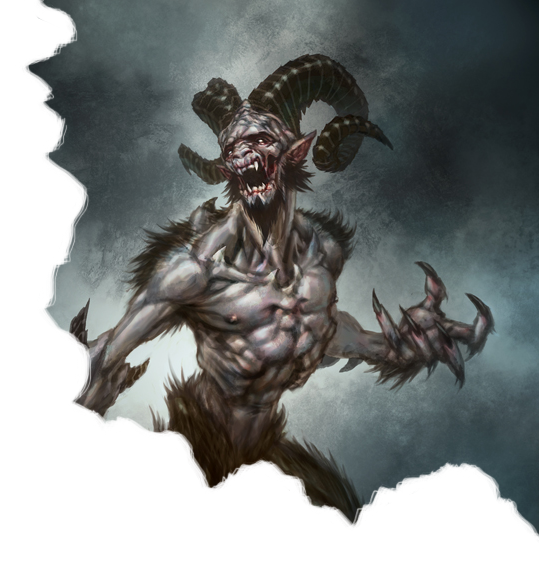
Herne
Medium Lesser Daedra, Chaotic Neutral
- Armor Class 12
- Hit Points 35 (6d8 + 8)
- Speed 30 ft.
STR DEX CON INT WIS CHA 14 (+2) 12 (+1) 12 (+1) 7 (-2) 14 (+2) 7 (-2)
- Skills Perception +3
- Damage Vulnerabilities Electric
- Damage Resistances Fire
- Senses darkvision 60 ft., Passive Perception 14
- Languages Daedric, Common
- Challenge 1 (200)
Magic Resistance. The Herne has advantage on saving throws against spells and other magical effects.
Keen Smell. The Herne has advantage on Wisdom (Perception) checks that rely on smell.
Actions
Multiattack. The Herne makes two attacks, one with its claws, and one with its hooves.
Claw. Melee Weapon Attack: +3 to hit, reach 5ft., one target.
Hit: 14 (3d6 + 6) slashing damageStomp. Melee Weapon Attack: +3 to hit, reach 5ft., one target.
Hit: 13 (3d4 + 6) bludgeoning damageHeadbutt. Melee Weapon Attack: +3 to hit, reach 5ft., one target.
Hit: 13 (2d8 + 6) piercing damage
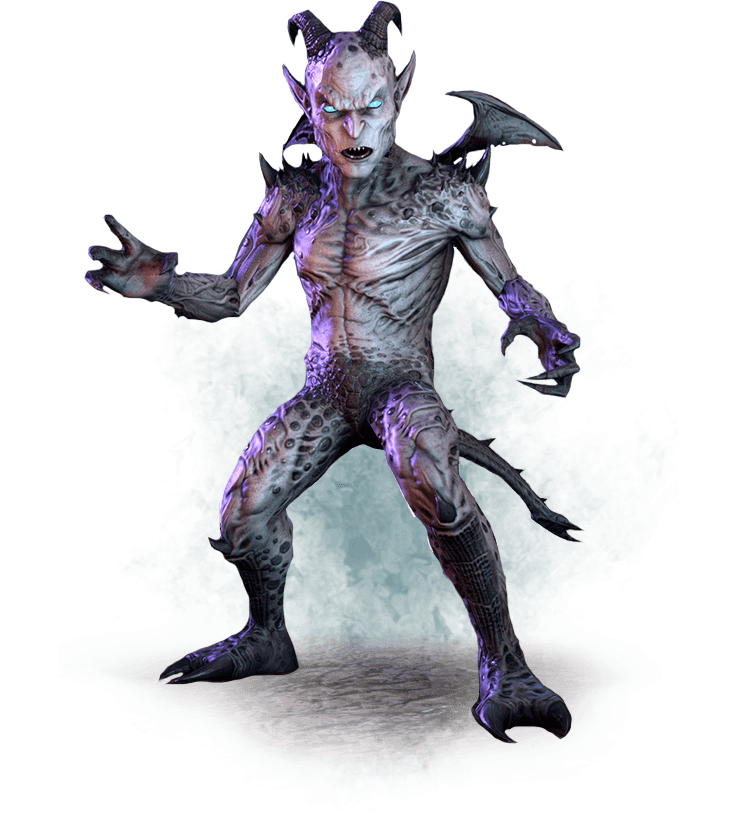
Banekin
Small Lesser Daedra, Chaotic Neutral
- Armor Class 12
- Hit Points 22 (4d8 + 4)
- Speed 20 ft.
STR DEX CON INT WIS CHA 9 (-1) 10 (+0) 12 (+1) 14 (+2) 14 (+2) 7 (-2)
- Skills Perception +2
- Damage Vulnerabilities Electric
- Damage Resistances Fire
- Senses darkvision 60 ft., Passive Perception 12
- Languages Daedric, Common
- Challenge 1 (200)
Magic Resistance. The Banekin has advantage on saving throws against spells and other magical effects.
Keen Smell. The Banekin has advantage on Wisdom (Perception) checks that rely on smell.
Spellcasting. The Banekin is a 1st-level spellcaster. It regains its expended spell slots when it finishes a short or long rest. It knows the following spells:
Cantrips: Psychic Shock, Earwig
2nd-level(4 2nd-level spell slots): Phantasmal Force, Voices, Fake Trap
Actions
Claw. Melee Weapon Attack: +3 to hit, reach 5ft., one target.
Hit: 6 (1d6 + 4) slashing damage
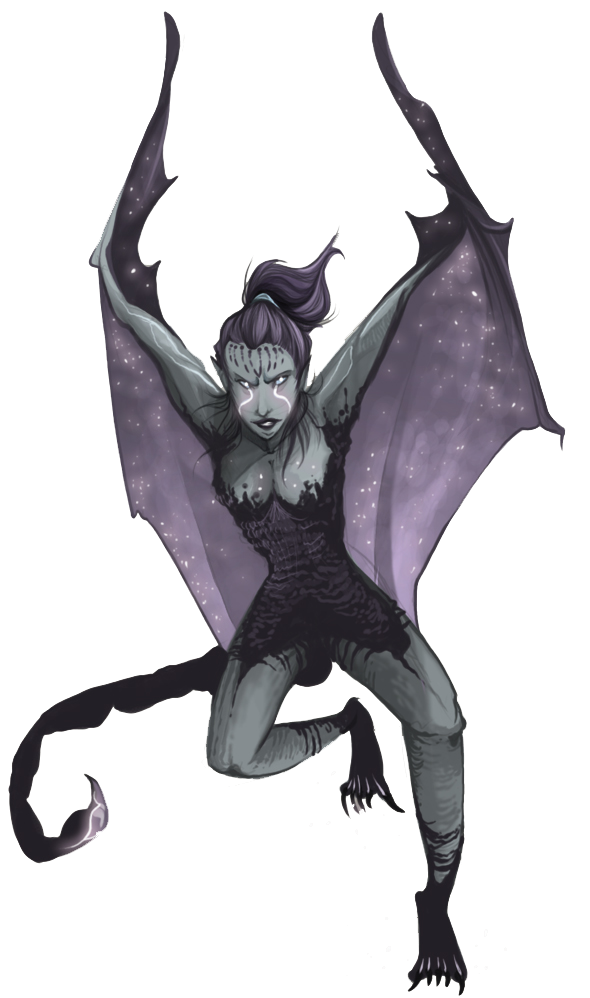
Winged Twilight
Medium Lesser Daedra, Chaotic Neutral
- Armor Class 14 (natural armor)
- Hit Points 82 (11d8 + 33)
- Walking Speed 30 ft.
- Flying Speed 40 ft.
STR DEX CON INT WIS CHA 14 (+2) 18 (+4) 10 (+0) 14 (+2) 14 (+2) 7 (-3)
- Saving Throws Dex +6
- Skills Perception +4
- Damage Resistances Frost, Fire, Electricity
- Senses darkvision 60 ft., Passive Perception 15
- Languages Daedric, Common
- Challenge 4 (1,100 XP)
Magic Resistance. The Winged Twilight has advantage on saving throws against spells and other magical effects.
Innate Spellcasting. The Winged Twilight's innate spellcasting ability is Intelligence (Spell save DC 12). It can innately cast the following spells, requiring no material components:
At Will: Vicious Mockery, Detect Thoughts Once per short or long rest: Fear
Actions
Multiattack. The Dark Seducer makes two attacks, once with its kick and one with its tail.
Kick. Melee Weapon Attack: +6 to hit, reach 5ft., one target.
Hit: 9 (1d6 + 8) slashing damageTail Clip. Melee Weapon Attack:* +6 to hit, reach 10ft., all targets in range.
Hit: 13 (2d8 + 4) bludgeoning damage, and the target must succeed on a DC 14 Constitution saving throw or become stunned.Scream. The target must succeed on a DC 16 Constitution saving throw, or become stunned.
Winged Twilight
Winged Twilights are the servants of Azura, and can
mainly be found in her plane of Moonshadow. They are eager to hoard objects and learn new facts, but are also quick to take offense. It is considered unwise to take even a single item from a Winged Twilight's hoard, as they have long memories and sharp talons that would make even a dragon bleed.
Collecters. Winged Twilights are taken in easily by shiny objects. If it sees something it wants, it will take it and bring it to its lair, creating what it may call a nest, but adventurer's would consider a treasure trove. When confronting them, it is recommended to keep a tight hand on your weapon, in case its metal appeals to a Winged Twilight's sense of beauty.
Alchemic Bounty. Some alchemists seek out Winged Twilight bodies, so that they may harvest Void Salts from them. These salts are made up of a Winged Twilights ground-up scales, and have useful properties when concocting potions of Restore Magicka or Spell Absorbtion.
Winged Twilight Names. Winged Twilights often go by a single name, such as the following: Azara, Drasilla, Irrai, Lluruvii, Murelda, Zix
Wisp
Tiny Lesser Daedra, unaligned
- Armor Class 11
- Hit Points 8 (2d6)
- Flying Speed 30 ft.
STR DEX CON INT WIS CHA 7 (-3) 12 (+1) 10 (+0) 12 (+1) 12 (+1) 7 (-3)
- Senses darkvision 60 ft., Passive Perception 11
- Languages Daedric
- Challenge 1/8 (25 XP)
Innate Spellcasting. The Wisp's innate spellcasting ability is Wisdom (Spell save DC 11). It can innately cast the following spells, requiring no material components:
At Will: Dancing Lights, Minor Illusion, Magelight Once per short or long rest: Color Spray
Actions
Radiant Beam. Ranged Magic Attack: +3 to hit, reach 20ft., one target.
Hit: 2 (1d4) radiant damage
Wisp
Wisps are the creation of Meridia, and can be found all over the Colored Rooms, as well as the swamps of Tamriel. They are unrefined Lesser Daedric spirits, and have no particular strengths or weaknesses. They are fragile, but capable of using condensed magicka manifesting itself as light to defend themselves, provide light, and to trick hostile foes.
Cantrip Summons. Wisps are particularly friendly to Conjurers, and despite their weakness, are a favorite for beginners in the school of Conjuration. Their abilities prove useful on the Mortal plane, providing cover, light, and entertainment.
Minor Spirits. Wisps are known to be Lesser Daedric spirits that haven't taken form yet, but it is theorized in arcane circles that they are more than that, that like Meridia, they are Magne-Ge, returning to the inner Aurbis.
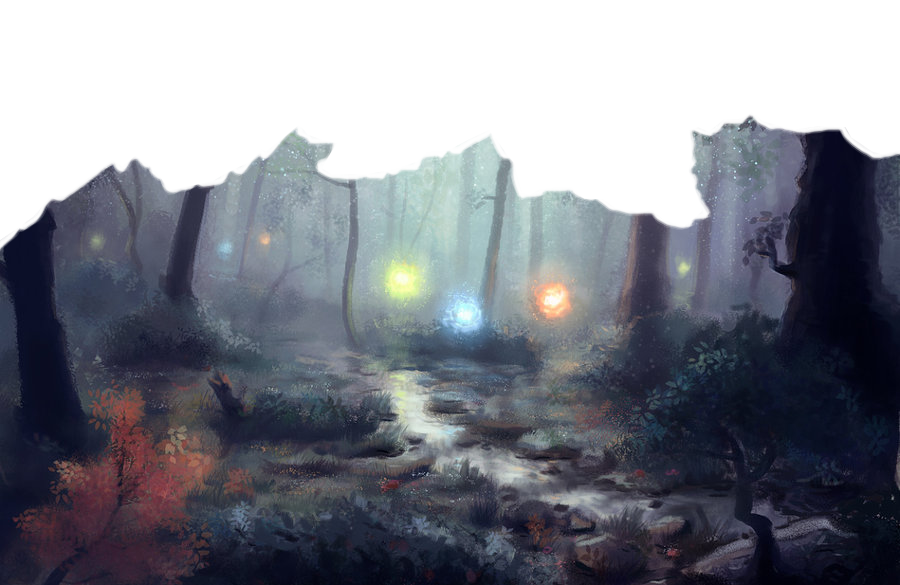
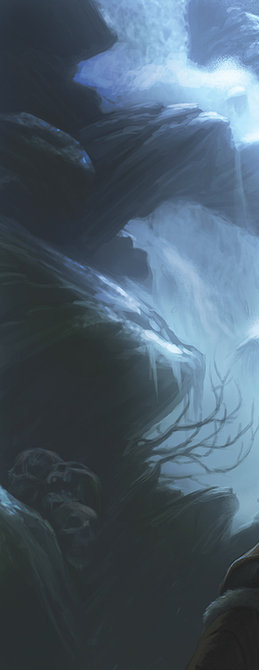
Tamriel on your Table
The Adventurer's Guide to Tamriel is the essential reference for every roleplayer looking to expand their experience to Nirn, the world of The Elder Scrolls. It contains new races, classes, birthsigns, spells, and spellcasting mechanics, and much more.
Use this book to create exciting characters steeped in Tamriellic lore.
Nirn needs heroes. Will you answer the call?
For use with the fifth edition Player's Handbook, Elemental Evil Player's Companion, and Dungeon Master's Guide